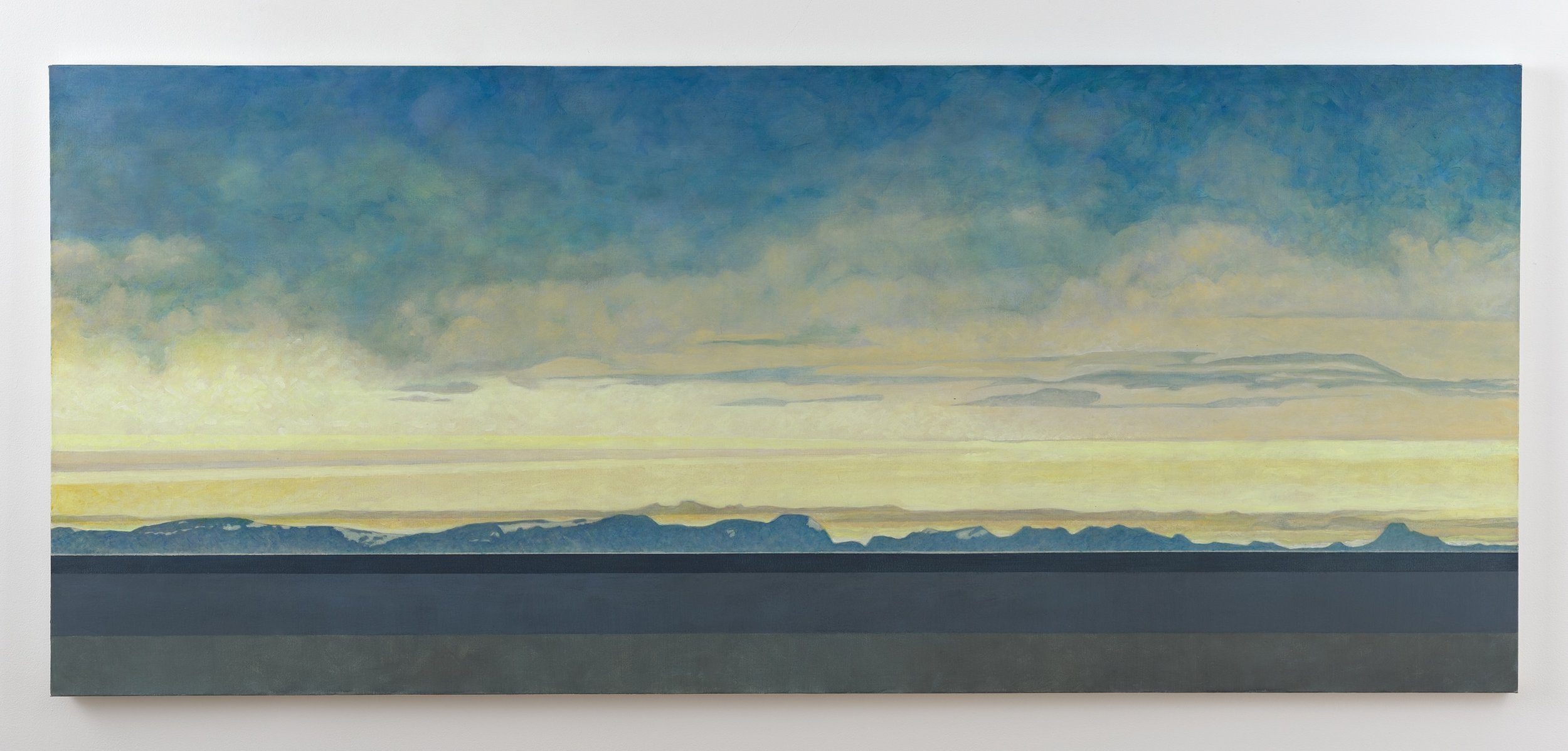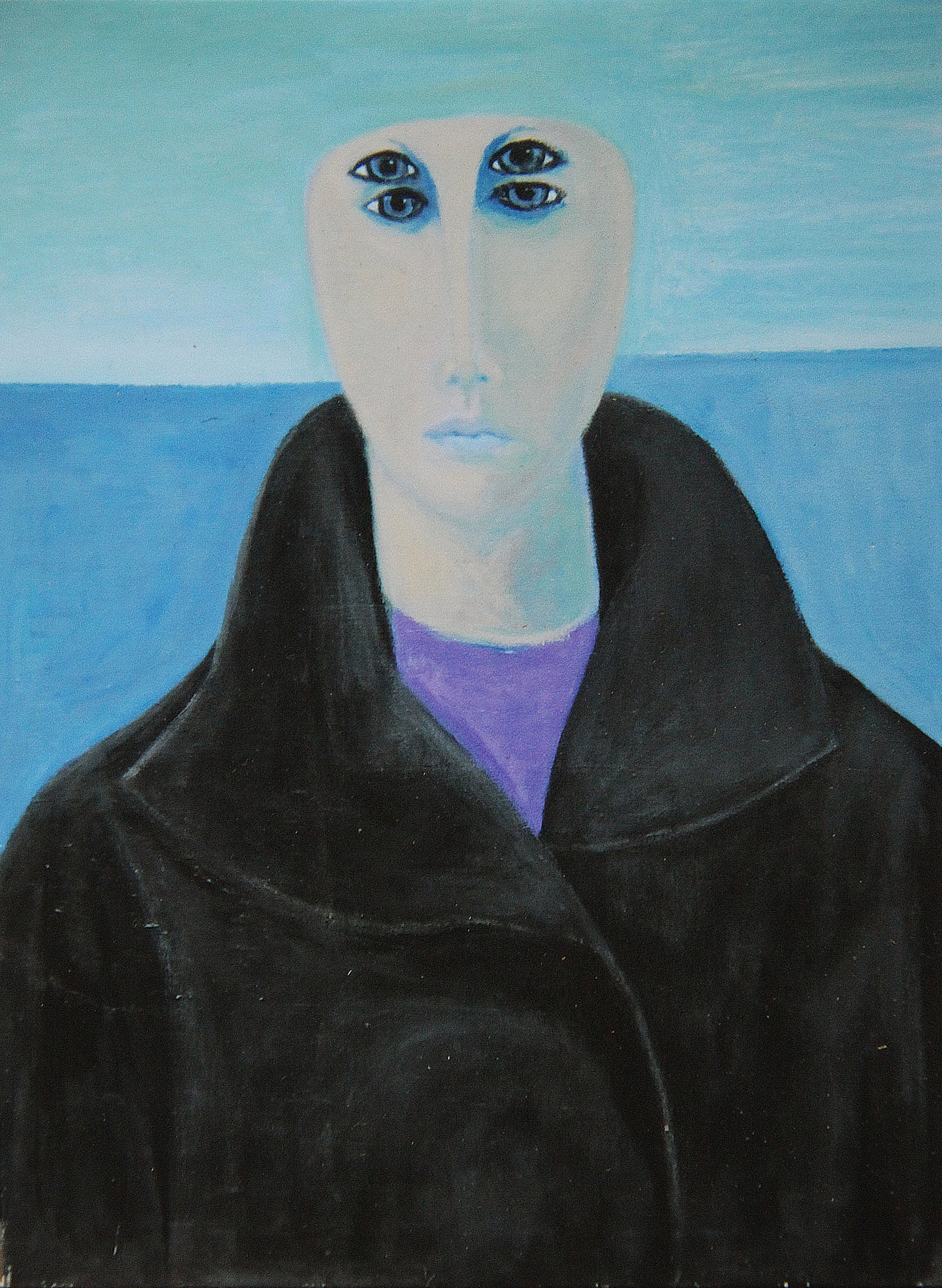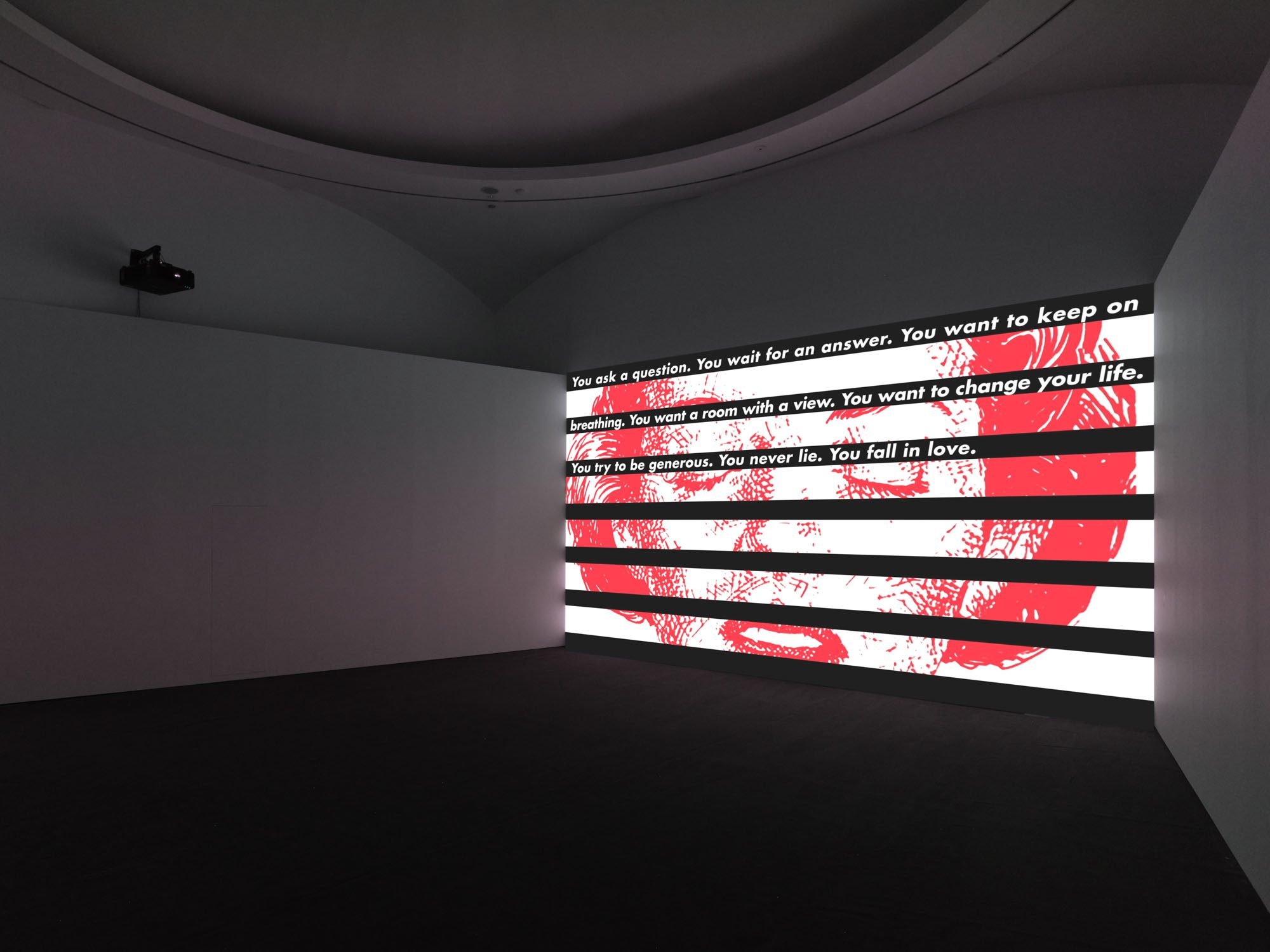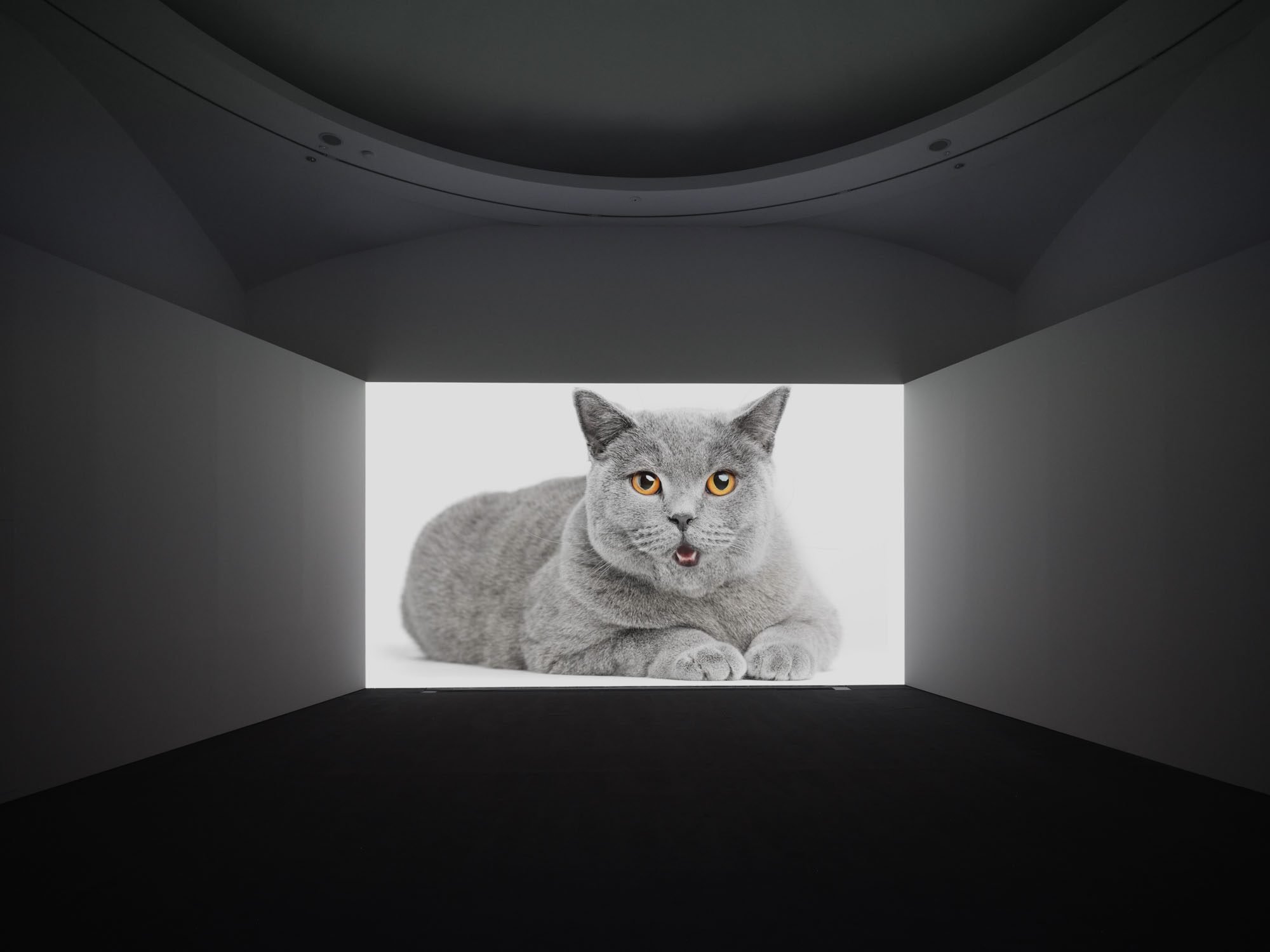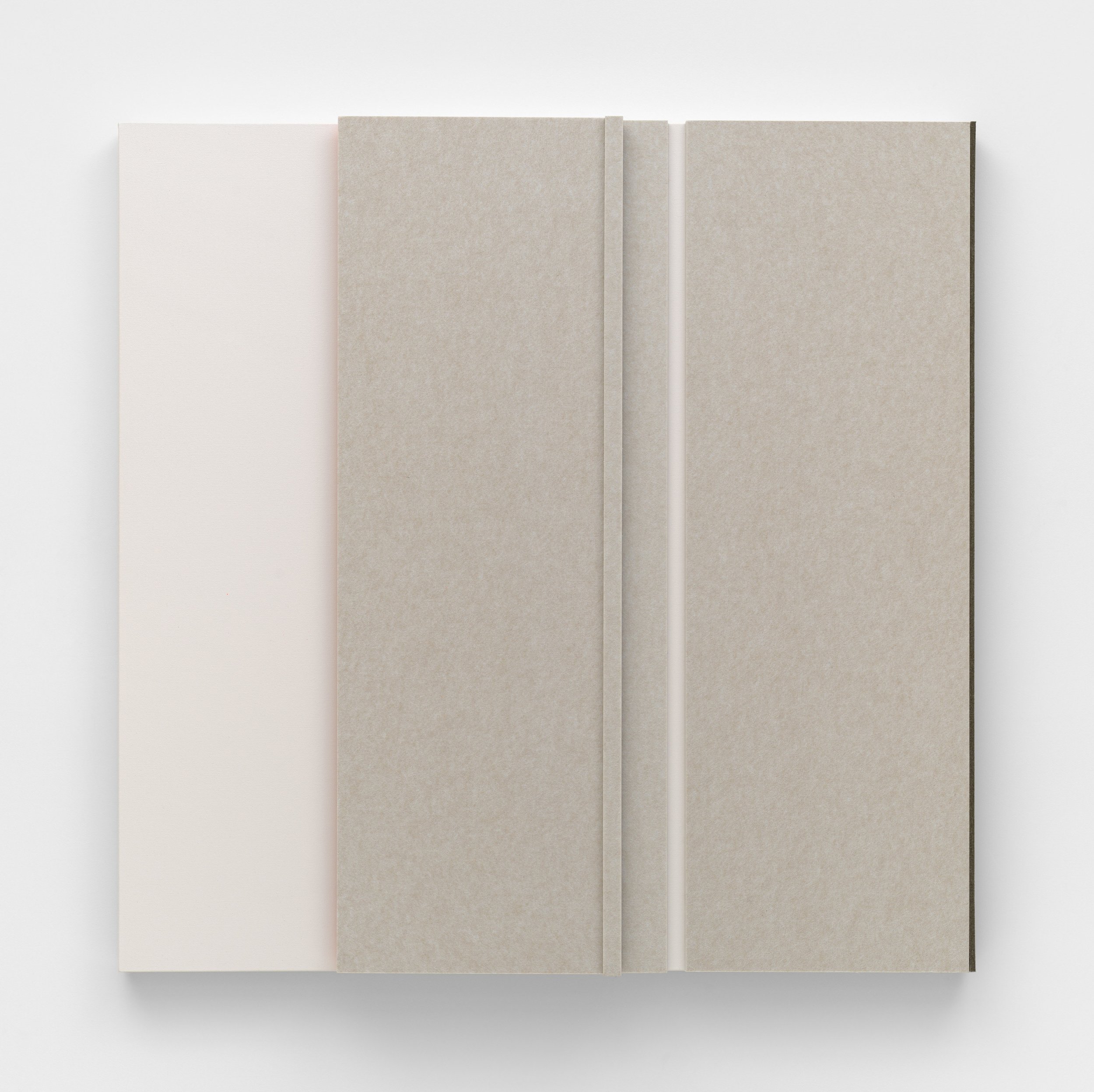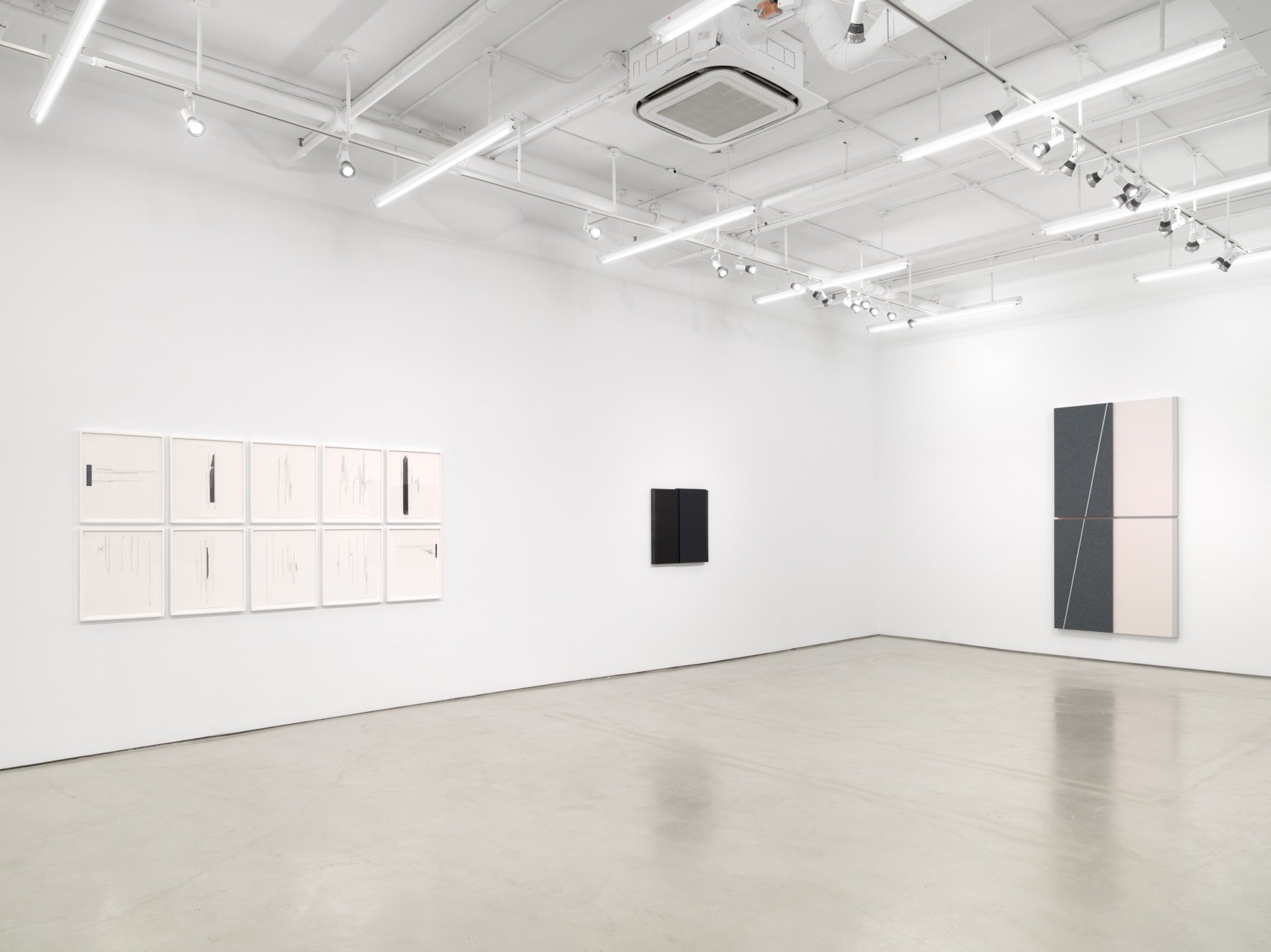Picasso: Drawing from Life
Installation view: Picasso: Drawing from Life, 2024. The Art Institute of Chicago, Chicago. Courtesy of The Art Institute of Chicago.
CHICAGO—The Art Institute of Chicago is pleased to announce Picasso: Drawing from Life, opened on November 11, 2023, and will be on view through April 8, 2024. This year marks 50 years since the death of Spanish artist Pablo Picasso in 1973, and the Art Institute of Chicago is joining hundreds of presentations worldwide in honoring the artist’s legacy.
Installation view: Picasso: Drawing from Life, 2024. The Art Institute of Chicago, Chicago. Courtesy of The Art Institute of Chicago.
Picasso is often presented as a singular artistic genius solely responsible for his creative force, but he would not have achieved his immense success without the many people who supported him. The exhibition will highlight the stories of those who may previously have been lost in the shadow of Picasso—his artistic collaborators, printers, dealers, lovers, and family. Spanning the entirety of his 70-year career, including pieces from 1899 through 1969, this is a celebration of the Art Institute of Chicago’s extensive collection of Picasso’s works on paper and other pivotal works from the prolific artist. It will feature more than 60 objects, including drawings, prints, and illustrated books, along with a handful of paintings, and a sculpture.
Installation view: Picasso: Drawing from Life, 2024. The Art Institute of Chicago, Chicago. Courtesy of The Art Institute of Chicago.
“Picasso did not become the artist we know today on his own,” said Jay A. Clarke, Rothman Family Curator, Prints and Drawings. “Throughout his long career, Picasso collaborated with dealers, printers, and other artists who helped him to achieve fame and challenge him creatively.”
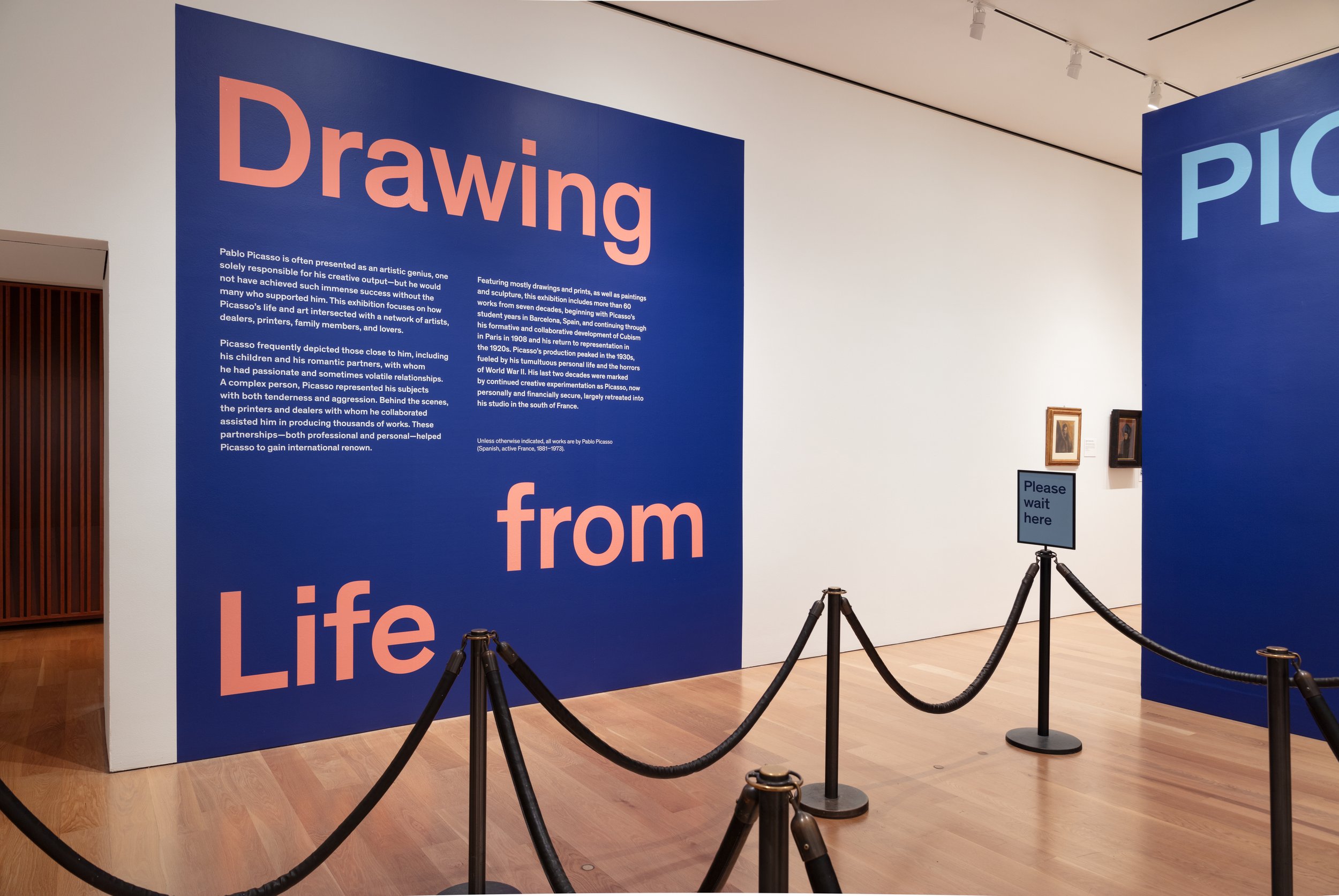
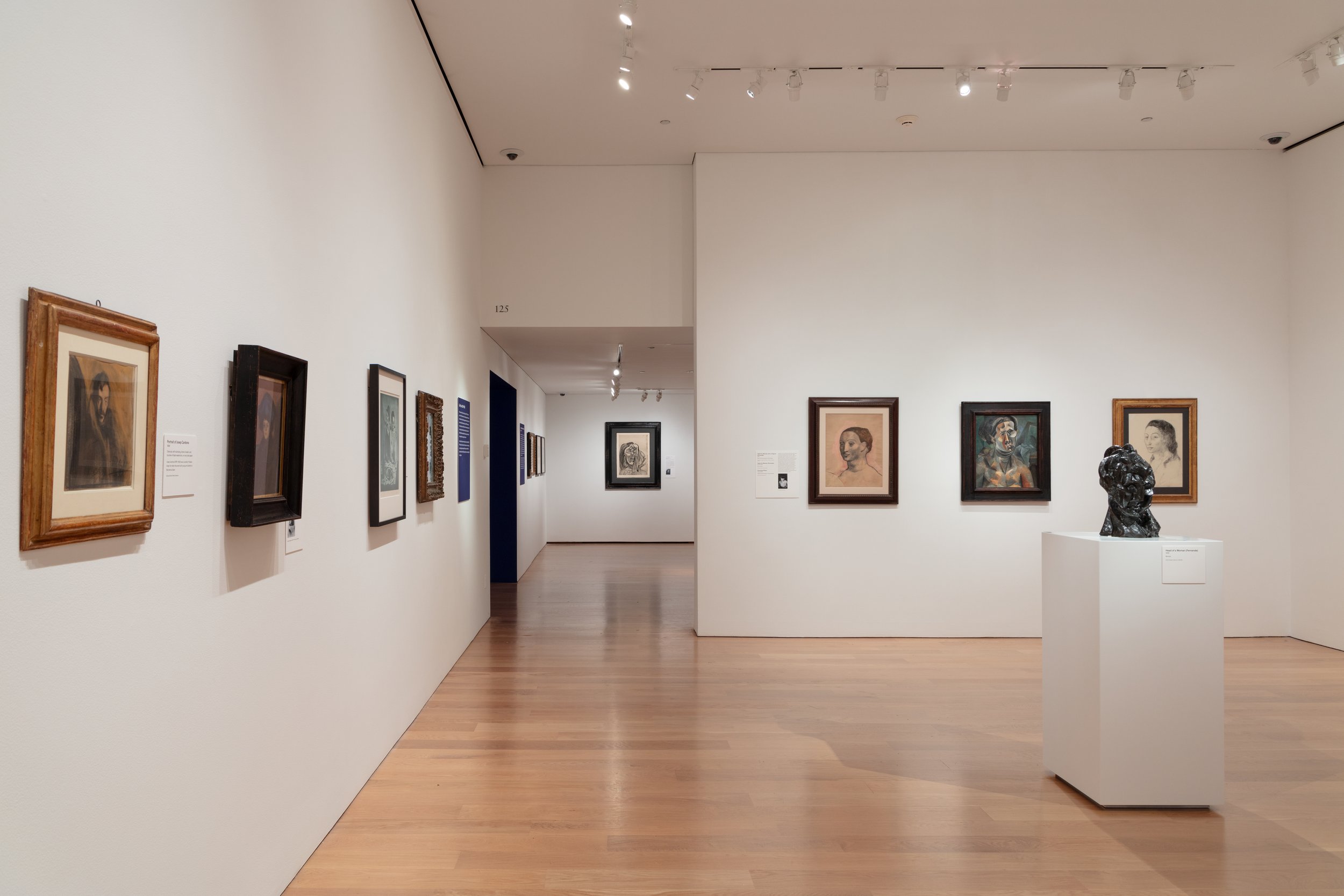
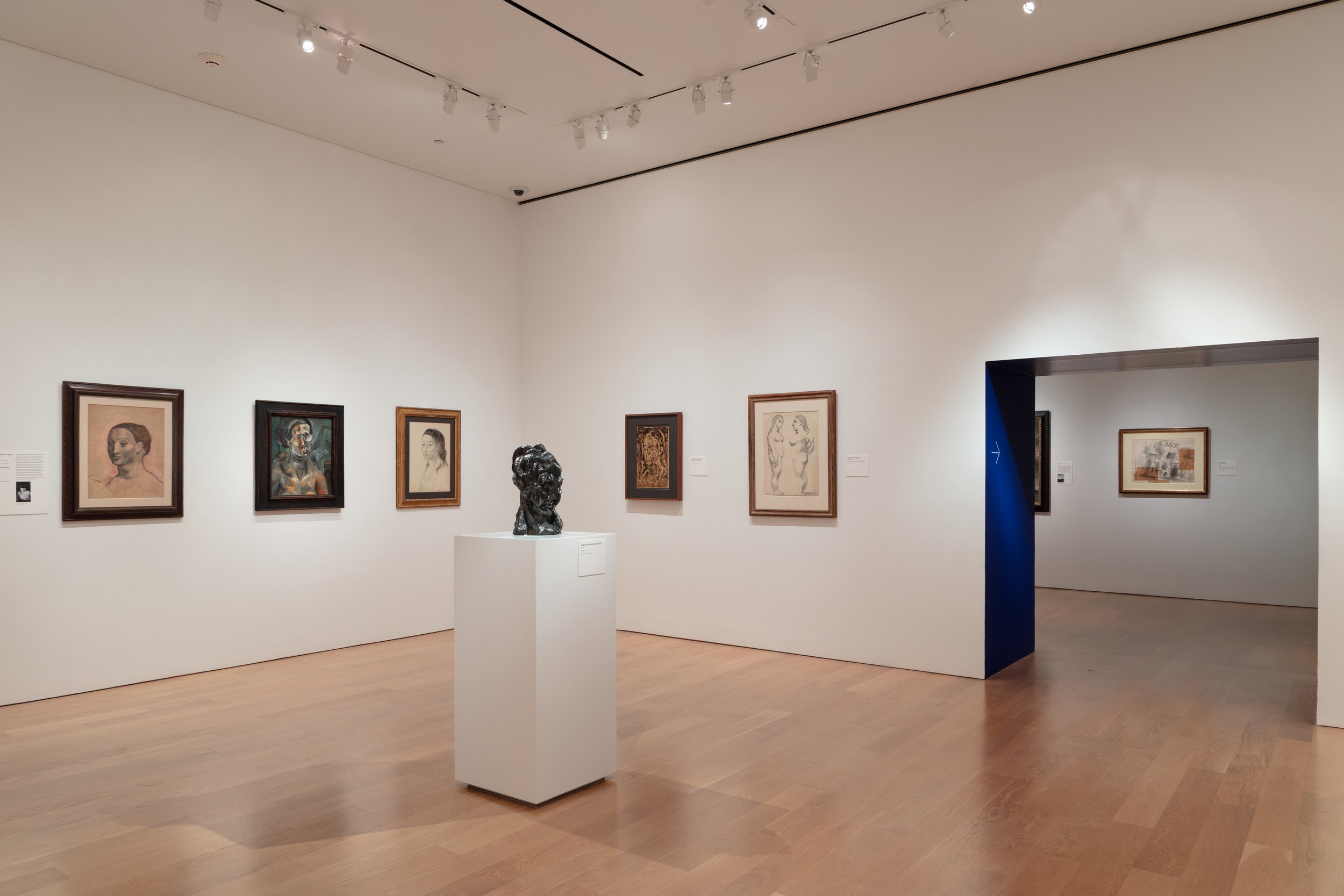
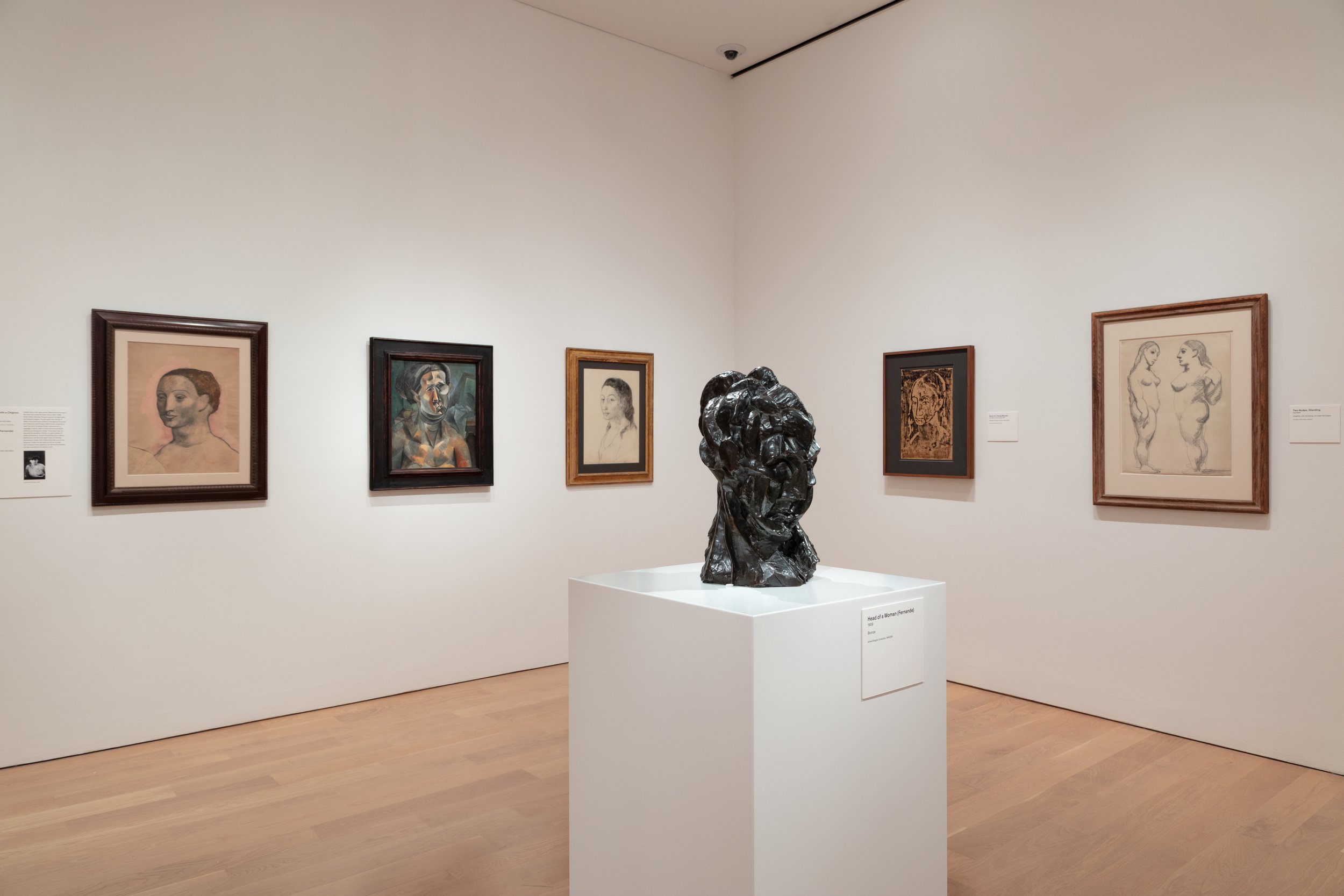
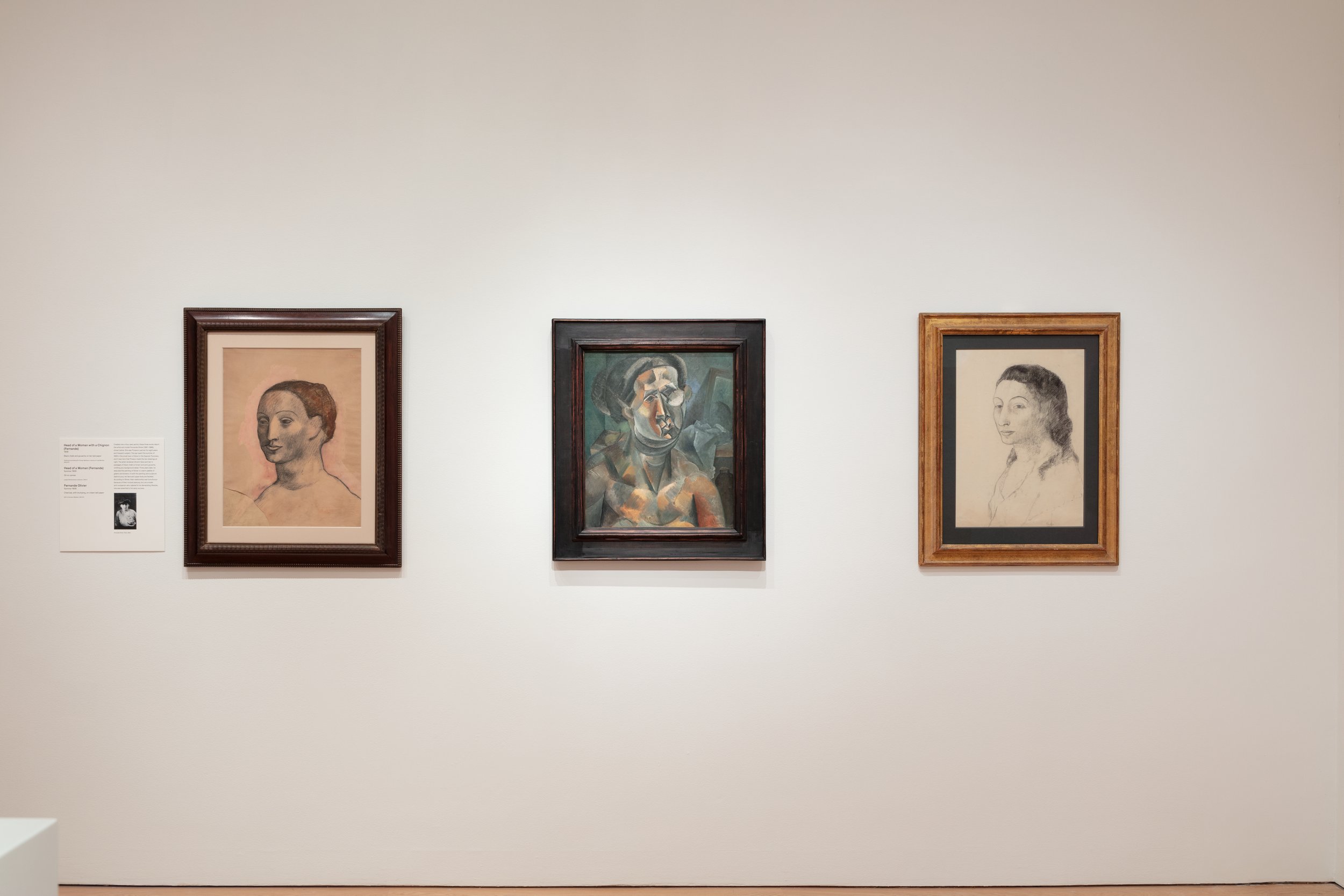
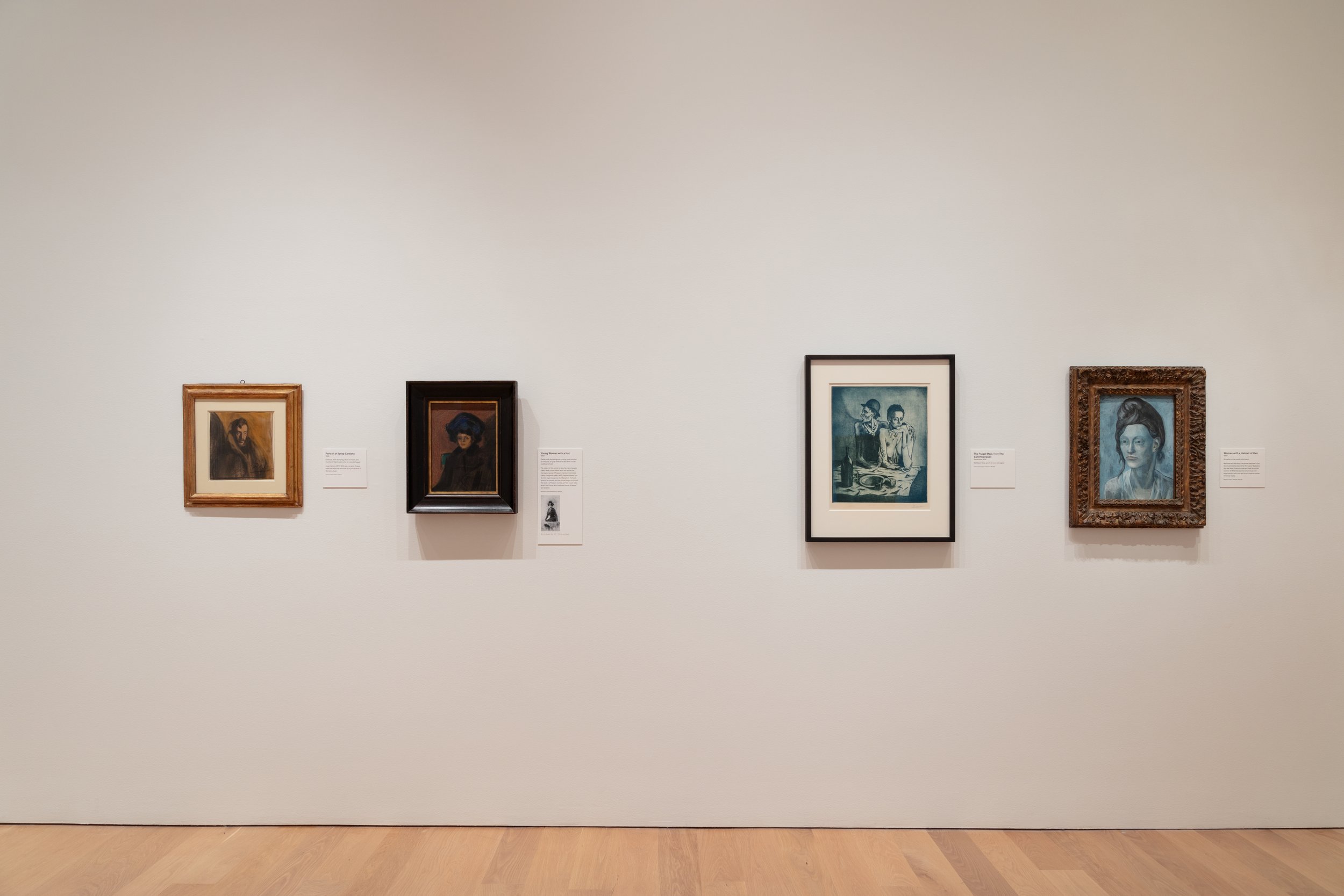

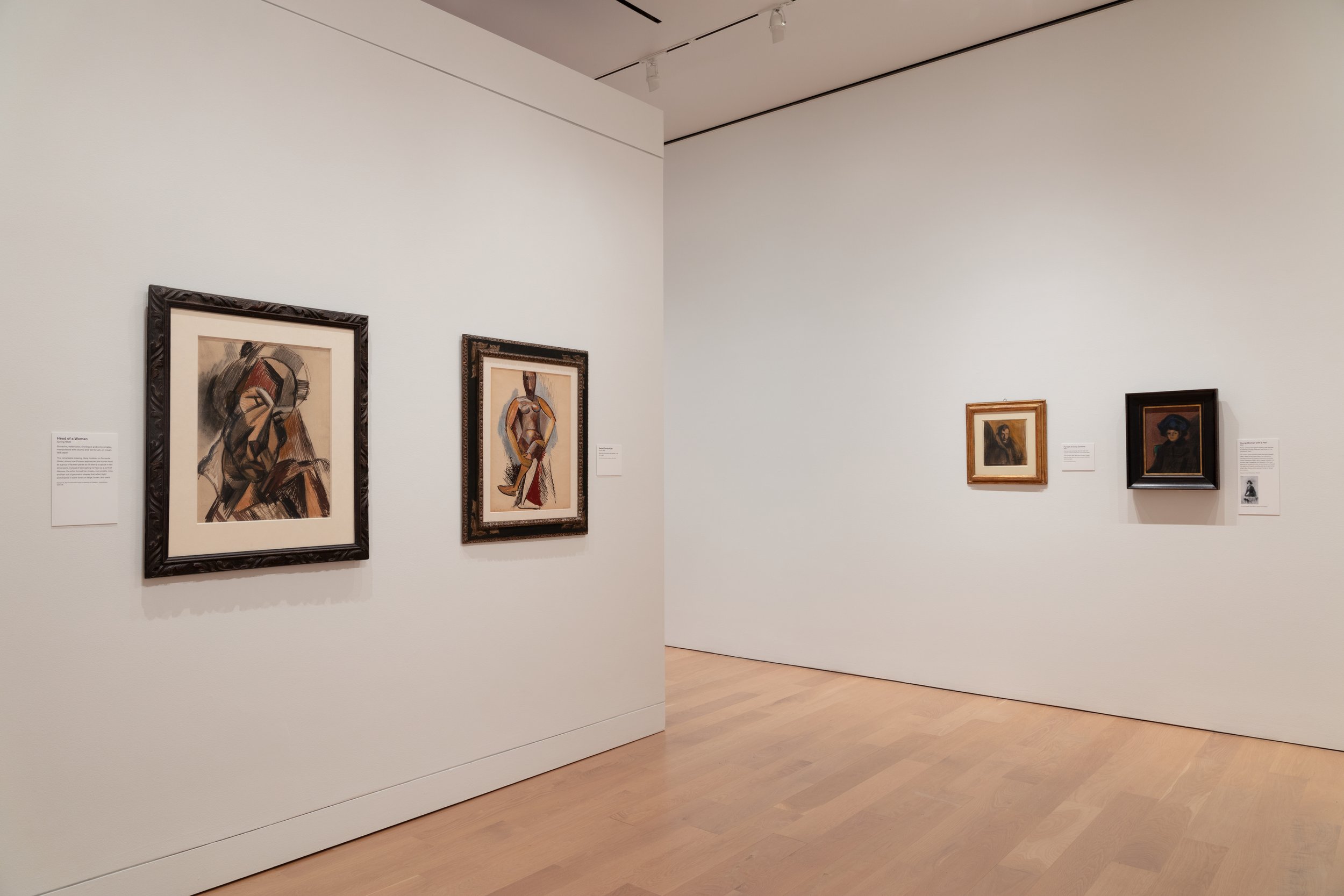
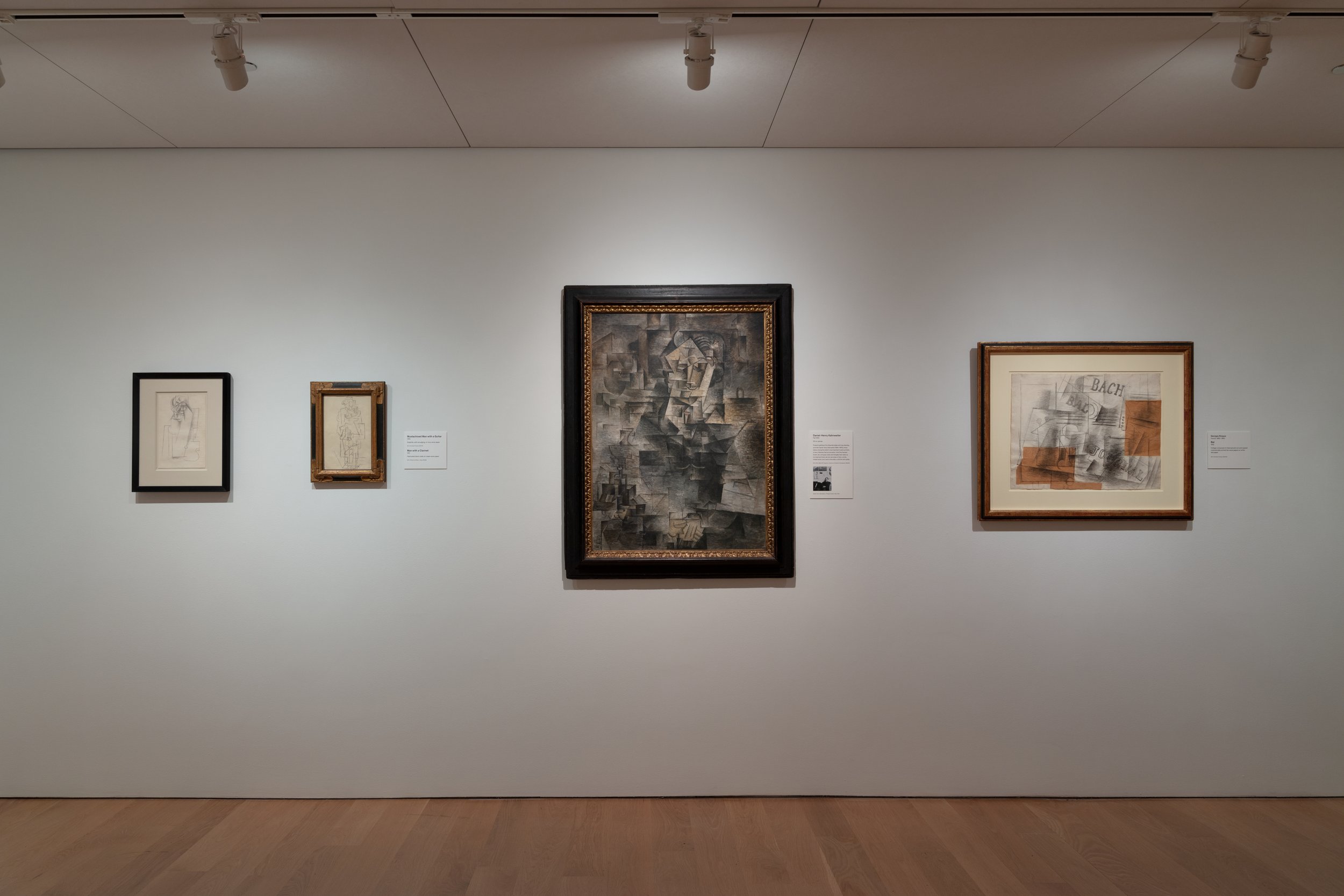
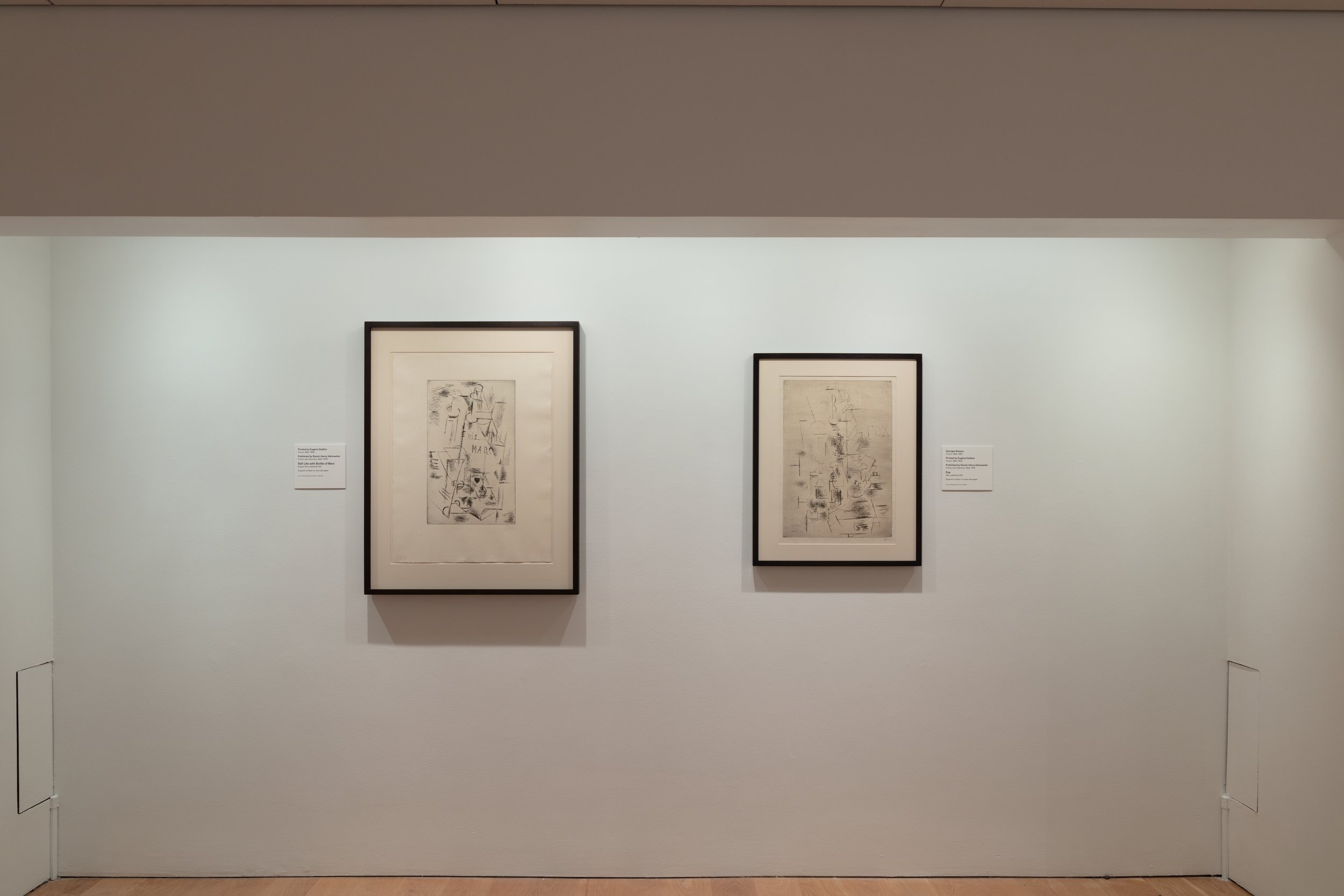
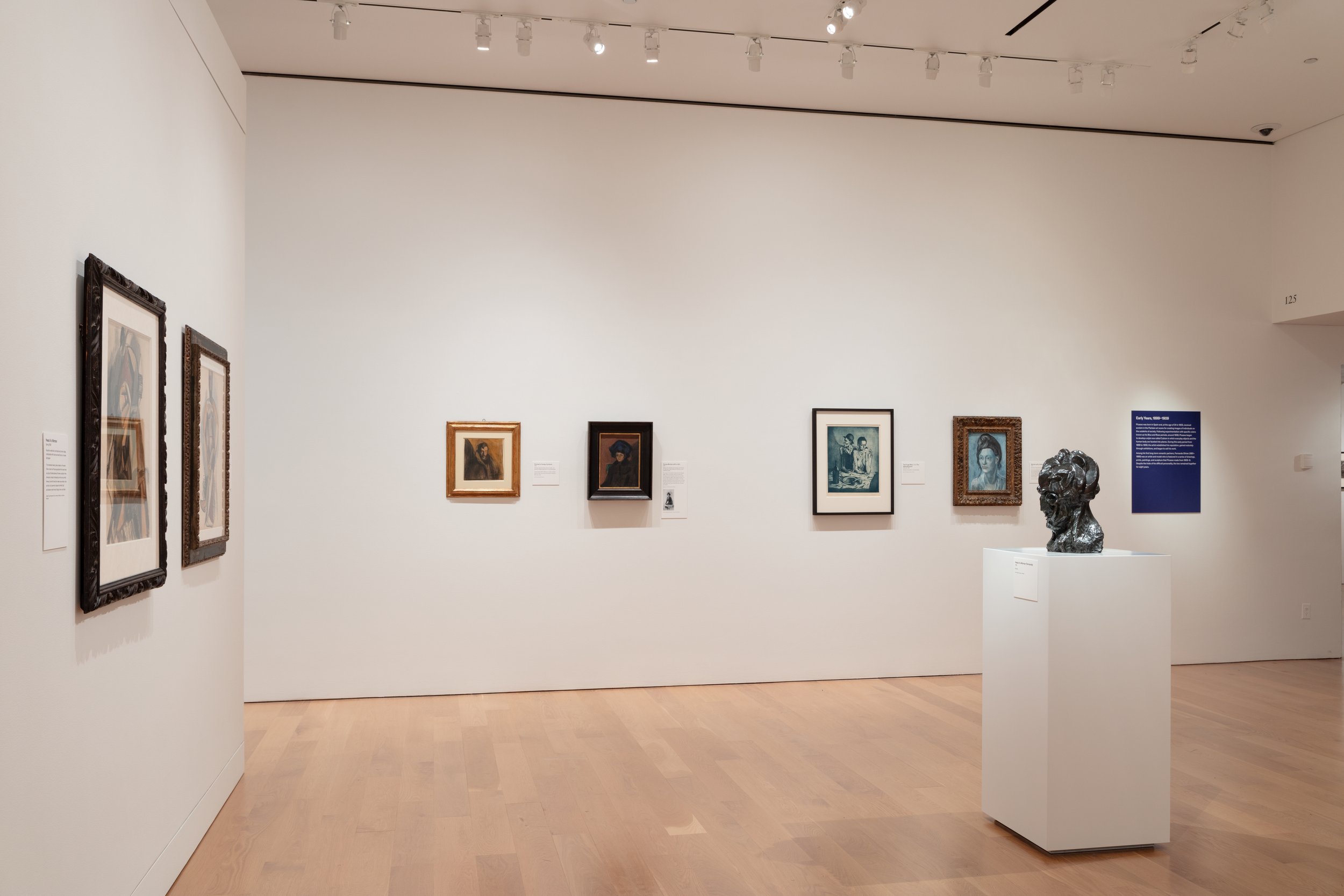
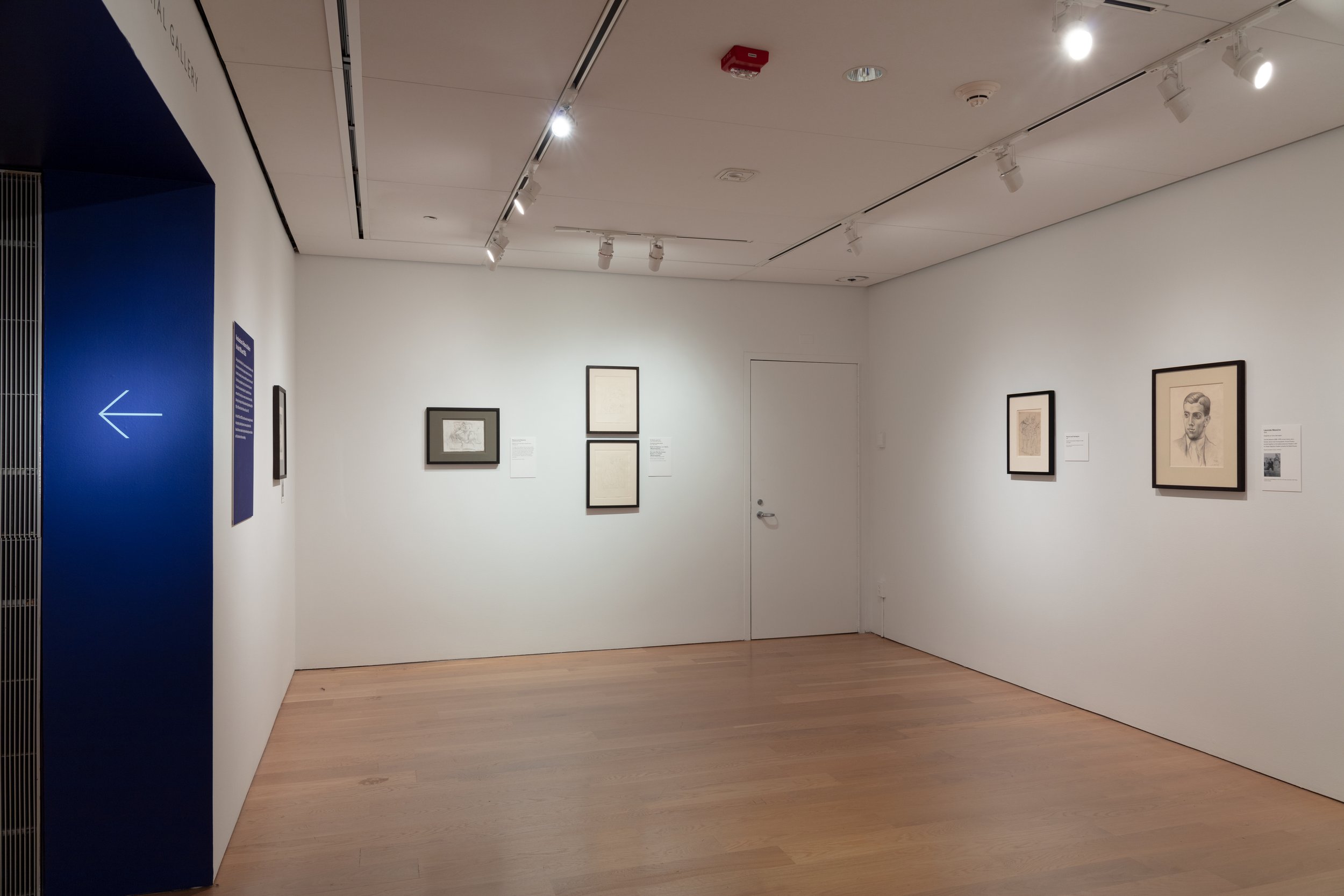
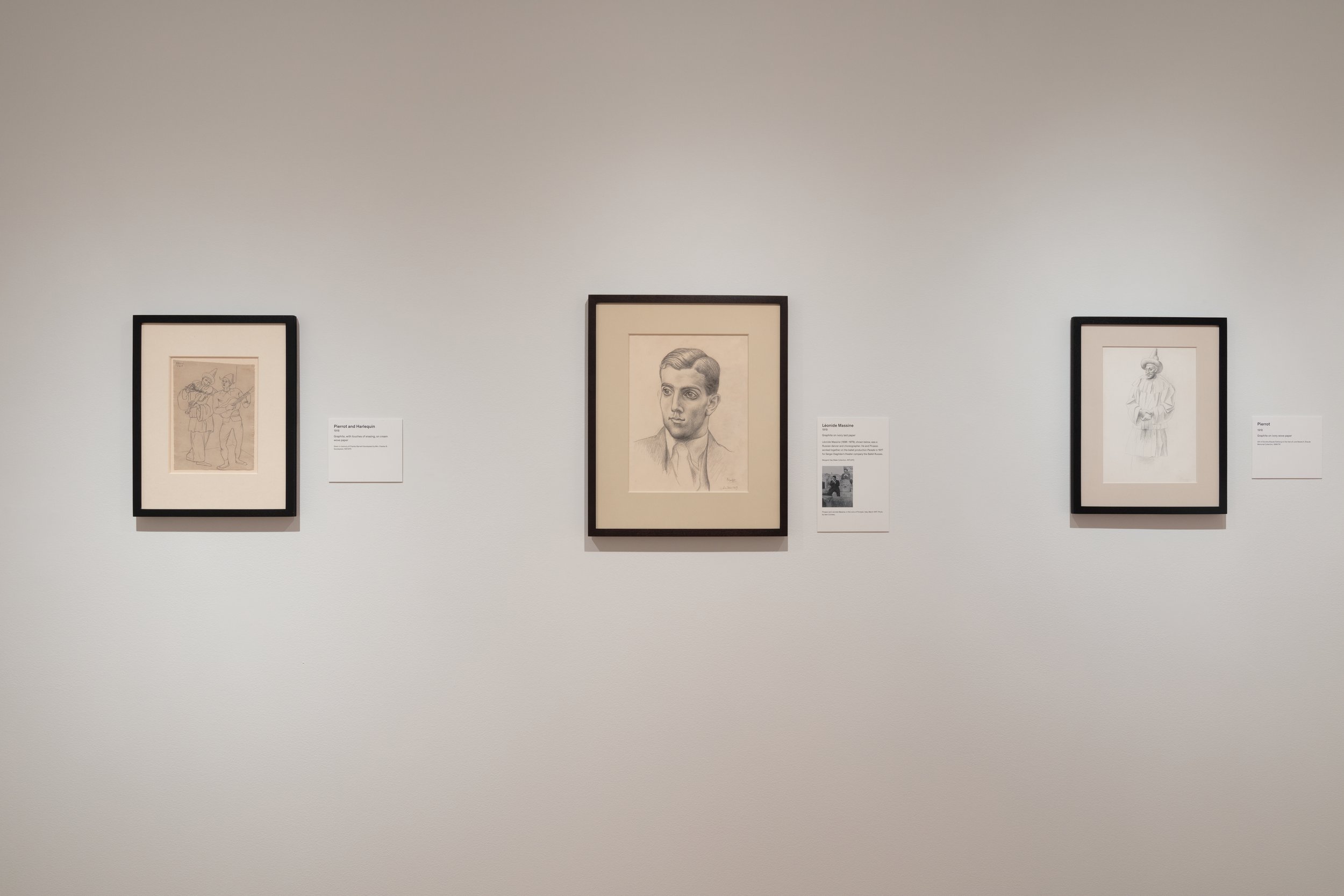
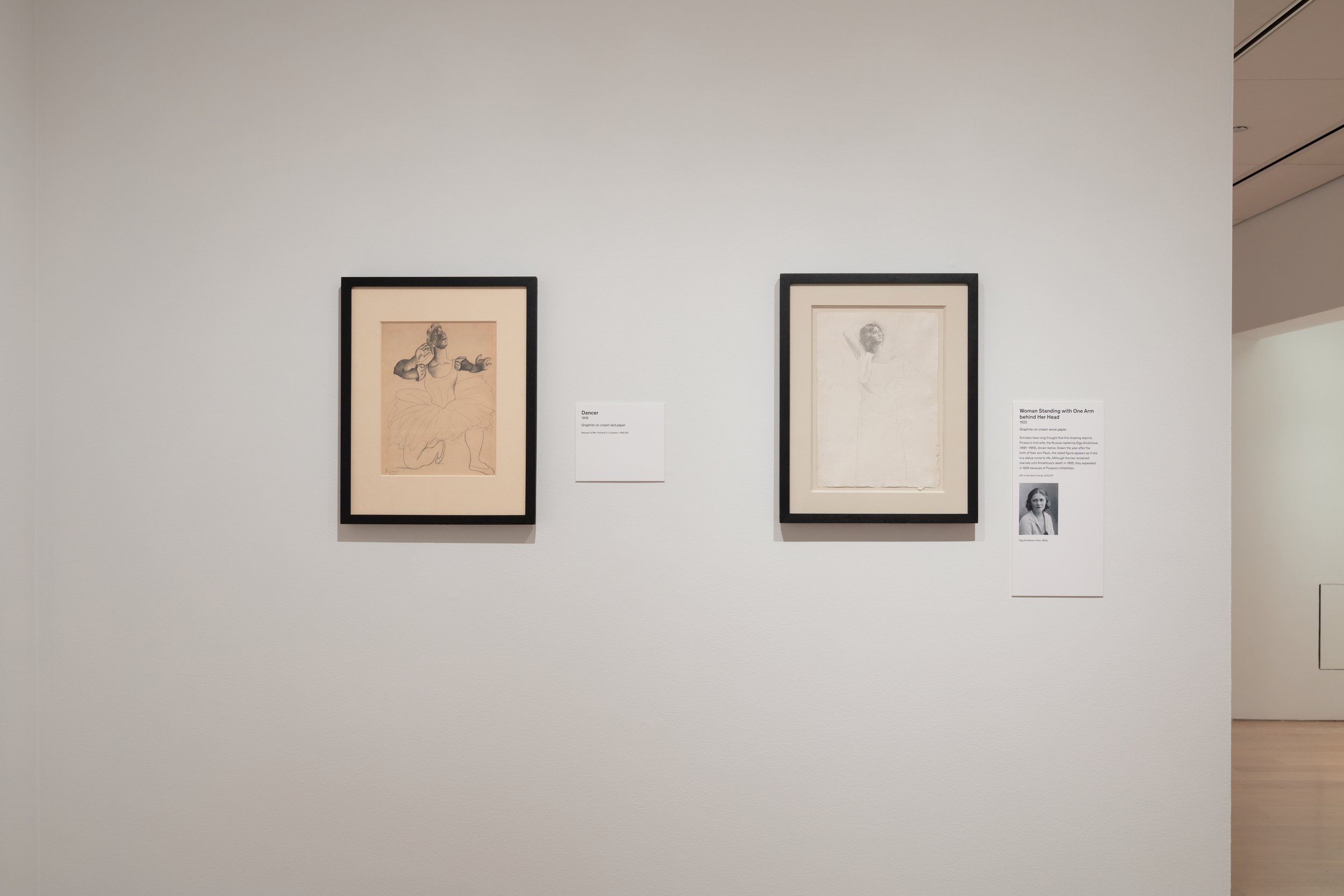

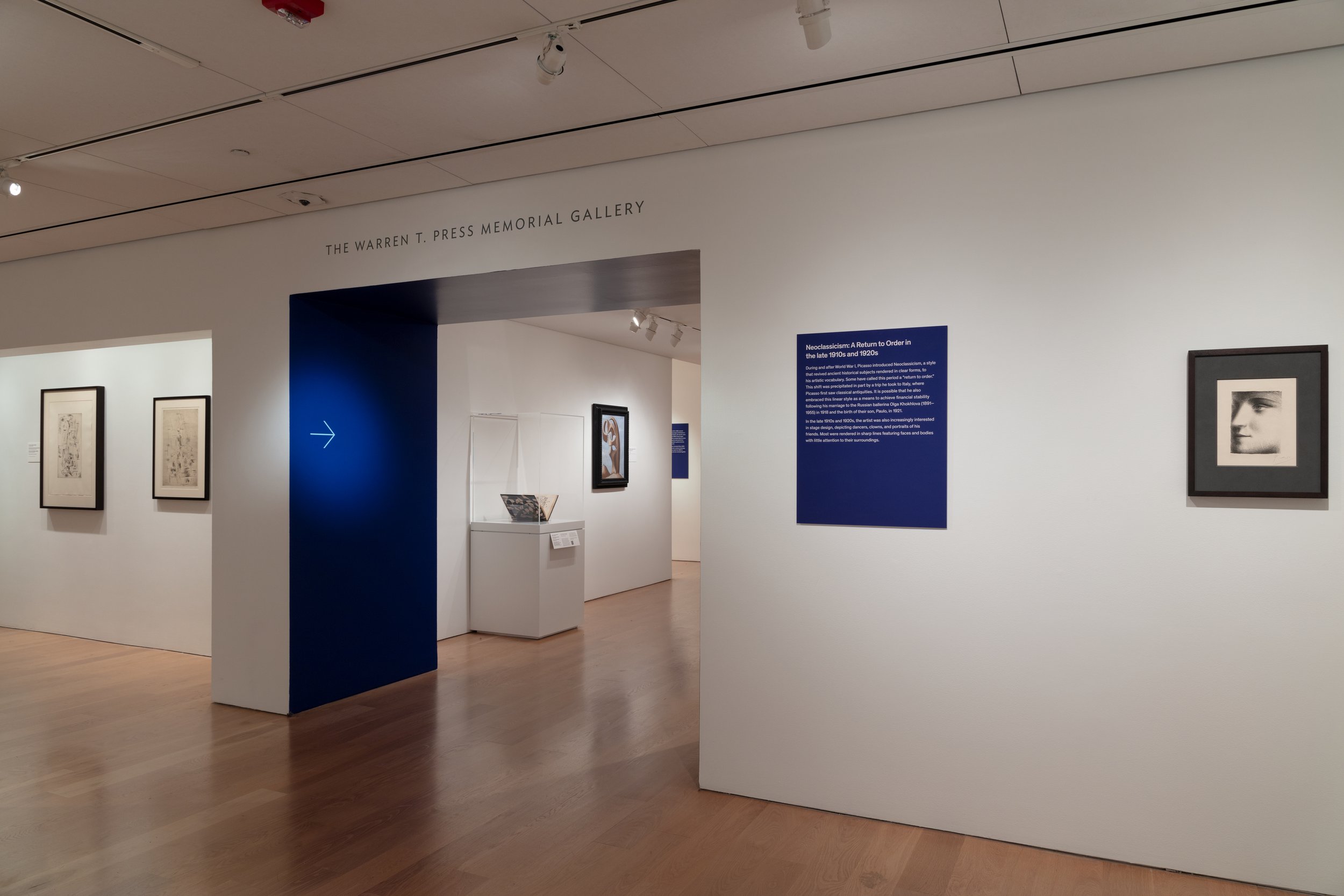
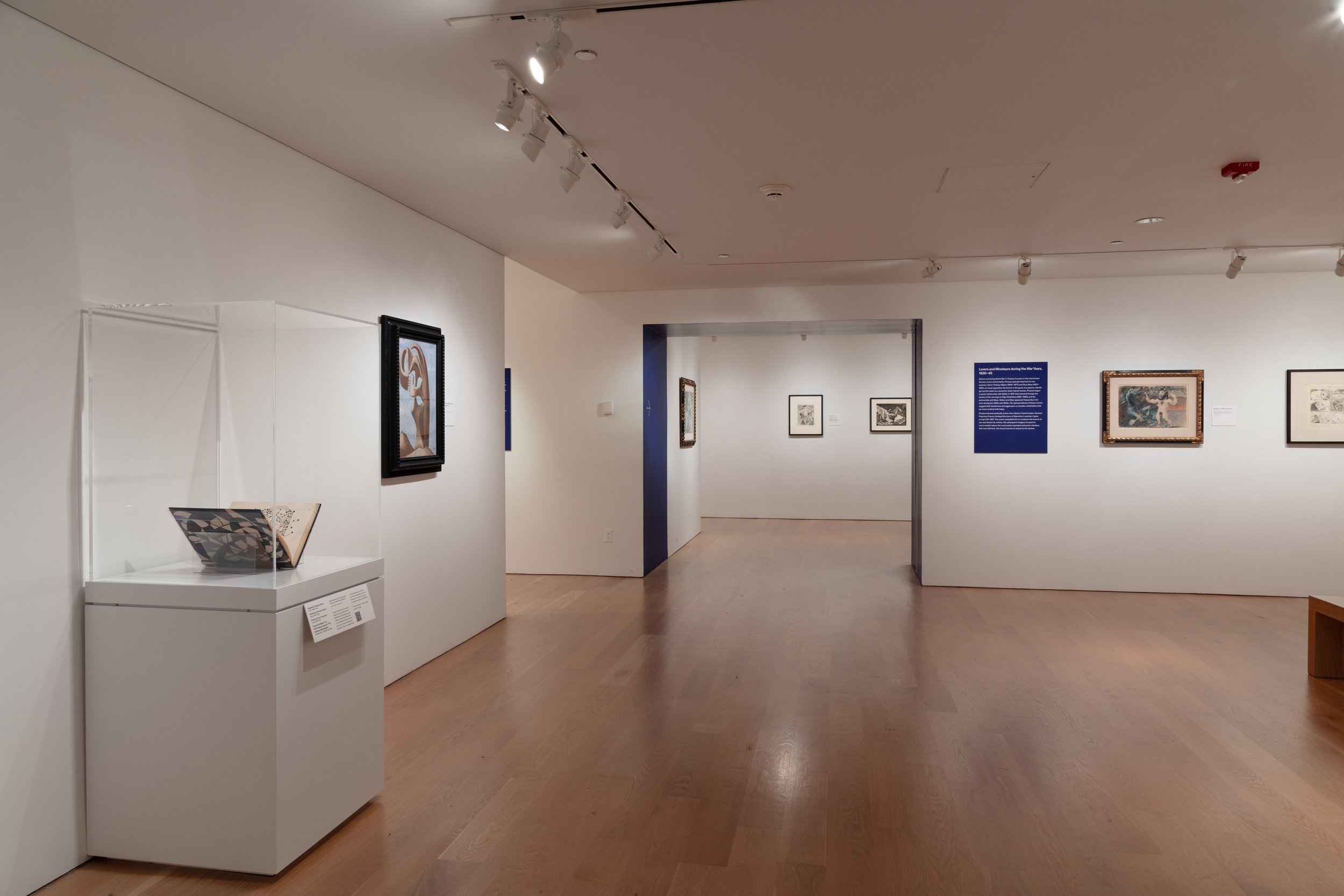
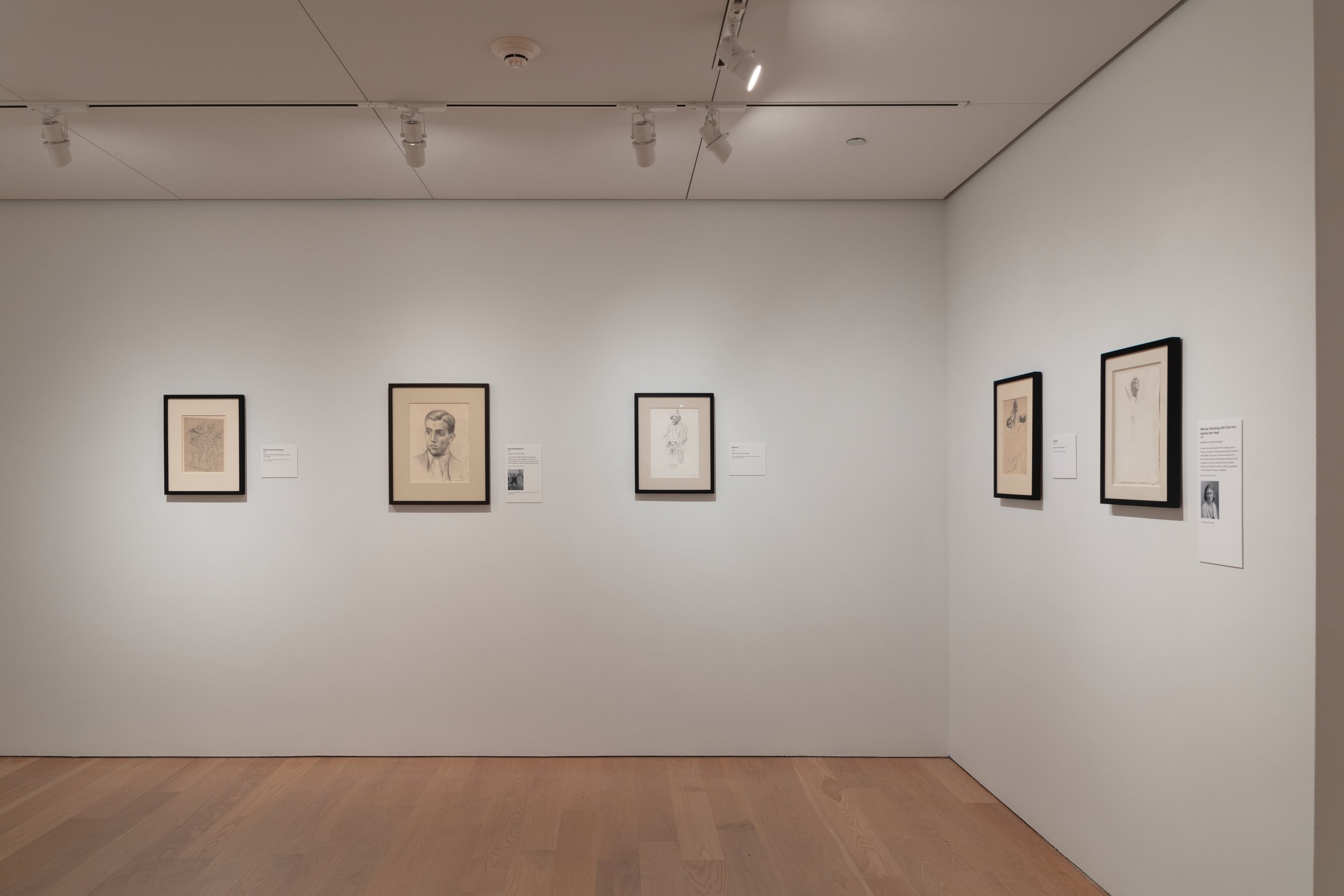
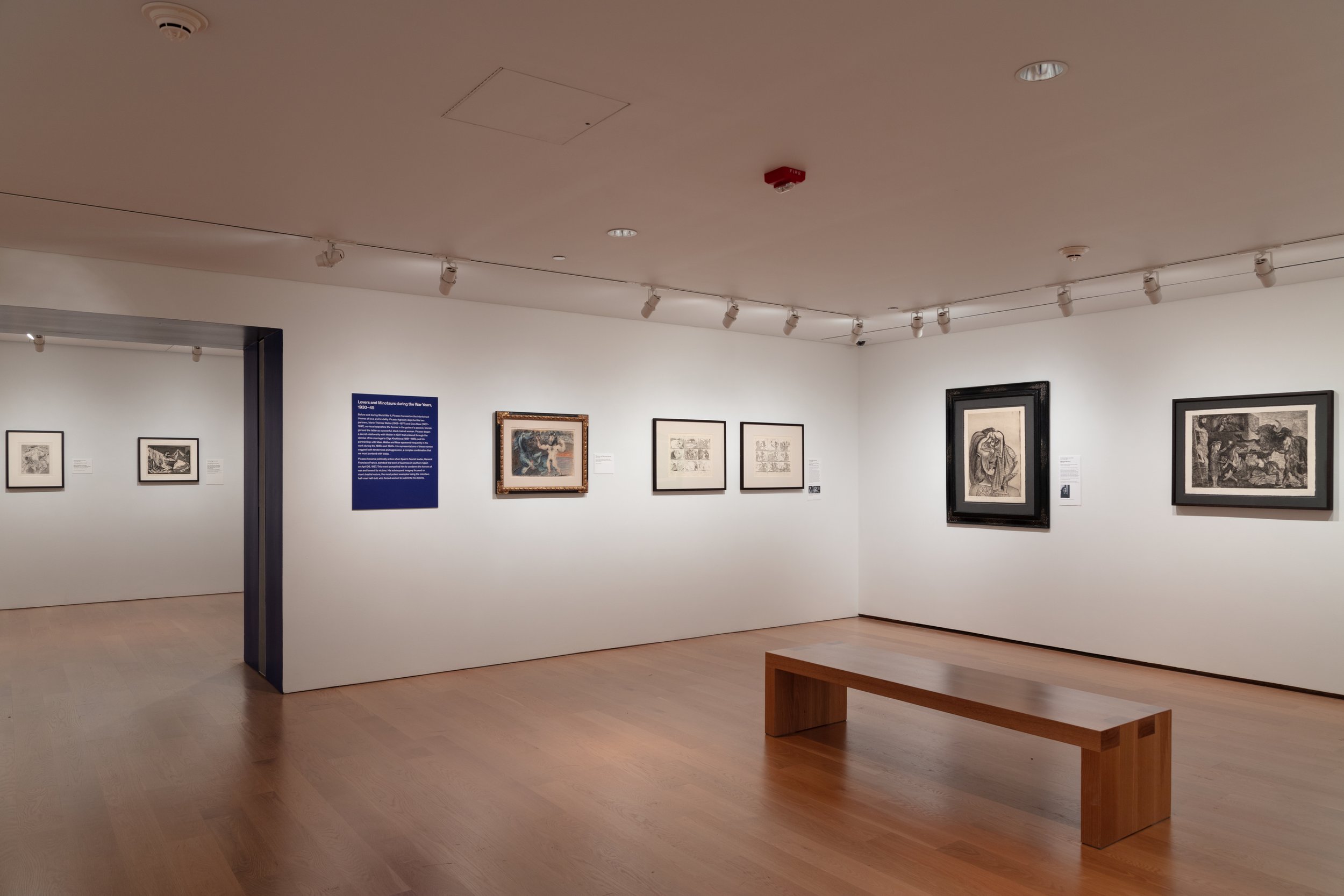
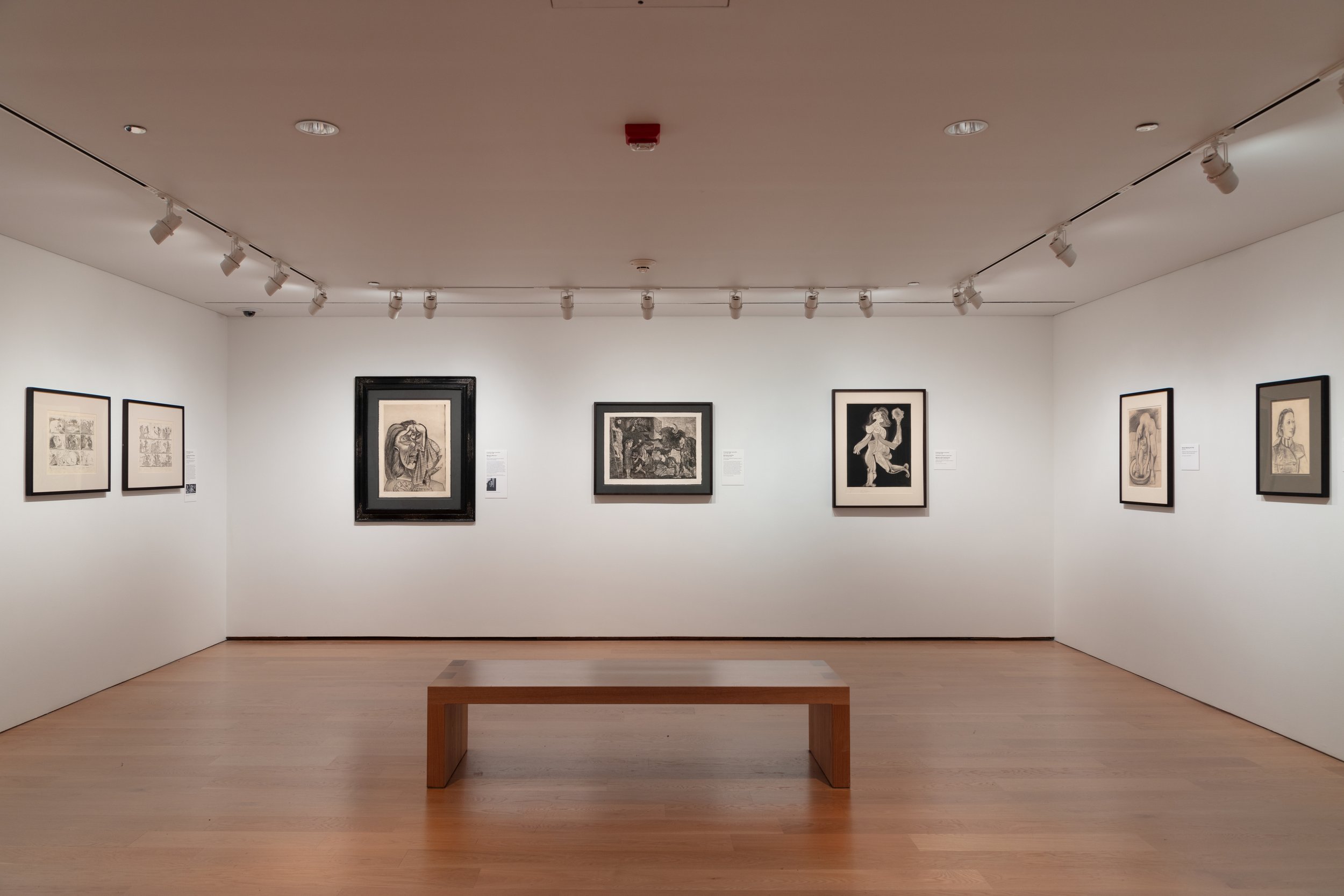
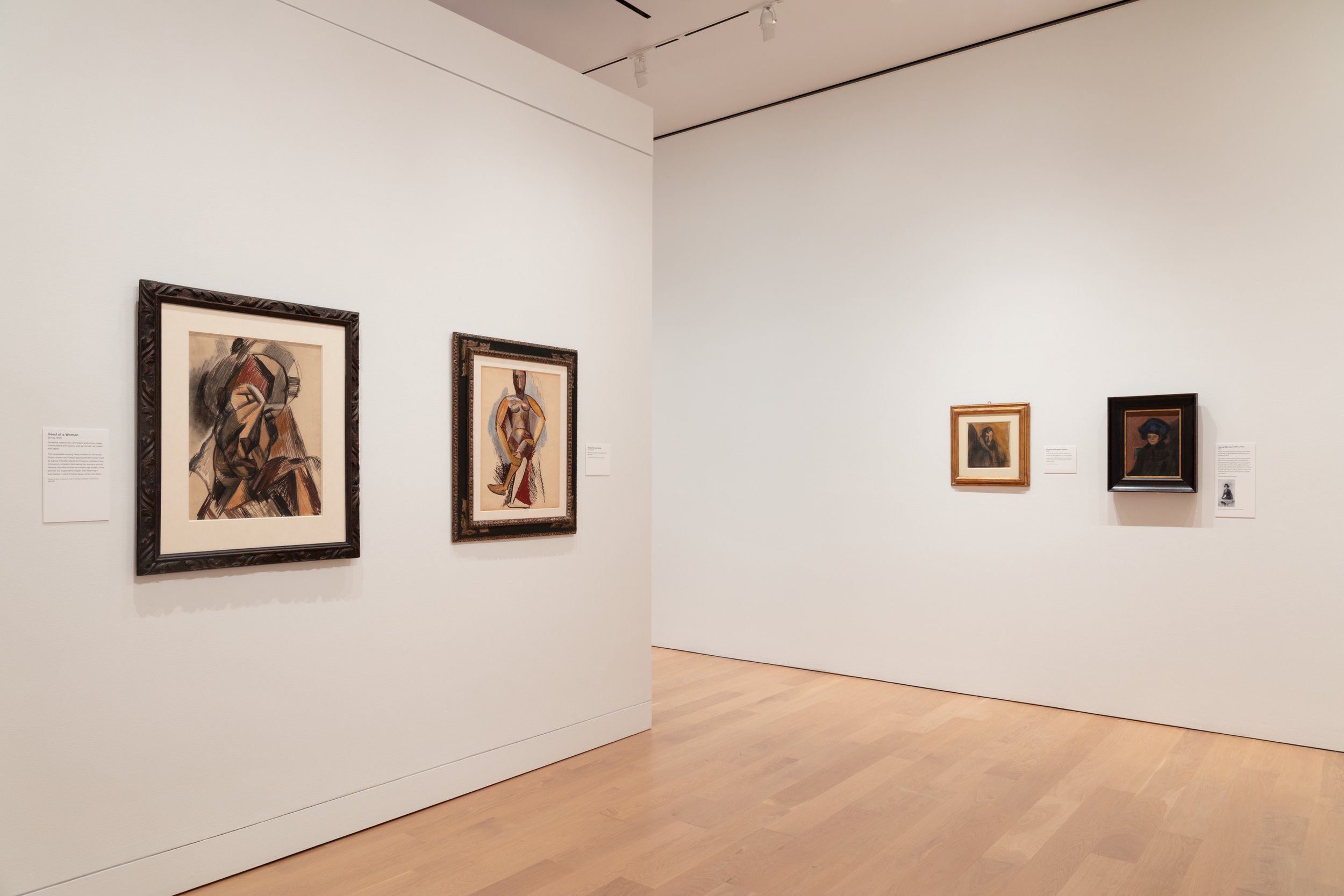
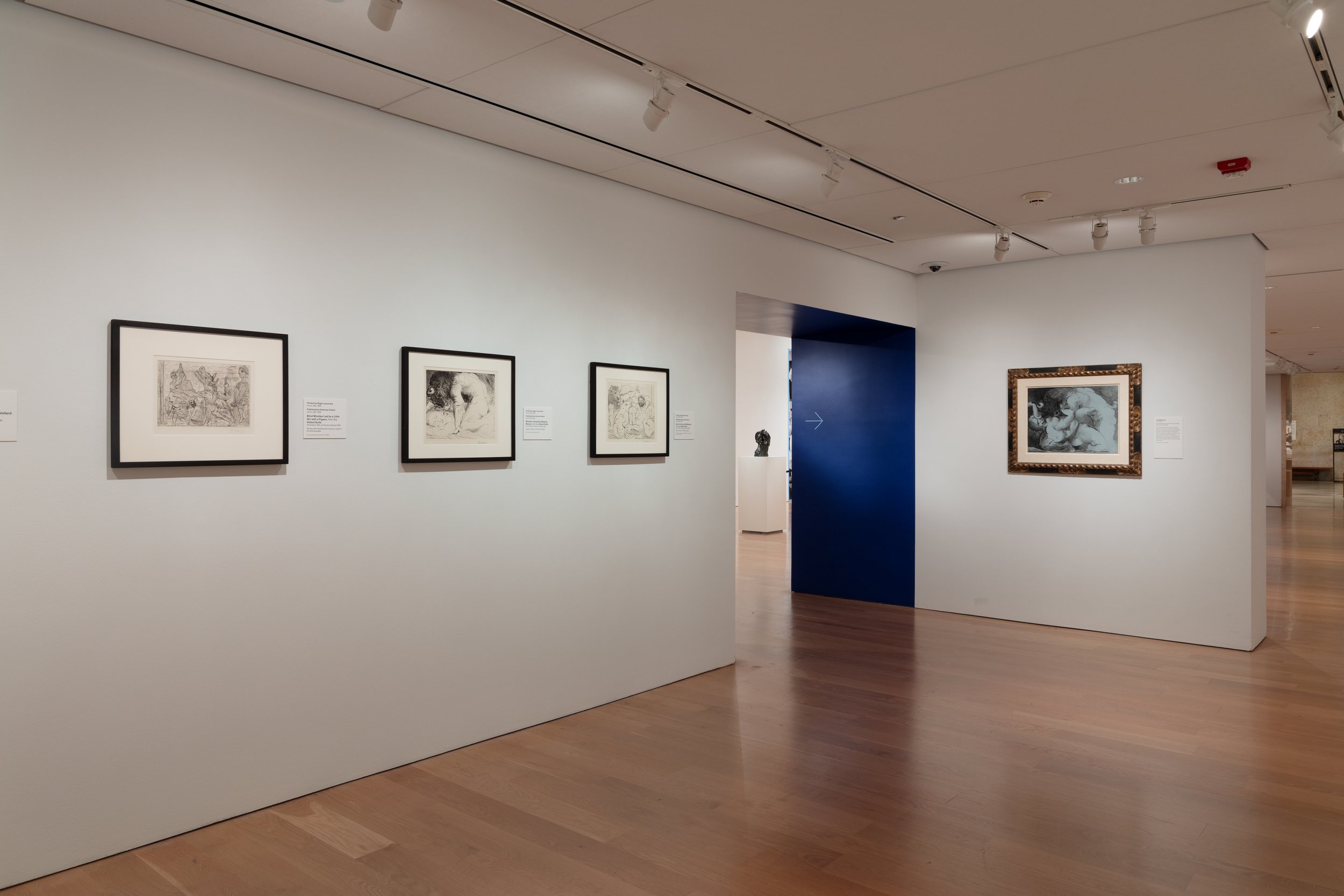
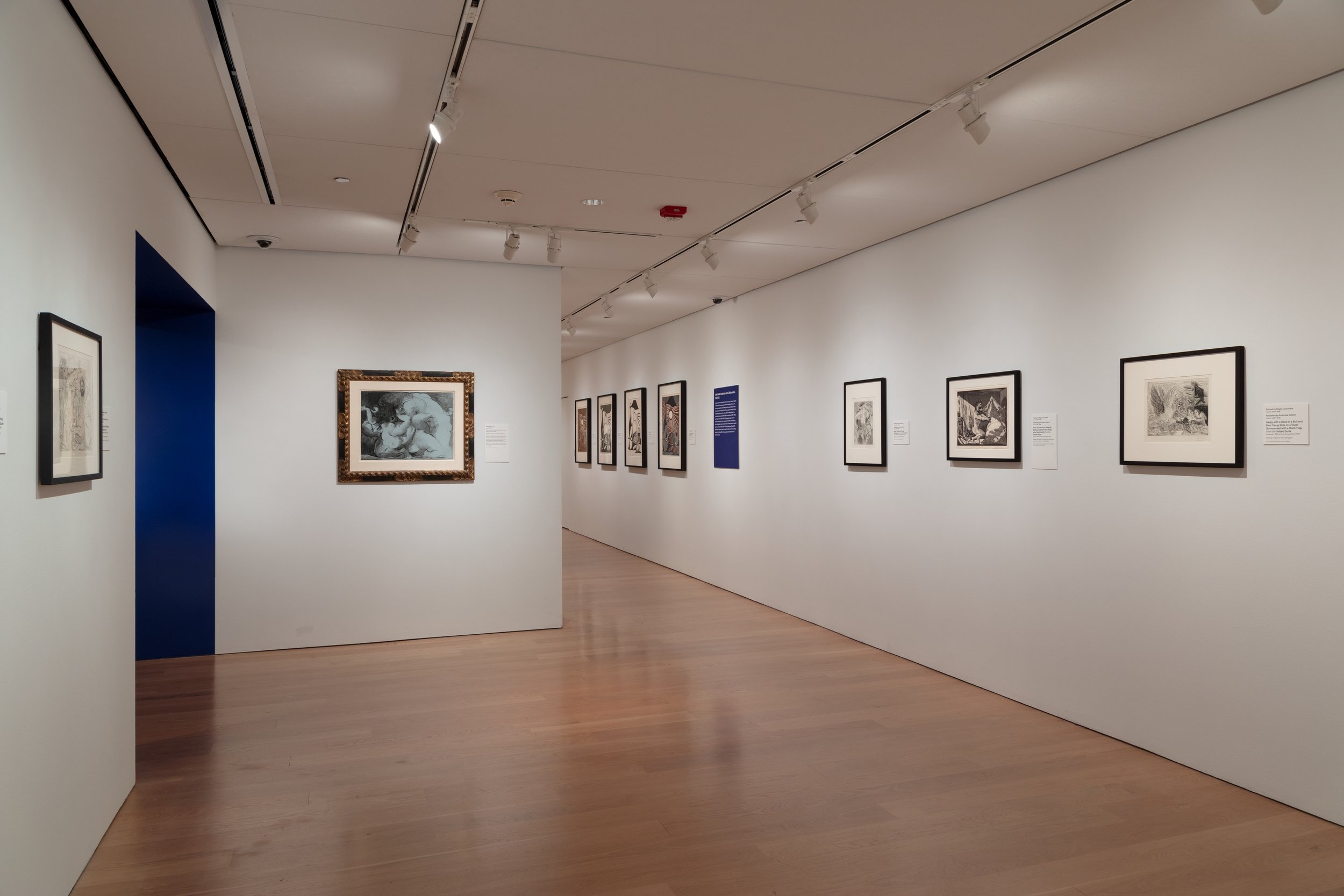

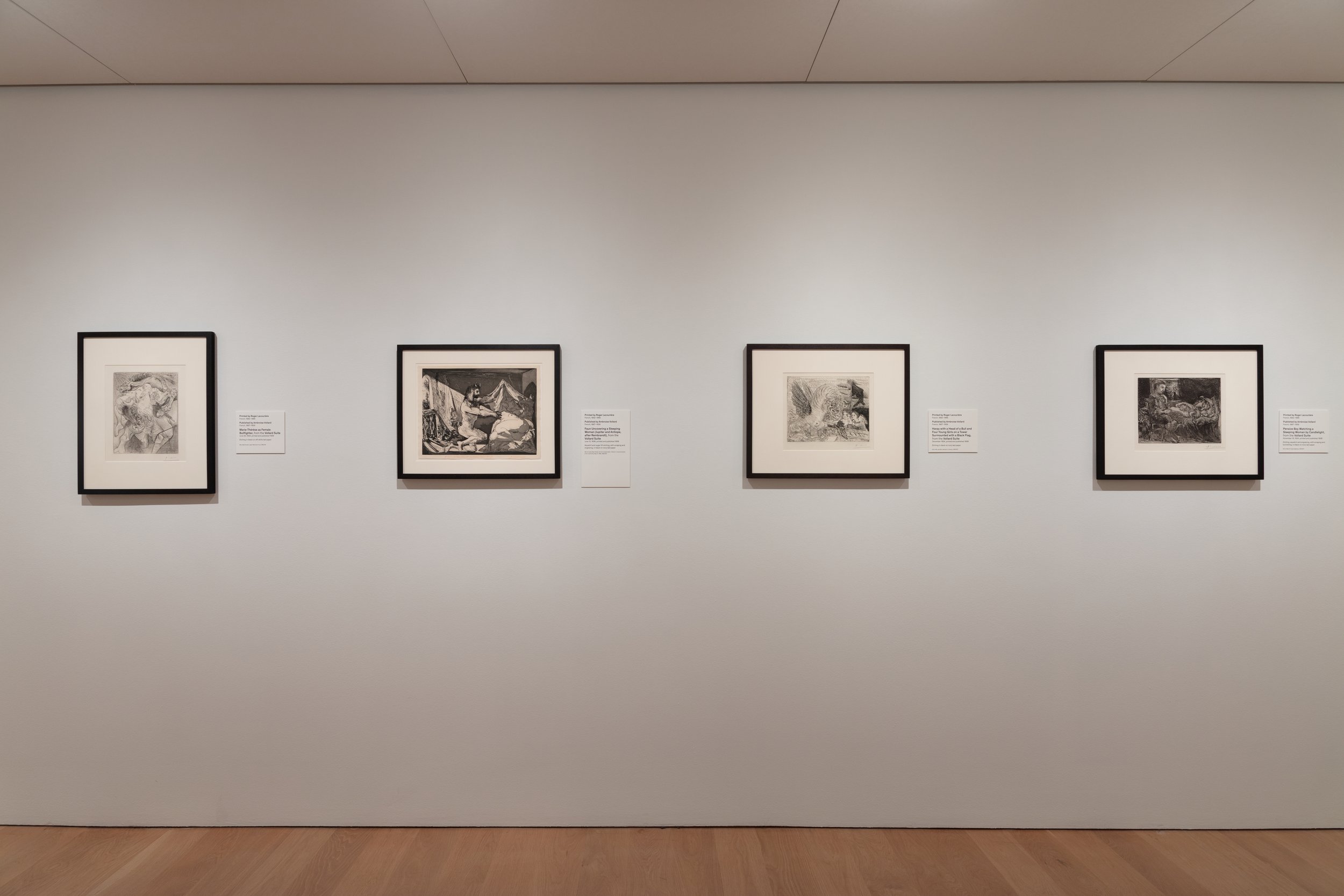
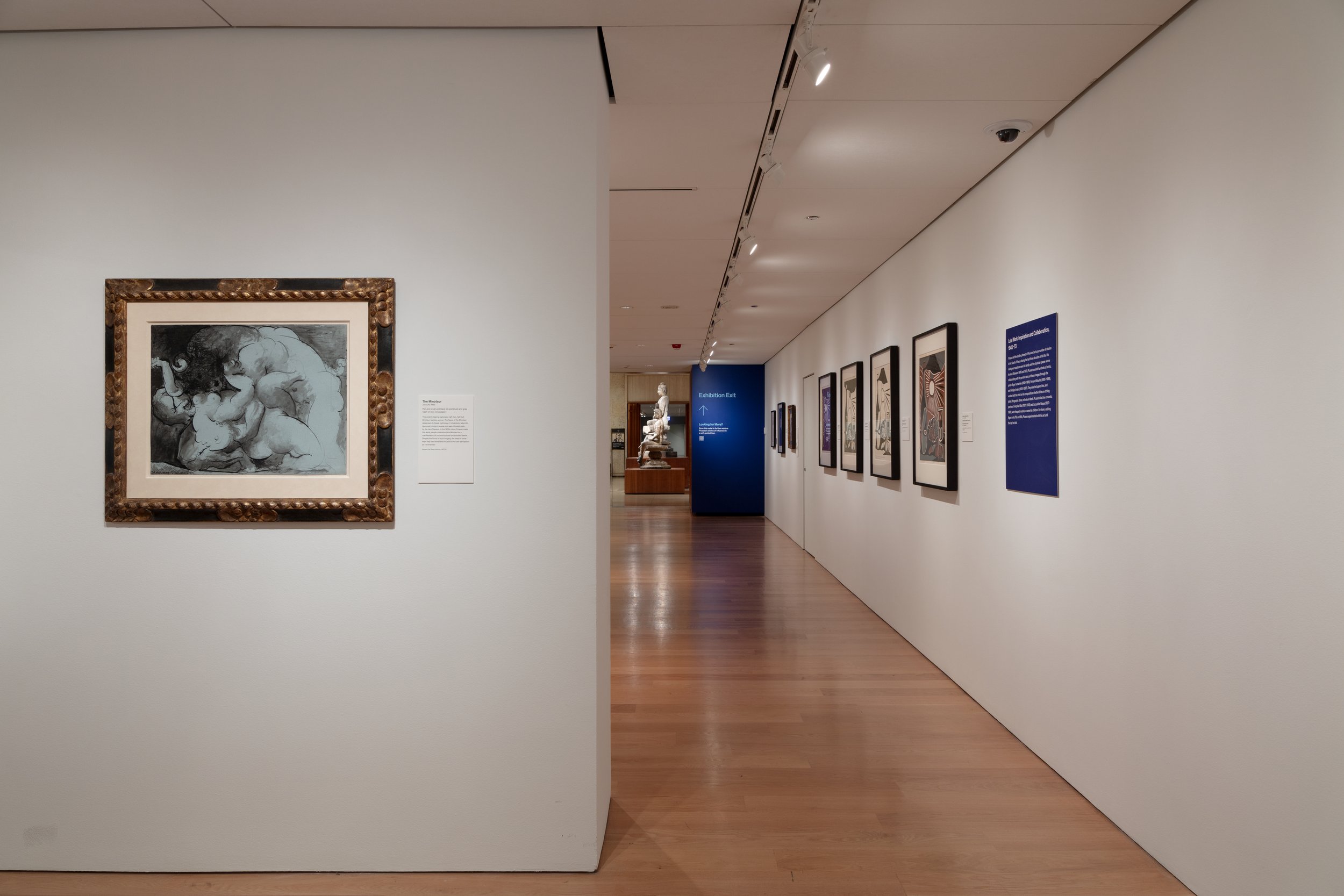
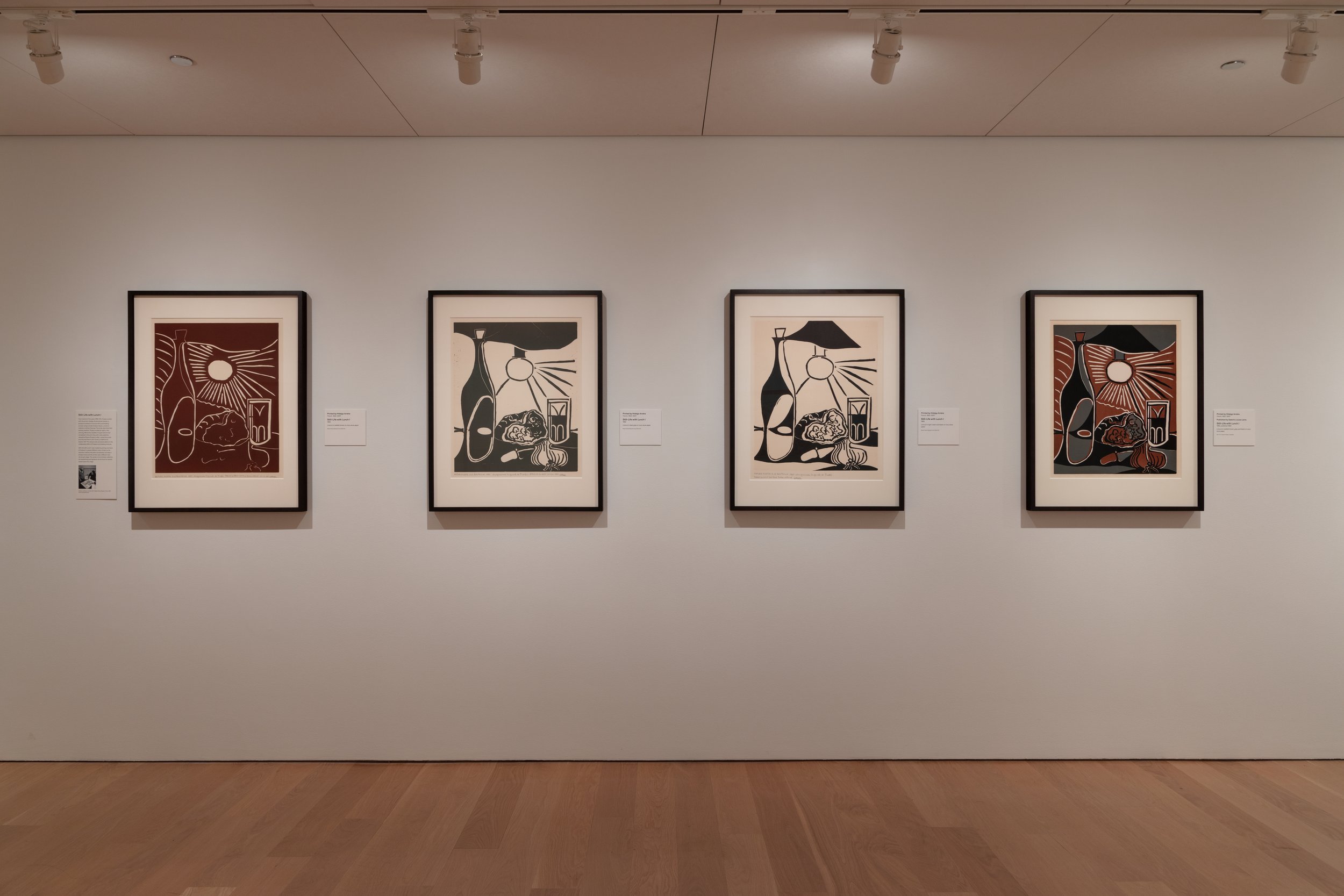
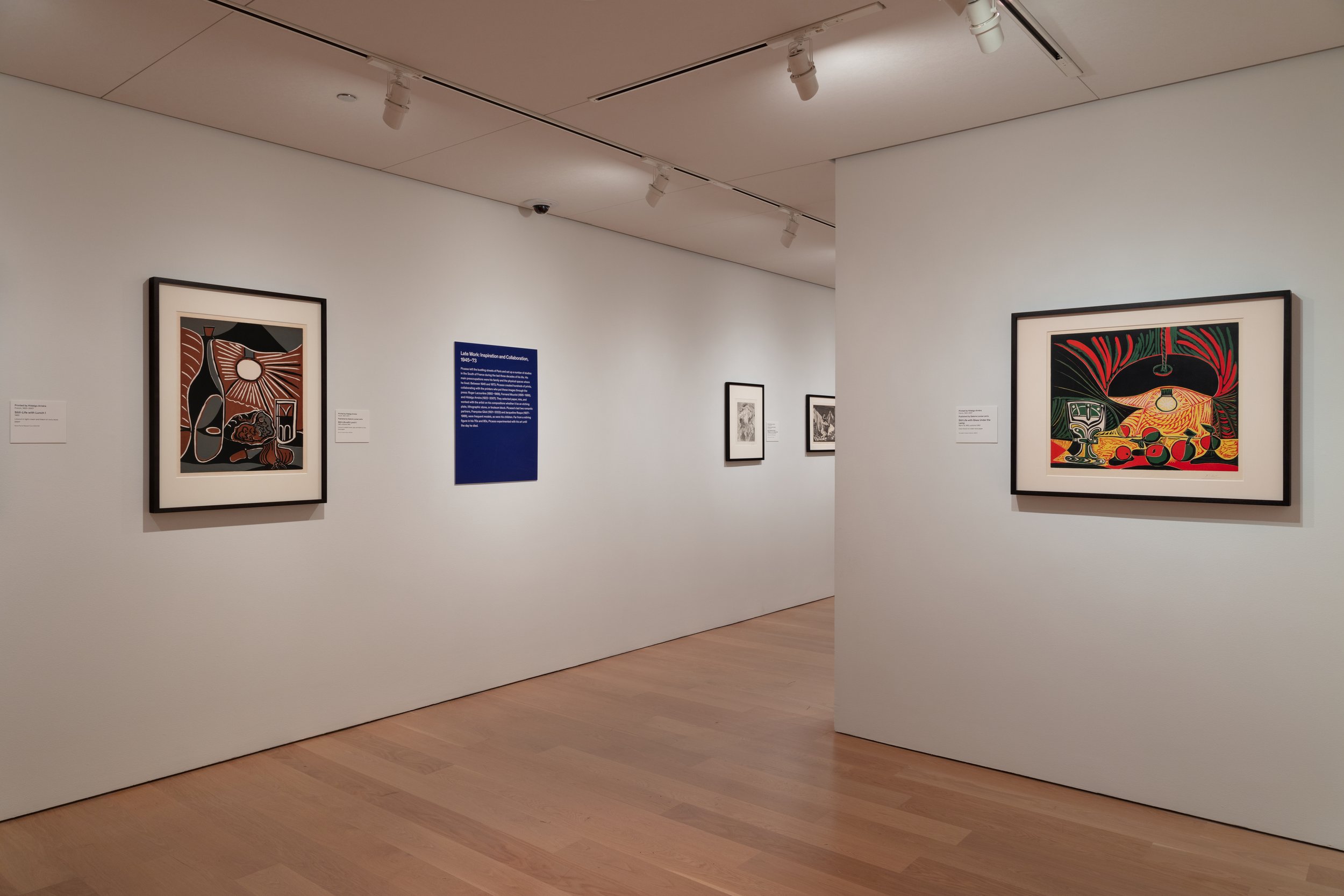
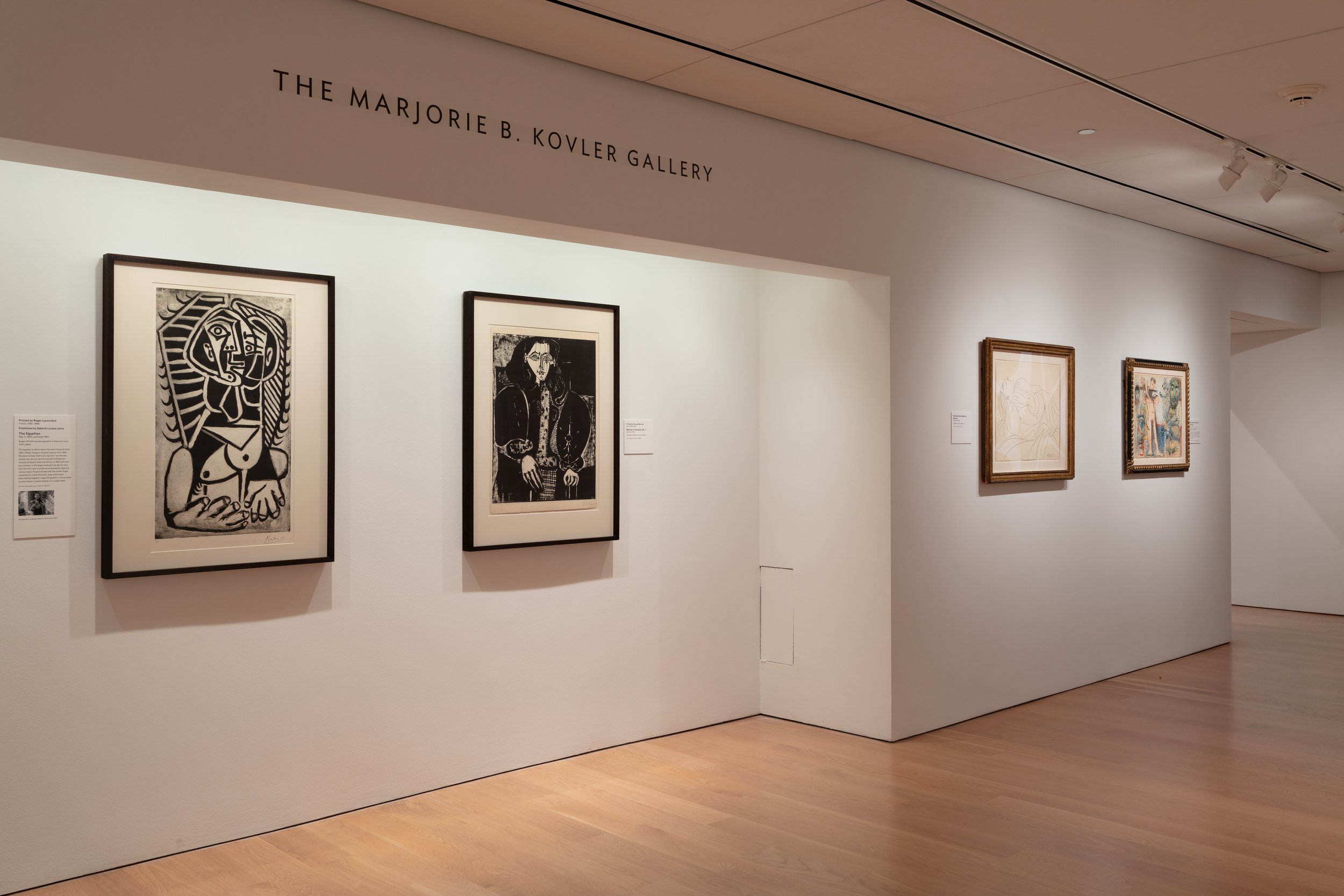
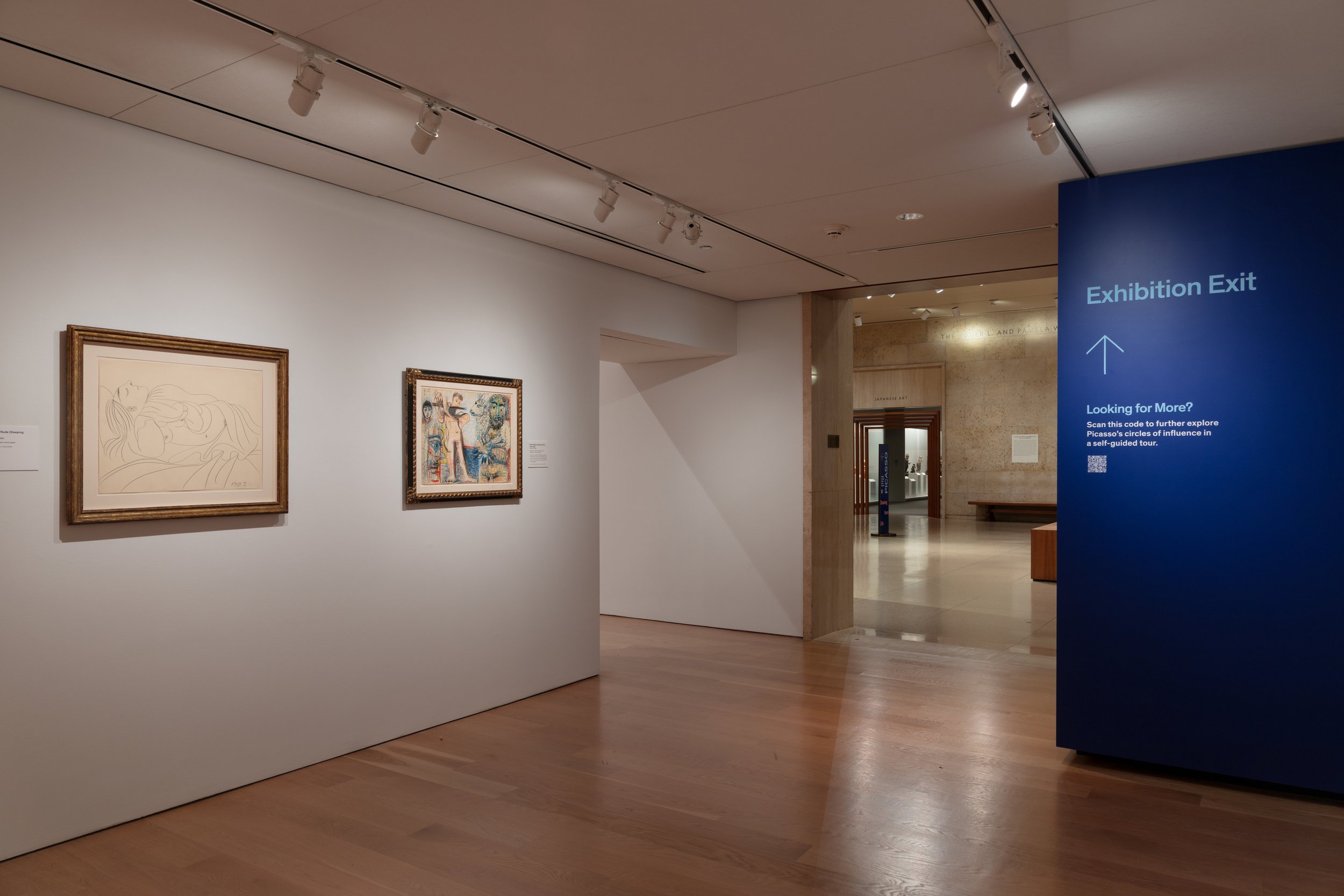
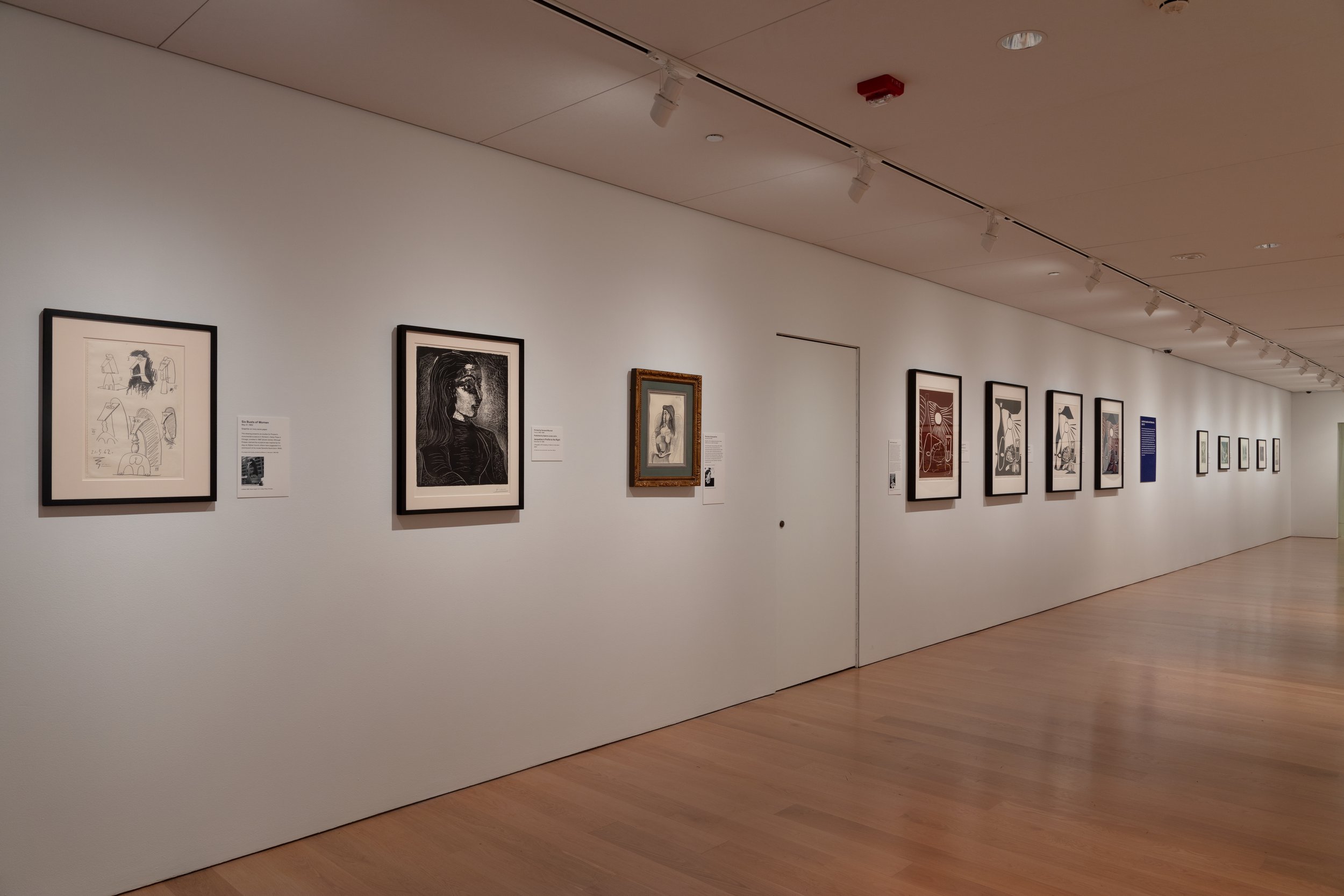
Installation view: Picasso: Drawing from Life, 2024. The Art Institute of Chicago, Chicago. Courtesy of The Art Institute of Chicago.
Organized chronologically, the exhibit highlights those who influenced him at different points in time, including his gallerist Daniel-Henry Kahnweiler, fellow artist George Braque, lovers including Fernande Olivier, Marie-Thérèse Walter, and Dora Maar, and his family.
Installation view: Picasso: Drawing from Life, 2024. The Art Institute of Chicago, Chicago. Courtesy of The Art Institute of Chicago.
“A lot of his art gets lost in the drama of his life, or at least what people think they know about his life,” said Emily Ziemba, Director of Curatorial Administration and Research Curator, Prints and Drawings. “But he made his amazing works of art aided by a fascinating group of people around him.”
Picasso: Drawing from Life is curated by Jay A. Clarke and Emily Ziemba
For more information about the exhibition and other exhibitions, please visit The Art Institute of Chicago's website here. The institute can also be found on Facebook, Instagram, and YouTube.
Radical Clay: Contemporary Women Artists from Japan
Installation view: Radical Clay: Contemporary Women Artists from Japan, 2024. The Art Institute of Chicago, Chicago. Courtesy of The Art Institute of Chicago
CHICAGO—The Art Institute of Chicago is pleased to announce Radical Clay: Contemporary Women Artists from Japan opened on December 16, 2023, and will be on view until June 3, 2024. The exhibition features 40 stunning works by 36 different women artists from across Japan, showcasing the inventiveness and variety of work that is driving the ceramics movement forward.
While women have been historically underrecognized for their contributions to the ceramics field, this show brings both established and emerging women artists to the forefront and focuses on the explosion of innovative and technically ambitious compositions by such artists, particularly since 1970.
Installation view: Radical Clay: Contemporary Women Artists from Japan, 2024. The Art Institute of Chicago, Chicago. Courtesy of The Art Institute of Chicago
“There are so many strong contemporary women artists from Japan that are truly pushing the limits in ceramics and clay beyond what we’ve ever seen traditionally,” said Janice Katz, Roger L. Weston Associate Curator of Japanese Art, the Art Institute of Chicago. “This show brings together artists on the cutting edge of invention in terms of materials, glaze, and technique, and we are thrilled to recognize their contributions to the global ceramics field.”
The creators featured in the show span several generations of women contemporary artists, and while they have been featured in other shows, this is the first major exhibition to position these artists together to highlight their collective achievements and impact. Three artists featured in the show–Mishima Kimiyo (born 1932), Tsuboi Asuka (born 1932), and Ogawa Machiko (born 1946)–began their careers decades ago and continue to produce groundbreaking sculptures that drive the clay medium in a new direction. Konno Tomoko (born 1965), Aoki Katsuyo (born 1972), and Oishi Sayaka (born 1979) are part of younger generations and are represented by pieces featuring bodily distortion to fantastical decoration. These women have routinely confronted expectations about their practice and often refuse gender-imposed constraints in their work, approaching subjects in unconventional ways.
Installation view: Radical Clay: Contemporary Women Artists from Japan, 2024. The Art Institute of Chicago, Chicago. Courtesy of The Art Institute of Chicago
The exhibition is accompanied by a richly illustrated catalog with essays and insights by Janice Katz, Joe Earle, and Hollis Goodall. Additionally, bringing these artists to global attention has been made possible by the generous collaboration with Carol and Jeffrey Horvitz, who shared all of the selected pieces in the show from their exemplary collection.
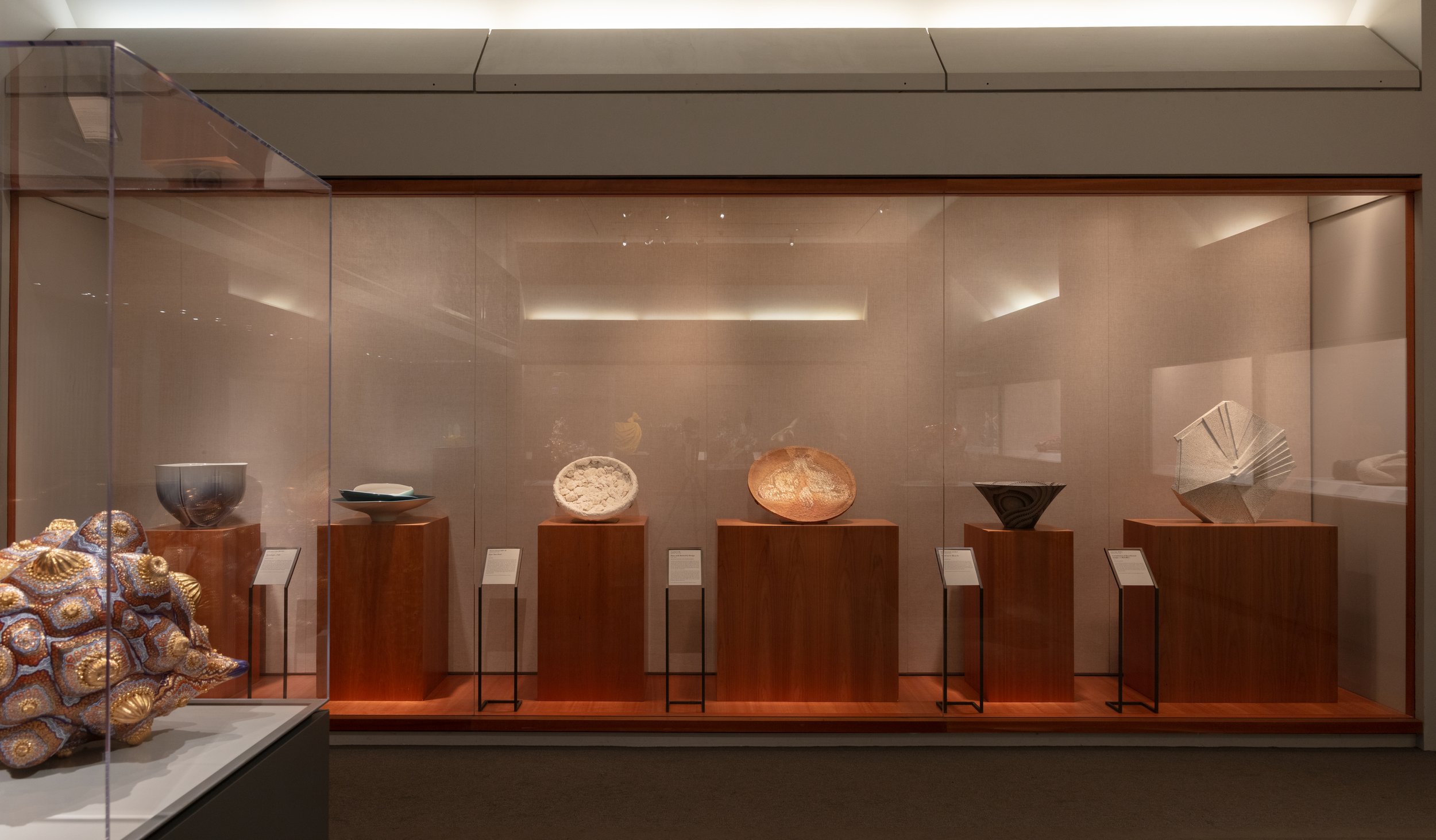
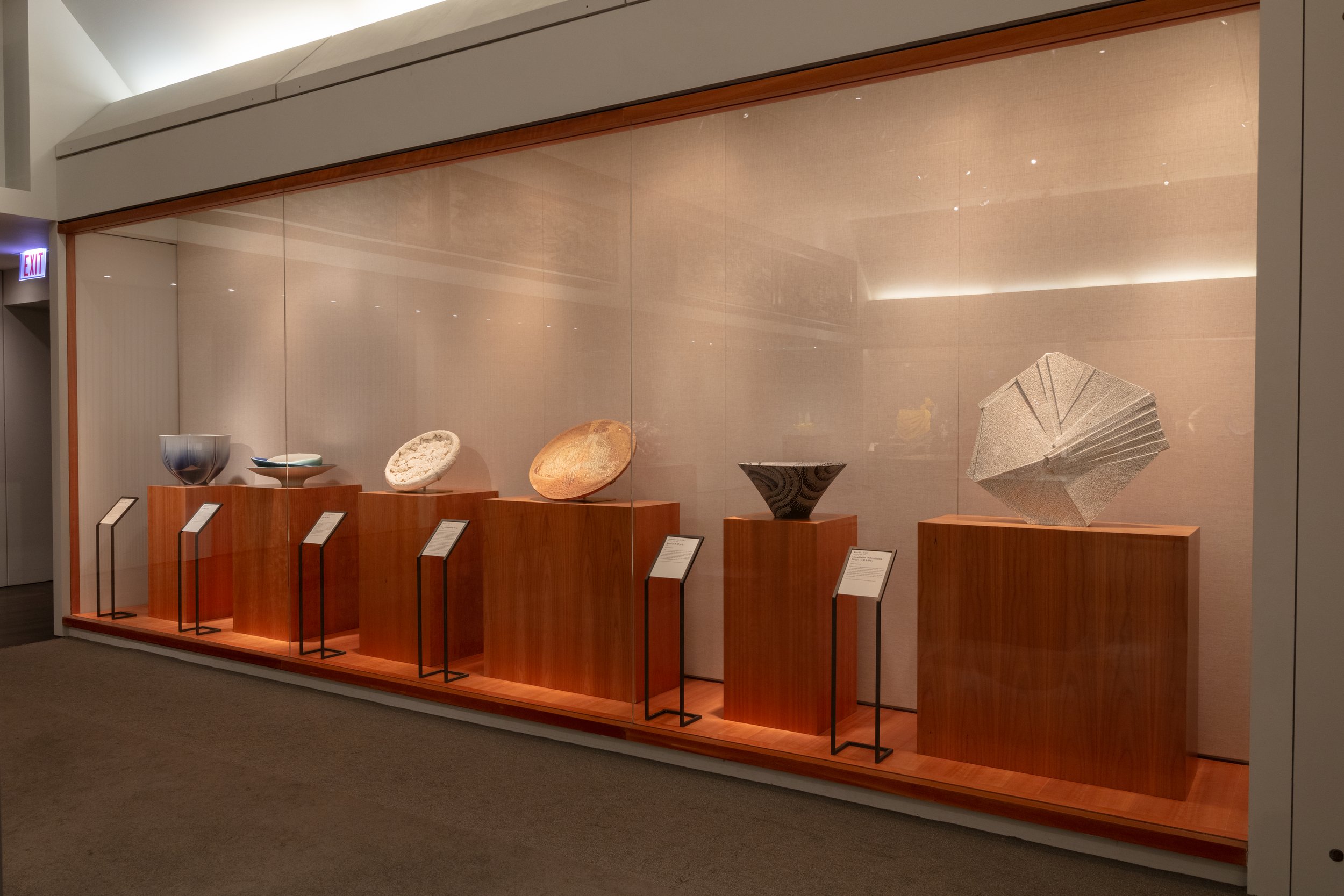
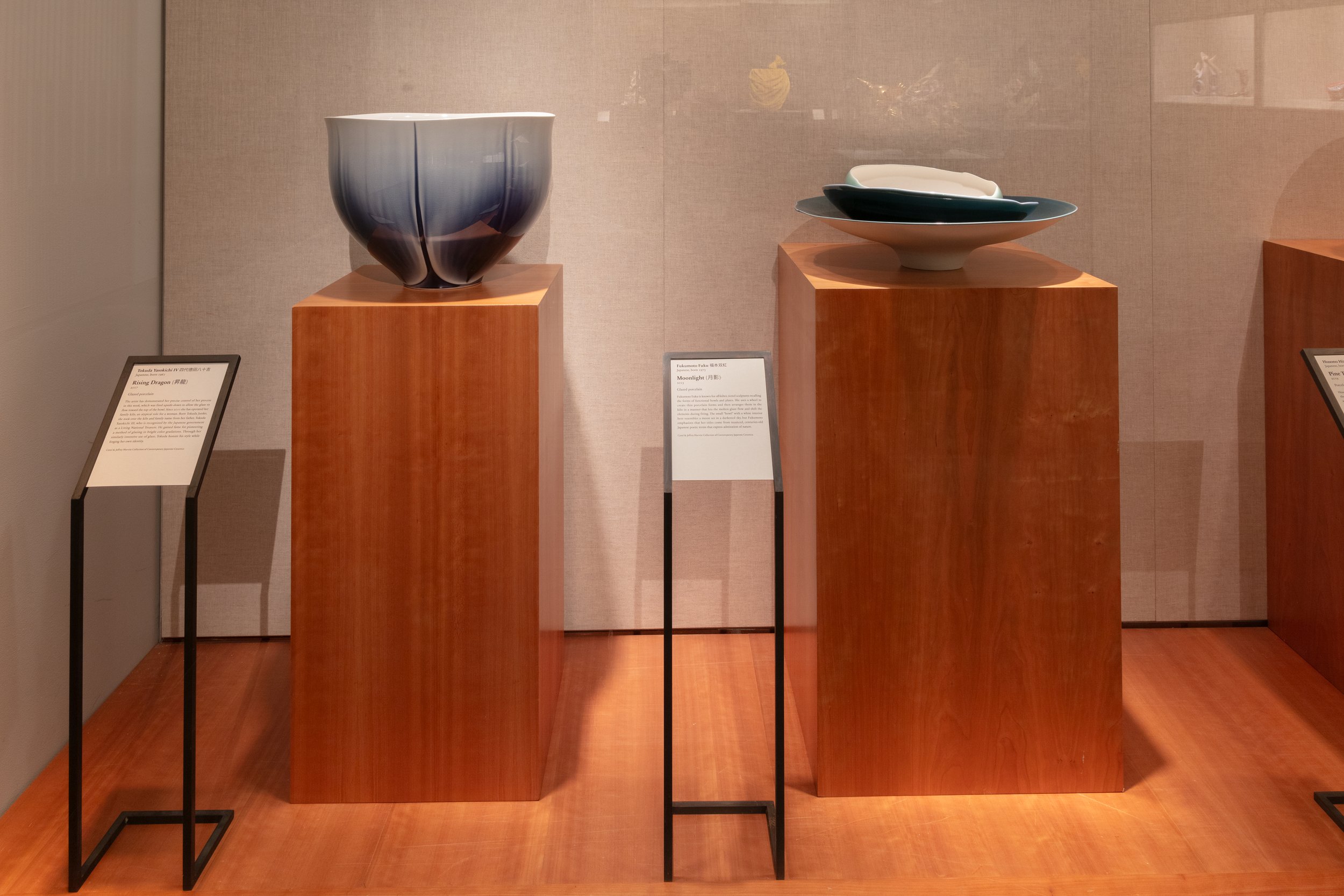
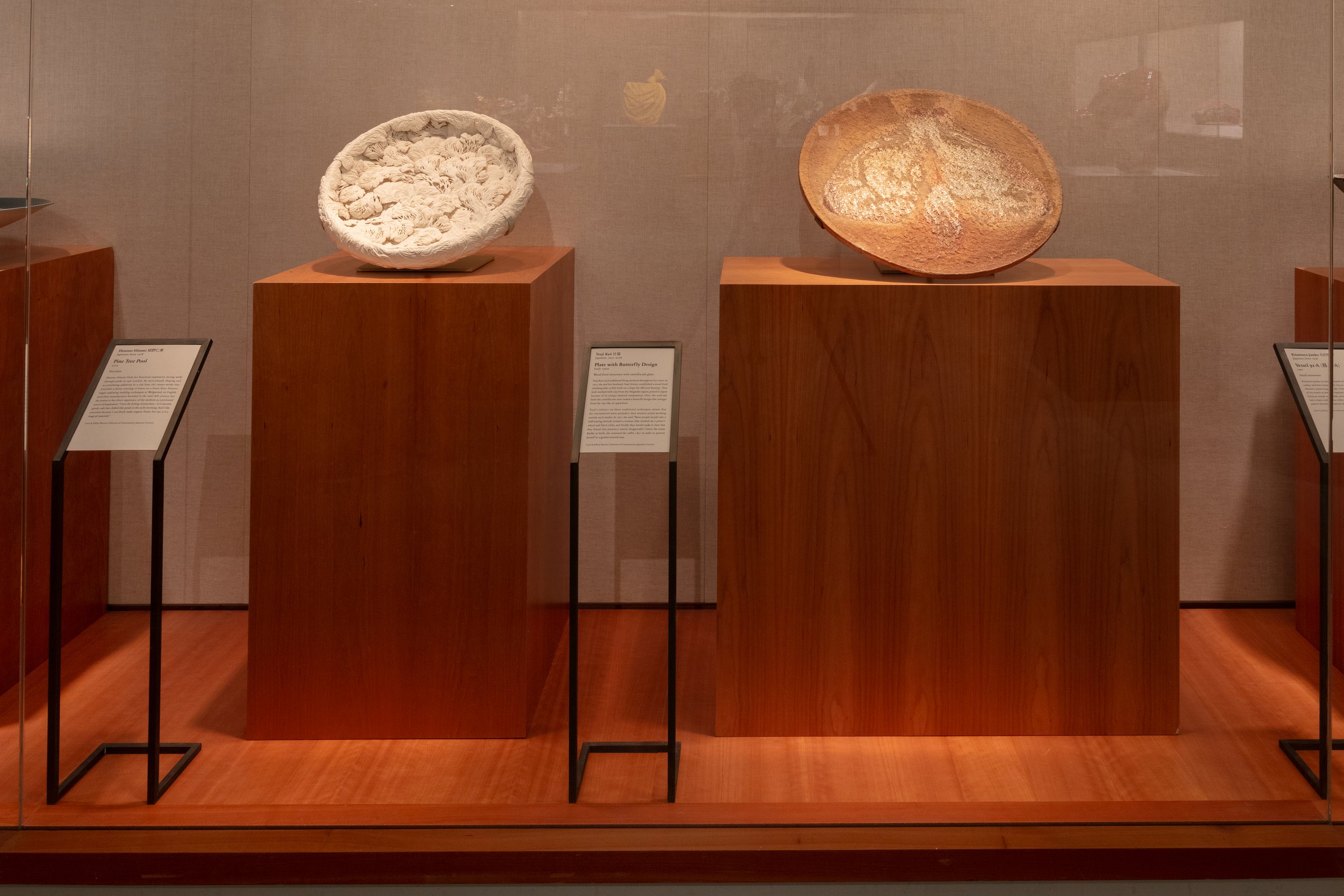
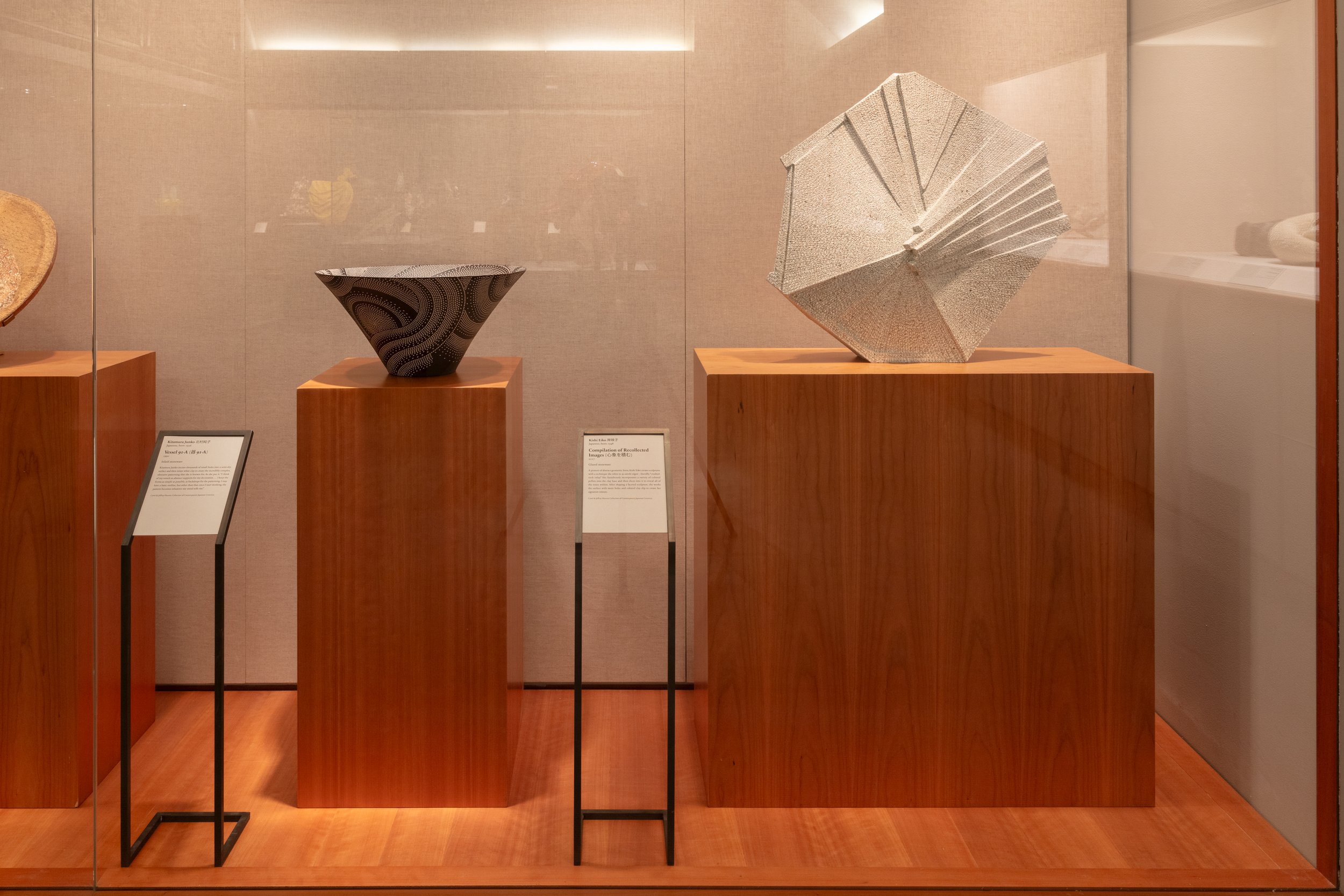
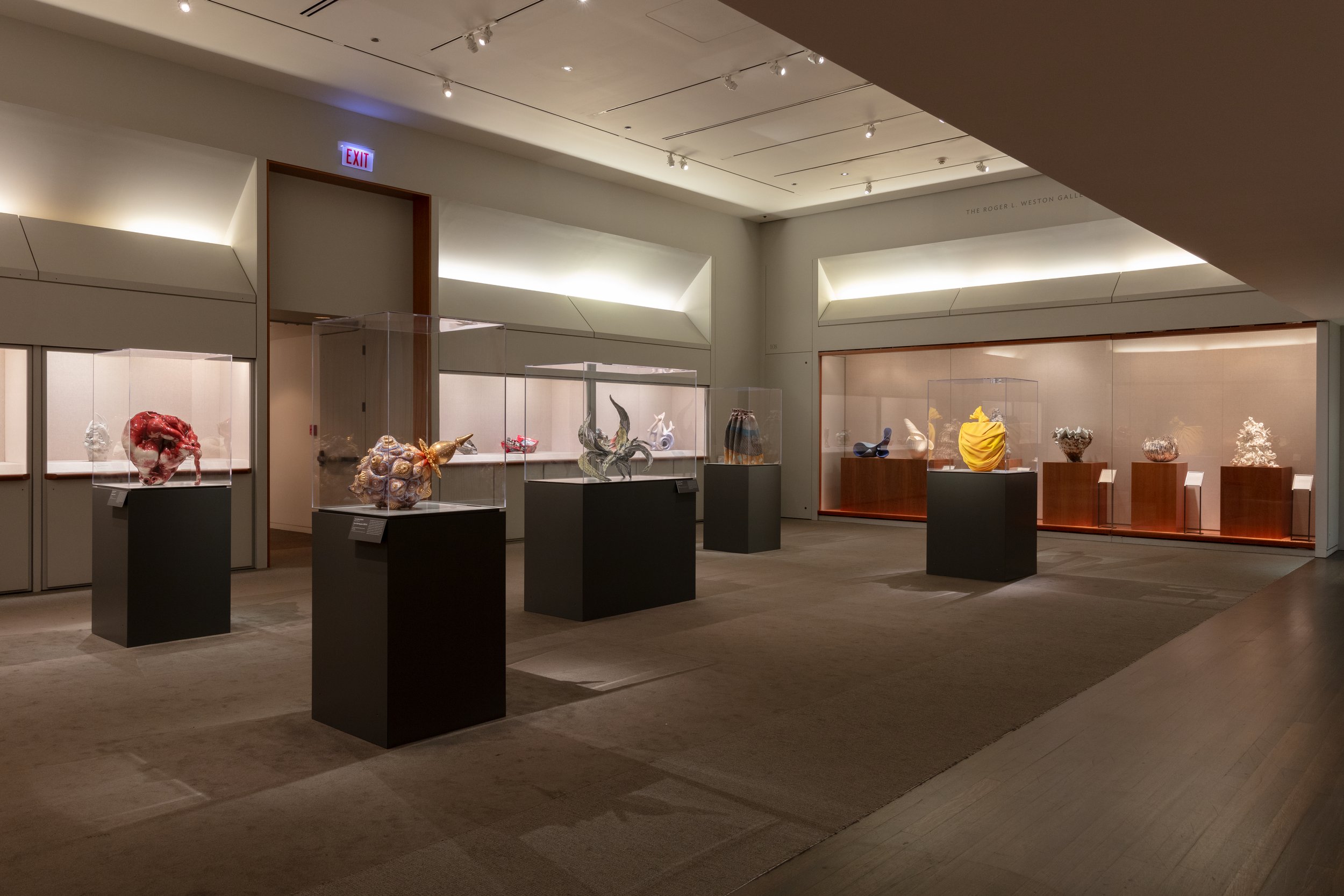

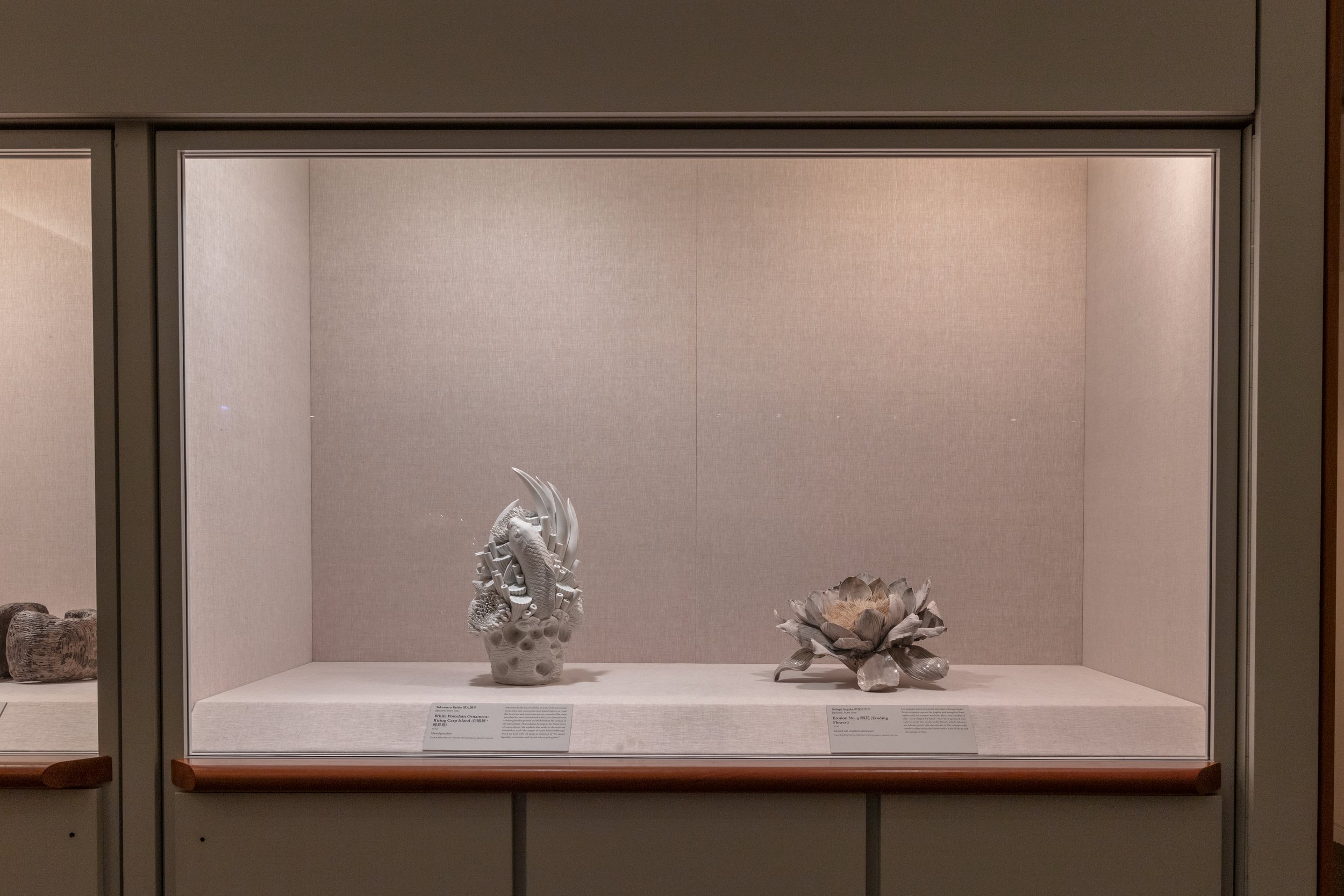
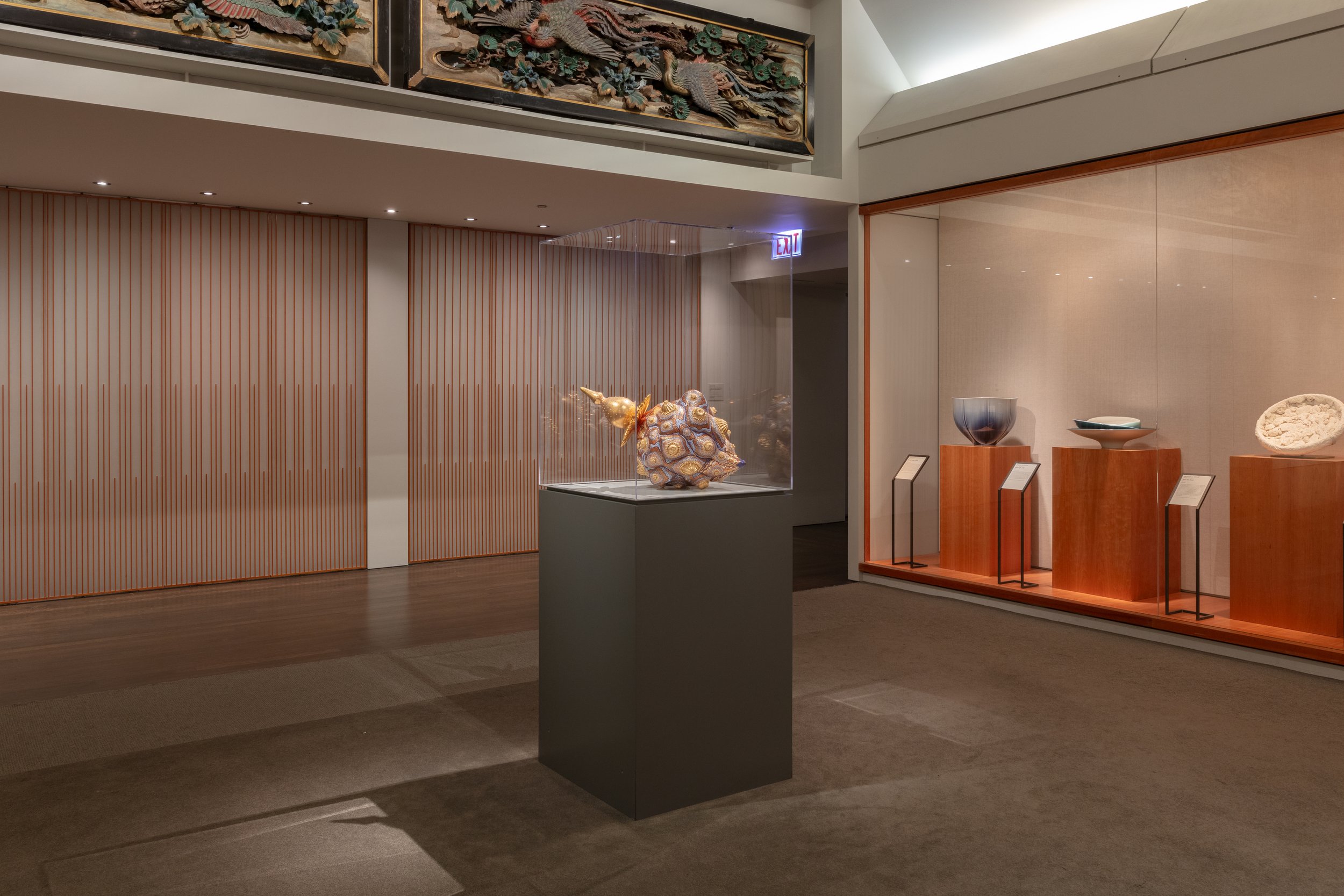

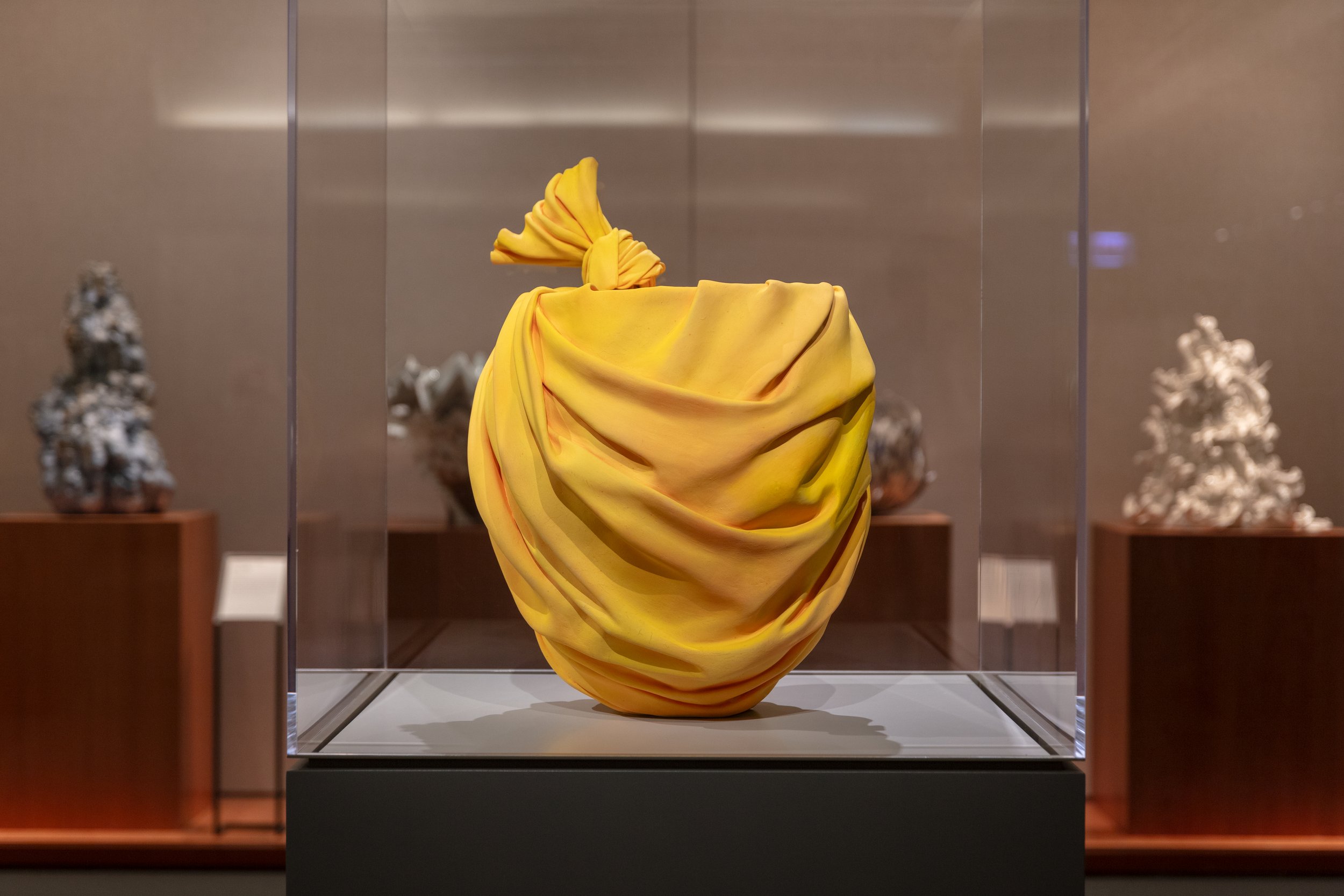

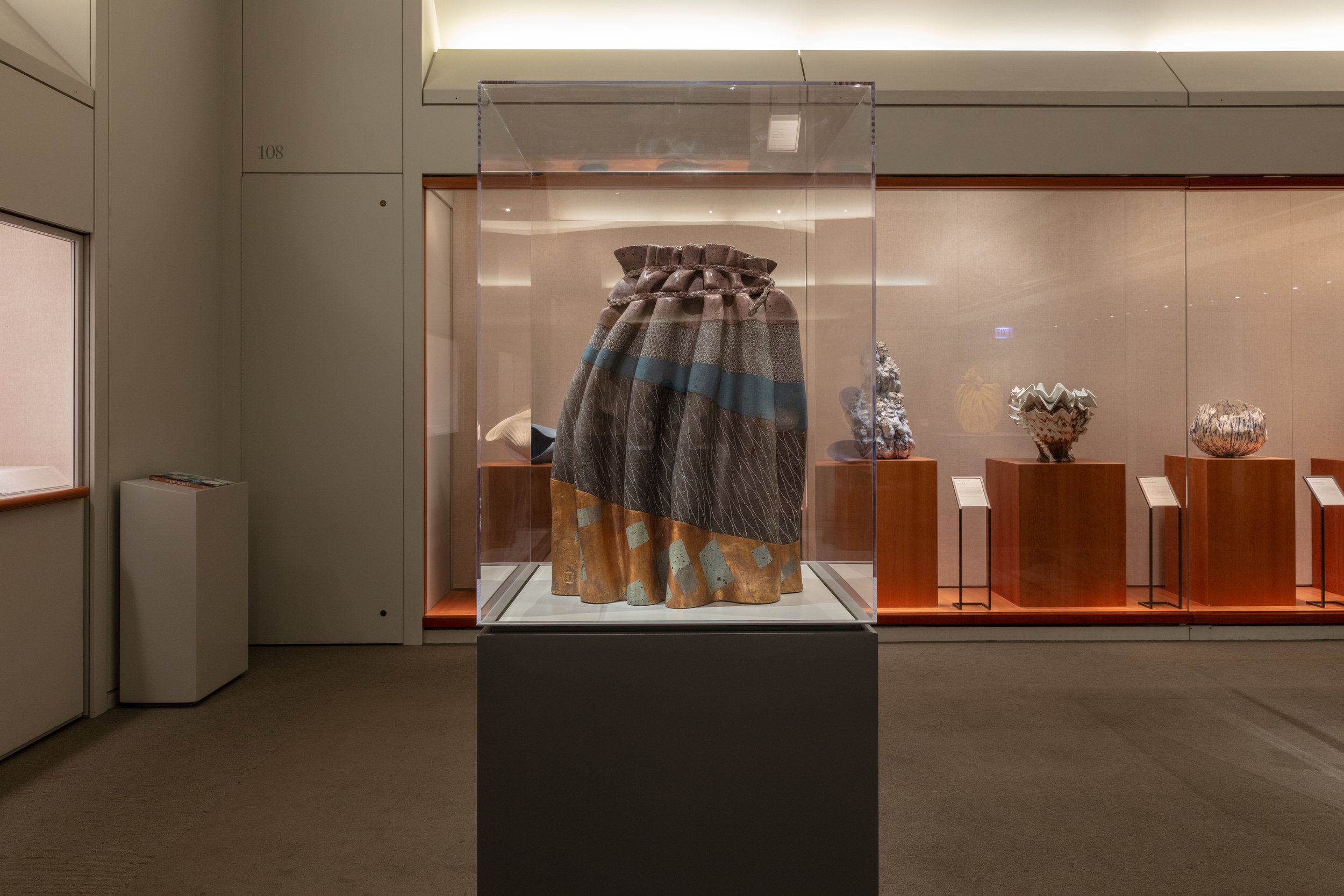
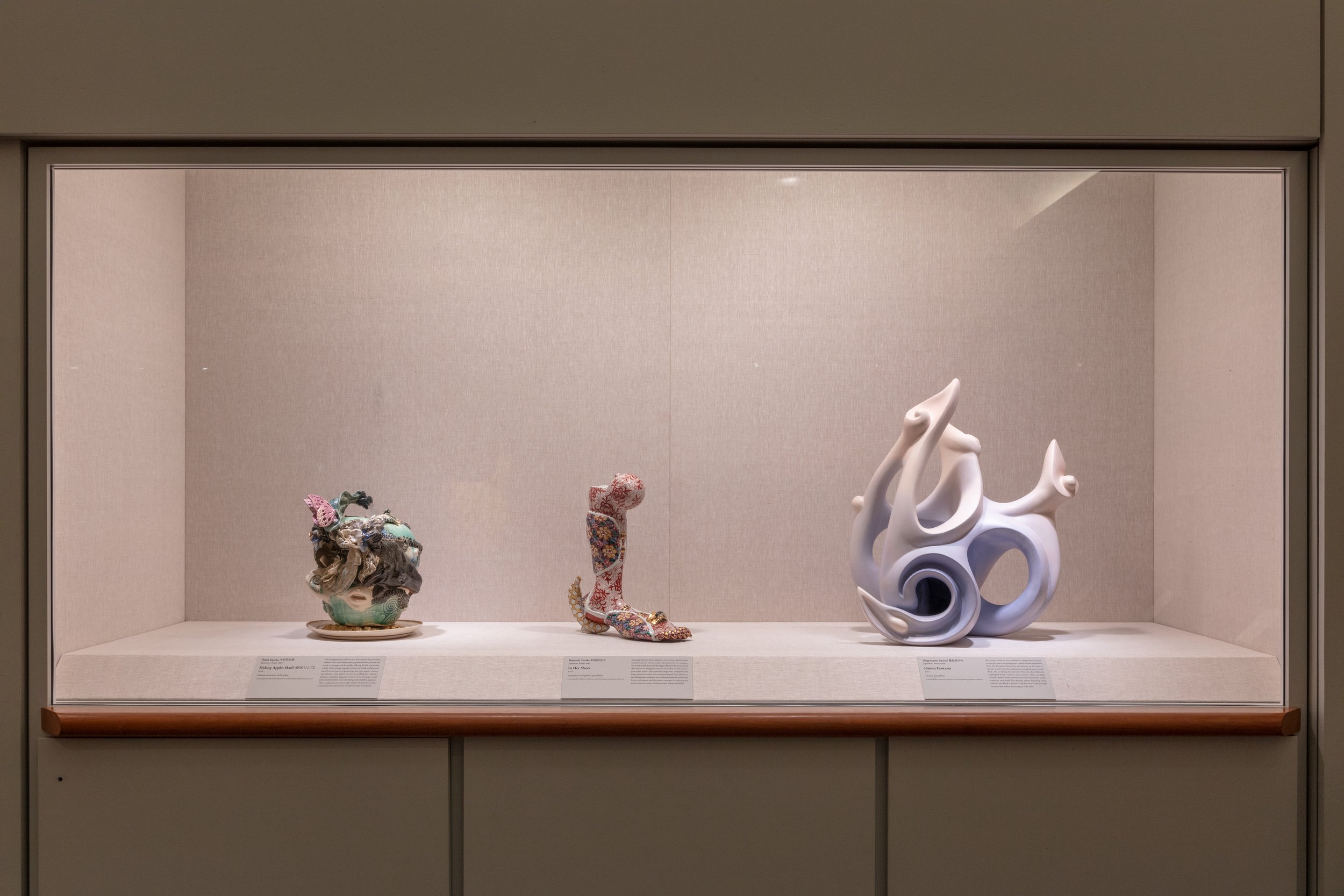
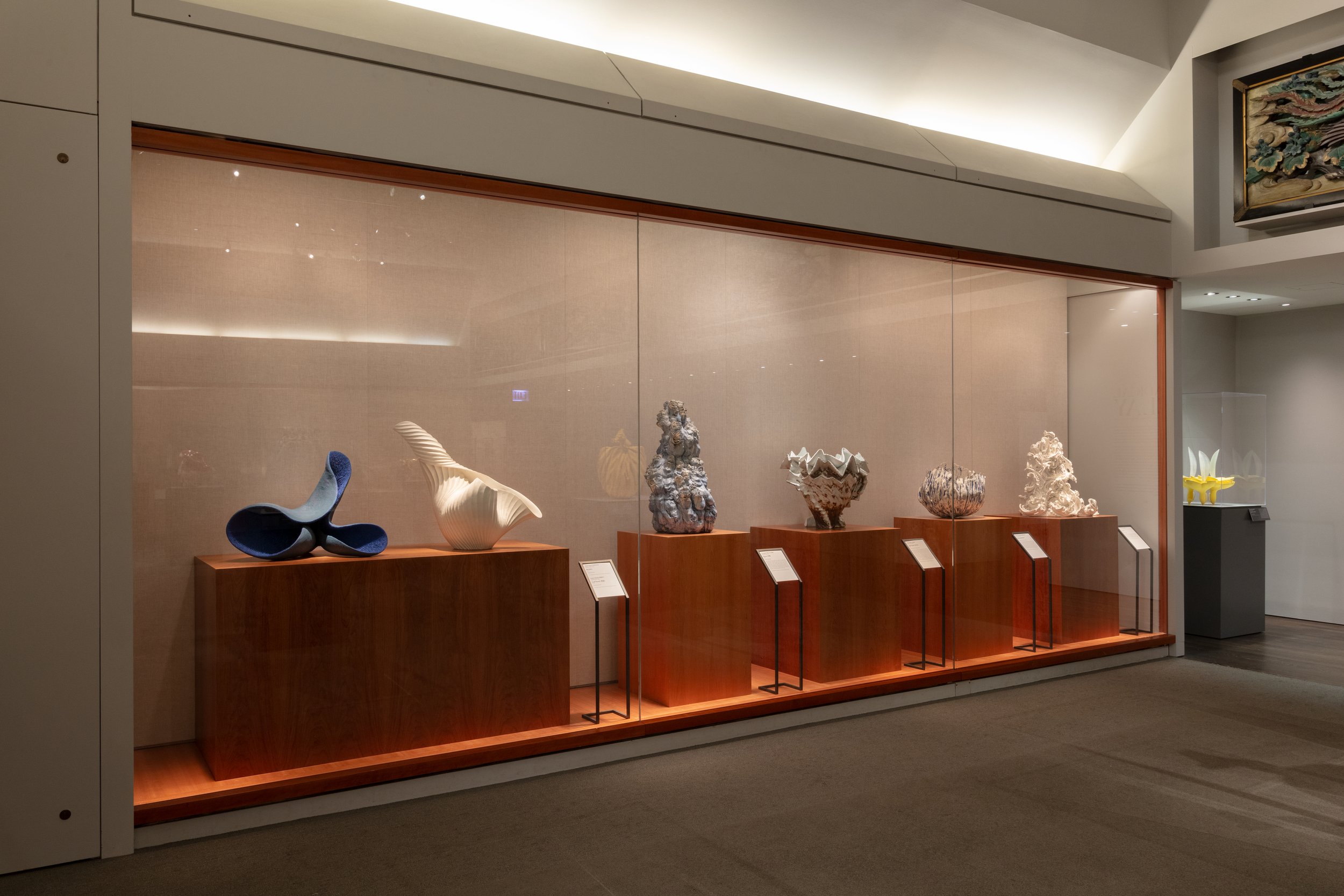

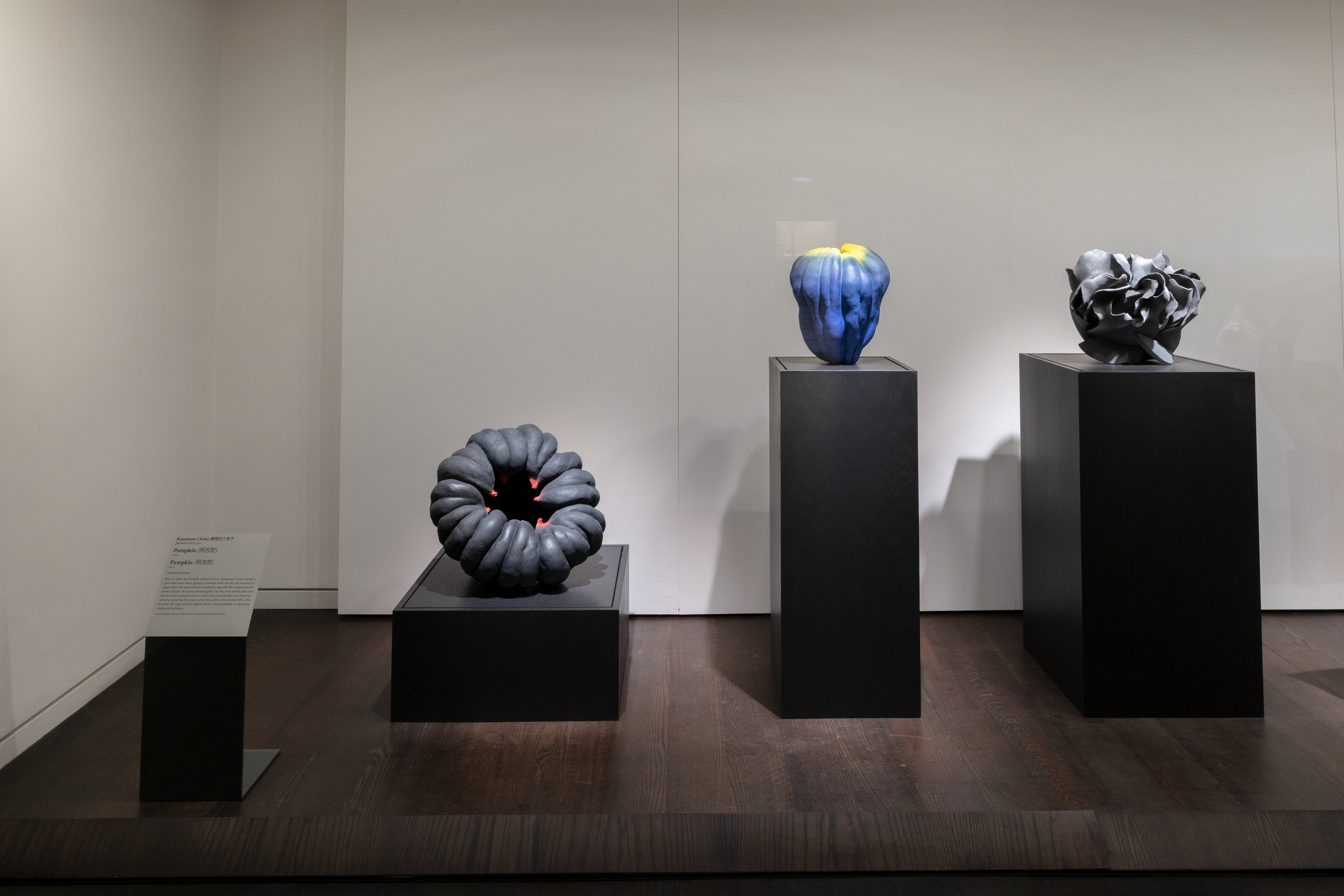
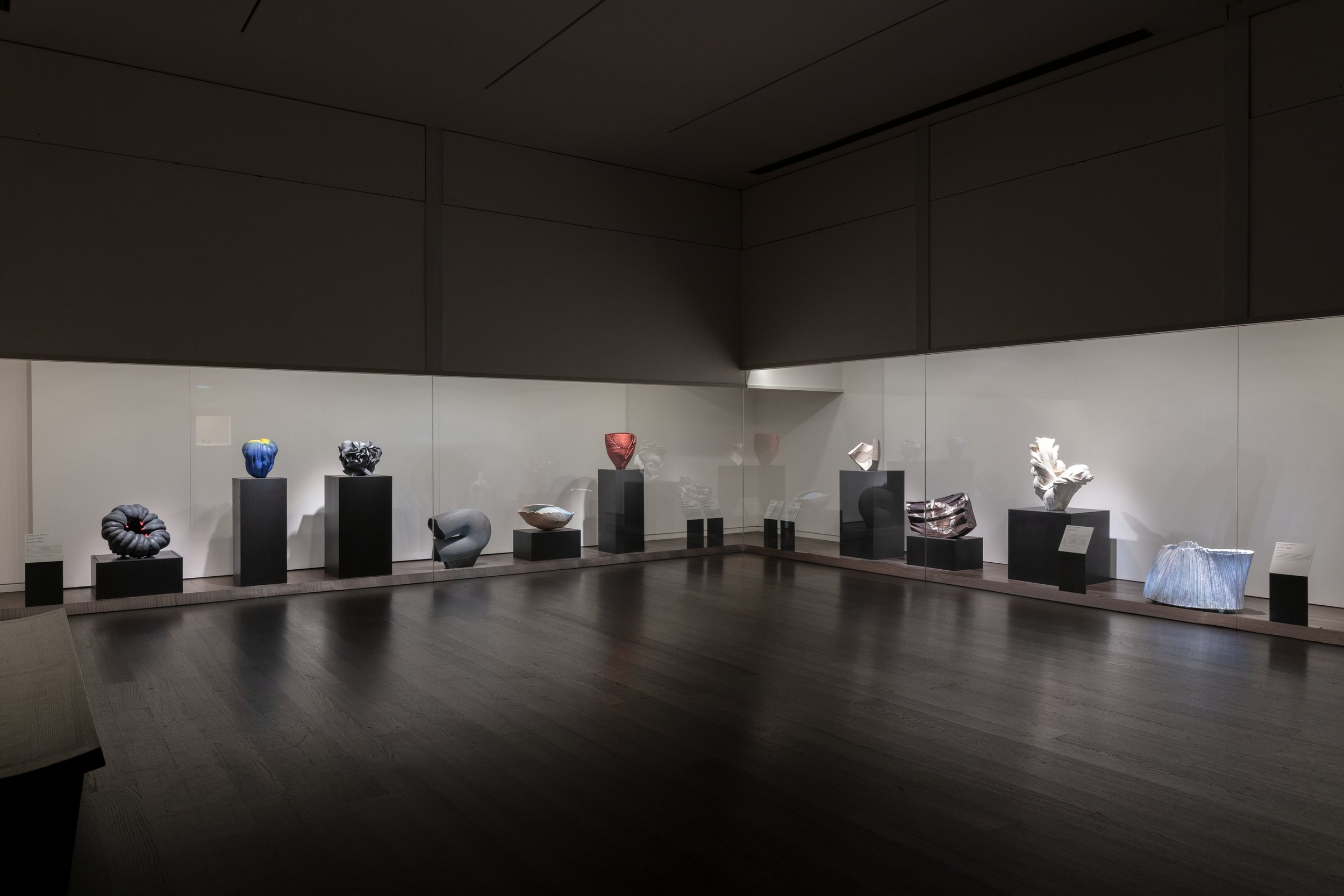
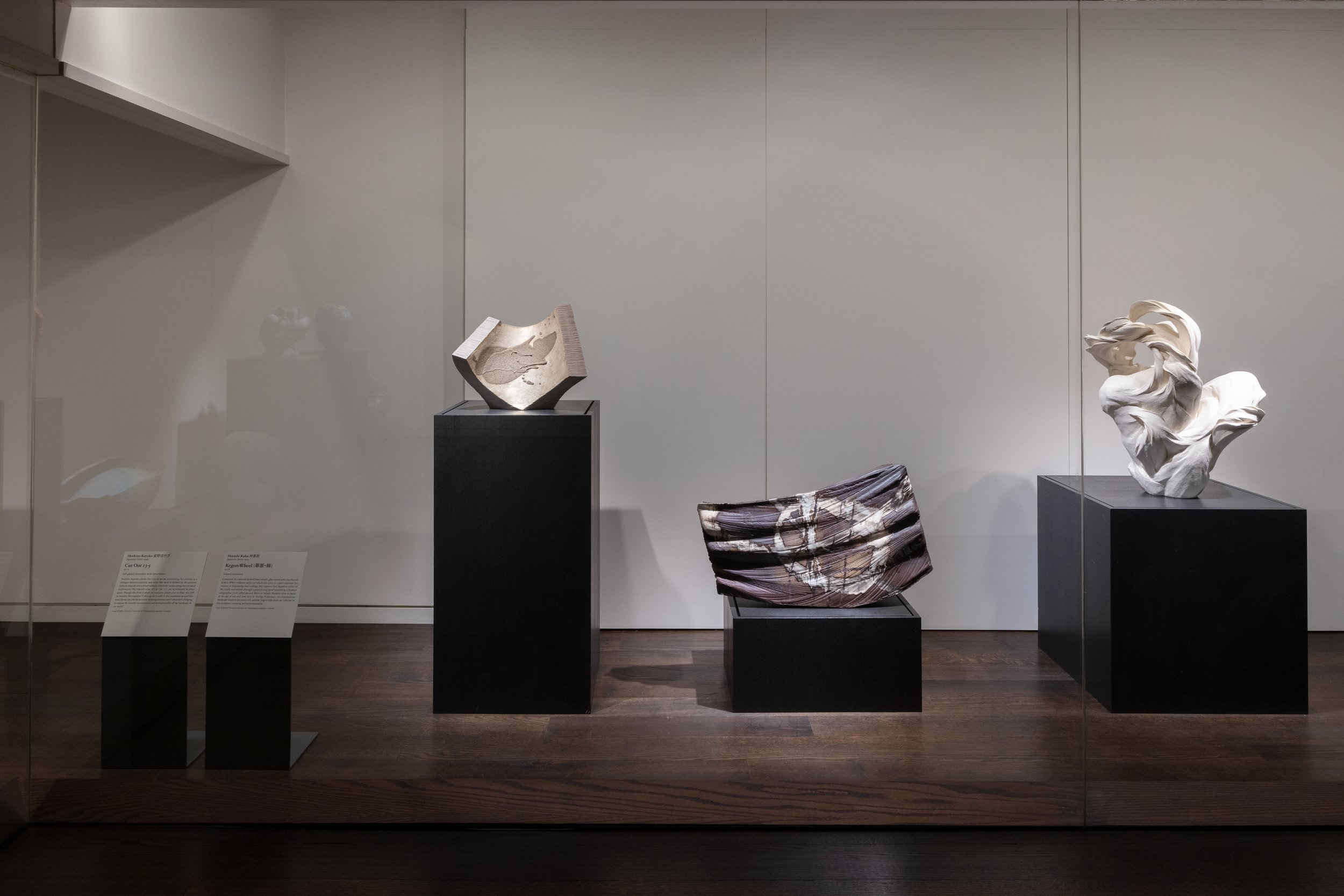
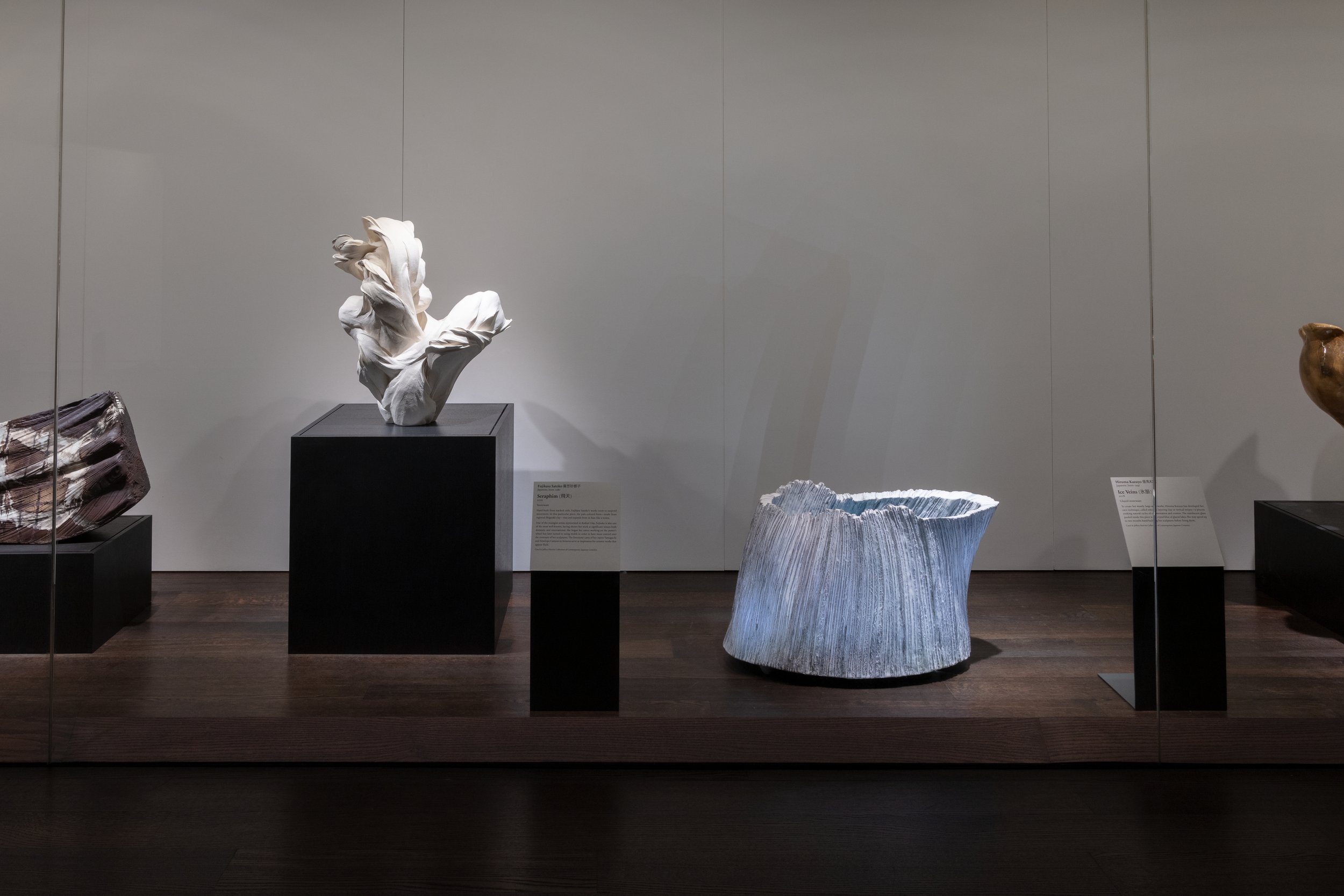
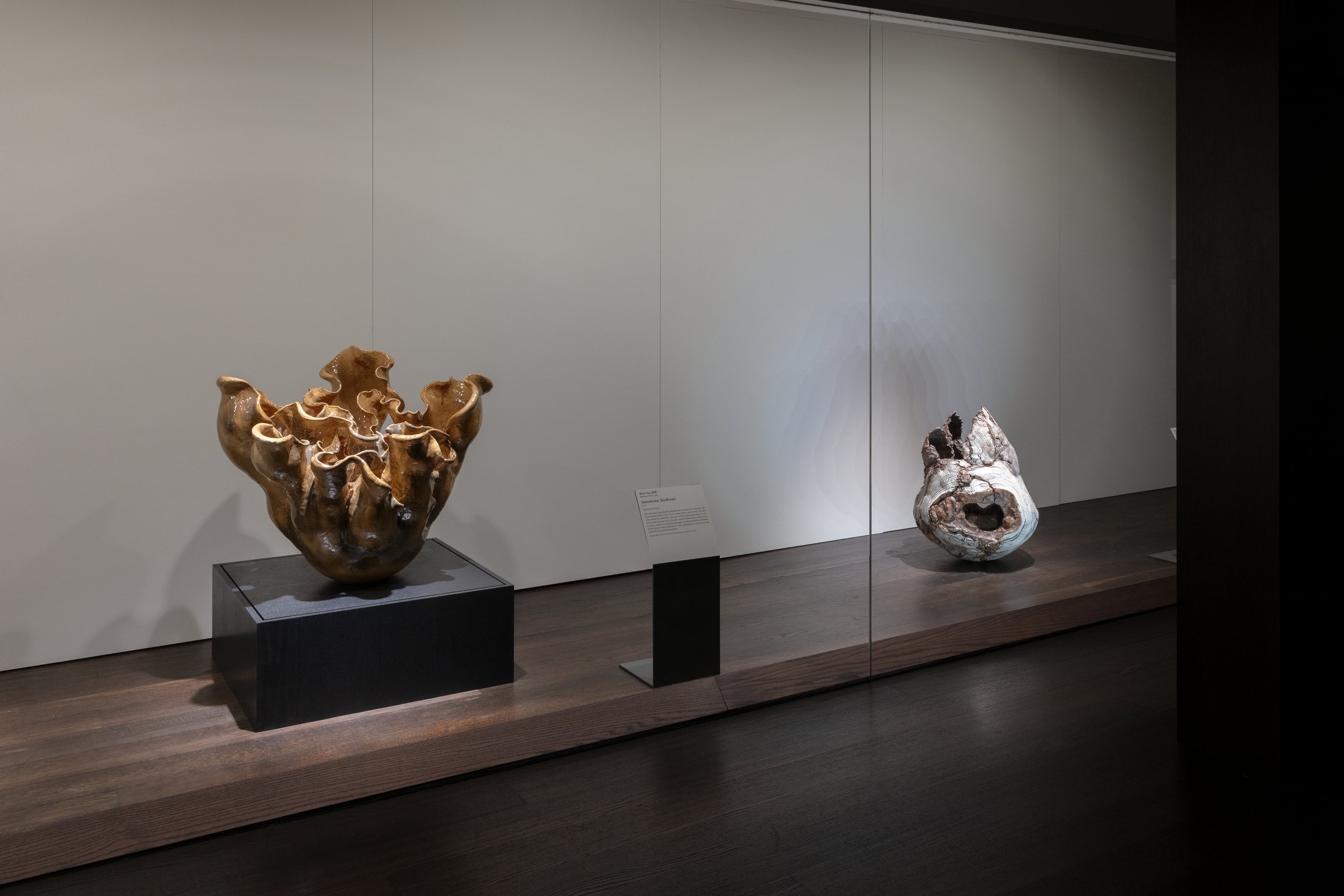
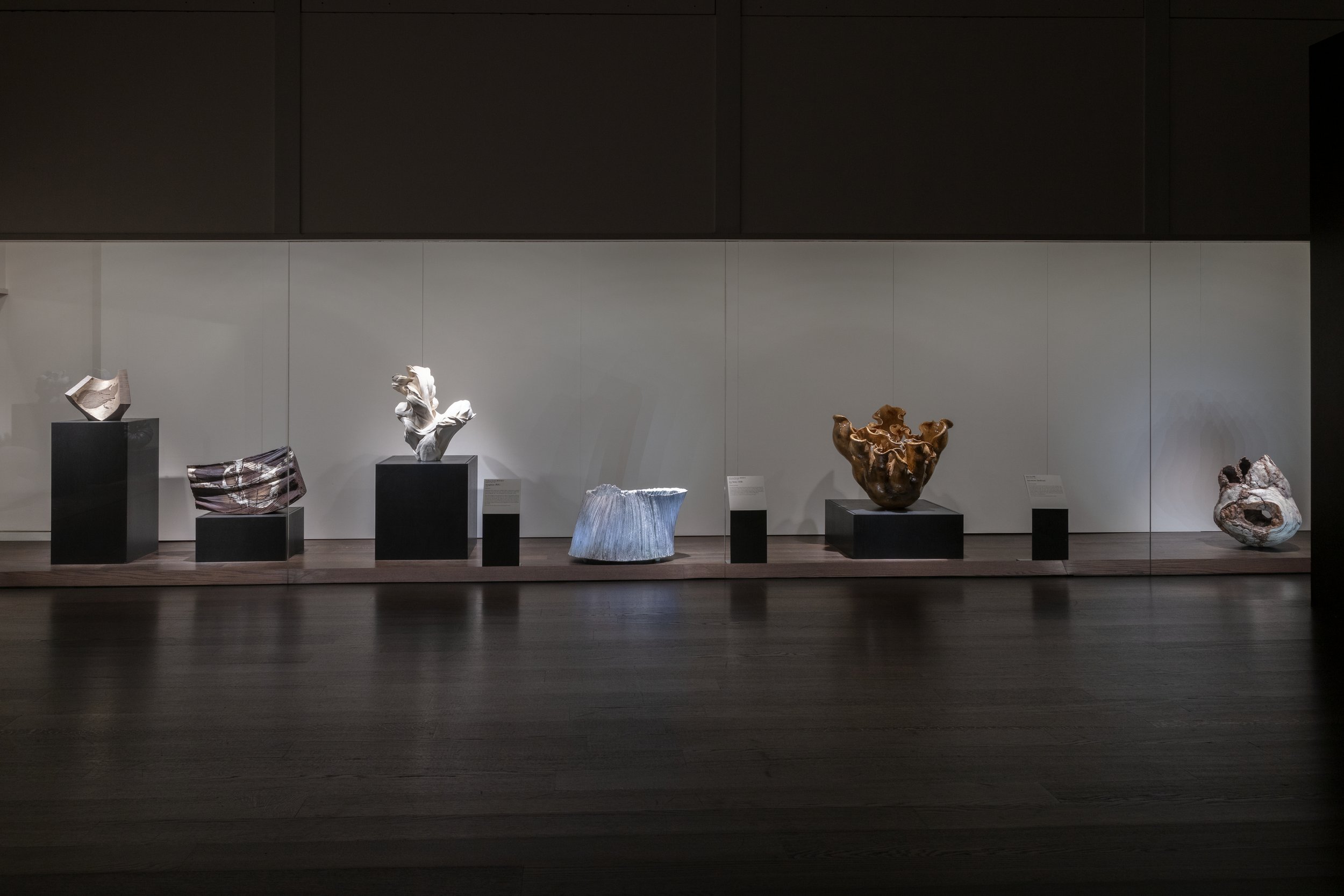
Installation view: Radical Clay: Contemporary Women Artists from Japan, 2024. The Art Institute of Chicago, Chicago. Courtesy of The Art Institute of Chicago
Radical Clay: Contemporary Women Artists from Japan is curated by the Art Institute of Chicago’s Janice Katz
SPONSORS
Lead support for Radical Clay: Contemporary Women Artists from Japan is generously provided by Carol & Jeffrey Horvitz.
Additional support is contributed by the Japan Foundation.
For more information about the exhibition and other exhibitions, please visit The Art Institute of Chicago's website here. The institute can also be found on Facebook, Instagram, and YouTube.
Ming Smith: Feeling the Future
Photograph by Chanell Stone, courtesy of Aperture
Charleston, S.C. – The International African American Museum (IAAM) will house a special exhibition by Ming Smith this winter and early spring. Ming Smith: Feeling the Future opened on January 31 and will be on view through April 28, 2024. A reception was held on Tuesday, January 30, at IAAM, 14 Wharfside Street, in downtown Charleston; guests had the opportunity to engage with solo artist Ming Smith about her career and legacy. They also had the chance to partake in a self-guided tour of the entire museum from 7:00 p.m. to 9:00 p.m.
Amen Corner Sisters (Harlem, New York) by Ming Smith courtesy of IAAM
Ming Smith: Feeling the Future explores the artist’s unparalleled and under-recognized career from the early 1970s through the present. Smith’s first solo exhibition at a major institution is traveling from its debut site, the Contemporary Art Museum (CAM) of Houston. The collection encompasses a multitude of artistic expressions that represent her vibrant and multi-layered practice, which is grounded in portraiture, as it amplifies the heartbeat of Black life in the United States. Drawn from the full complexity of Smith’s oeuvre, Feeling the Future places works from the artist’s five decades of creation in conversation with one another while it embraces the cultural movements she witnessed and participated in. Exploring themes such as Afrofuturism, Black cultural expression, representation, and social examination, the exhibition offers a guided tour into unperceived moments of life as captured by one of the most profoundly gifted artists of her generation.
Chicago Art Ensemble by Ming Smith, courtesy of IAAM.
“Ming Smith is one of the most important photographers of our time. As the first woman to join Kamoinge – a groundbreaking Black photography collective – she has broken barriers that live at the intersection of race and gender. Her work can be found at the most significant institutions in the world, from The Whitney to the Schomburg, and has been shown at many more, including Tate Modern and MoMA. Still, few of us are yet to know her name, though many know her work. Her iconic images of artists like Tina Turner and Nina Simone have come across our timelines and, for a moment, stopped us in time. That’s how remarkable her lens is as it captures the soul of the moment, the movement, and the person. With this solo exhibition, traveling from CAM, we will have the opportunity to not only discover more of her work, but through the work, we will get to meet and to know Ming Smith,” noted Malika Pryor, chief engagement and learning officer at IAAM.
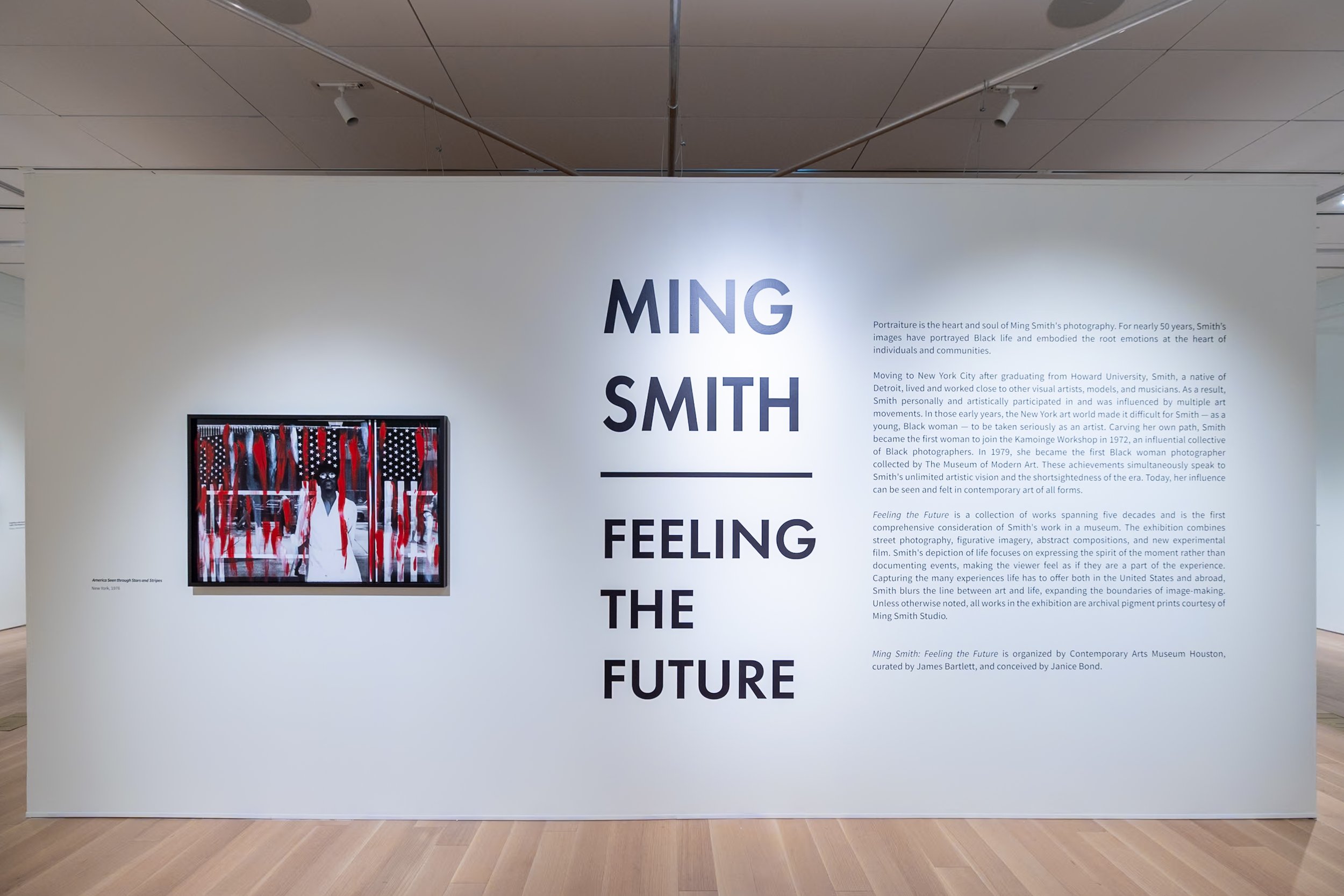

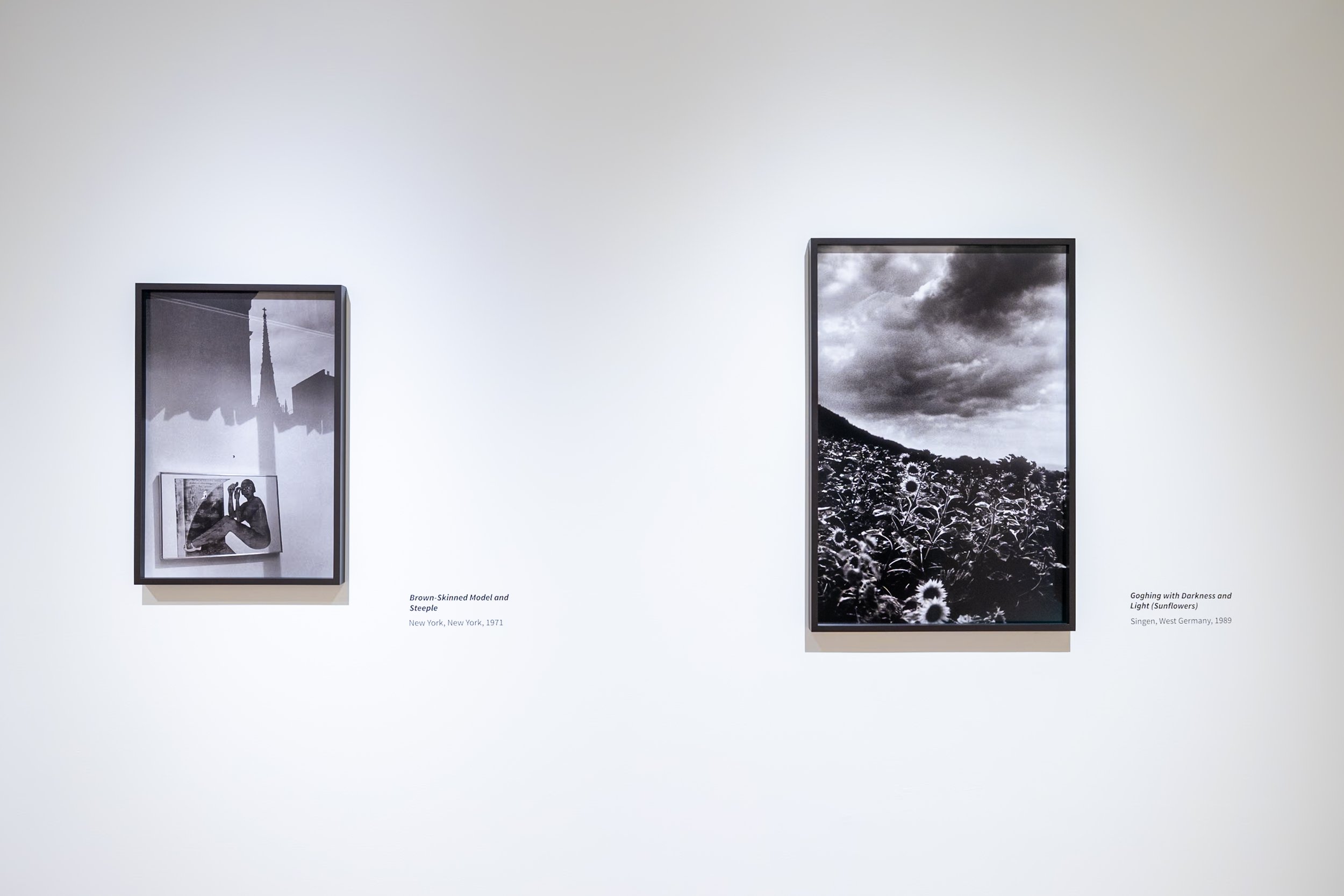
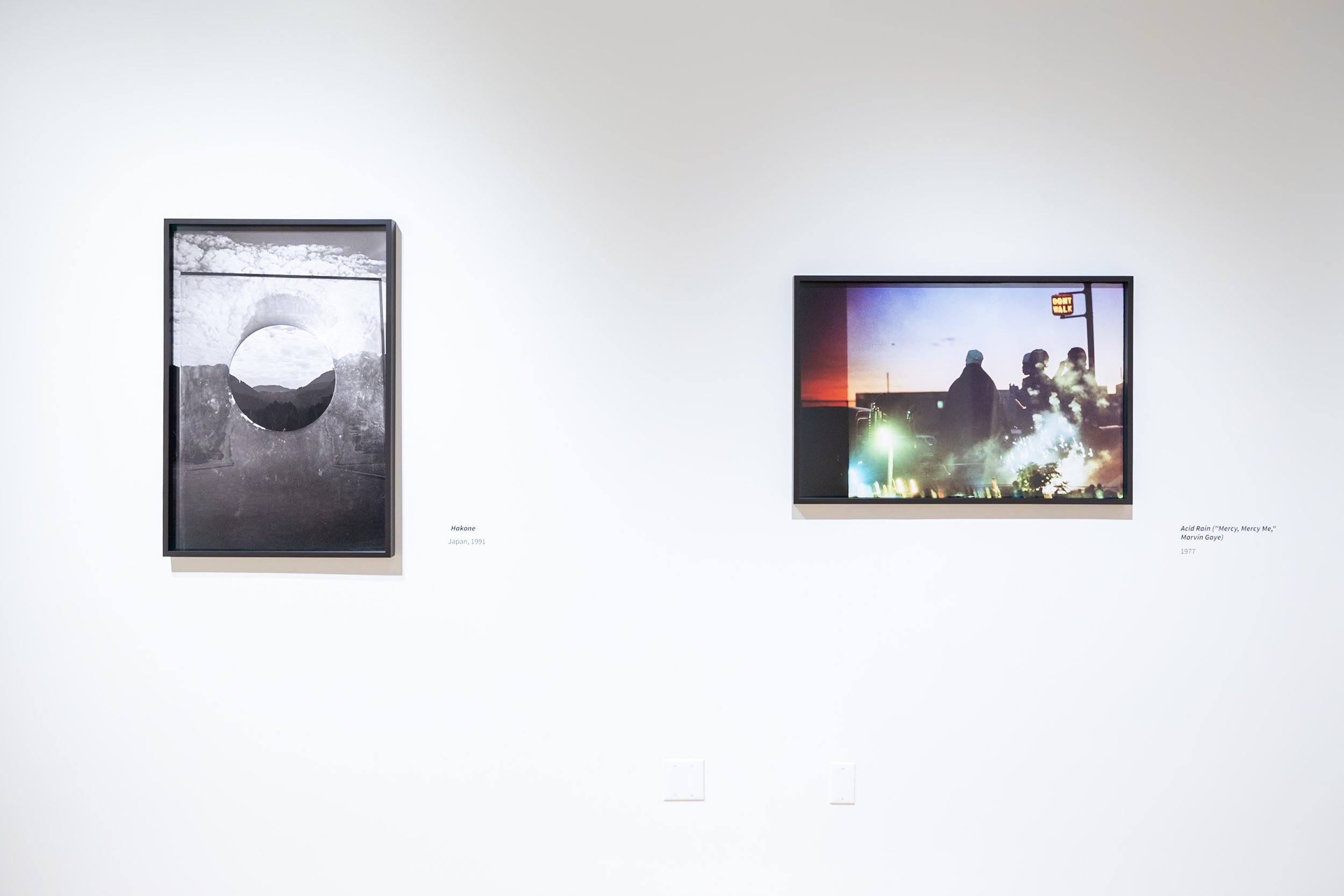

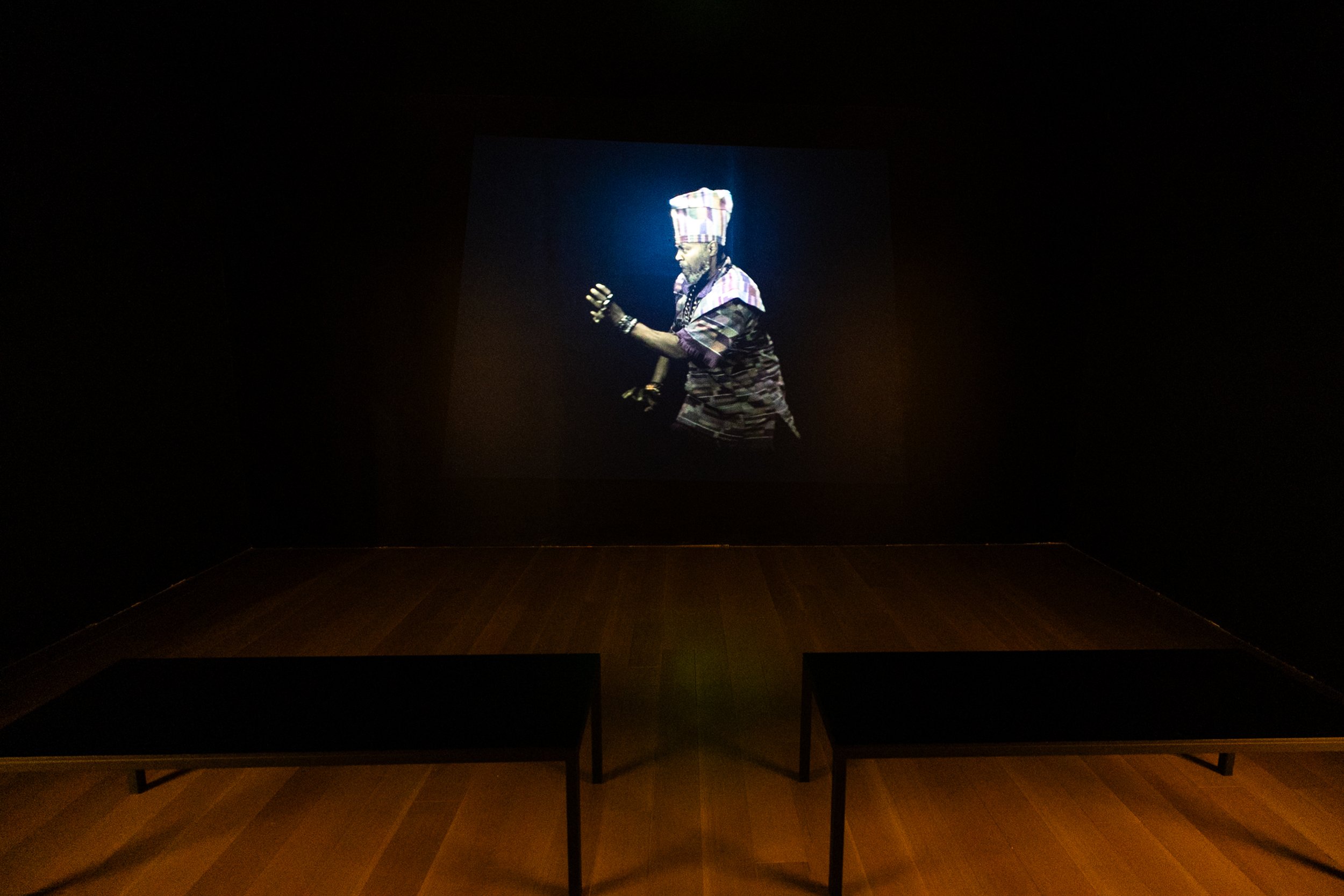
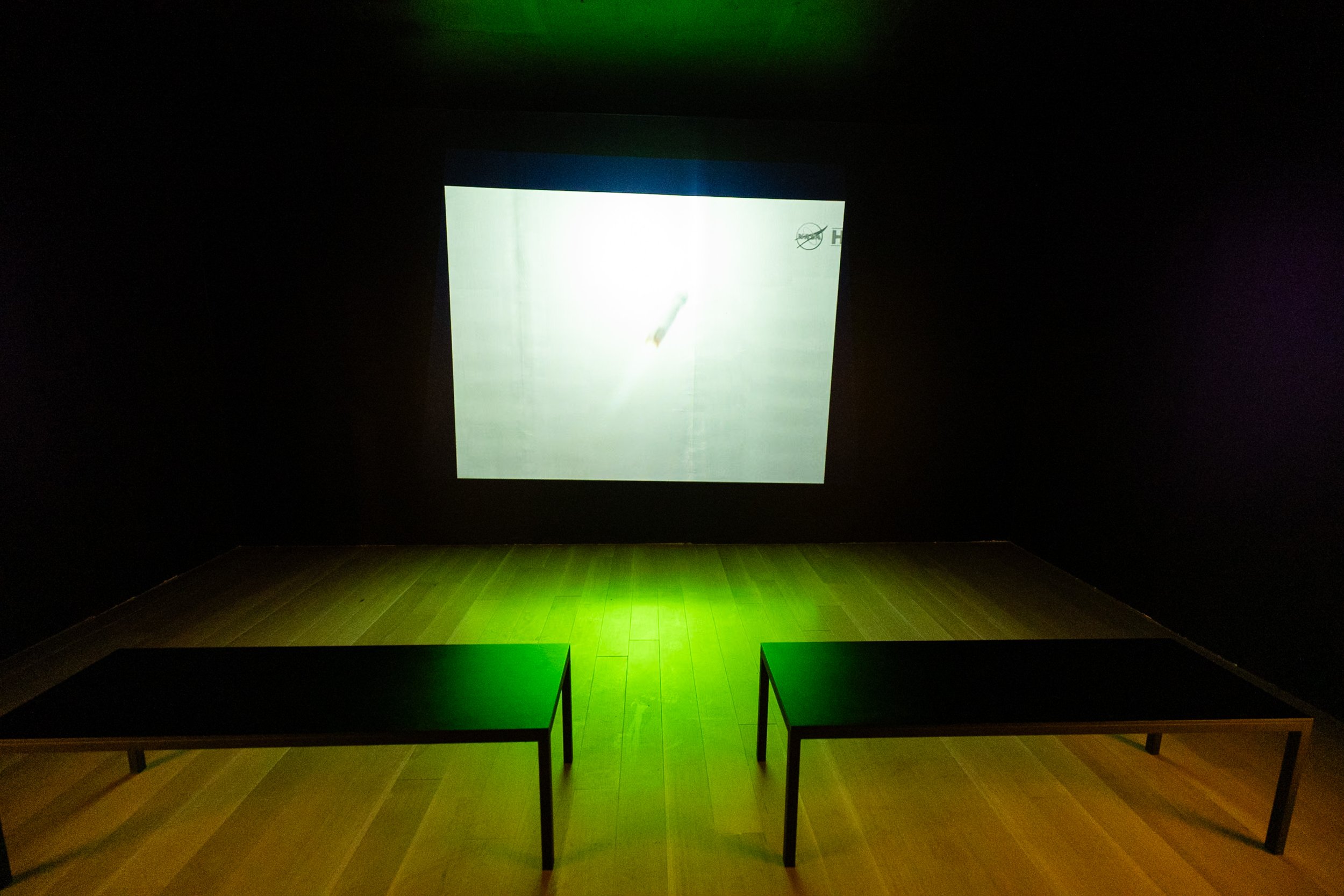
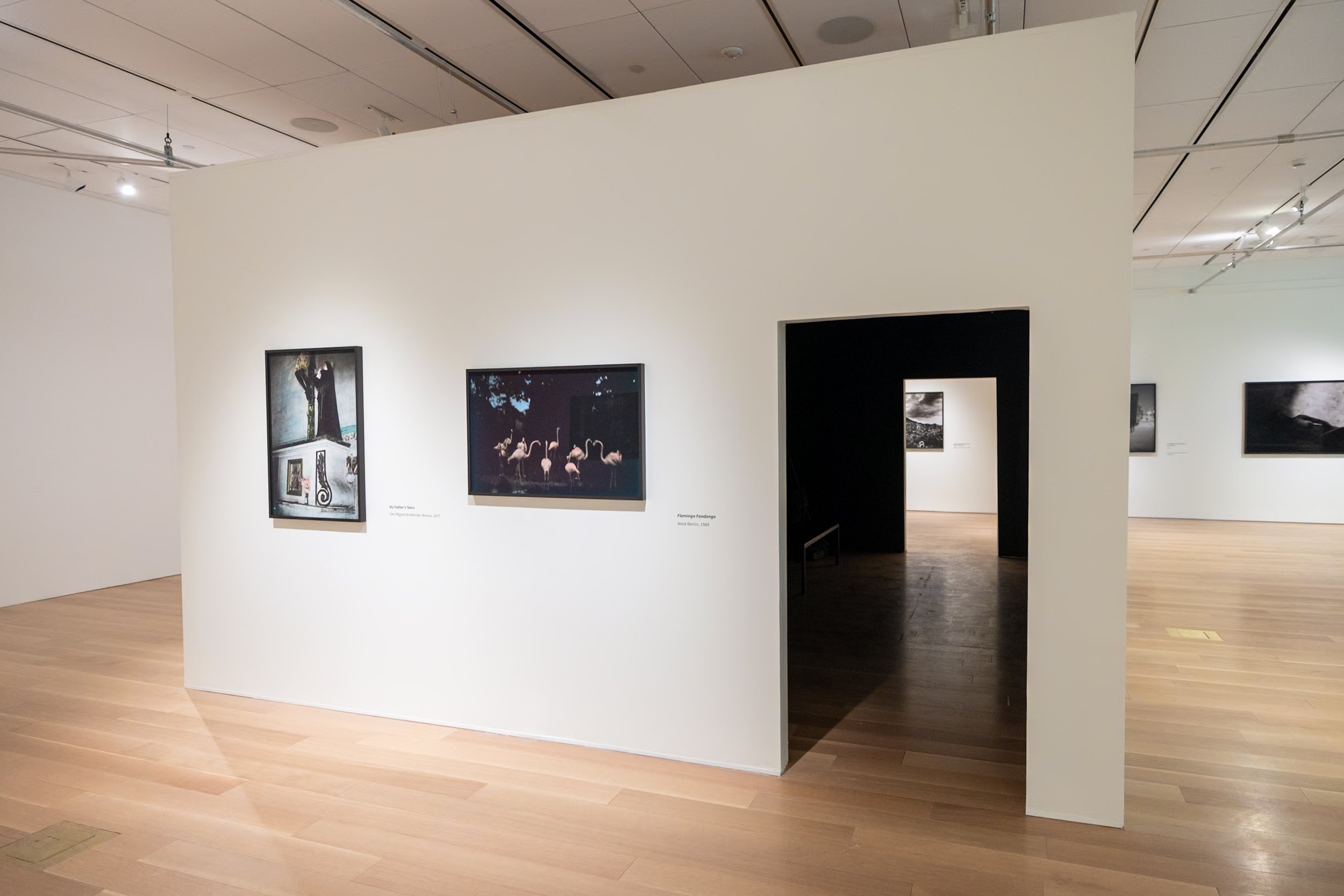
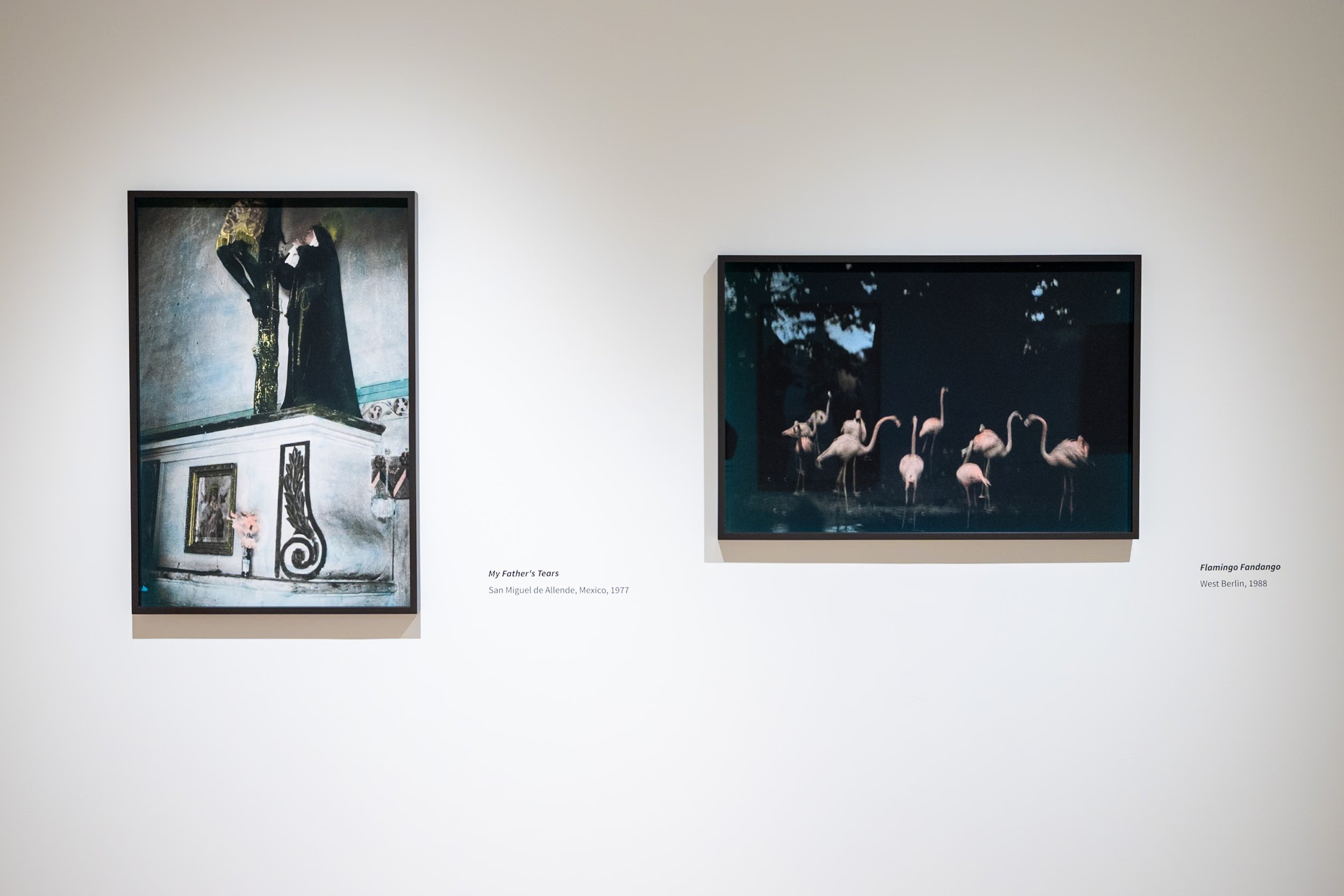
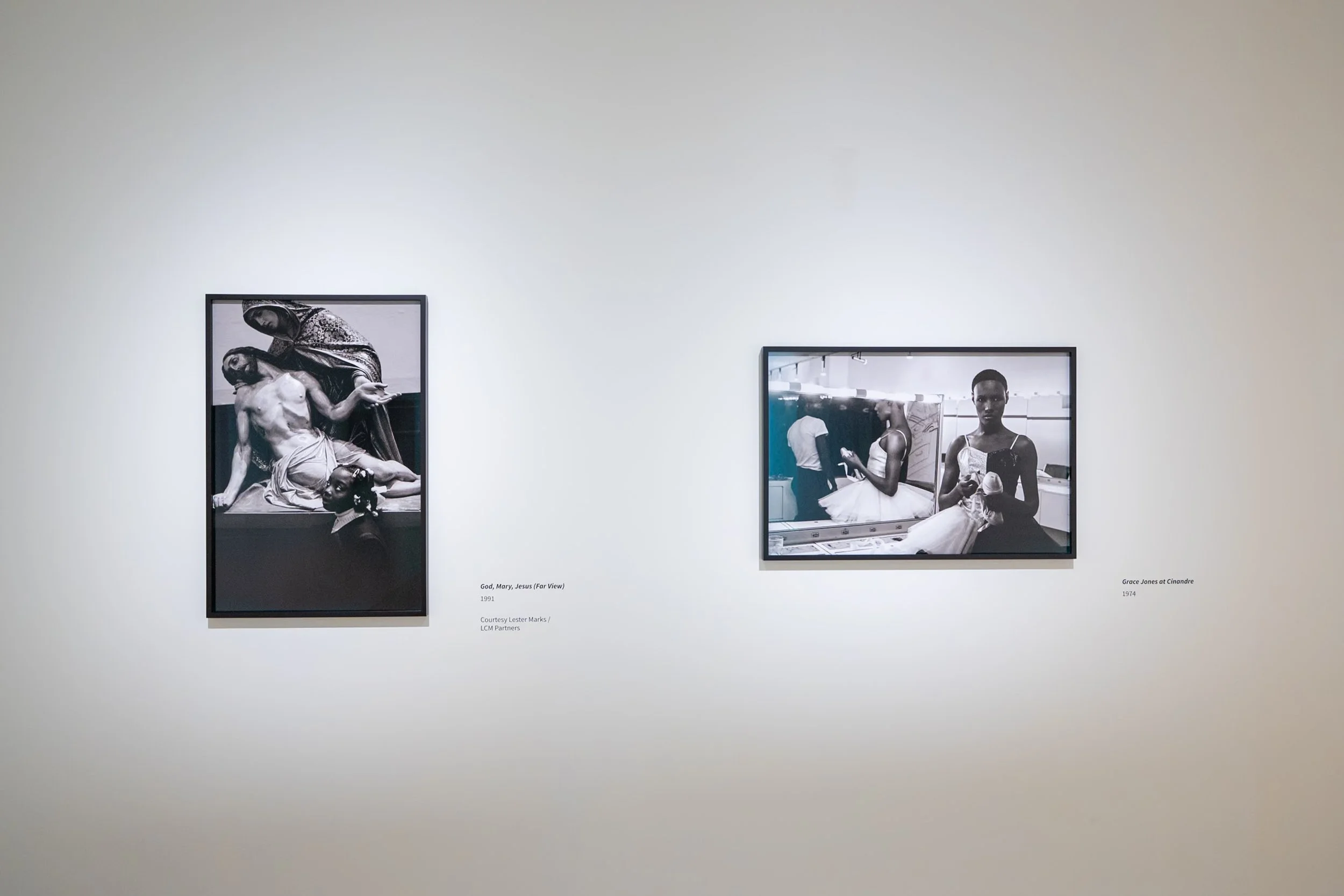
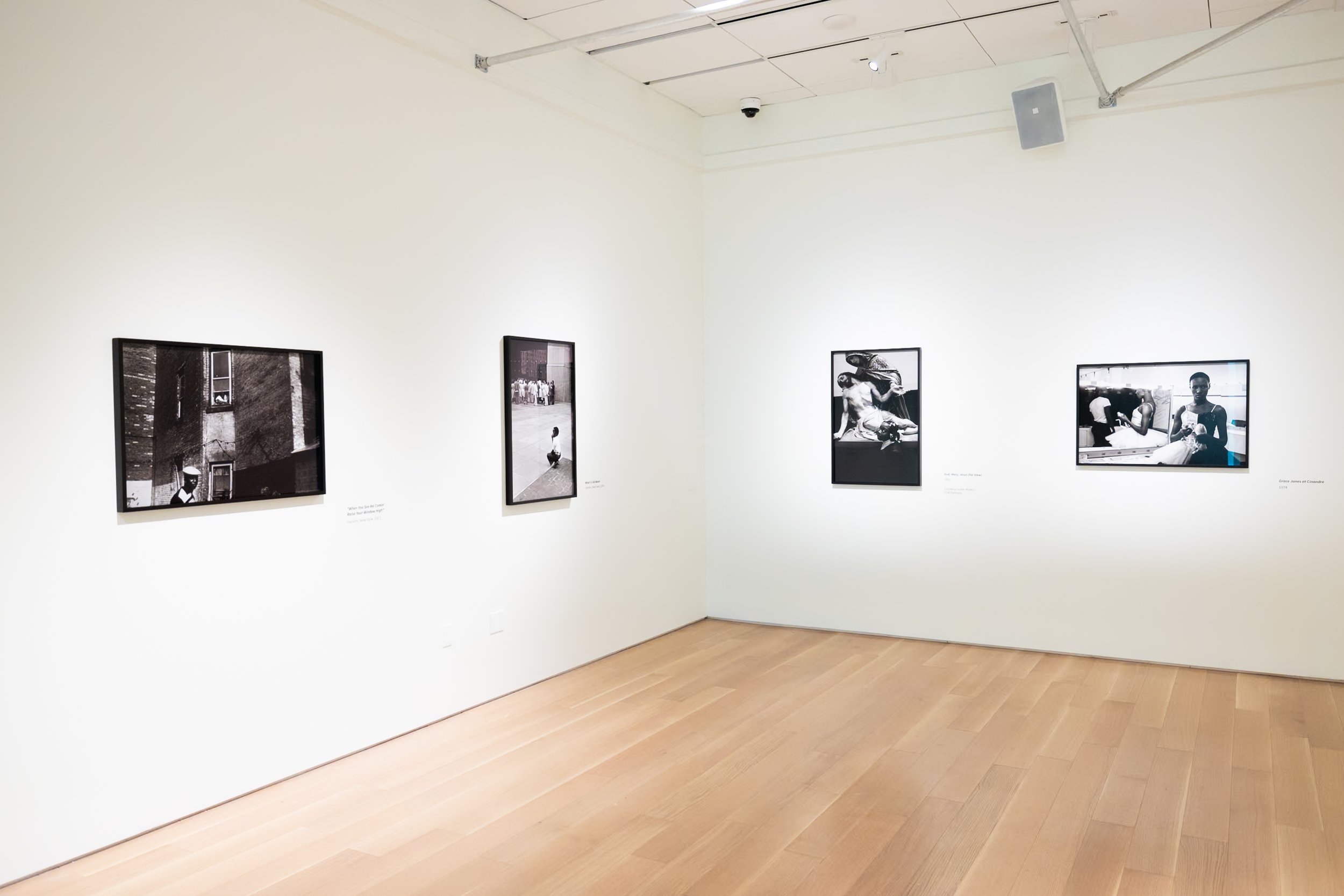
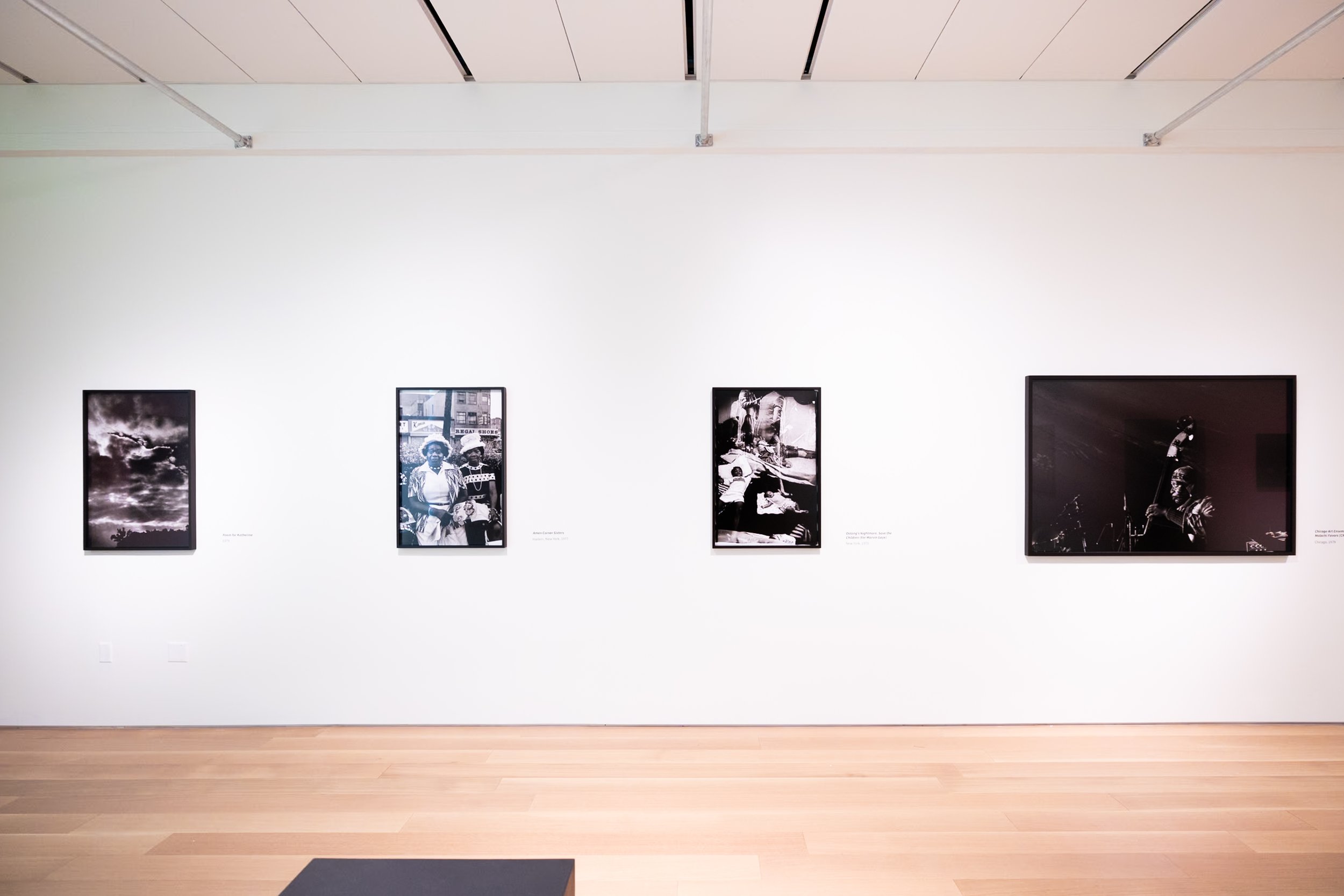
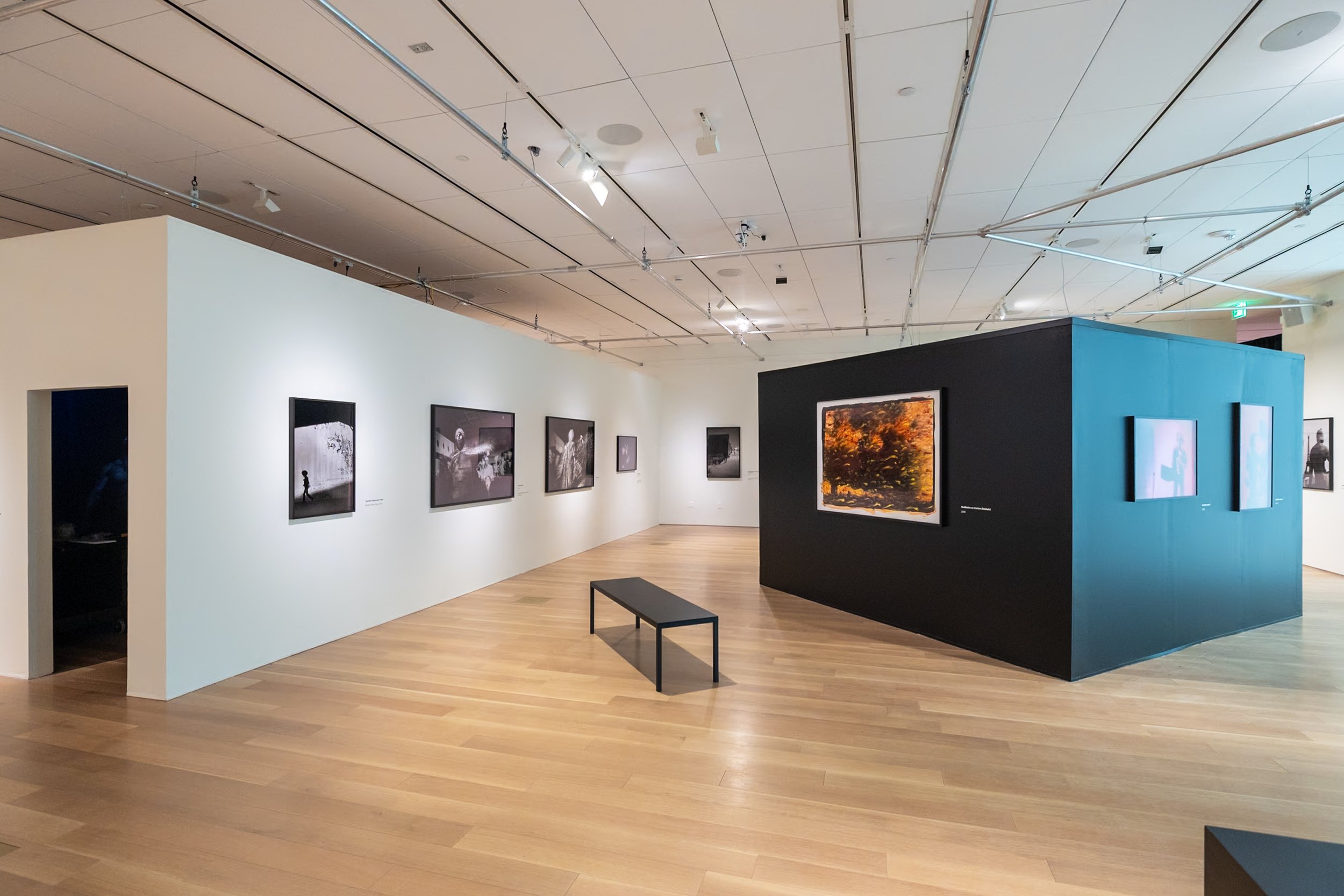
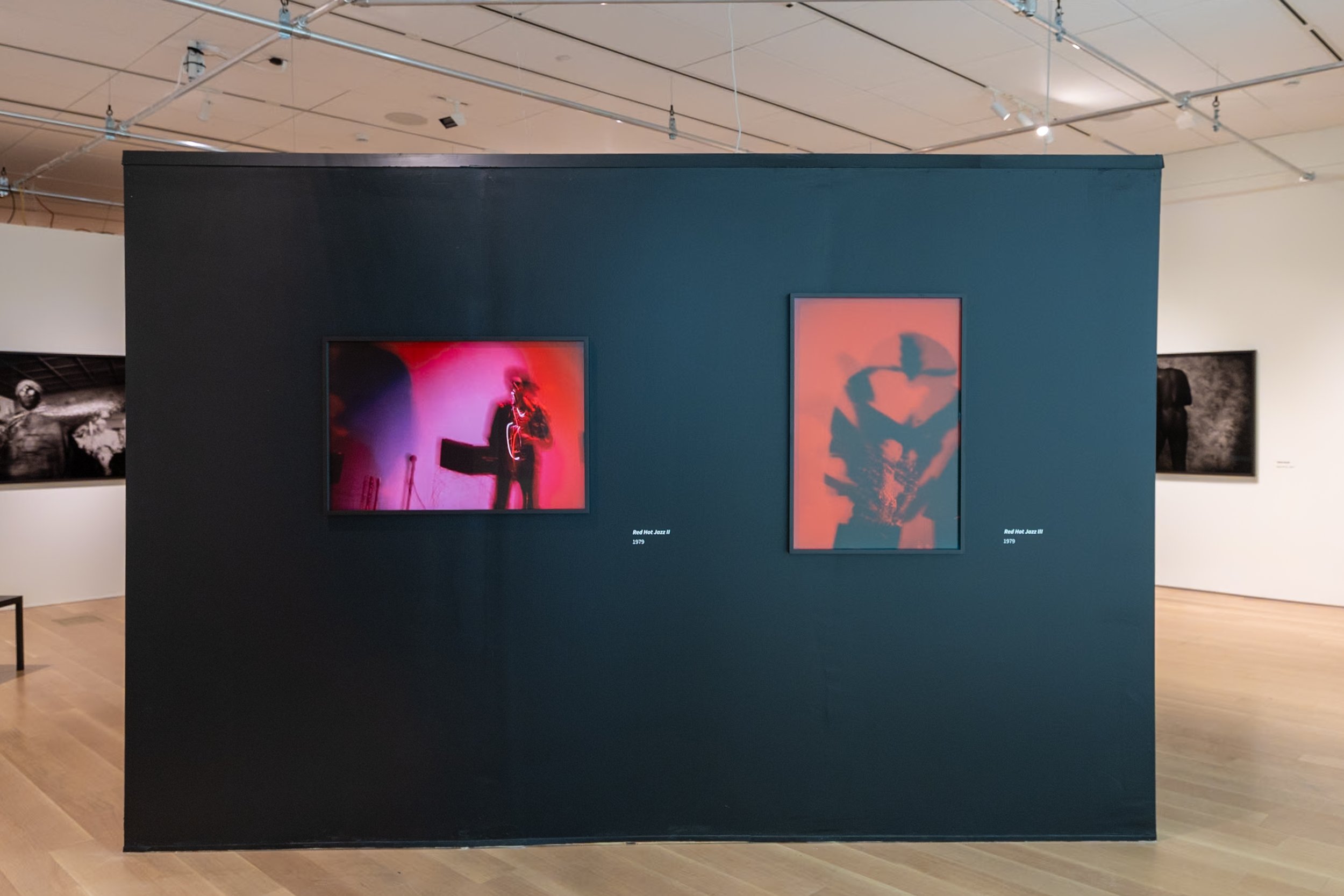
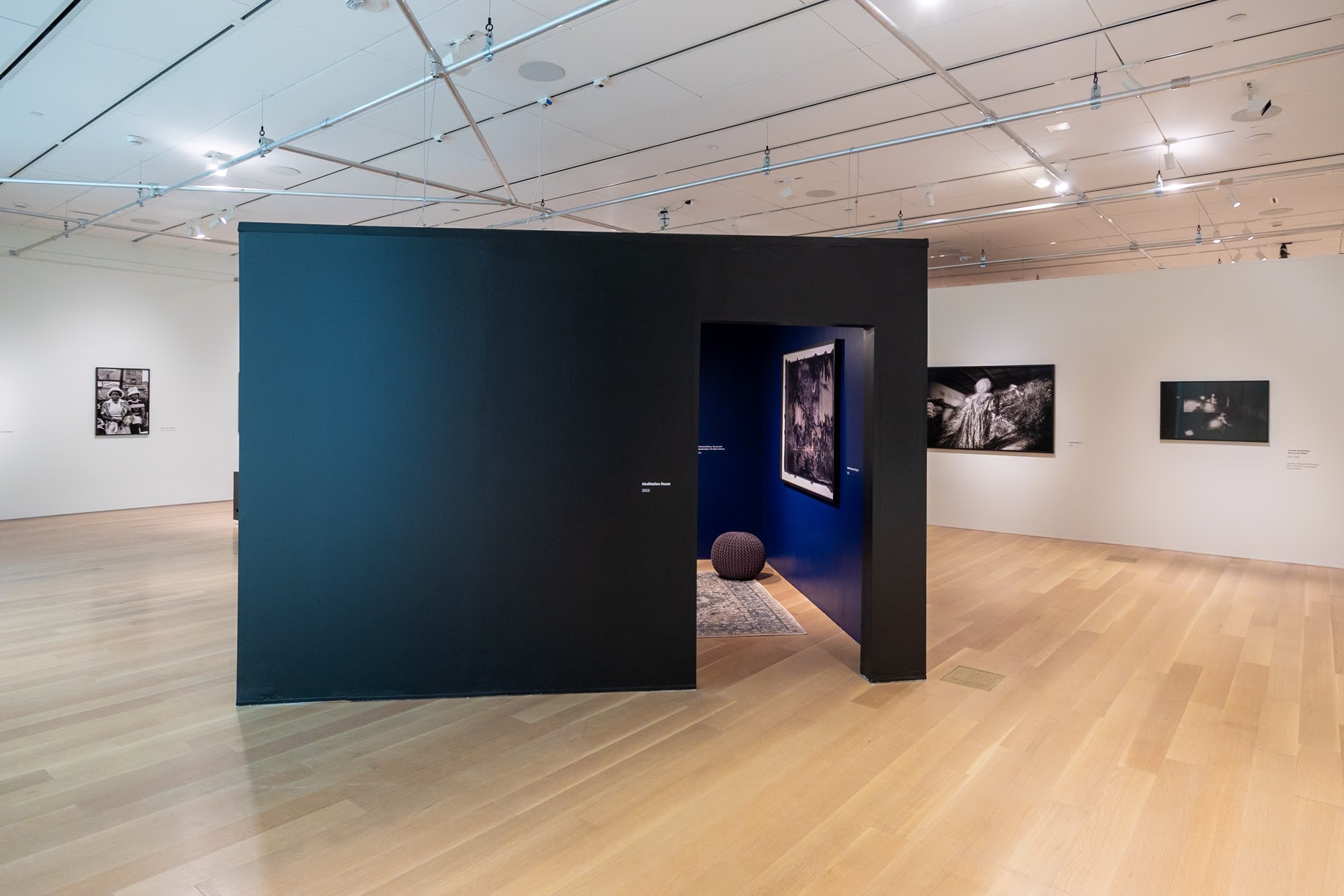
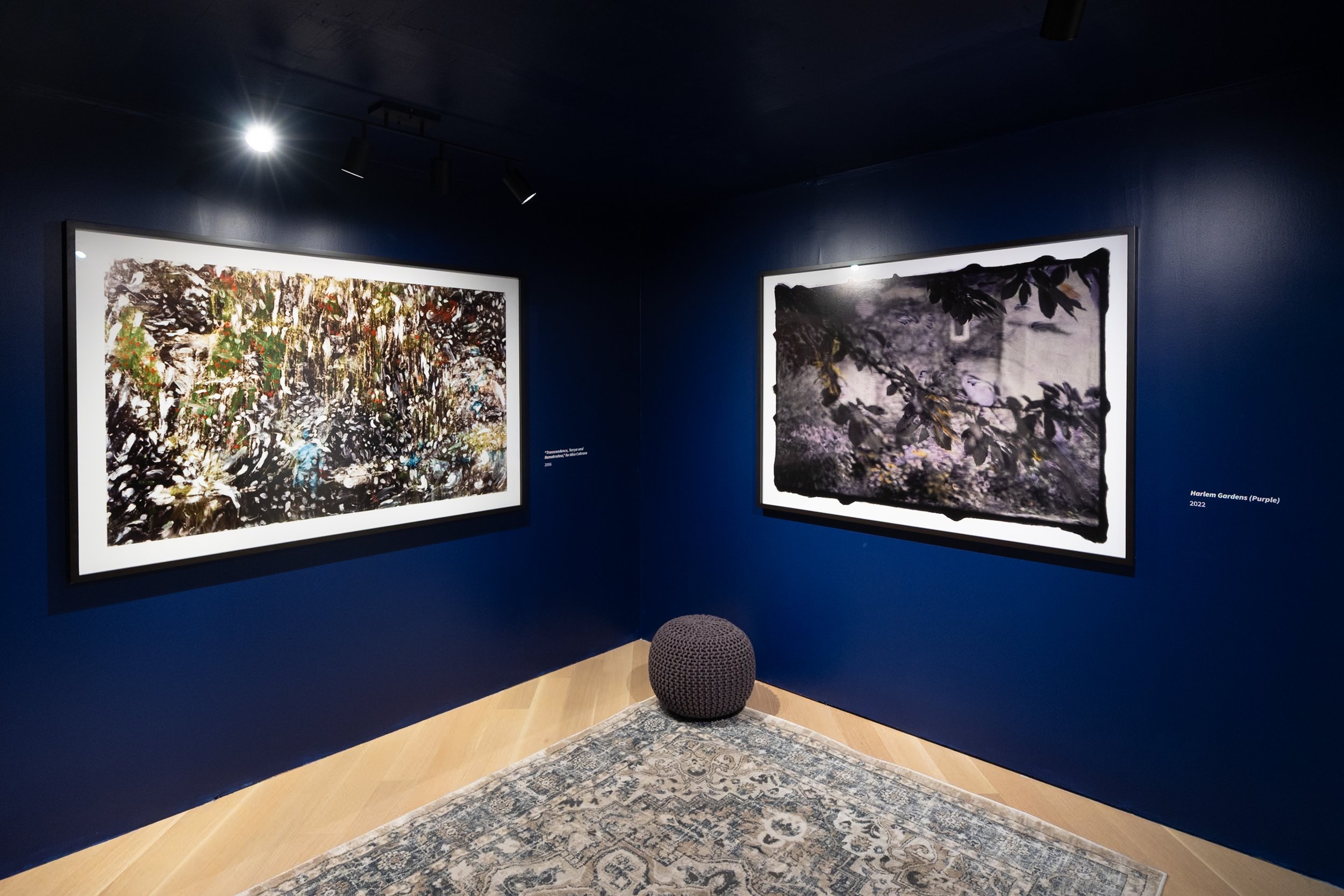
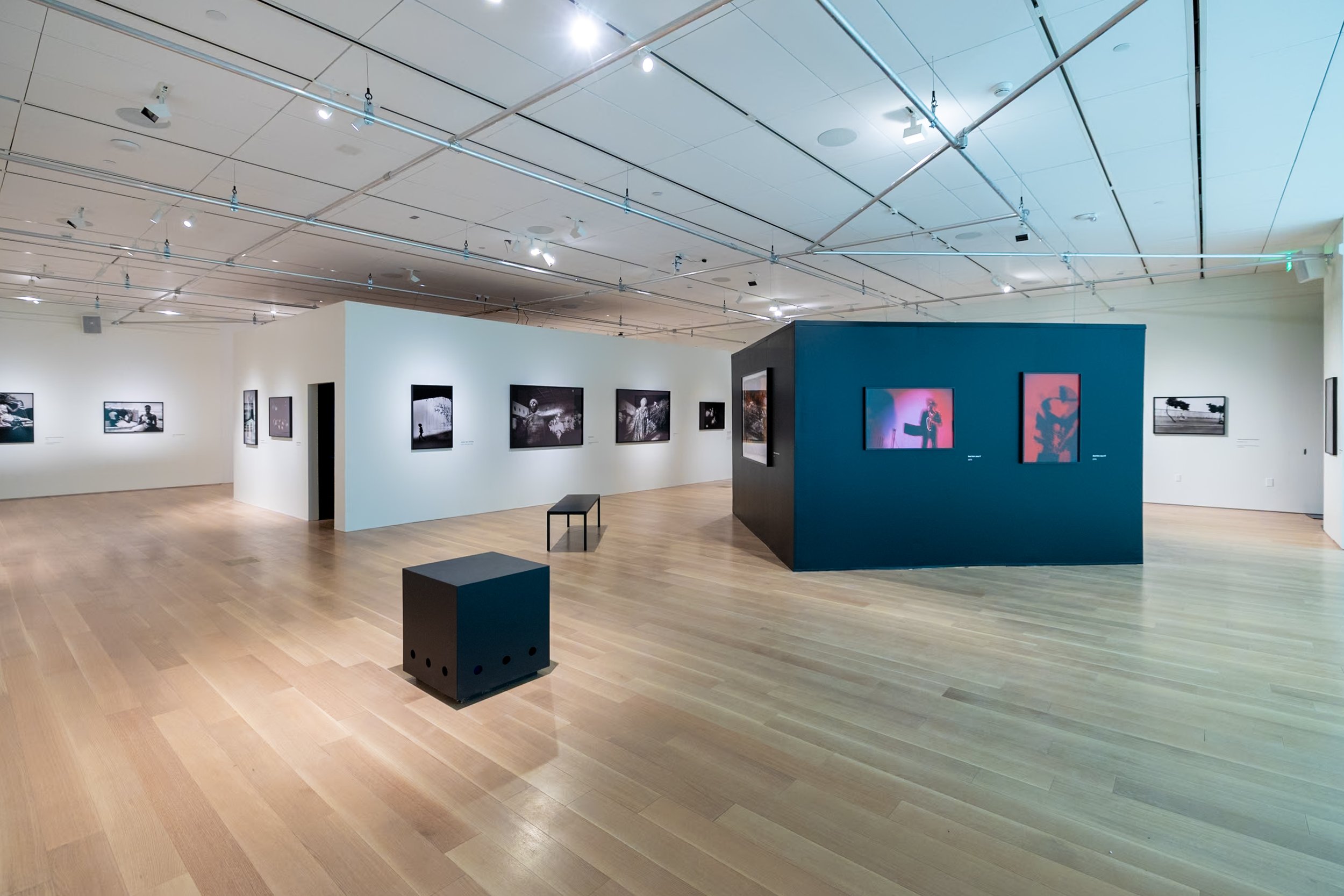
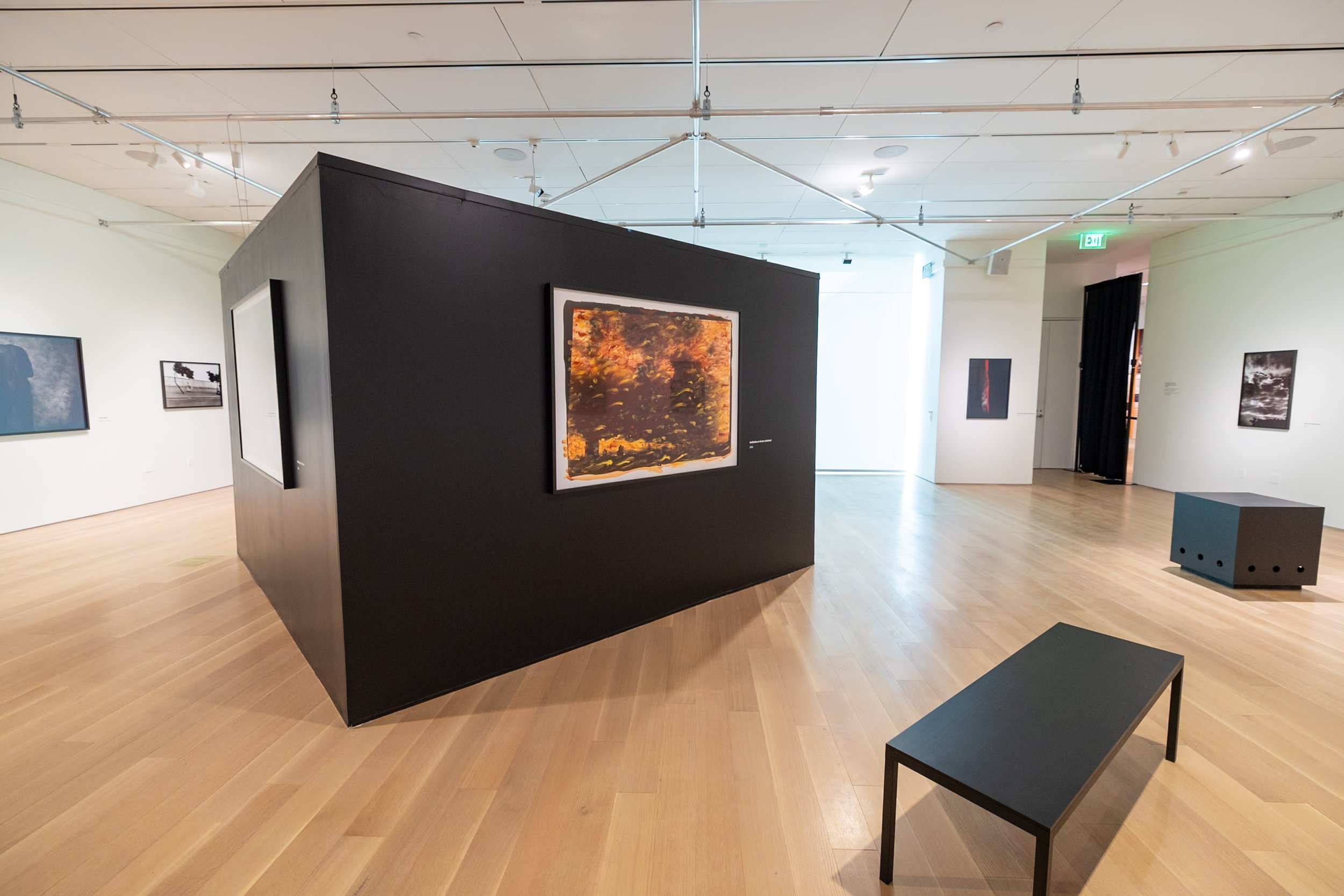
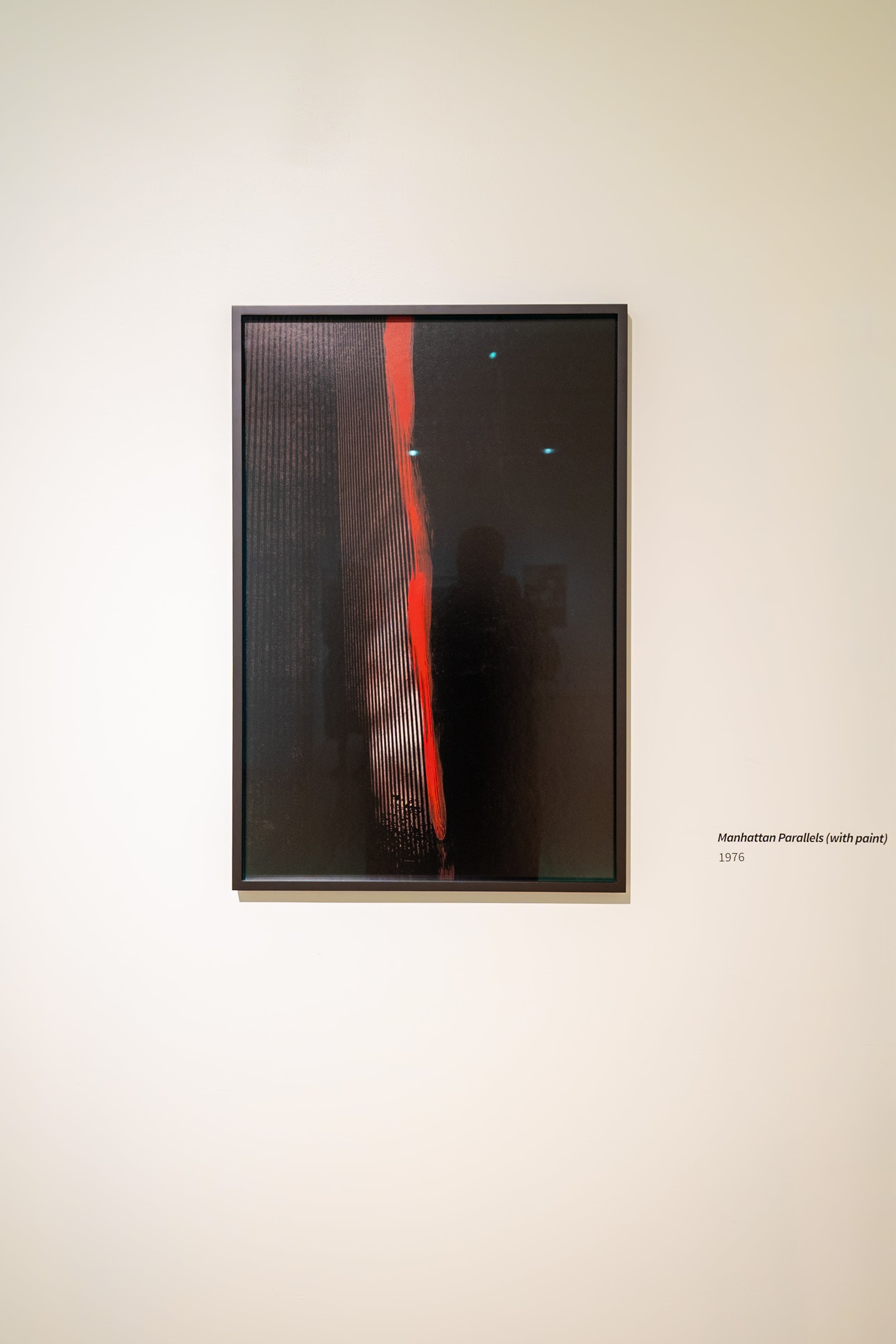
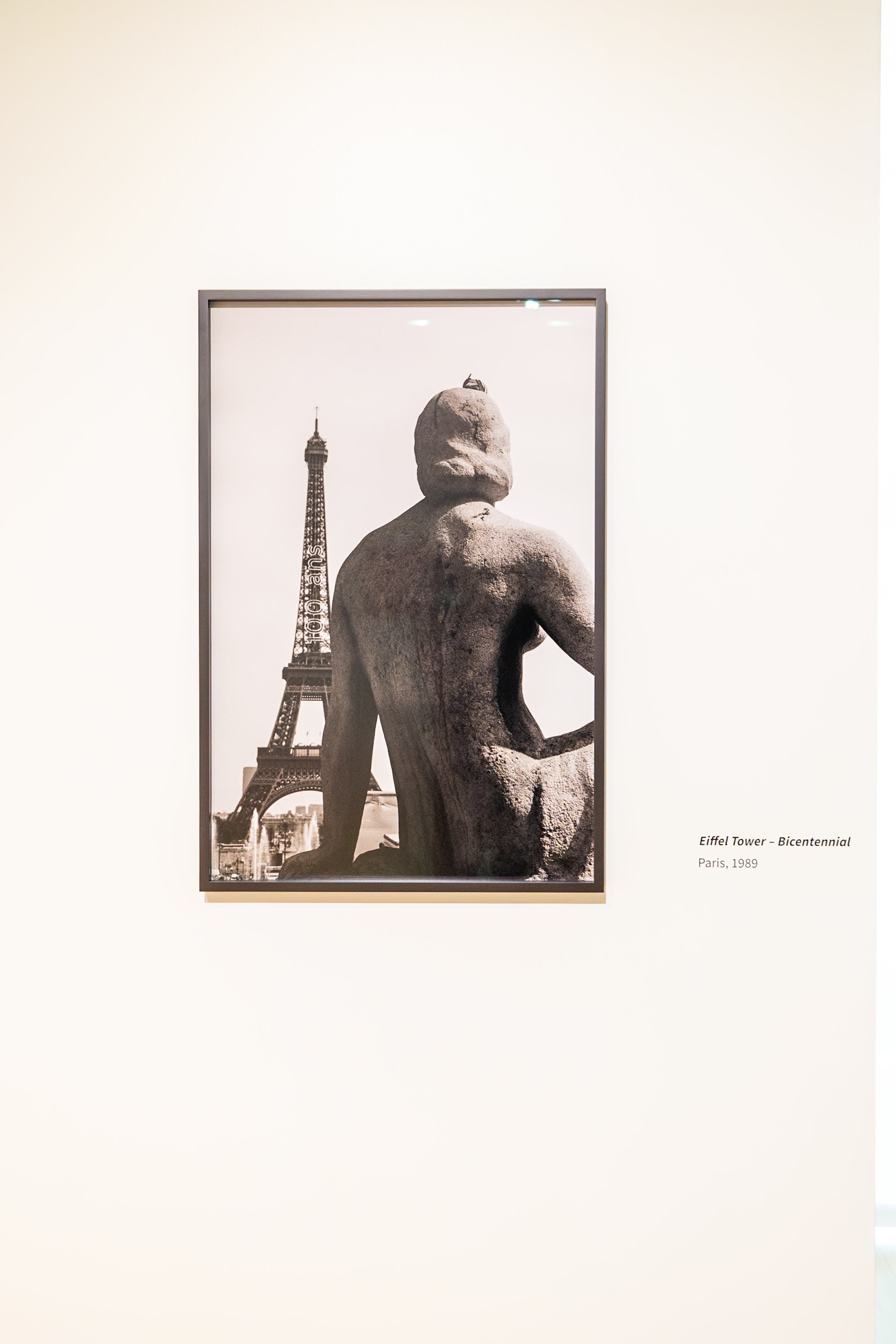
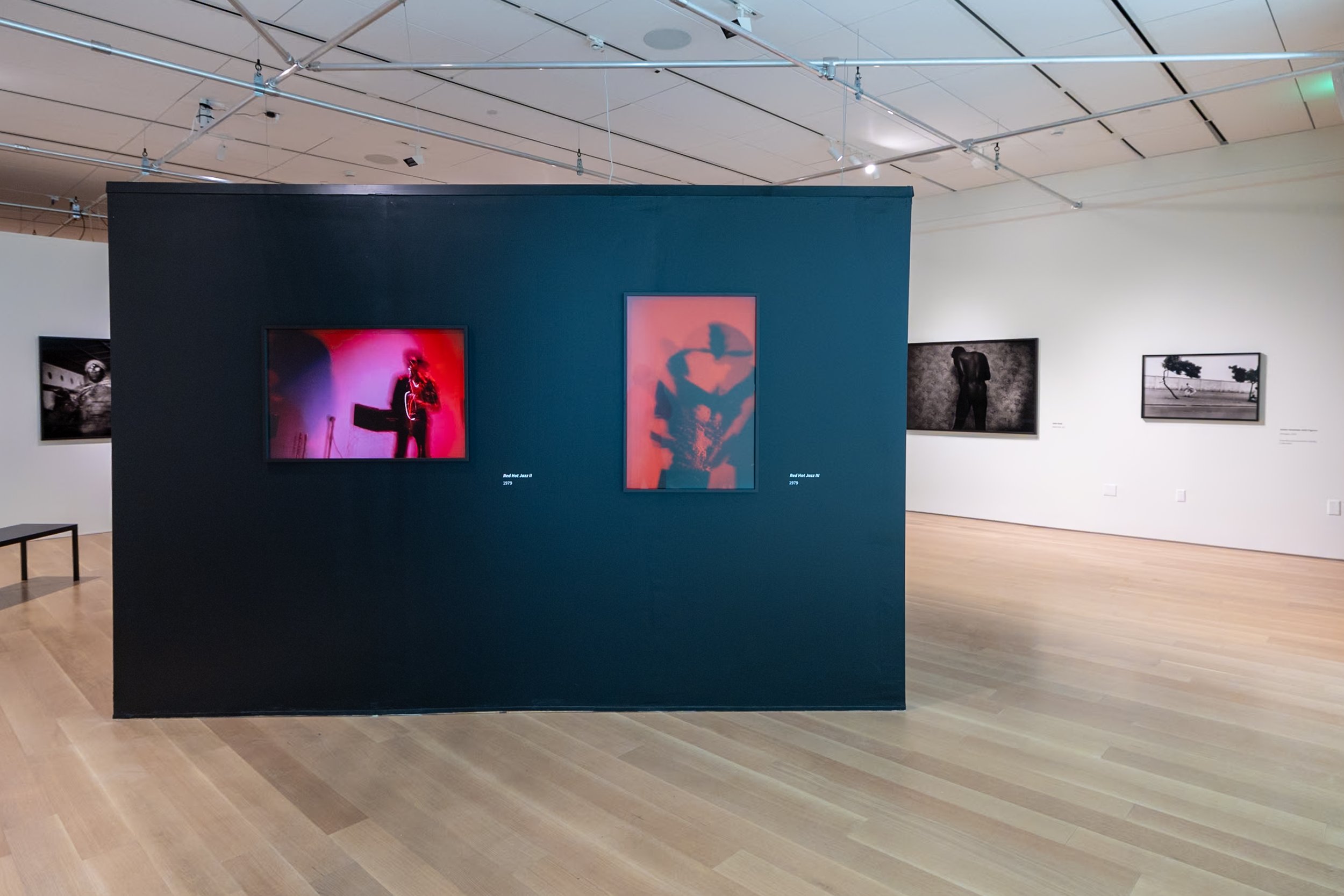
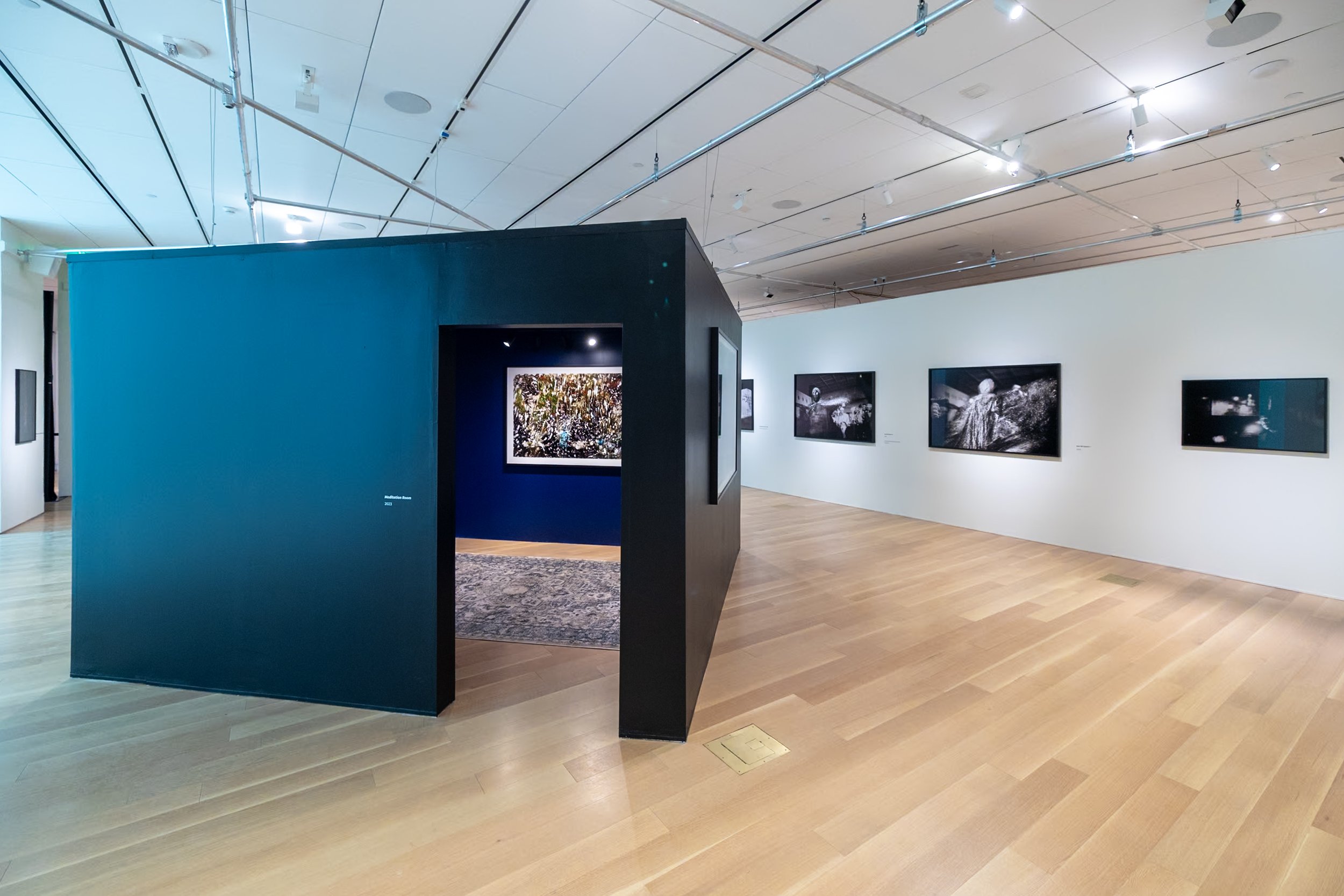

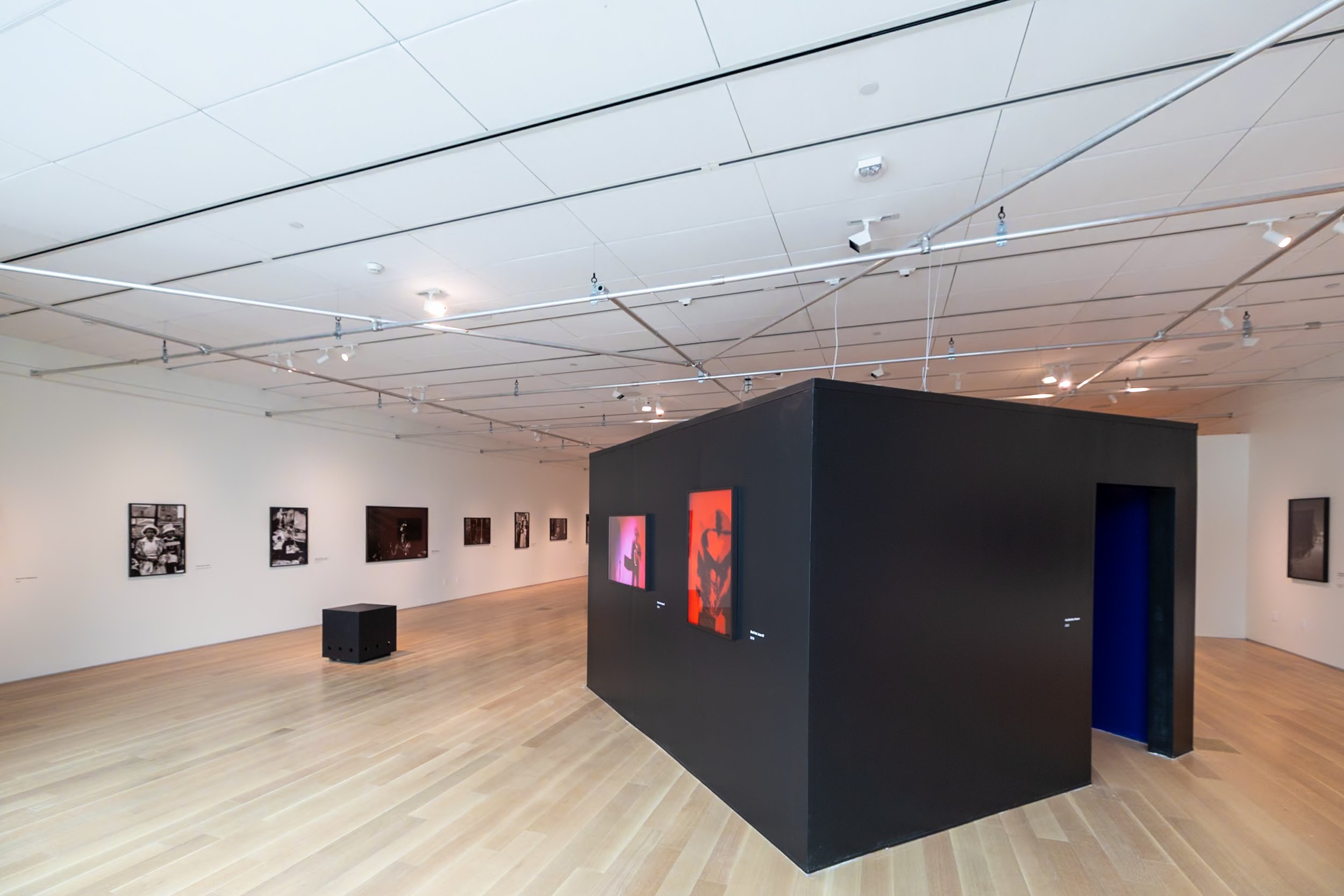
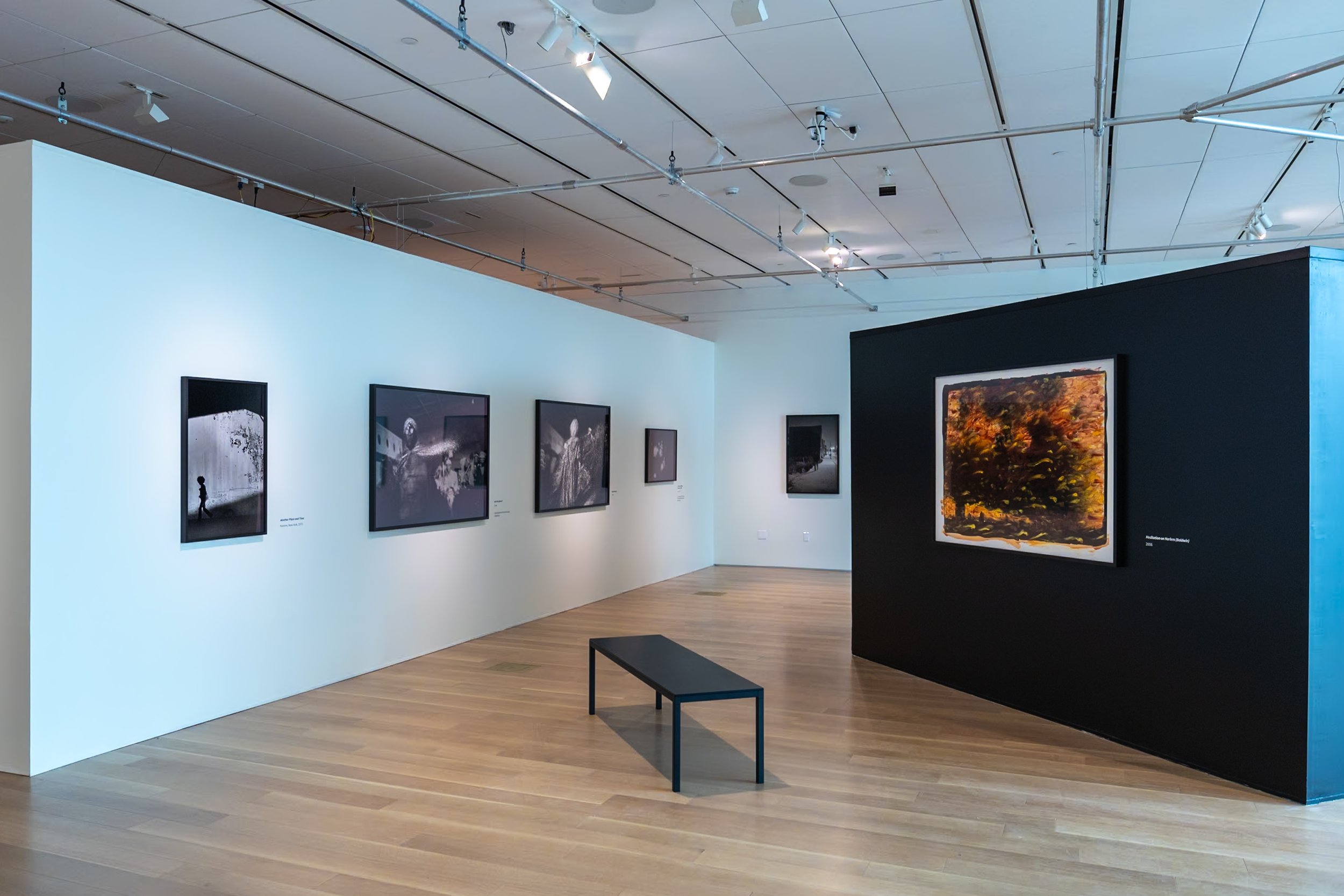
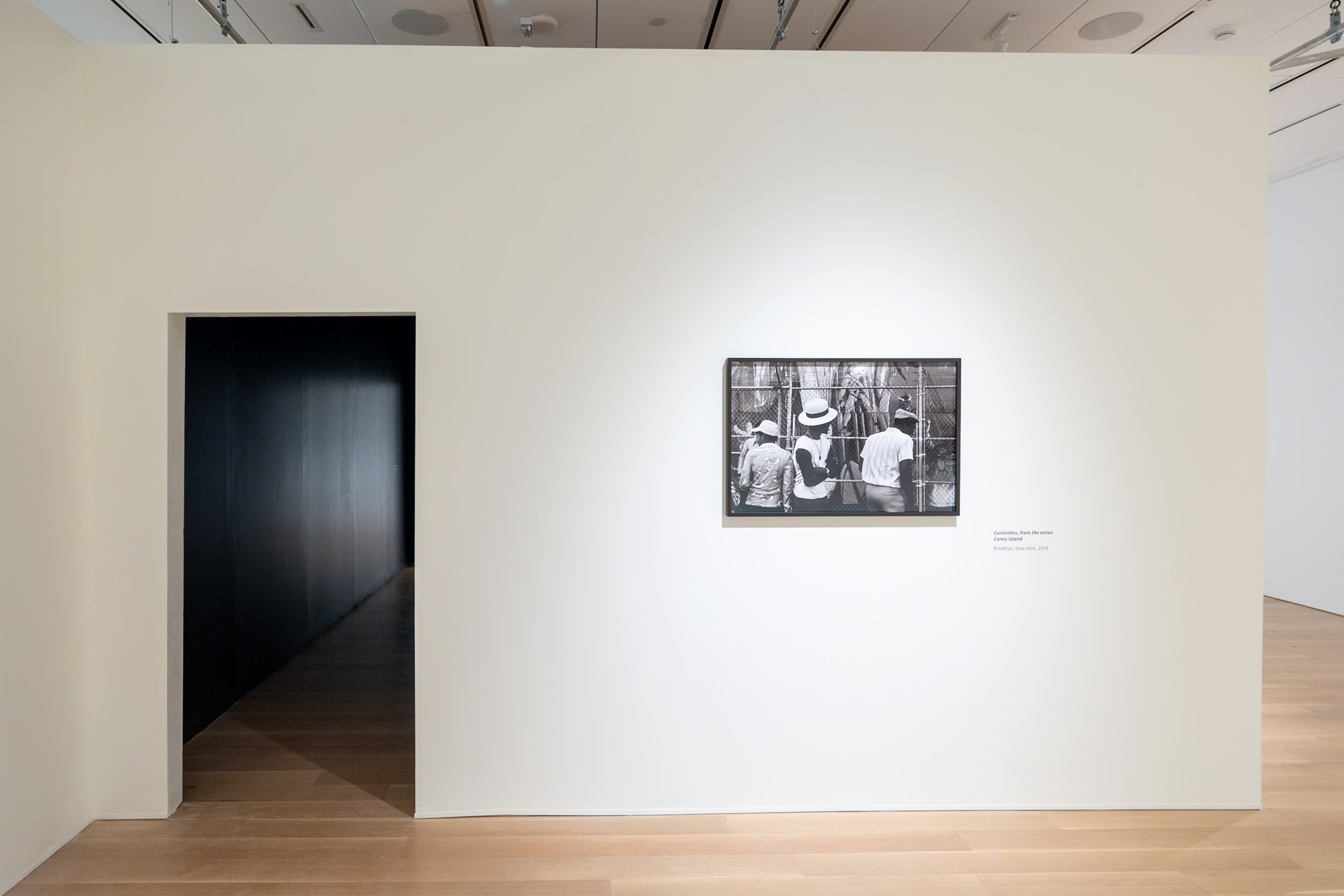
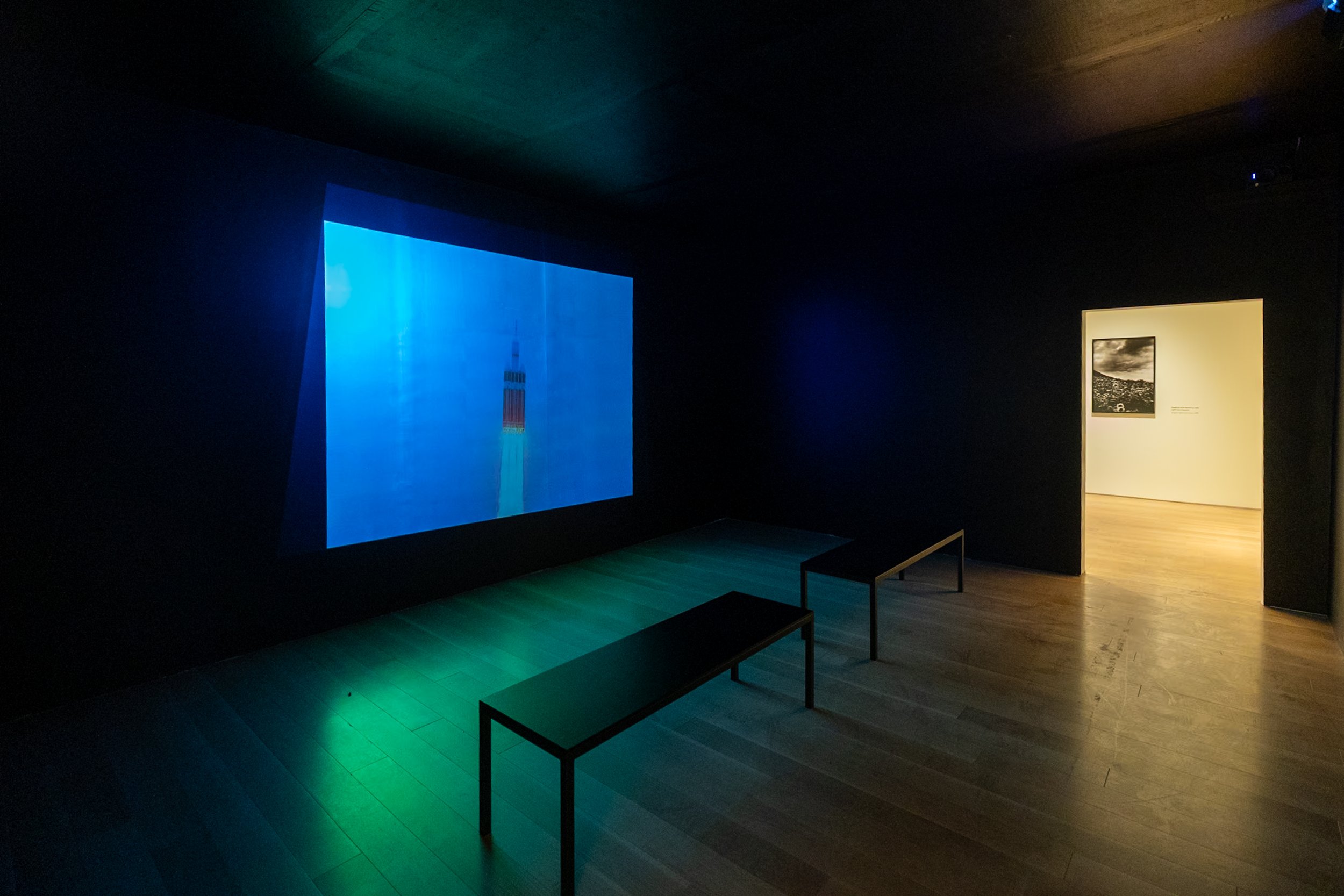
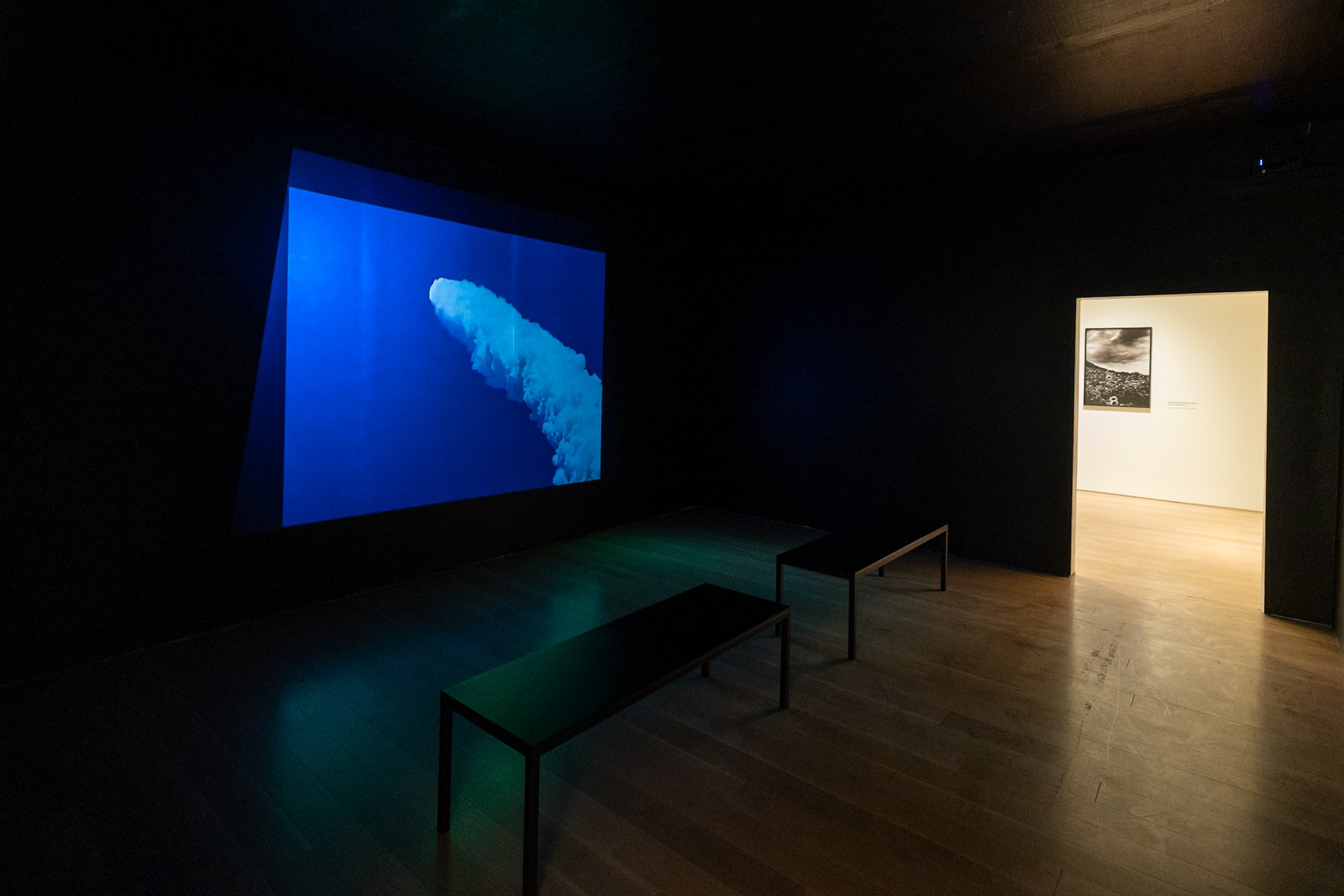
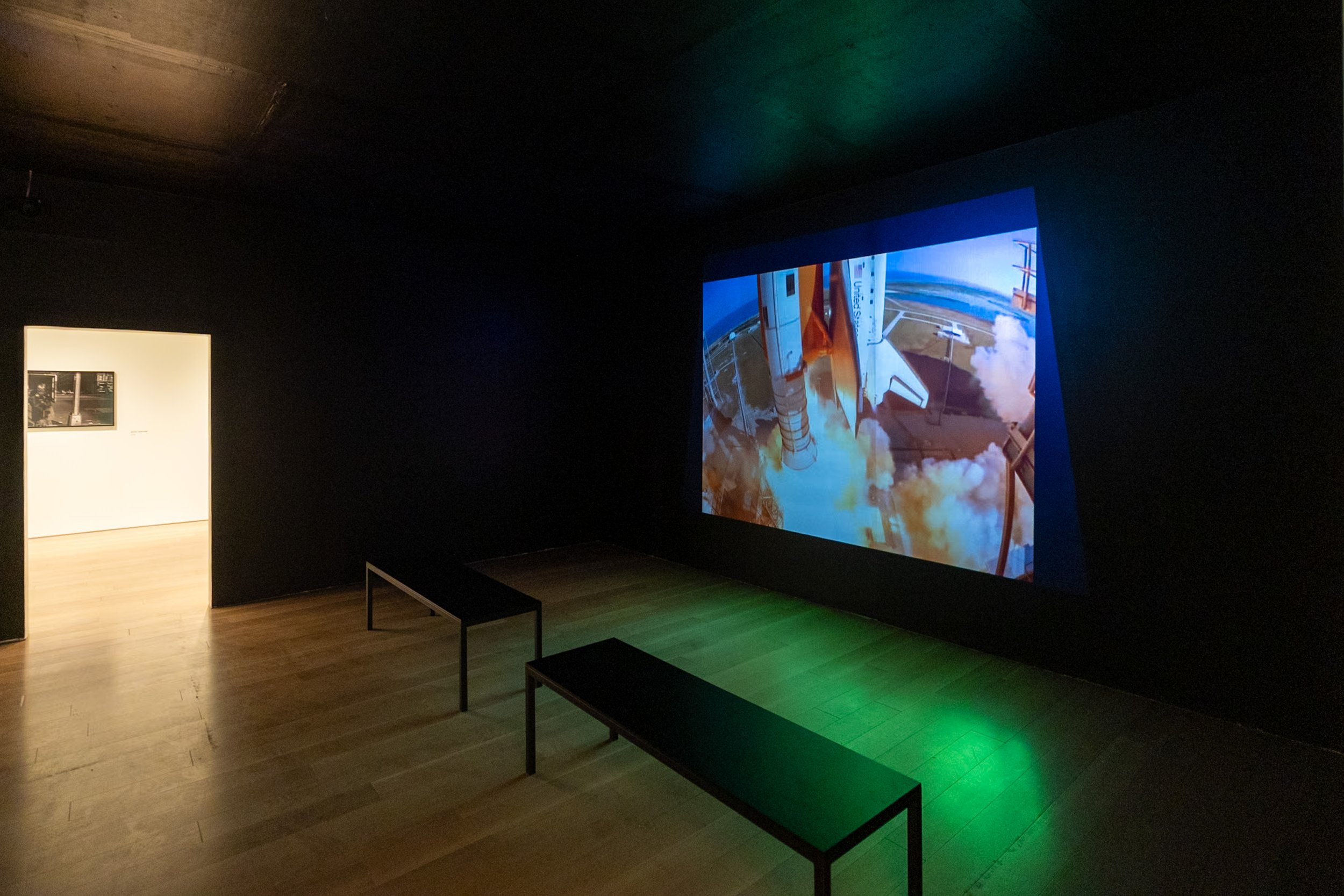
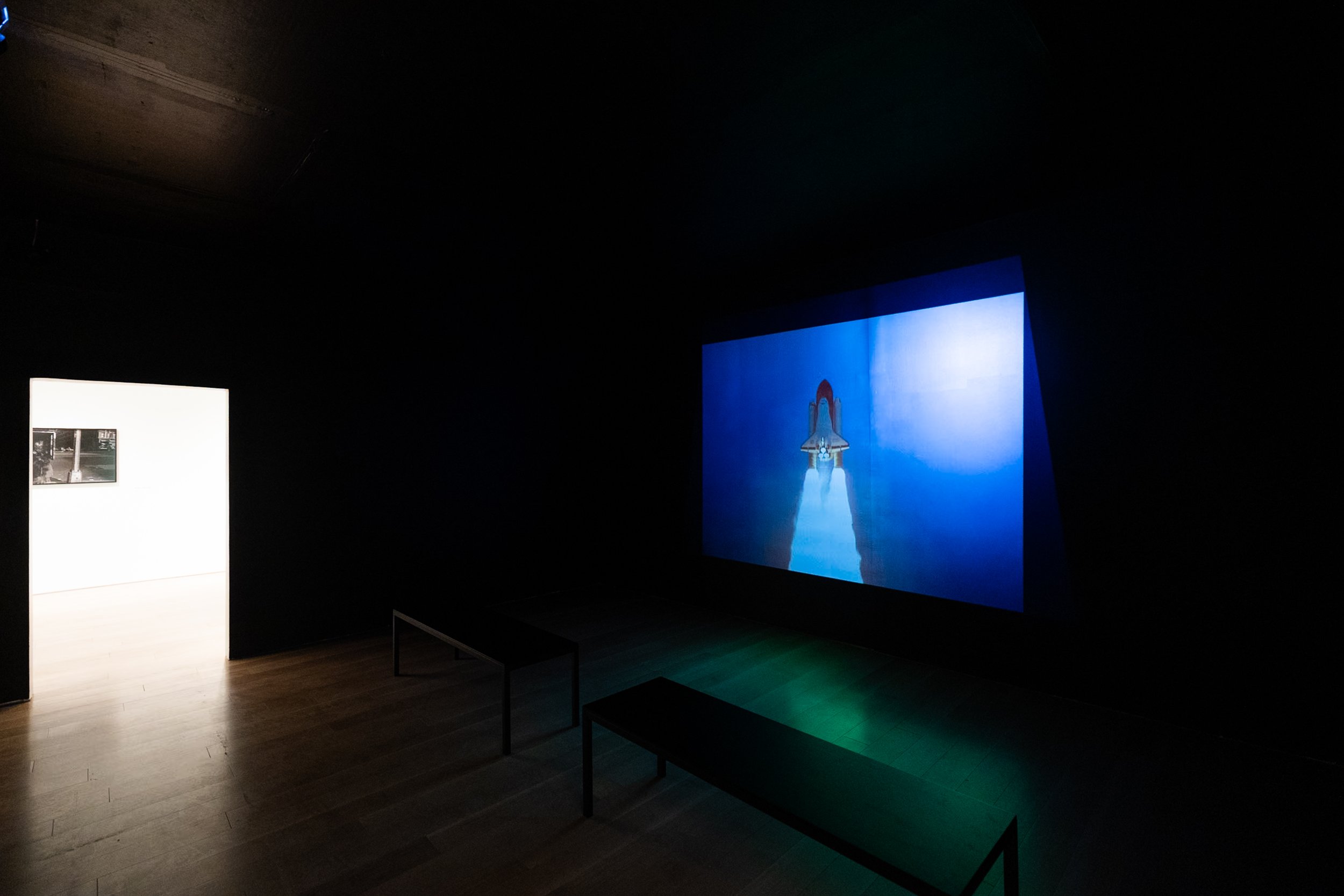
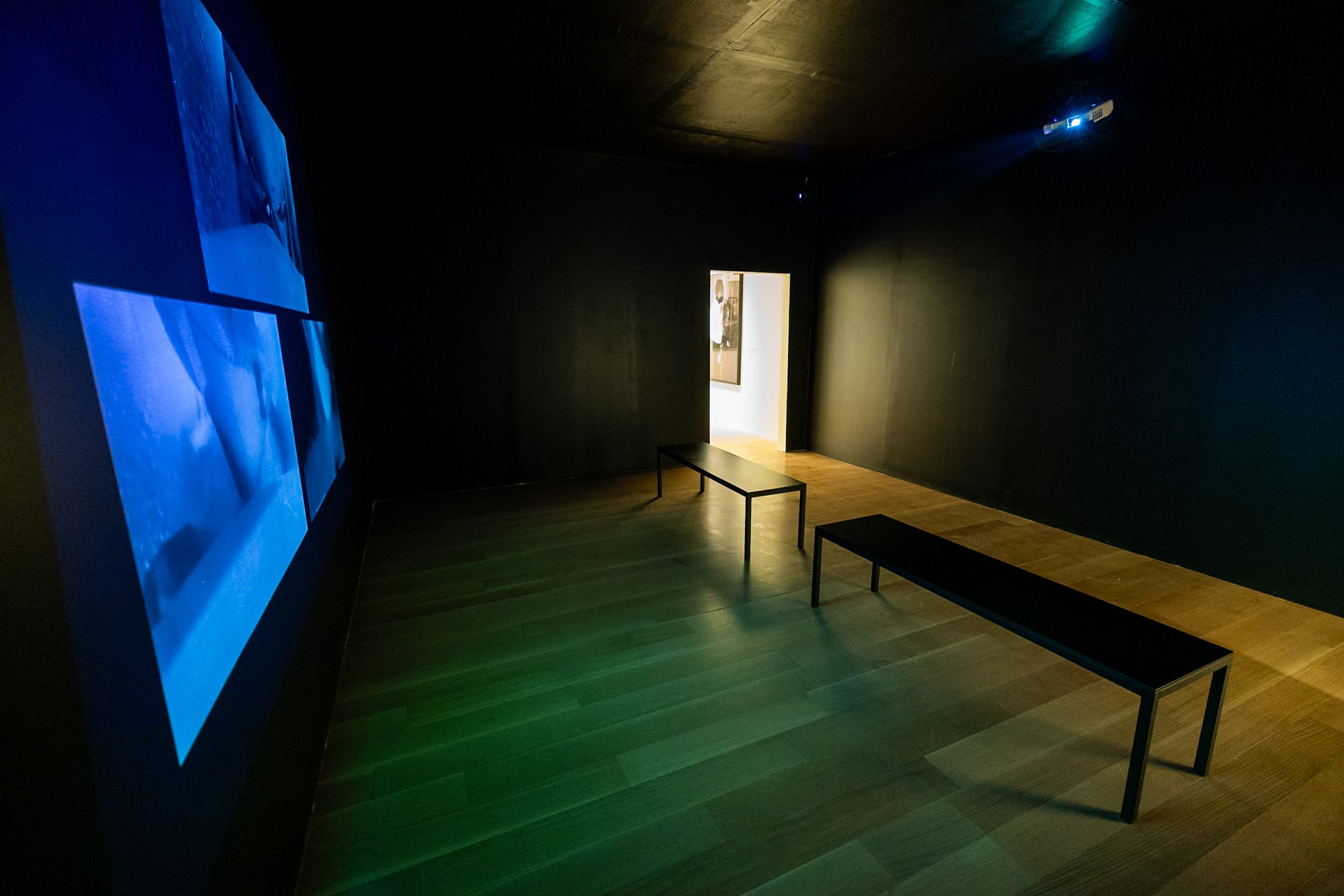
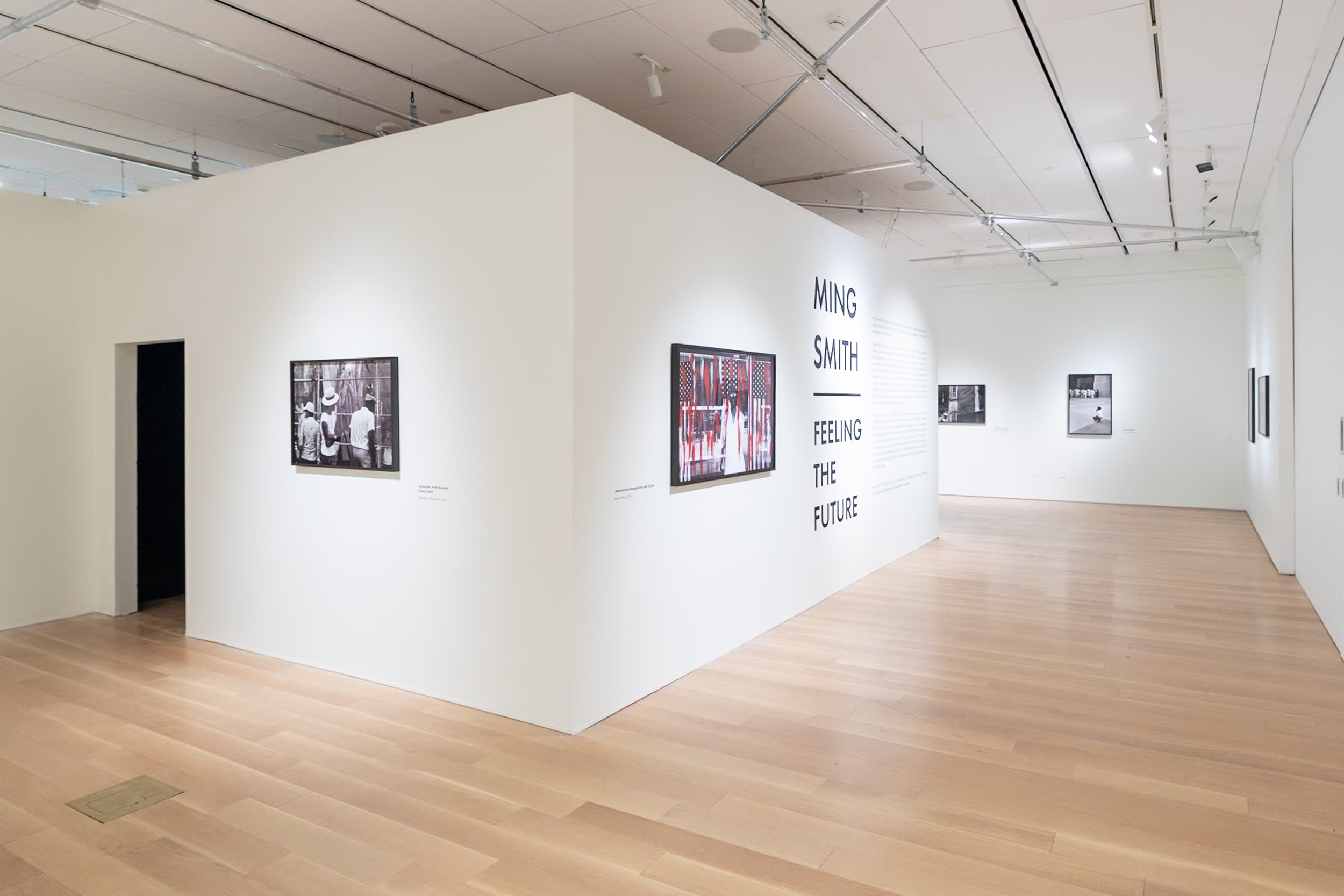
Installation view: Ming Smith: Feeling the Future January 31 through April 28, 2024. The International African American Museum (IAAM), Charleston, South Carolina. Courtesy of The International African American Museum (IAAM)
The International African American Museum (IAAM) explores the history, culture, and impact of the African American journey on Charleston, the nation, and the world, shining light and sharing stories of the diverse journeys, origins, and achievements of descendants of the African Diaspora. Across eleven galleries and a memorial garden with art, objects, artifacts, and multi-media interaction, IAAM is a champion of authentic, empathetic storytelling of American history. As a result, the museum will stand as one of the nation’s newest platforms for the disruption of institutionalized racism as it evolves today. The mission of IAAM is to honor the untold stories of the African American journey at the historically sacred site of Gadsden’s Wharf and beyond.
Installation view: Ming Smith: Feeling the Future January 31 through April 28, 2024. The International African American Museum (IAAM), Charleston, South Carolina. Courtesy of The International African American Museum (IAAM)
Editor's Note: The attached photos include a current picture of Ming Smith photographed by Chanell Stone, courtesy of Aperture, as well as Amen Corner Sisters and Chicago Art Ensemble by Ming Smith, courtesy of IAAM.
Please visit the International African American Museum's website here for more information about its current and future exhibitions.
ATUL DODIYA 'I KNOW YOU. I DO. O' STRANGER'
Toutes les images / All images :© Courtesy de l’artiste et TEMPLON,Paris —Brussels — New York
Painter Atul Dodiya, regarded as one of the greatest Indian artists of his generation, is showing in Paris a new series of canvases inspired by Bollywood classics.
In the early 1990s, while studying at the famous Sir J.J. School of Art in Mumbai, Atul Dodiya spent a year at the Paris École des Beaux Arts. The experience proved decisive in the career of an artist who has been building bridges between the history of Indian and Western art ever since. Passionate about literature and film, he uses a unique language, fluctuating between the figurative and the abstract, where he incorporates references to popular culture, poetry and modern art masters, from Matisse to Motherwell, Picabia to Mondrian. Atul Dodiya possesses an astonishing capacity to reinvent himself and his style, equally happy to draw on photorealism or symbolism. He paints on metal roller shutters, creates photographic assemblages and devises largescale installations combining object and painting. Embedded in his works is a reflection on the history of India and emergence of new political aspirations.
Toutes les images / All images :© Courtesy de l’artiste et TEMPLON,Paris —Brussels — New York
The exhibition's entry point is the Mumbai movie world of the 1960s that marked the artist's childhood. The title “I know you. I do. O’ stranger” is inspired by the film Charulata (1964) by Satyajit Ray. The deceptively ordinary chosen scenes are the fruit of complex compositions where the actor's fame takes a back seat to anonymity. “A recurring theme in my cinematographic stories,” explains the artist, “the characters encounter each other just like strangers.”
Toutes les images / All images :© Courtesy de l’artiste et TEMPLON,Paris —Brussels — New York
Liberated from all narrative context, their mysterious beauty is revealed, leaving the viewer free to interpret their meaning. In the manner of a filmmaker, Atul Dodiya directs our gaze through space, from one canvas to the next.
Certain fragments of a roll of film seemingly pay tribute to the technical feats of cinema. Others highlight the emergence of a new consumer society, with hand-crafted movie sets becoming, in the hands of artist, some sophisticated furnishings and interiors.
Toutes les images / All images :© Courtesy de l’artiste et TEMPLON,Paris —Brussels — New York
The outward appearance of an economy of means conceals a demanding and meticulous painting technique. Atul Dodiya transforms freeze frame photographs in a preliminary monochrome print. Projected onto the canvas, he goes over the scene in black and white until chiaroscuro transcends movement. He completes the image's metamorphosis by covering it in translucent oil paint, swapping the vibrant palette favoured by Bollywood films for a pastel, almost ephemeral, colour range. This transformation of the image as it is filmed, photographed, illuminated and colourised becomes a metaphor for the impact of modernity and globalisation on perception and traditions. “In this very personal selection of moments frozen in time,” he continues, “the unreal becomes a new story, another truth.”
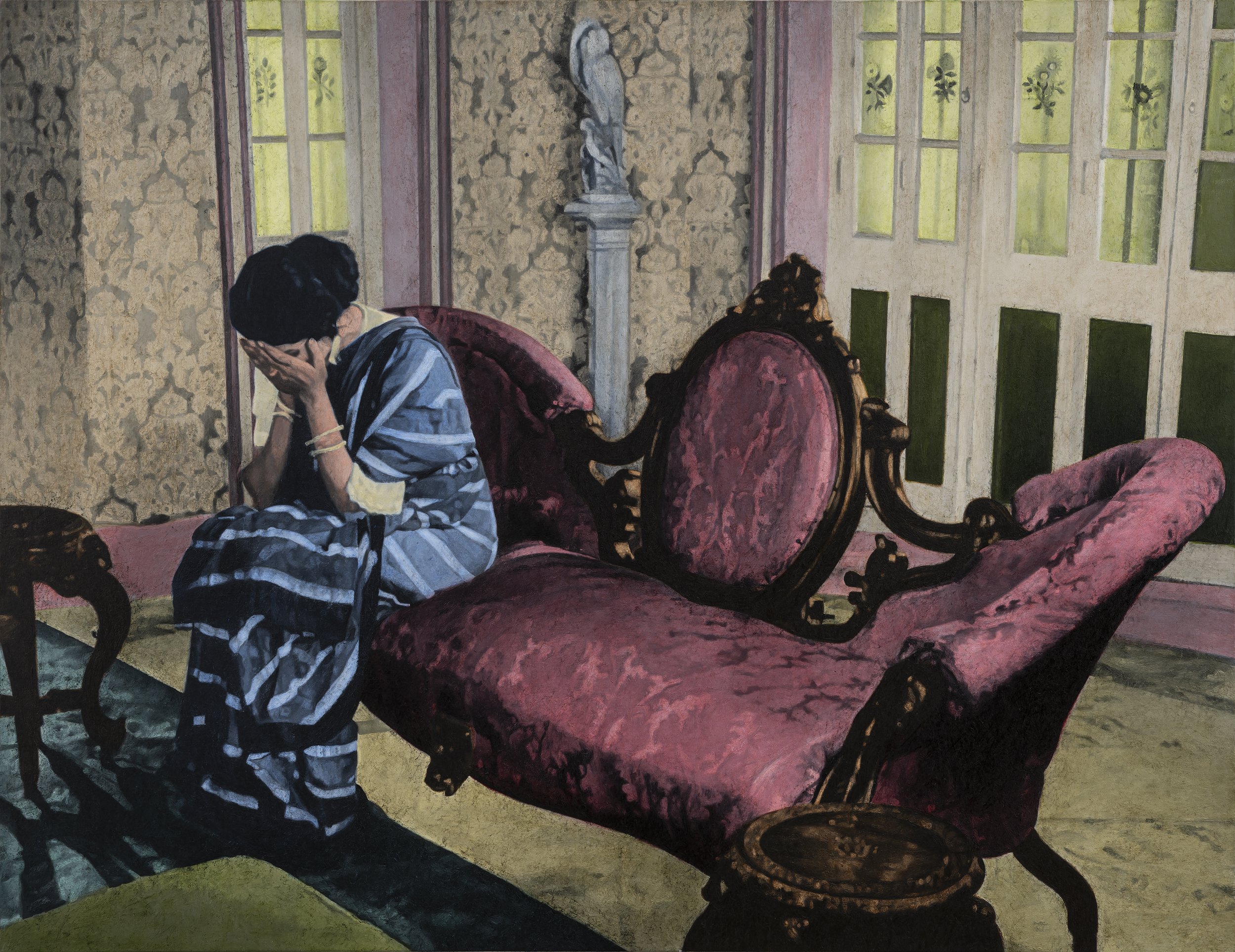
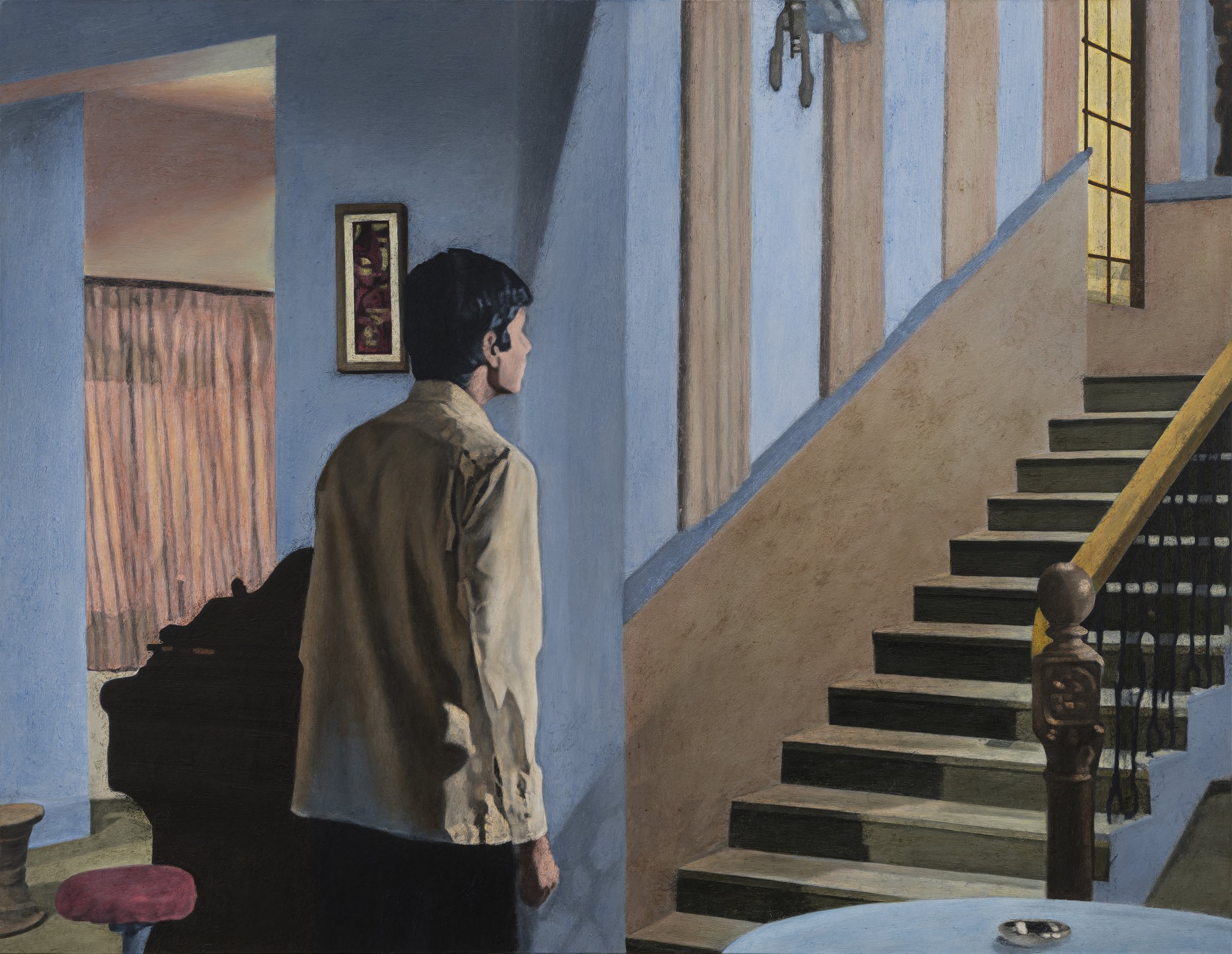
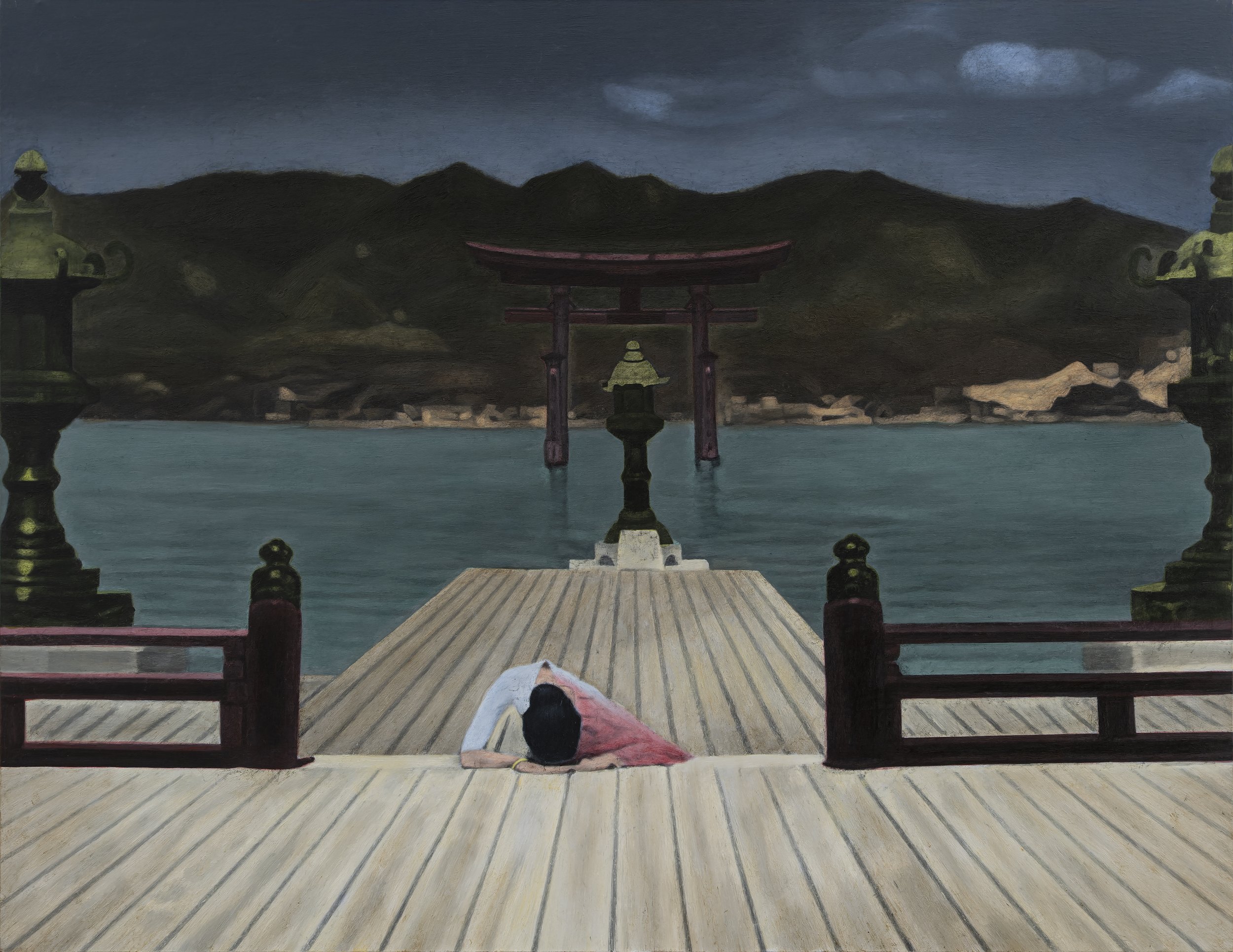
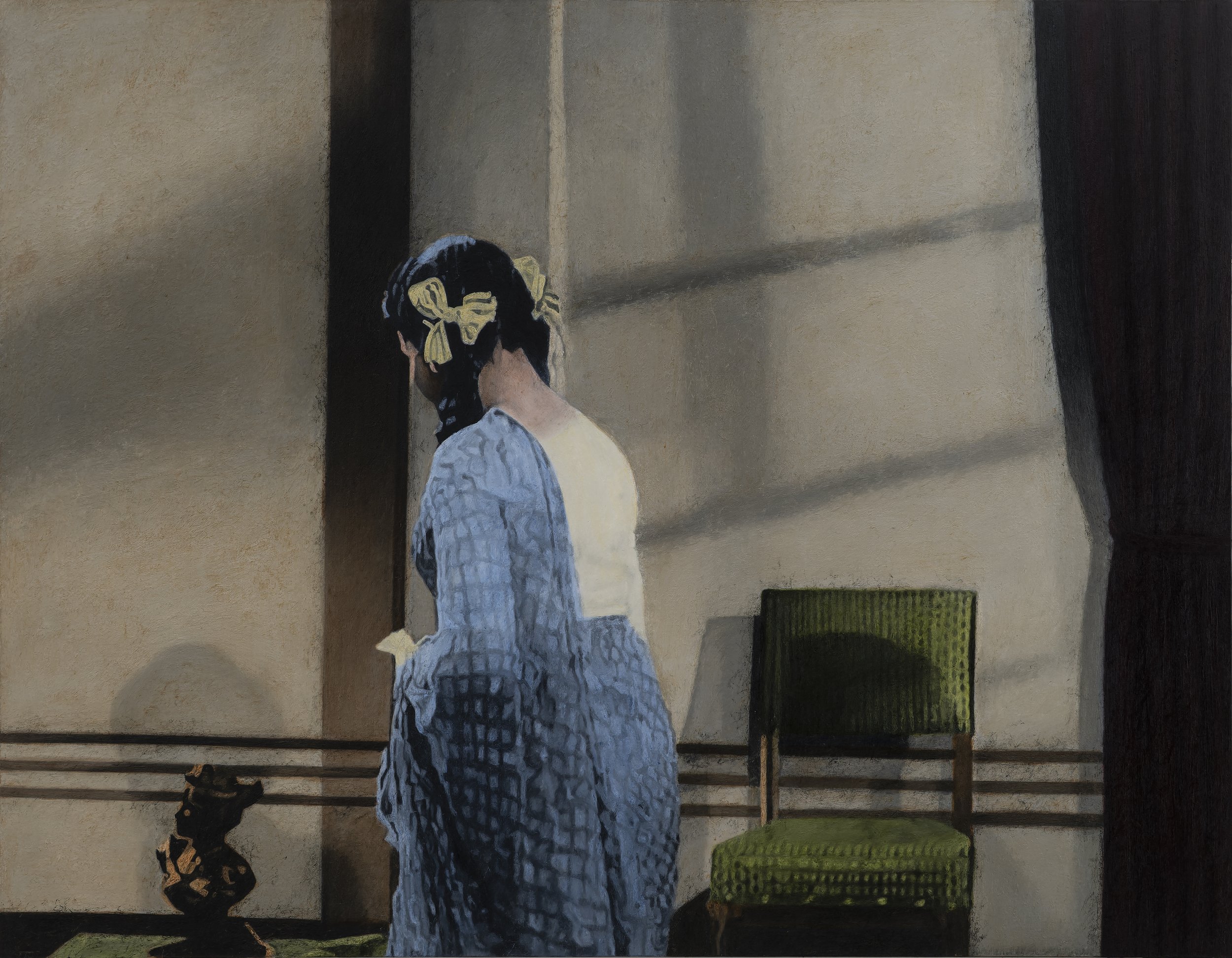
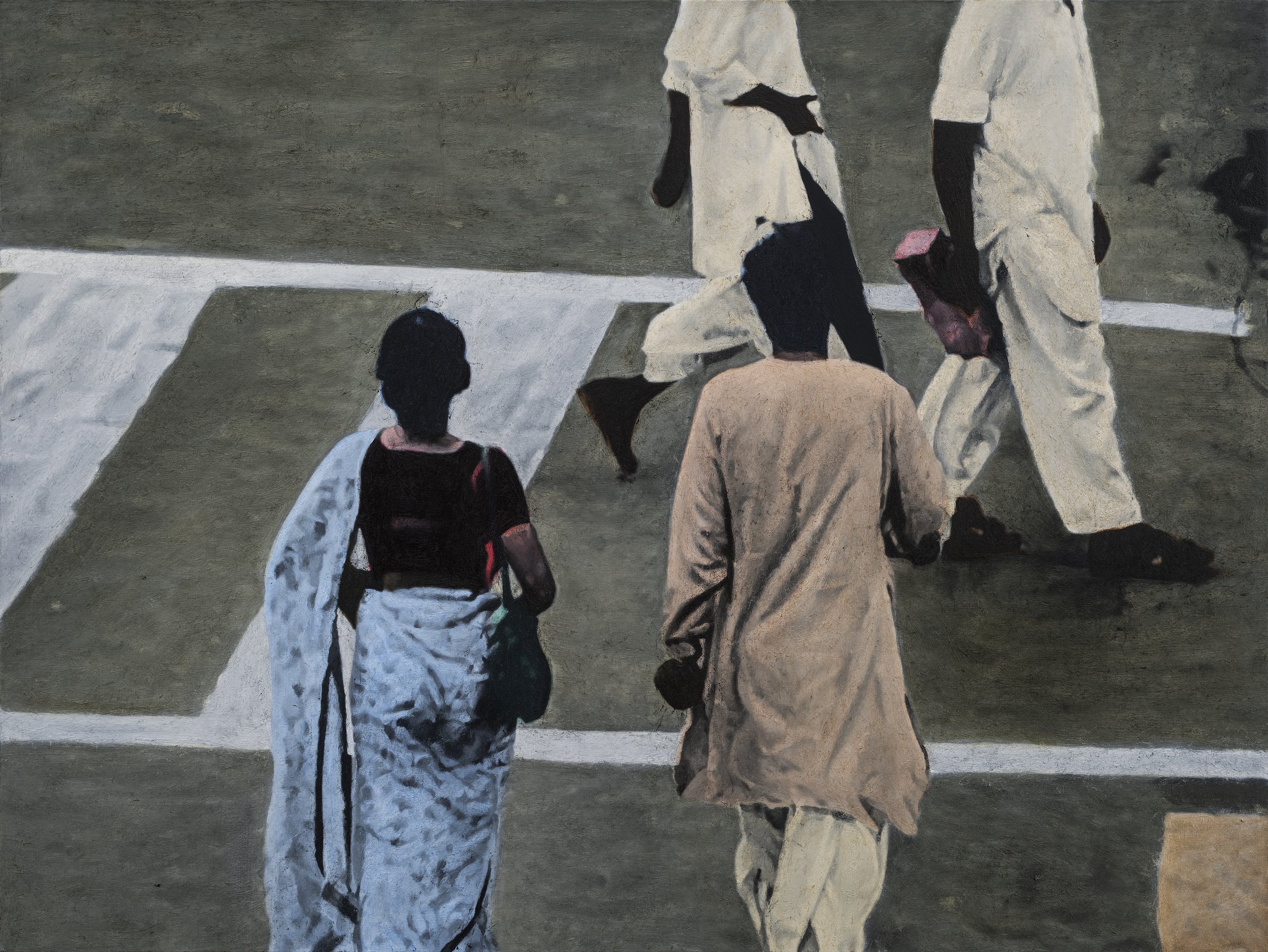
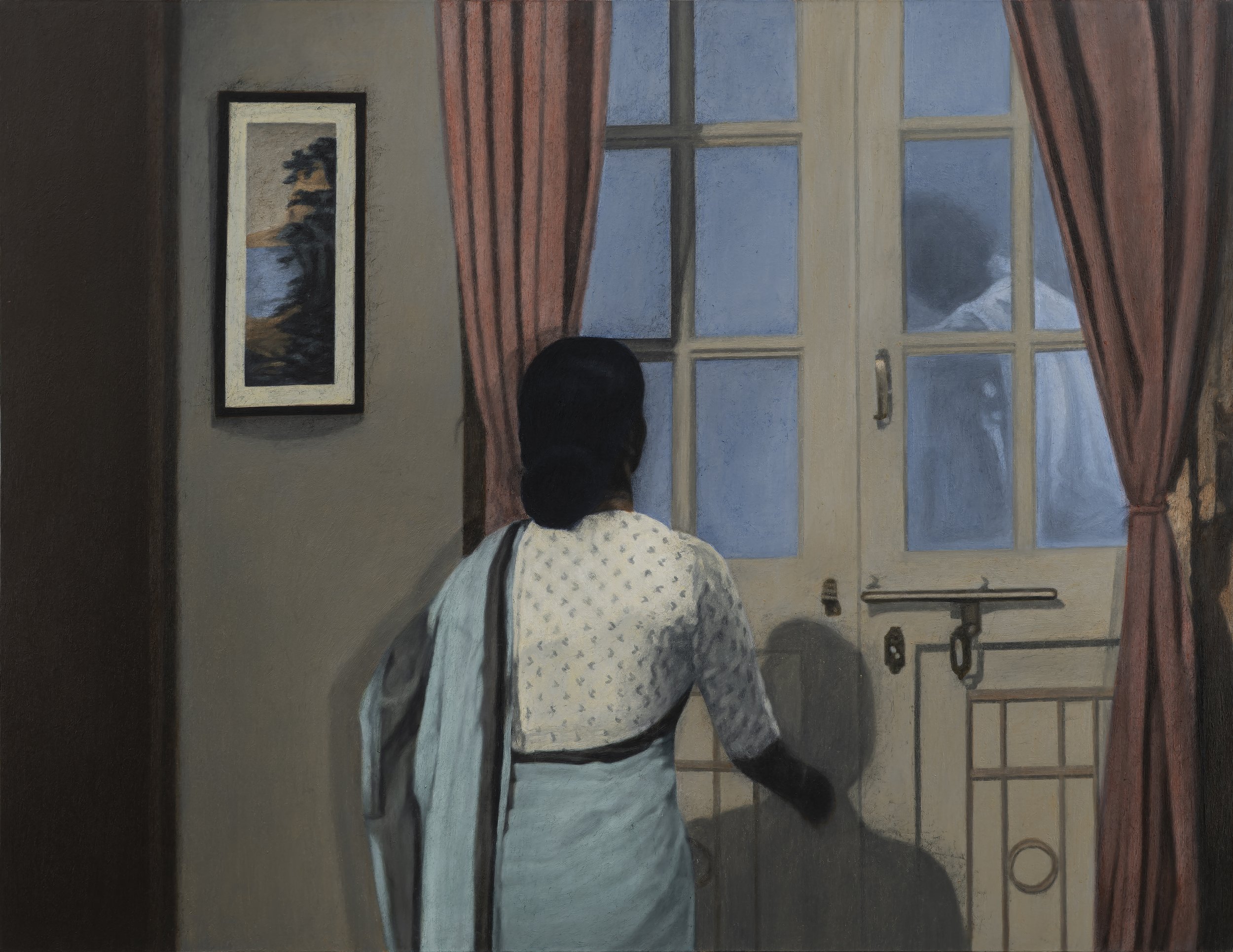


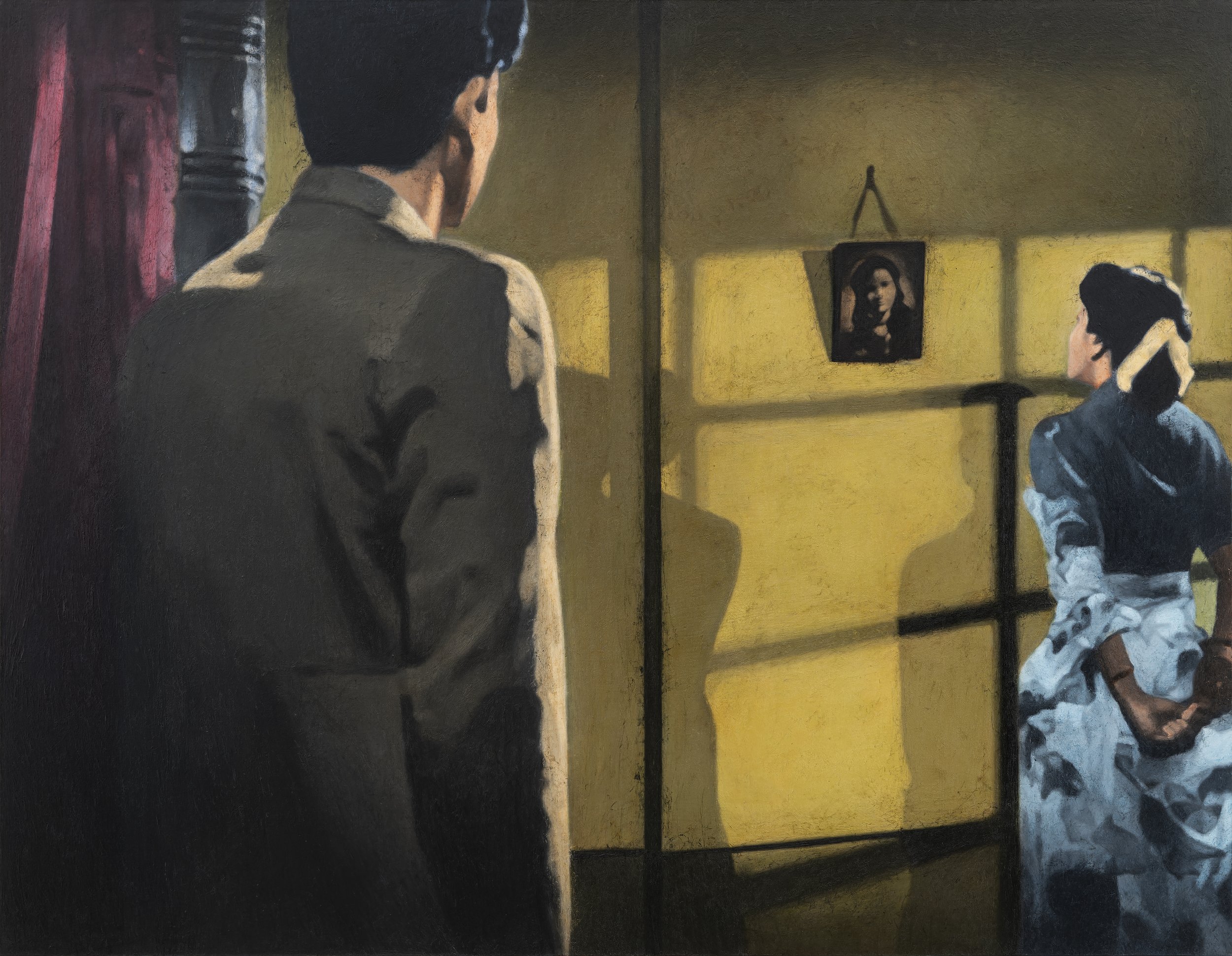
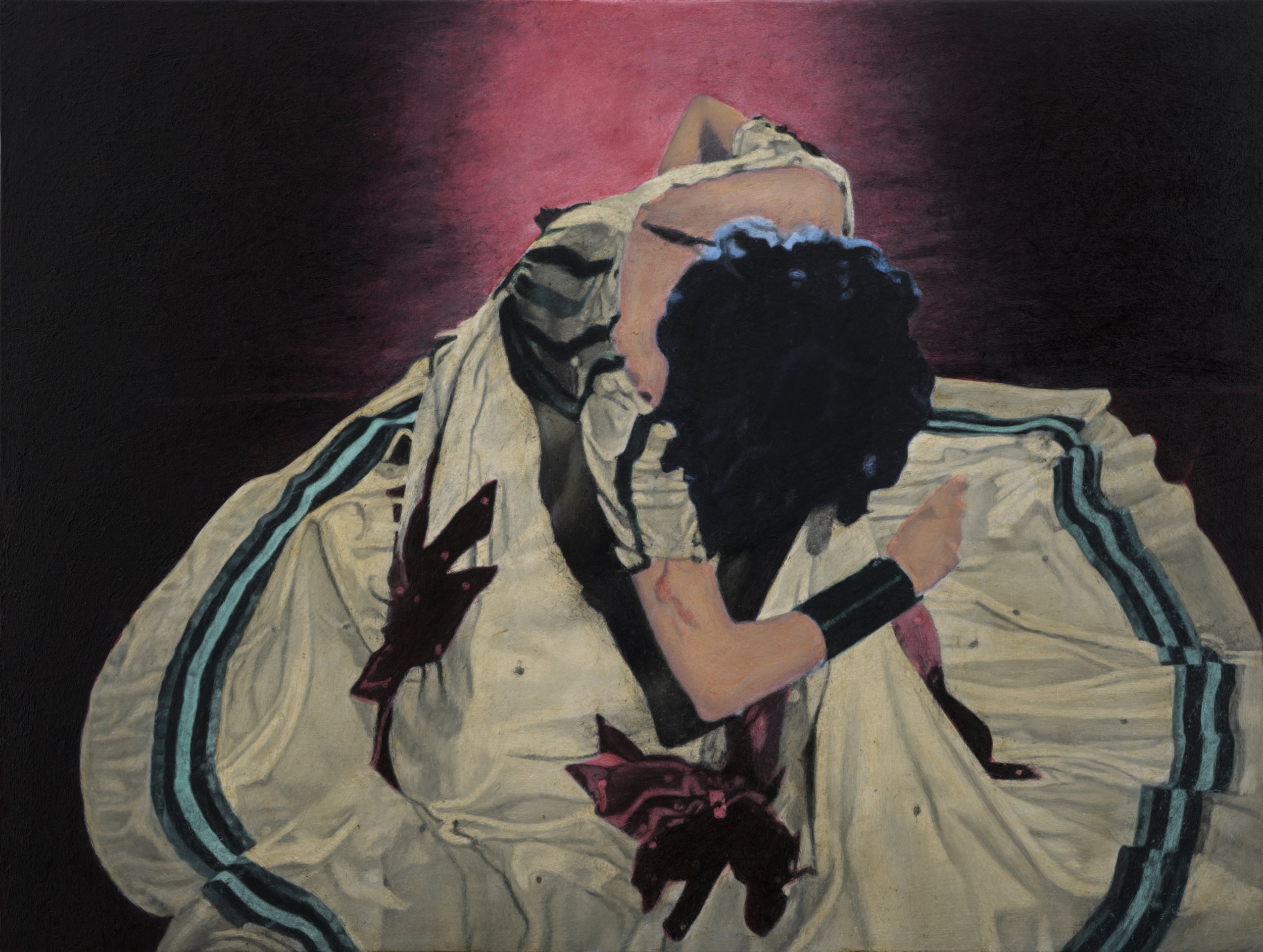
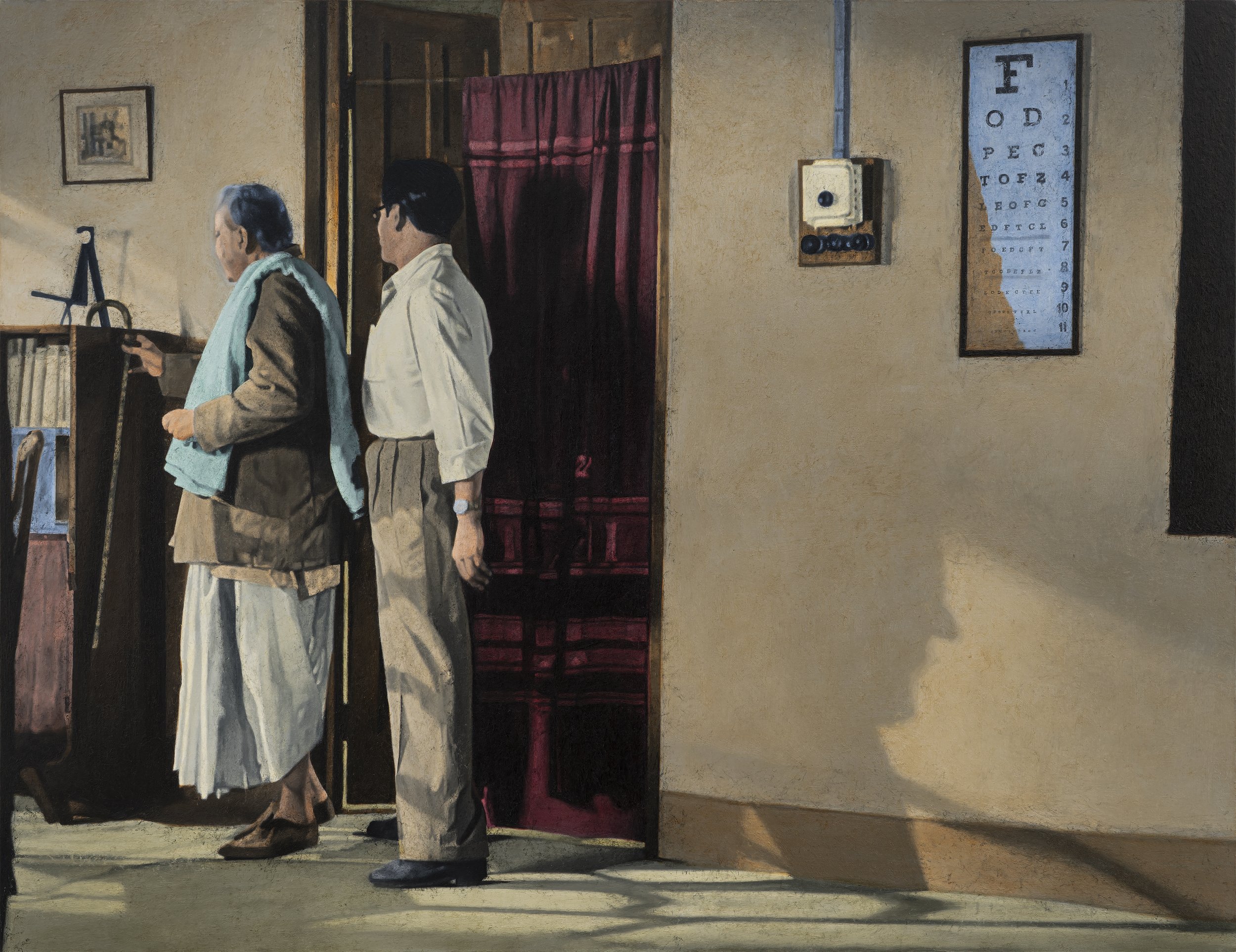
Toutes les images / All images :© Courtesy de l’artiste et TEMPLON,Paris —Brussels — New York
Atul Dodiya was born in 1959 in Mumbai where he lives and works. His work features in the collections of a host of international museums, including the Mnam-Centre Pompidou in Paris, Tate Modern in London and Philadelphia Museum of Art. He has taken part in most major exhibitions of Indian art held in the USA, Europe and Asia over the last twenty years: Atul Dodiya, Detroit Institute of Arts Museum, Detroit, USA (2020), After Midnight: Indian Modernism to Contemporary India at Queens Museum in New York (2015), India: Art Now at the ARKEN Museum of Modern Art in Denmark (2012), La Route de la soie at Tri Postal in Lille and Paris Delhi Bombay at the Centre Pompidou (2011), Inside India at Palazzo Saluzzo Paesana Turin and The Empire Strikes Back at the Saatchi Gallery in London (2010), and Indian Summer at the École des Beaux Arts in Paris (2000). He also participated in Documenta 12 in Kassel (curated by Roger Buergel) in 2007, the Gwangju Biennale (curated by Okwui Enwezor) in 2008, Moscow Biennale (curated by Jean-Hubert Martin) in 2009, Kochi-Muziris Biennale in 2012, and 7th Asia Pacific Triennial of Contemporary Art (APT7) in Brisbane in 2012.
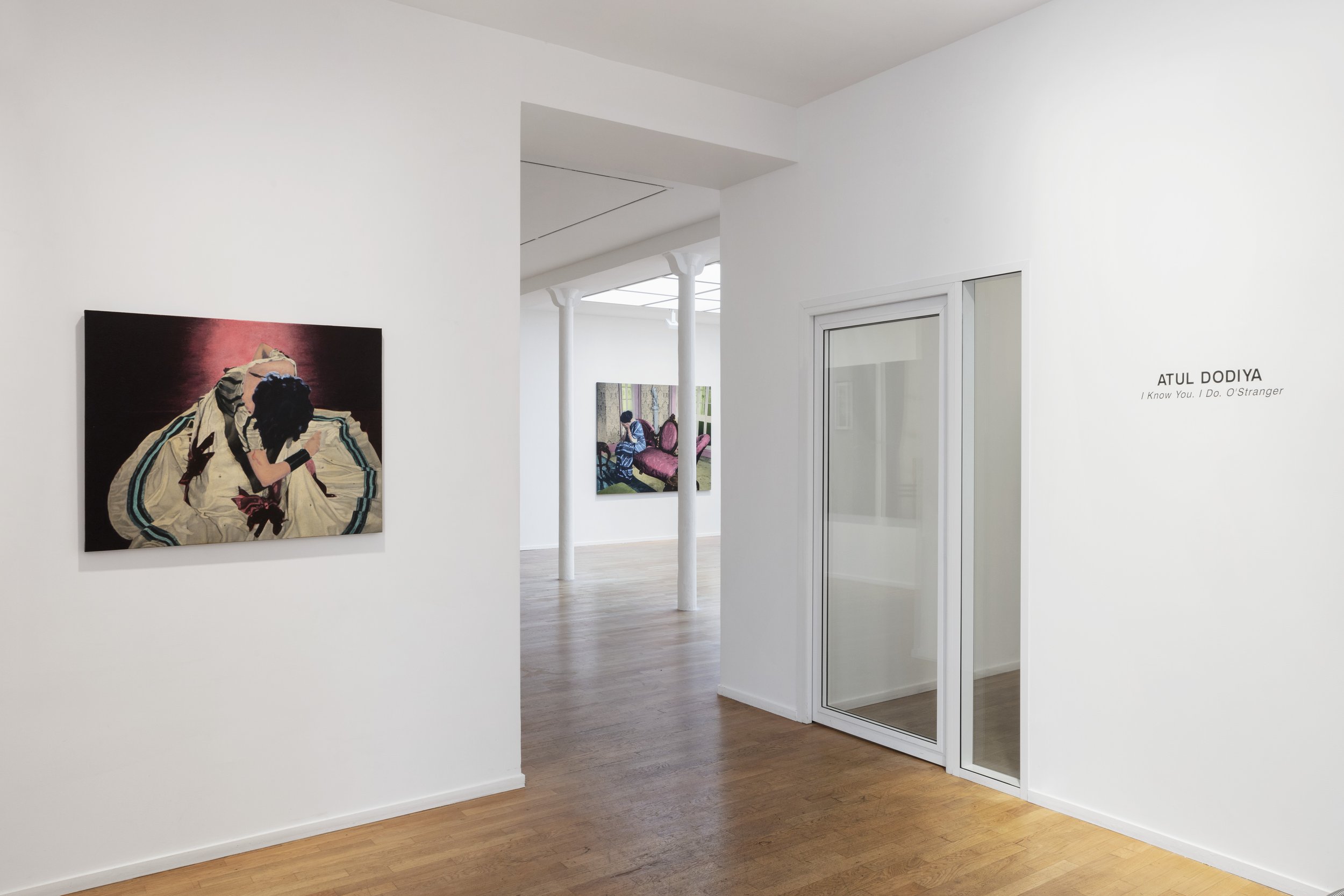
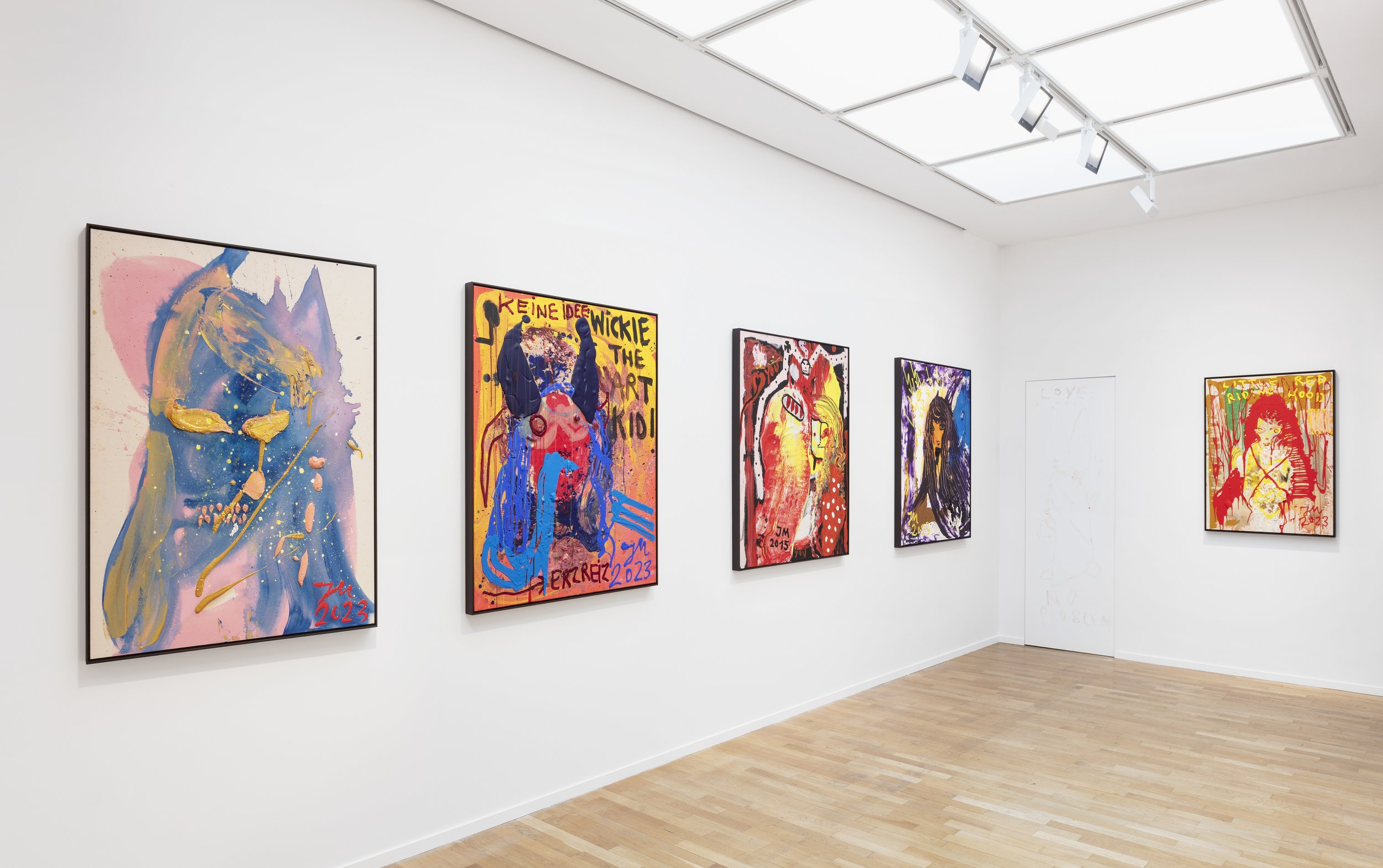
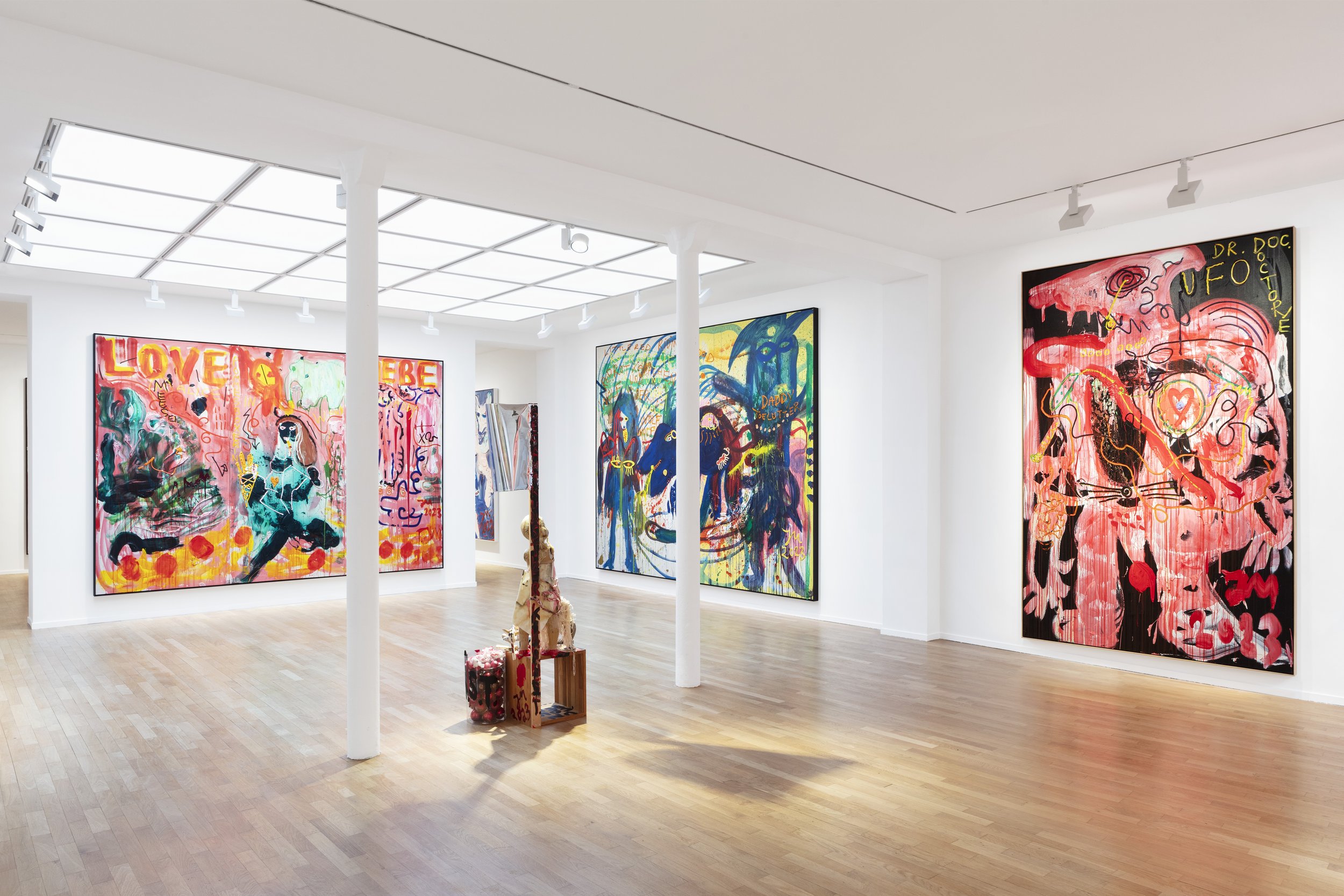
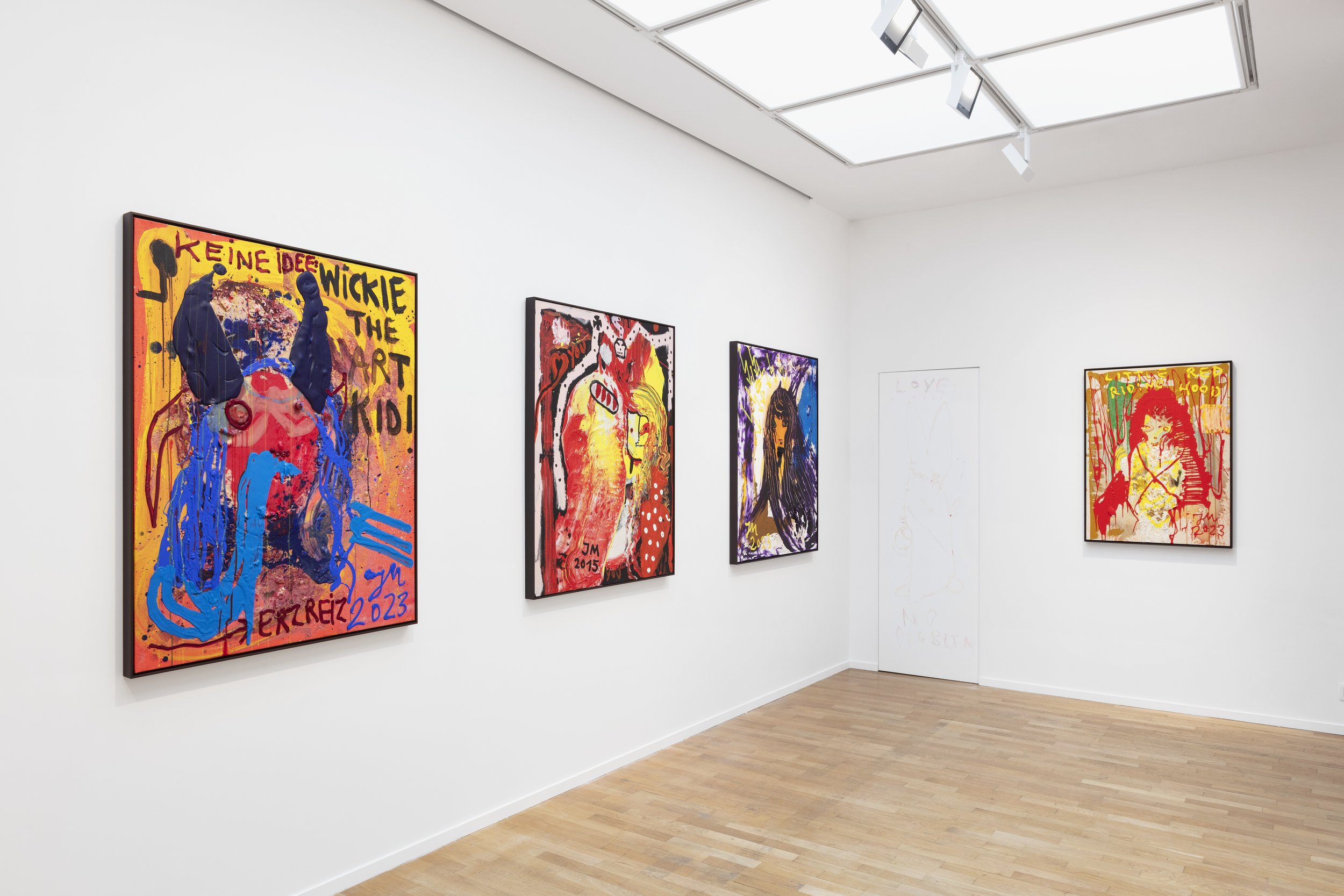

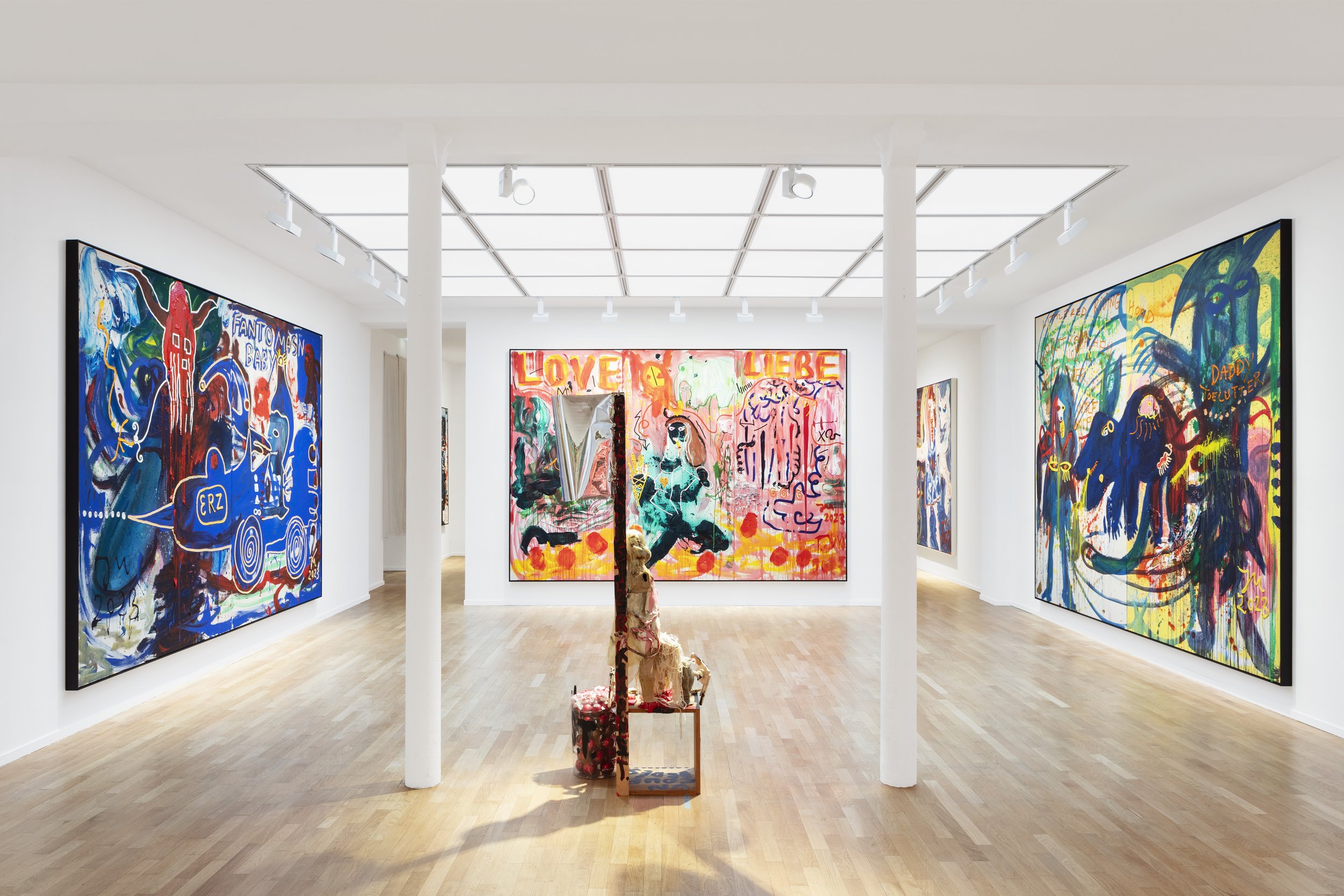

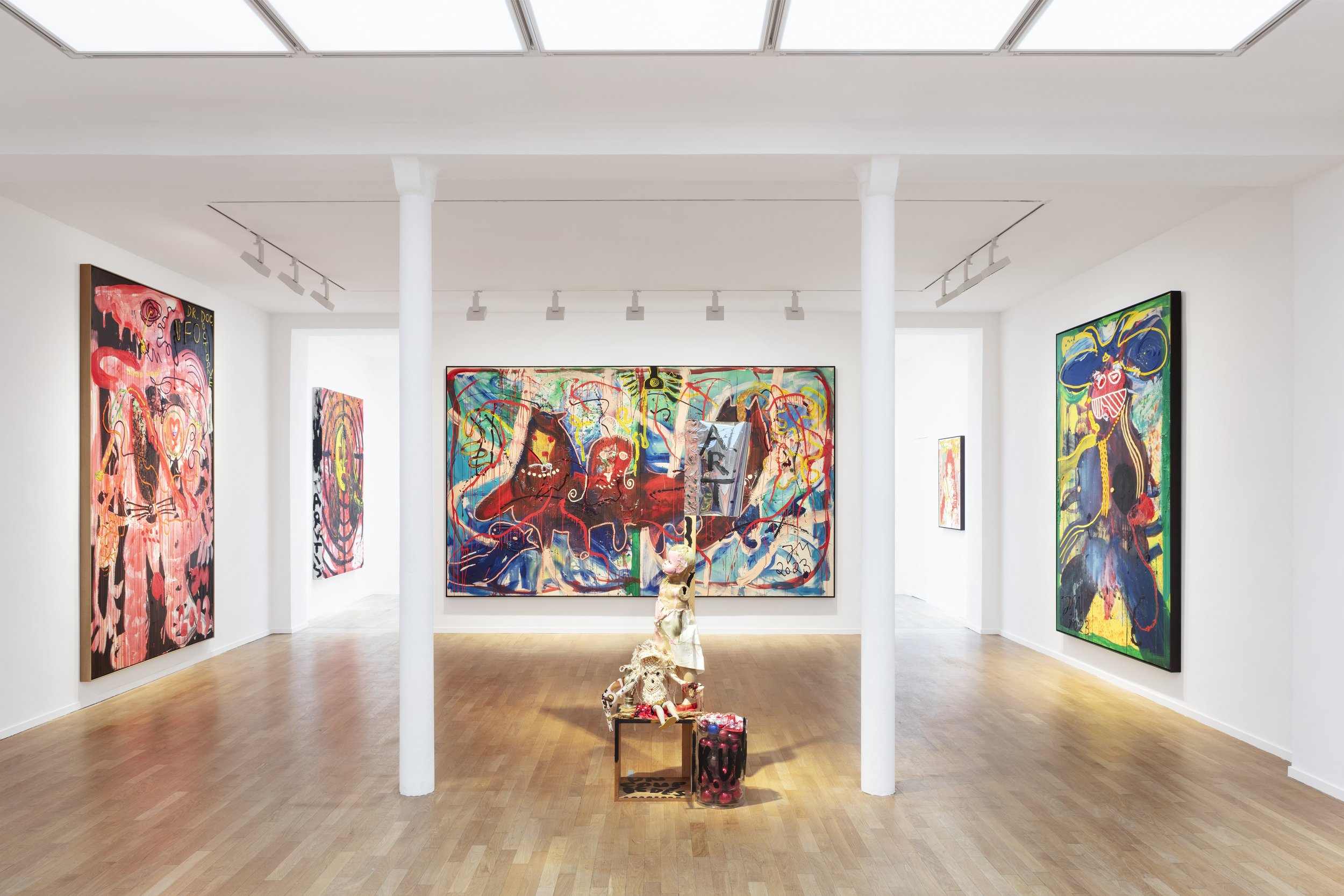
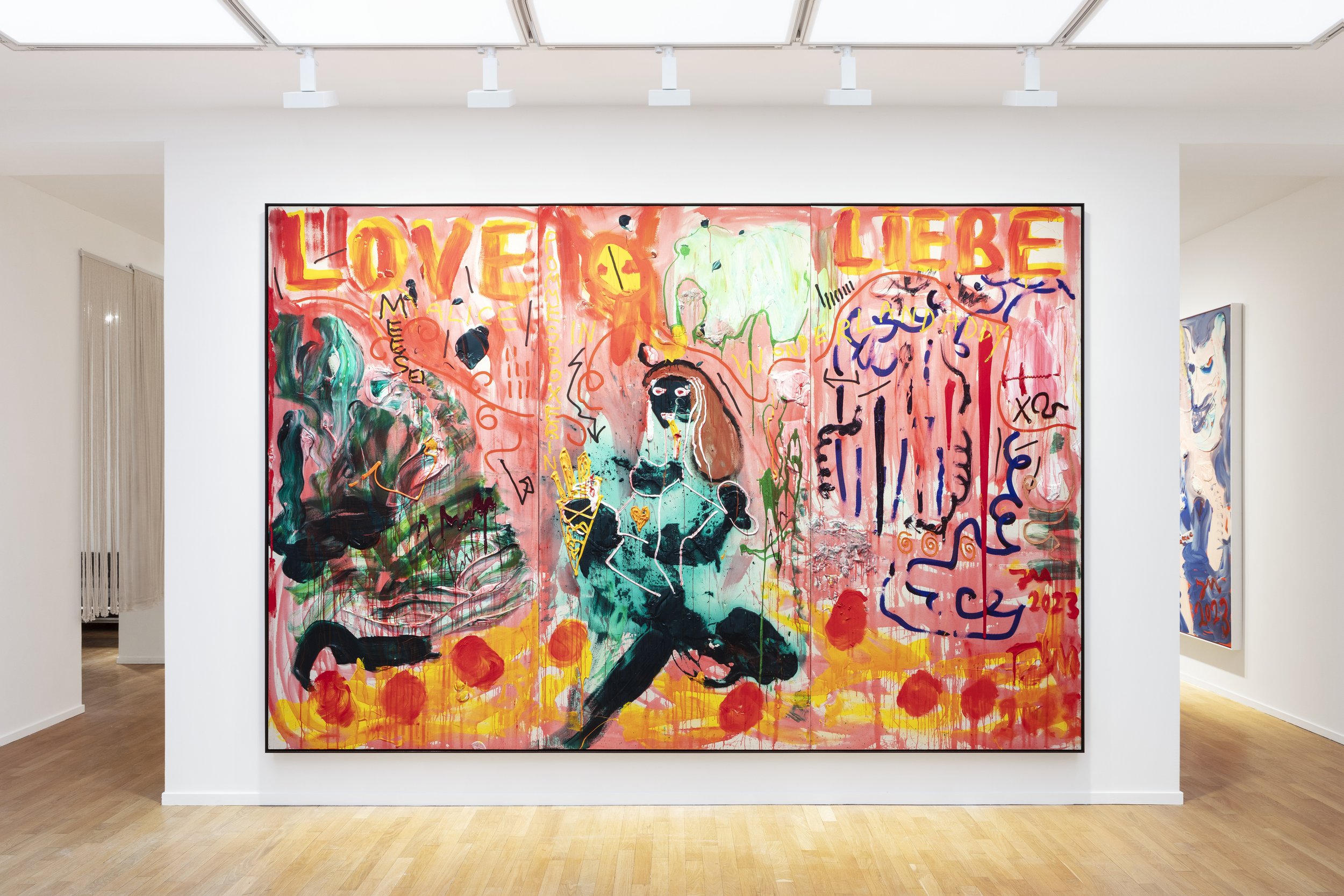
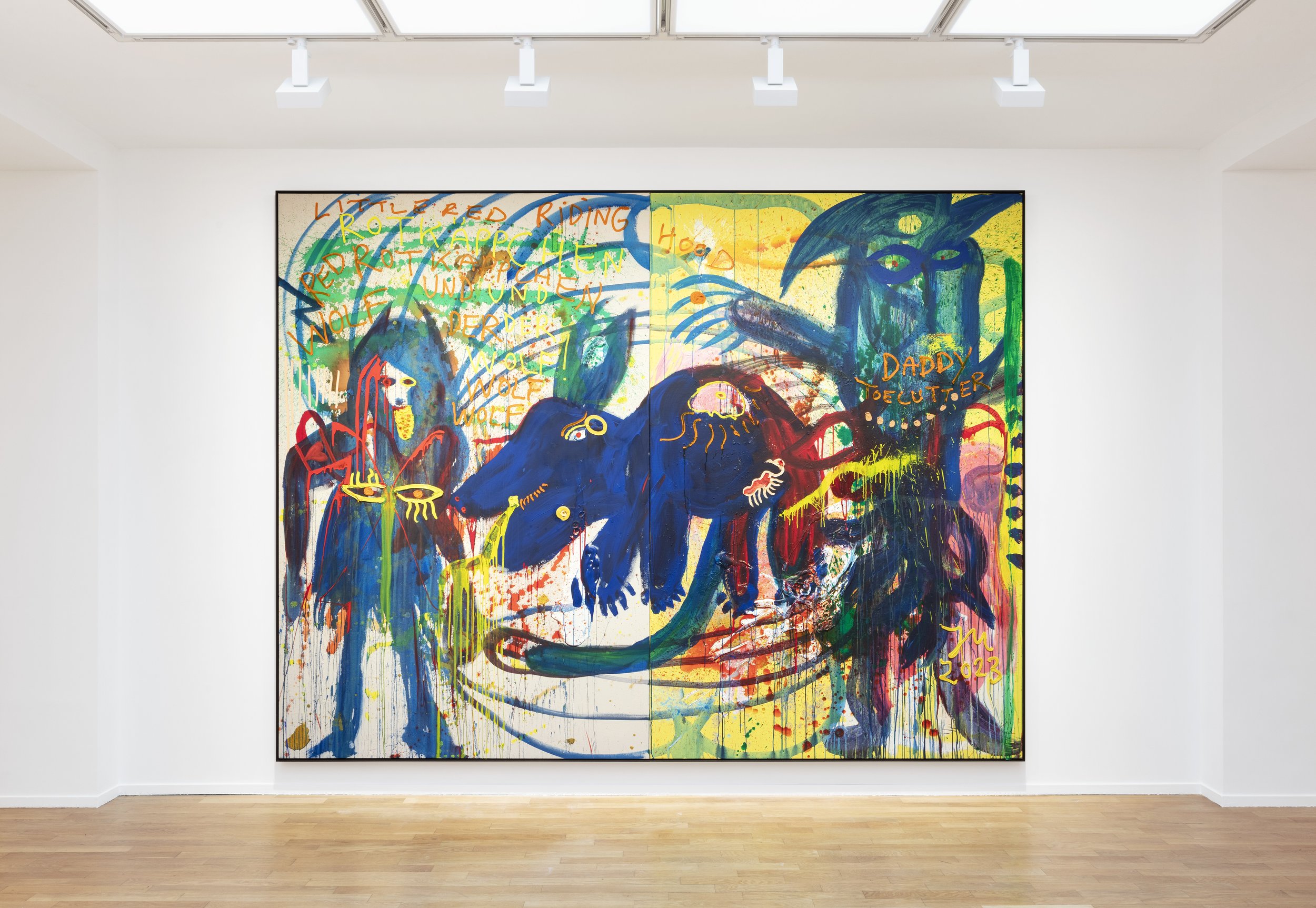
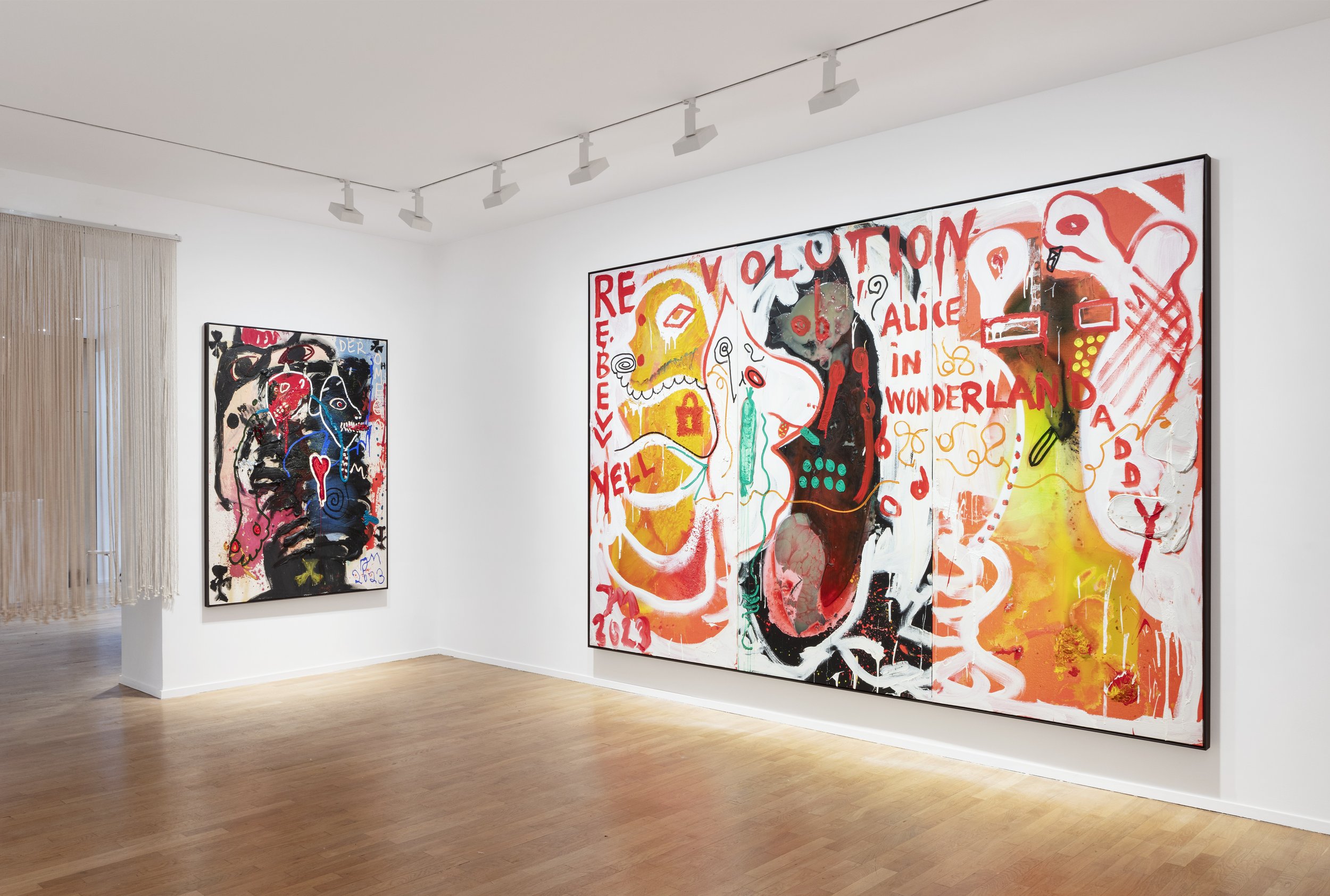
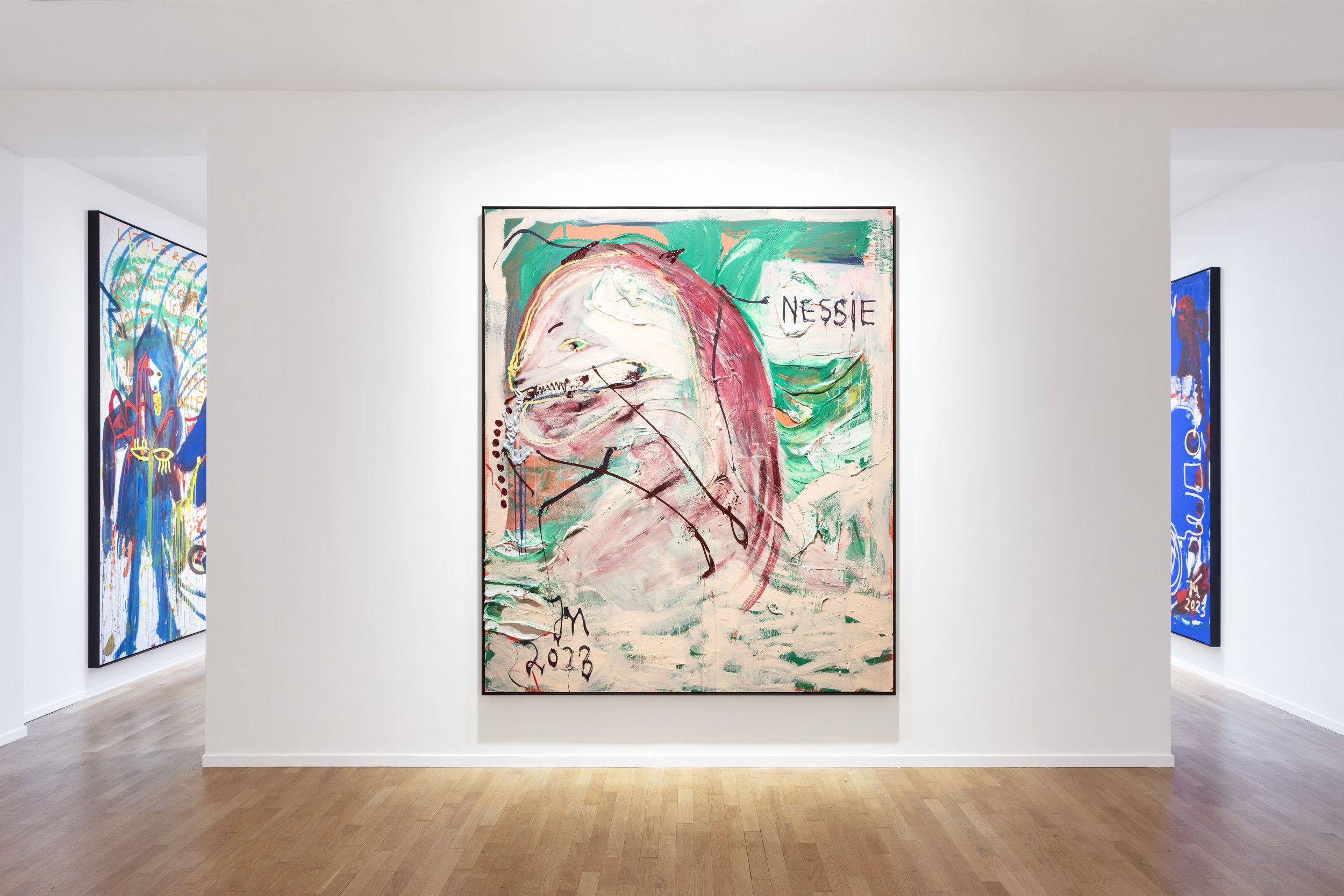
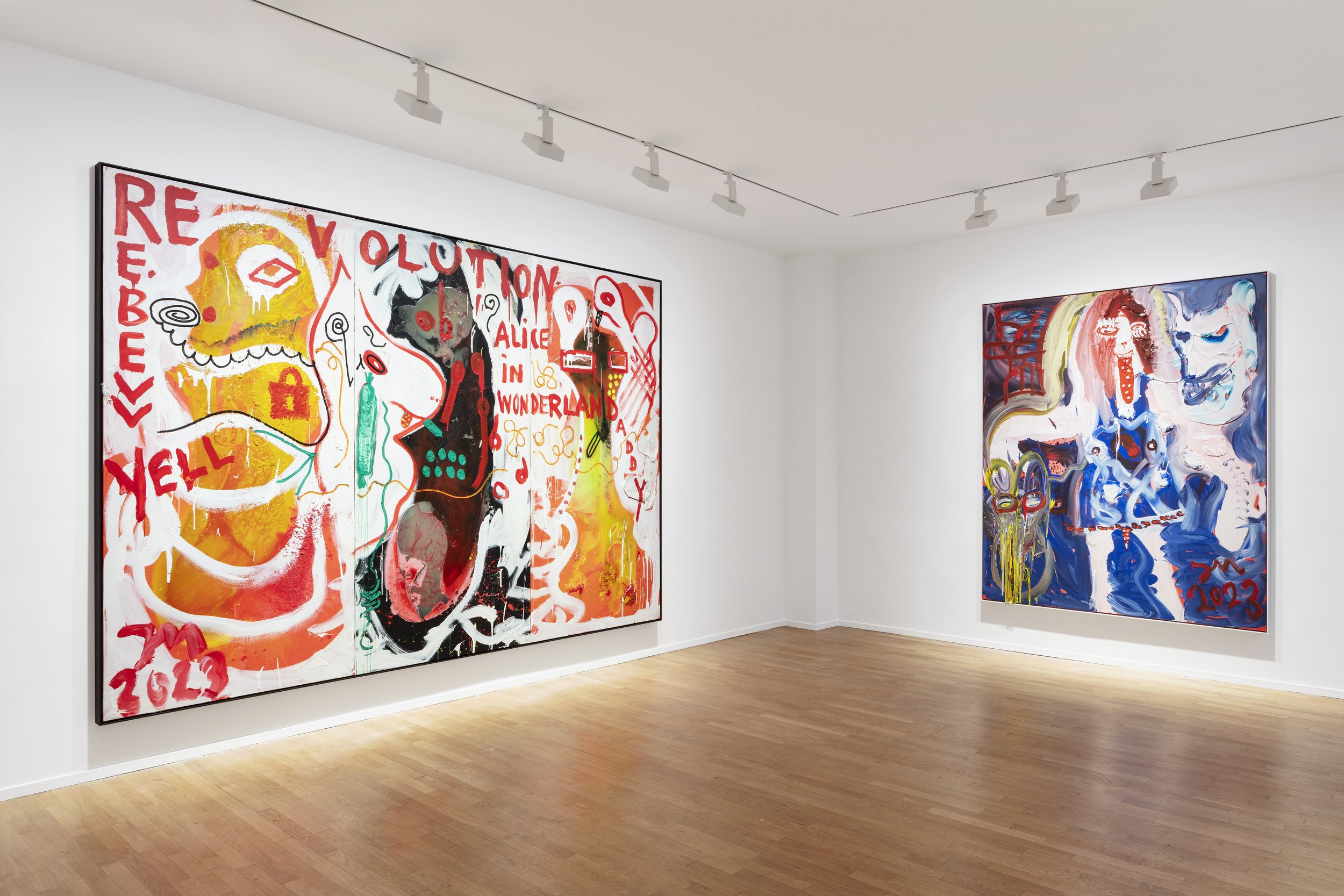
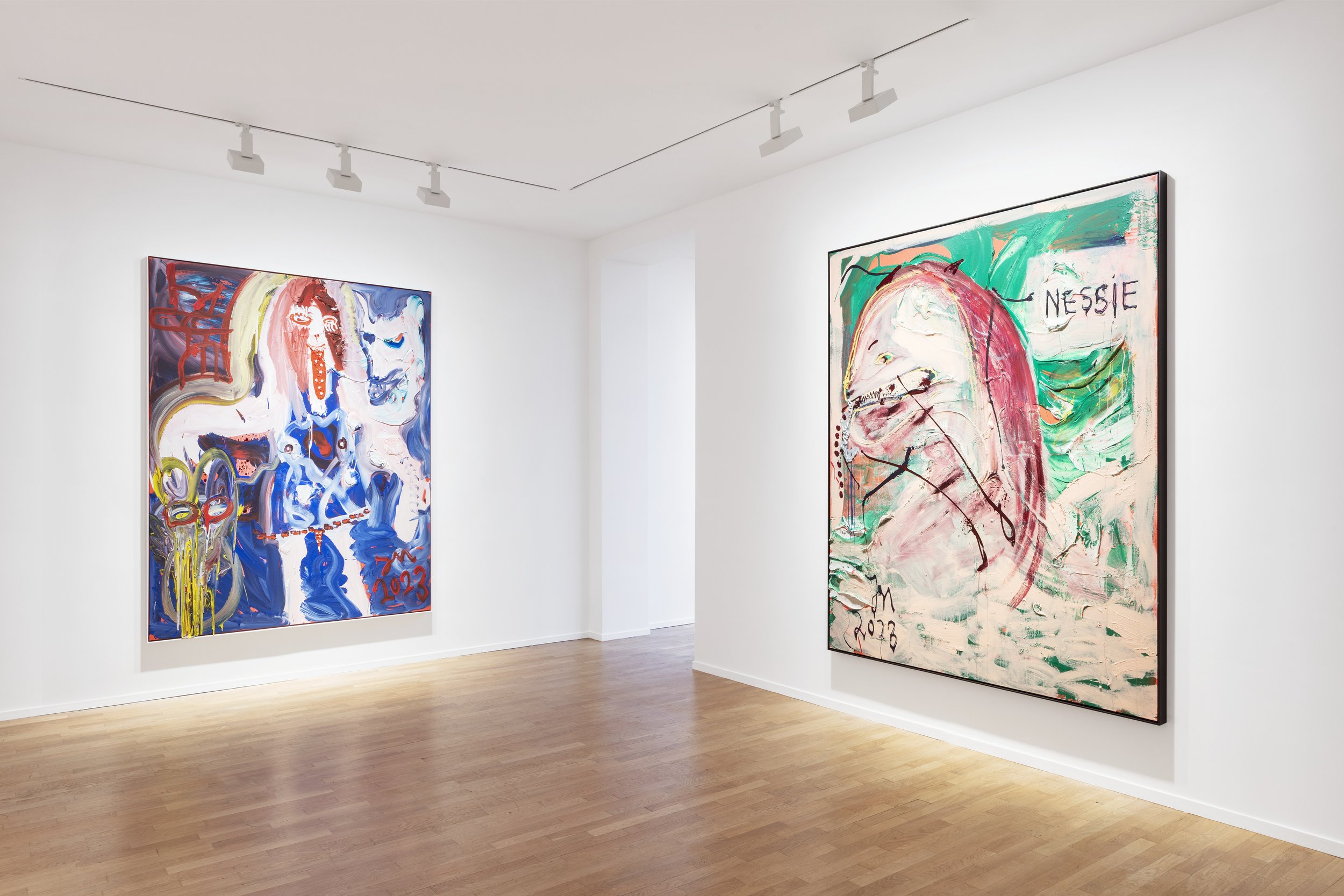
Toutes les images / All images :© Courtesy de l’artiste et TEMPLON,Paris —Brussels — New York
In 2013, the National Gallery of Modern Art in New Delhi organised the first retrospective of his work in India (curated by Ranjit Hoskote). In 2014, Bhau Daji Lad in Mumbai paid tribute to his work with a major exhibition: 7000 Museums. In 2019, he was among the artists showcased at India’s Venice Biennale participation, with a largescale installation dedicated to Gandhi.
This is the fourth exhibition of Atul Dodiya’s work at Galerie Templon.
For more information about this exhibit and other exhibits at the Templon Gallery, please visit their website here. Also, find the Gallery on Instagram and Artsy.
New Realism: Looking Forward and Back
After running galleries in New York for the past decade, Isabel Sullivan launched her eponymous gallery in the heart of Tribeca’s design and gallery district at 39 Lispenard Street.
The Gallery launched a group show on March 14 and will conclude on April 21 of this year. There was an opening reception for New Realism: Looking Forward and Back , which was held on March 14, 6 pm-8 pm. The exhibition features six New York-based artists, New Realism: Looking Forward and Back, curated by/featuring recent works of Neil Jenney (who has remained ardently committed to curating & exhibiting shows associated with Realism) alongside recent works by Elisa Jensen, Victor Leger, Joseph Santore, Mercer Tullis, and Frank Webster (Santore was also teacher to both Jensen & Webster). The show will feature approx. 30 works and the gallery is currently filming mini-documentaries about each artist to be played at the gallery during the show. Through Jenney’s painted, sculptural skyscapes, to Jensen’s shadowed, yet vibrant, intimate interiors, to Santore’s dynamic and existential paintings reflecting the human condition, to Tullis’ meditative yet piercing graphite works, and finally to Webster and Leger’s serene topographical canvases, the gallery poses the question: what is Realism today? Their reflections of nature and humanity are presented for us to behold, to momentarily possess and perhaps to stir a particular affect. The exhibition presents a survey of artists looking both forward and back – painting through the tides of today; attached is a small sampling from each artist of what will be shown (2 images for each artist, plus an initial artworks list with 18 works).


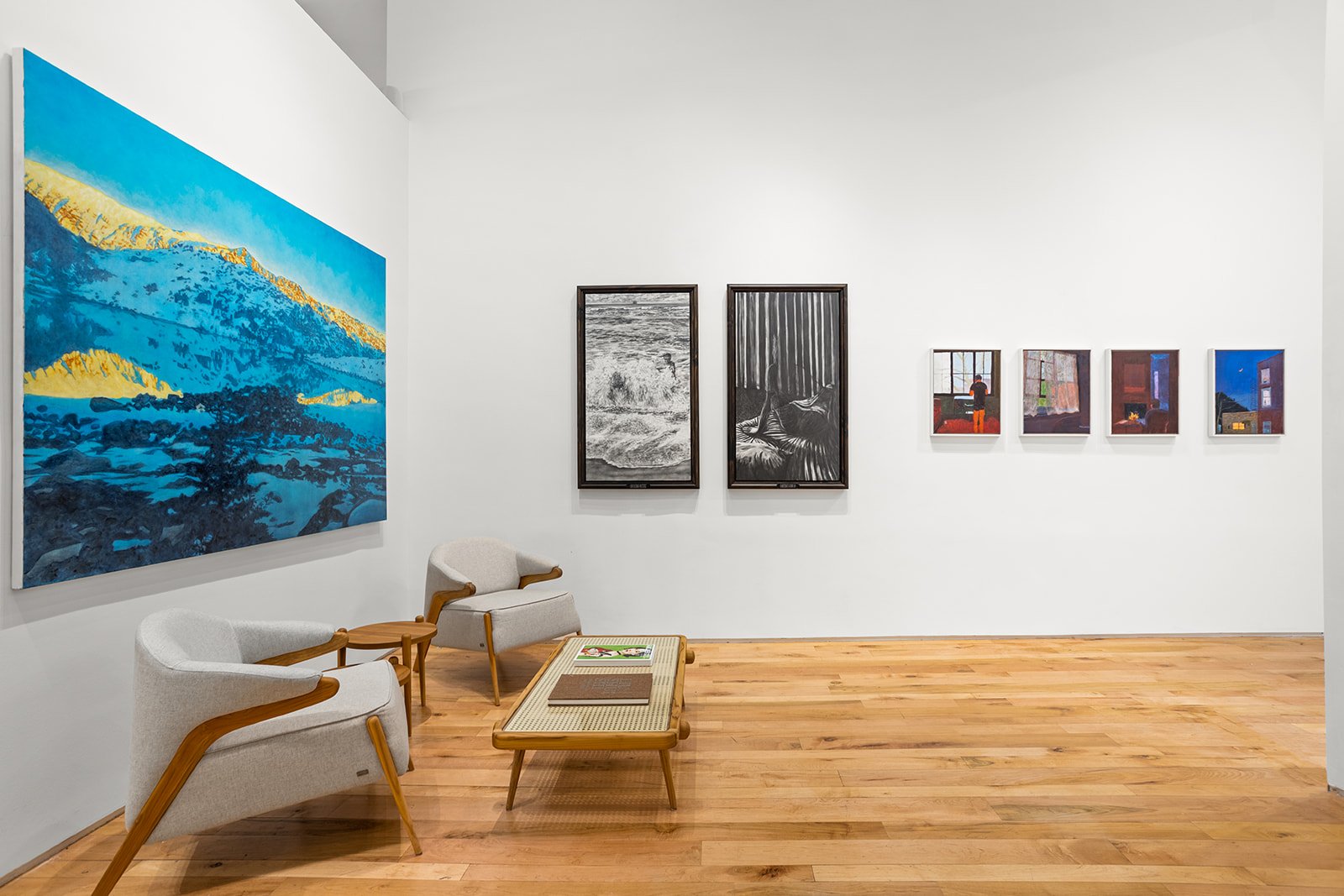
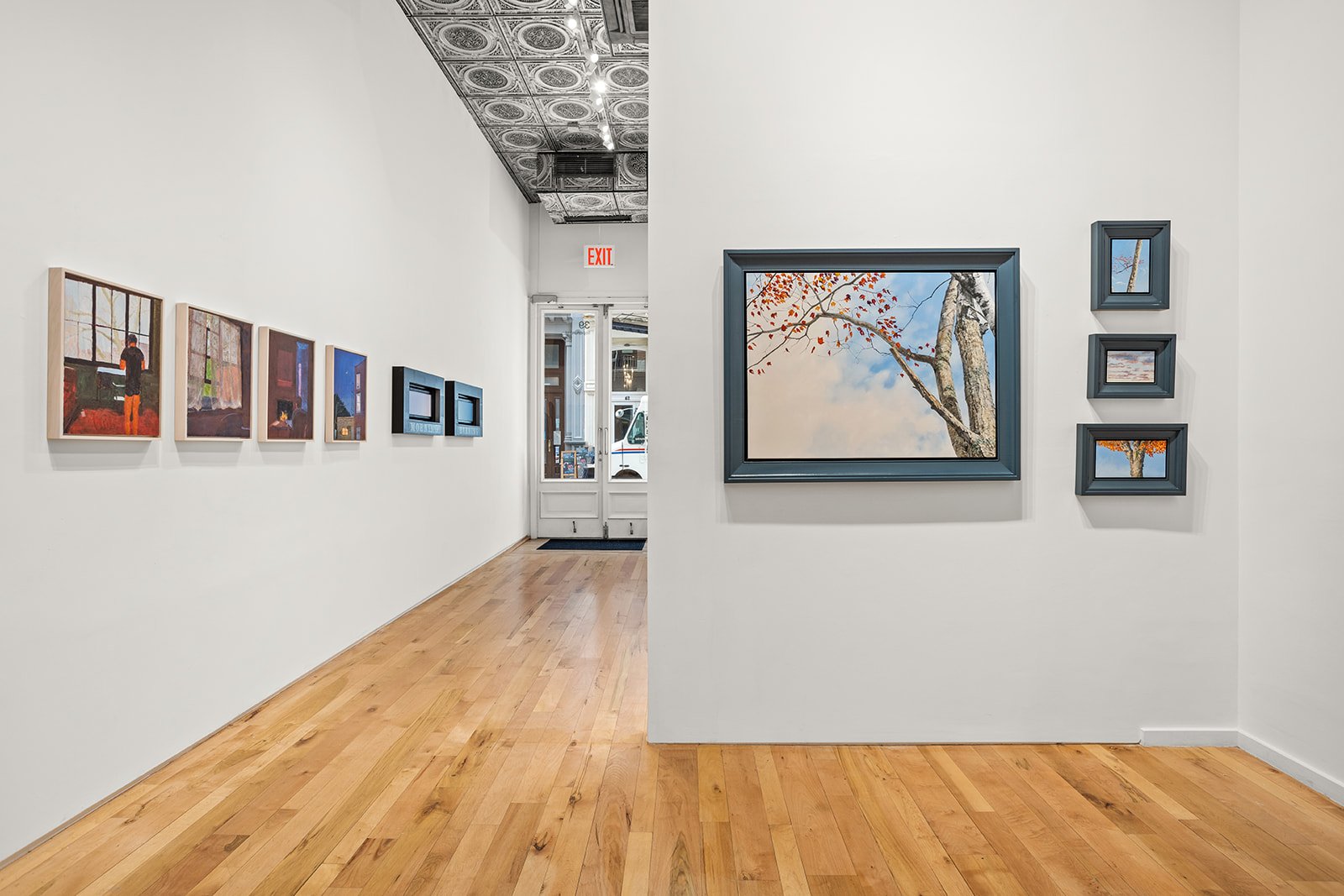
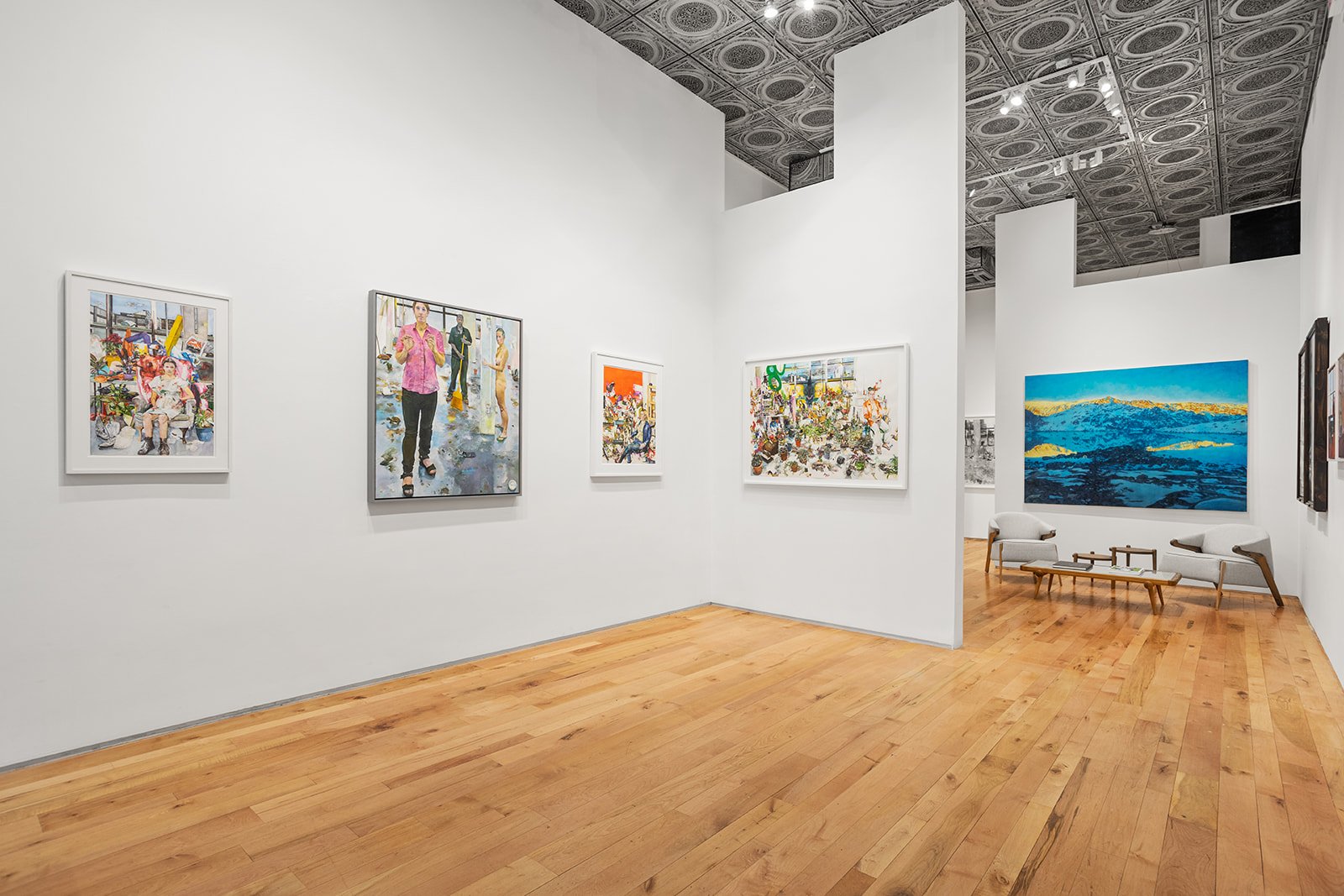
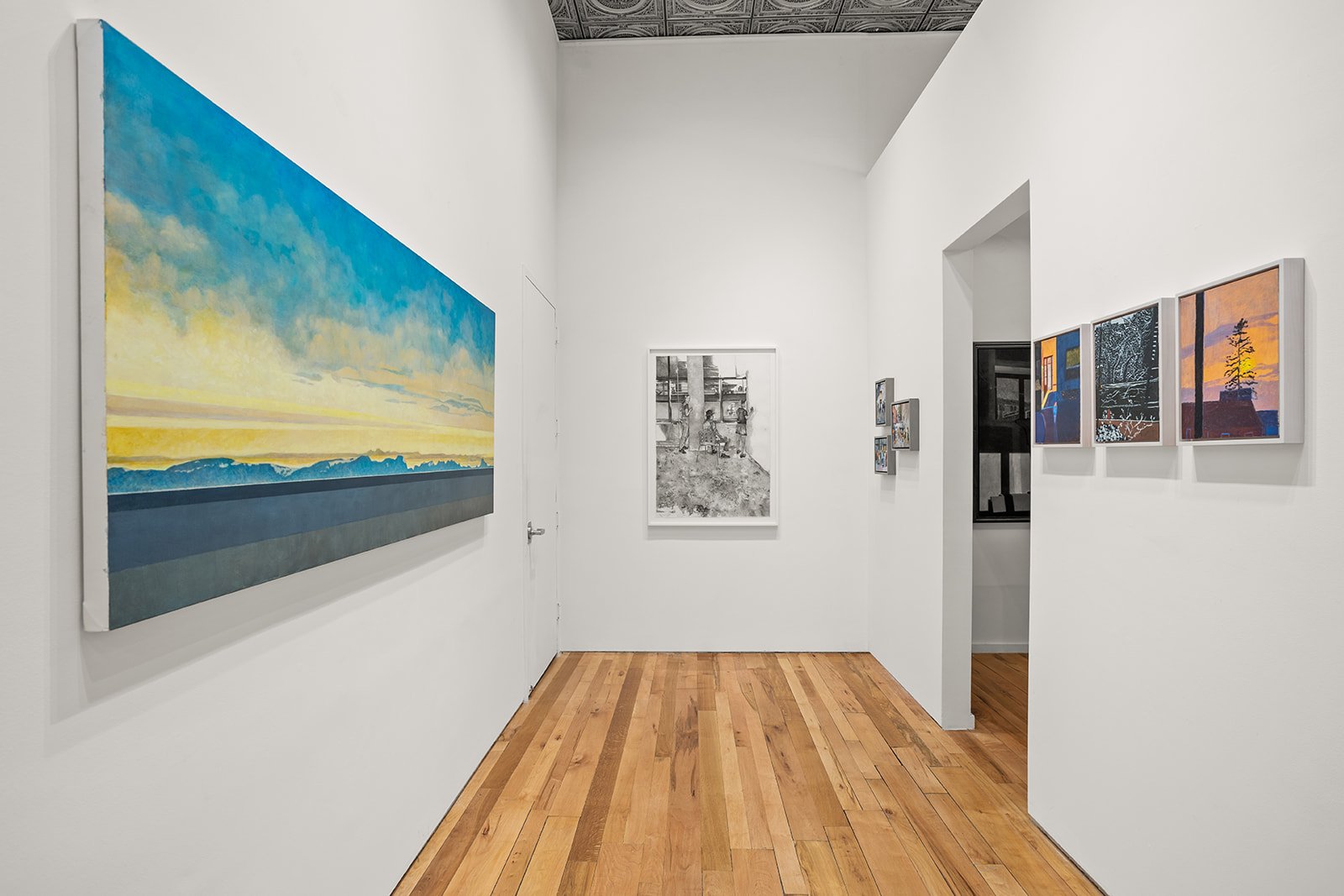
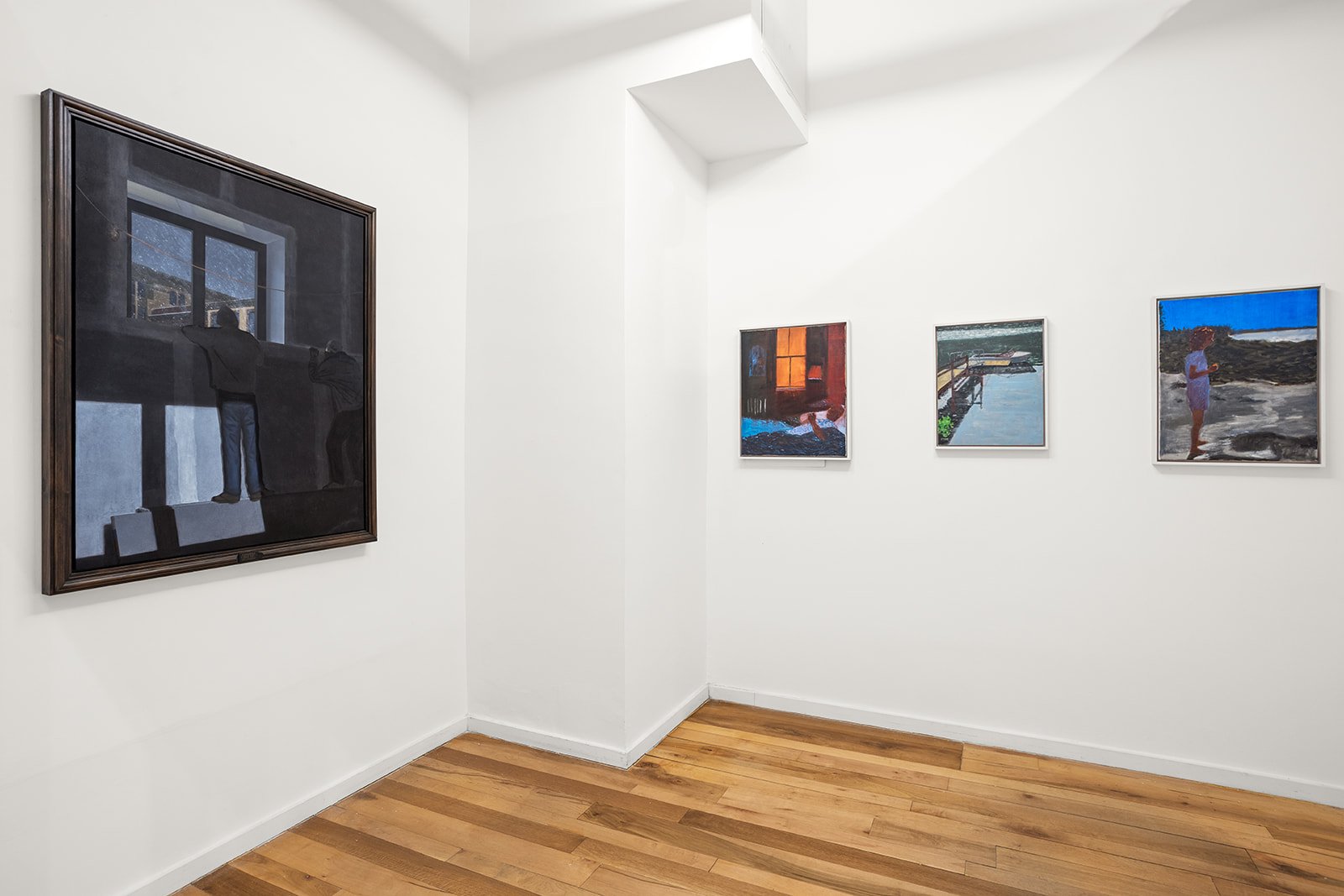
Installation view Realism Today: Looking Forward and Back, Isabel Sullivan Gallery New York, New York, March 14- April 21 2024, photo @ Isabel Sullivan Gallery
A myriad of iterations of Realism have emerged since its inception in late 19th century France. Gustave Courbet and Jean-Francois Millet sought to convey truth and objectivity through embodied depictions of modern life and its array of social classes. German artists Otto Dix and George Grosz’s meticulous Neue Sachlichkeit (New Objectivity) paintings, created during the short-lived Weimar Republic, responded to the brutality of the First World War. Their American counterparts, Edward Hopper and George Bellows, created a new American visual idiom through their depictions of the urbanization of America and its shifting class structures. Despite the disparate geographical production of these Realist painters, what each respective iteration shares most prominently is their emergence and proliferation following great moments of social, political, or cultural change. The past few years have been no exception to this artistic penchant, as there has been an increase in artists turning to themes intrinsic to Realism, and a recommitment to time-honored subjects, such as genre, landscape, and figurative. Realism has always functioned primarily as a means to record our epoch and its dwellers, however in its present context, the paintings included in this show possess both objectivity and expression.
Realism Today: Looking Forward and Back presents a selection of paintings that utilize various concepts and technical aspects of Realism, which today stands as the rebirth of the three-dimensional picture plane, and a turning away from abstraction. The artists included explore both internal and external space, the natural world and urban life, memory, and imagination, offering a respite from the modern world.
More on the artists:
Neil Jenney - Neil Jenney is an American painter and sculptor born in 1945, in Torrington, Connecticut, and working in New York City. His last solo exhibition was at Gagosian gallery, titled AMERICAN REALISM TODAY, from November 9, 2021–January 29, 2022 at 976 Madison Avenue, New York.
Neil Jenney - Morning (2022, acrylic on canvas 18x32in)
Elisa Jensen - Elisa Jensen (b. 1965, Bridgeport, CT) lives and works in Brooklyn, NY. She has received awards for her work from the New York Foundation for the Arts, The National Academy Museum, and The American Academy of Arts and Letters. Elisa graduated from Smith College and the New York Studio School. She currently teaches at the New York Studio School and Pratt Institute.
Elisa Jensen - Brooklyn Morning (oil on wood panel 20x16in).
Victor Leger - Leger was born in 1961 in Canada. He studied at Pratt Institute and the San Francisco Art Institute in the early 1980s. He splits his time between Connecticut and Maine, and was discovered in New York by Neil Jenney. Leger is also a woodworker, building his own frames.
Victor Leger - Elegy to R. Motherwell, no. 25 (2021, oil on panel 55x43x3in)
Joseph Santore - Santore was born in 1945 in Philadelphia. His work was chosen for the poster of the 1991 Whitney Biennial. His works have been exhibited at the Whitney Museum of American Art, Tucson Museum of Art, Denver Art Museum, Staten Island Museum, National Academy of Design, NY, Pennsylvania Academy of the Fine Arts, Philadelphia, The Aspen Art Museum. Santore is in the permanent collections of the Metropolitan Museum of Art, New York, Cincinnati Museum, Chase Manhattan Bank, Hunter Museum of Art, Chattanooga, TN, National Academy of Design, NY, Phoenix Art Museum; Rhode Island School of Design, Tucson Museum of Art, Yale University Art Gallery, Denver Art Museum, among others. Santore was a teacher at the New York Studio School, where he taught artist Elisa Jensen, and at the Skowhegan School of Painting, where he taught Frank Webster.
Joseph Santore - The Studio (2024, watercolorand gouache on paper 35x49in).
Mercer Tullis - Tullis was born in 1994 in New York. Mercer began formally studying at the Art Students League in 2013, taking drawing classes under Robert Cenedella, whose studio was across the hall from the loft he grew up in. Soon after beginning at the Art Students League, Mercer began assisting realist & “bad painting” pioneer Neil Jenny. Tullis is a self-taught painter and woodworker, building all of his own frames.
Mercer Tullis - Officers (2016-2018, oil on gessoed ply 50.25x39.25x2.50in).
Frank Webster - Webster was born in Fort Wayne, Indiana, in 1966, and received his BFA from the School of the Art Institute of Chicago and his MFA from the Mason Gross School of the Arts at Rutgers University. Some of the residencies he has been granted include the Arctic Circle Residency, Burren College of Art in County Clare, Ireland, the NES Artist Residency in Iceland, The Ucross Foundation in Wyoming, The MacDowell Colony in New Hampshire and the Sharpe Walentas Studio Program in Brooklyn. He has participated in many group and solo exhibitions at museums and galleries, such as the Zimmerli Museum of Art, the Bronx Museum of the Arts, Steffany Martz Gallery, the Parrish Art Museum, Blackston Gallery, and many others. In early 2022, Webster was commissioned to execute The Stone—a monumental Icelandic landscape—by the Durst Organization for the library for the newly constructed SVEN residential project in Long Island City, New York. Webster currently lives and works in Queens, New York.
Frank Webster - Hunafloi Bay (2020, acrylic on canvas 36x84in).
Diego Samper : The Jaguar’s Eye
Courstey of Diego Samper
Wild Symphony is an exploration of sound as essential energy and of the archaic origins of music as invocation and spell, a fundamental music that reclaims our belonging to the natural order in resonance with the breath and pulse of Life.
In Calanoa Natural Reserve, a conservation project deep in the Amazon Forest, professional musicians are invited to share with local indigenous singers and storytellers in long improvisation sessions, listening to the natural music, the Symphony of Life, and responding to it. From the first encounter, a Symphony and a film were created. The second one, The Jaguar’s Eye, is a live performance and audiovisual experience to be projected in full-dome spaces, with a premier happening at the Medellín Planetarium, Colombia, on May 15th, 2024.
Diego Samper, the project’s director and audiovisual designer, has been involved with the Amazon Forest for 5 decades, living and exploring the deep forest. This work synthesizes his life-long search of the Wild.
Musicians First Wild Symphony
Pablo Segundo, Aníbal Samuel, Raimundo Makuna, Enrique Yukuna, Teto Ocampo, Alejandra Ortiz Almunis, Marcus Berg, Juan Camilo Paulhiac, Coque Gamboa, Dominique Vaughan, Gabriel Hernández, El Vergel children’s choir, José Villa Ticuna(director). Marlene Escobar, production.
Musicians The Jaguar’s Eye
Darío Yukuna, Luciano Yukuna, Angélica Ocaina, Moises Criollo, Diana María Restrepo, Gina Sabino, Sandra Parra, Juan Camilo Paulhiac, Cristina Rubio, Luis Torres, Peter Harper. Marlene Escobar, producción
Diego Samper, direction, field recording, audio and video edition.
Marlene Samper, production.
Recorded in the Calanoa Natural Reserve, Colombian Amazon.
Edited in The Rainforest Studio, Gibsons, BC, Canada.
Marlene and Diego Samper have worked extensively on the research and recording of wild soundscapes and the voices of traditional cultures. As a result of this came the CD and book Voces de la Tierra (Voices of the Earth), an exploration of the geography of wild soundscapes in Northern South America, published in 1999. Amazon Chant, 2017, is a sound installation commissioned by the Museum of Anthropology of UBC, a five-hour weaving of voices in seven indigenous languages and soundscapes of diverse regions of the Amazon basin.
Please visit his site here for more information about this project and Diego’s work. Also, Diego’s interview with Arte Realizzata can be found here.
DANIEL DEZEUZE : Mesoamerica Lost Cities and Last Refuges
Toutes les images / All images :© Courtesy de l’artiste et TEMPLON, Paris —Brussels — New York
Galerie Templon is dedicating its spring show in Paris to the founding member of the avant-garde movement Supports/Surface, Daniel Dezeuze. Now 82, he is showing his latest work, which encompasses sculptures, paintings, drawings, and an installation. The exhibition opened on March 2nd and will conclude on April 27th, 2024.
Mesoamerica is a personal reflection inspired by Daniel Dezeuze's travels to Mexico and local Maya architecture. Daniel Dezeuze visited Mexico for the first time in the mid-1960s. The year he spent there proved to be a lasting influence. His latest works, wall assemblages made using offcuts of painted wood, hark back to the pivotal experience in the jungle, home to long-gone civilizations. The ground floor of the exhibition features a "negotiating table" surrounded by an installation of "weapons" and "shields," evoking the tensions between nature and culture.
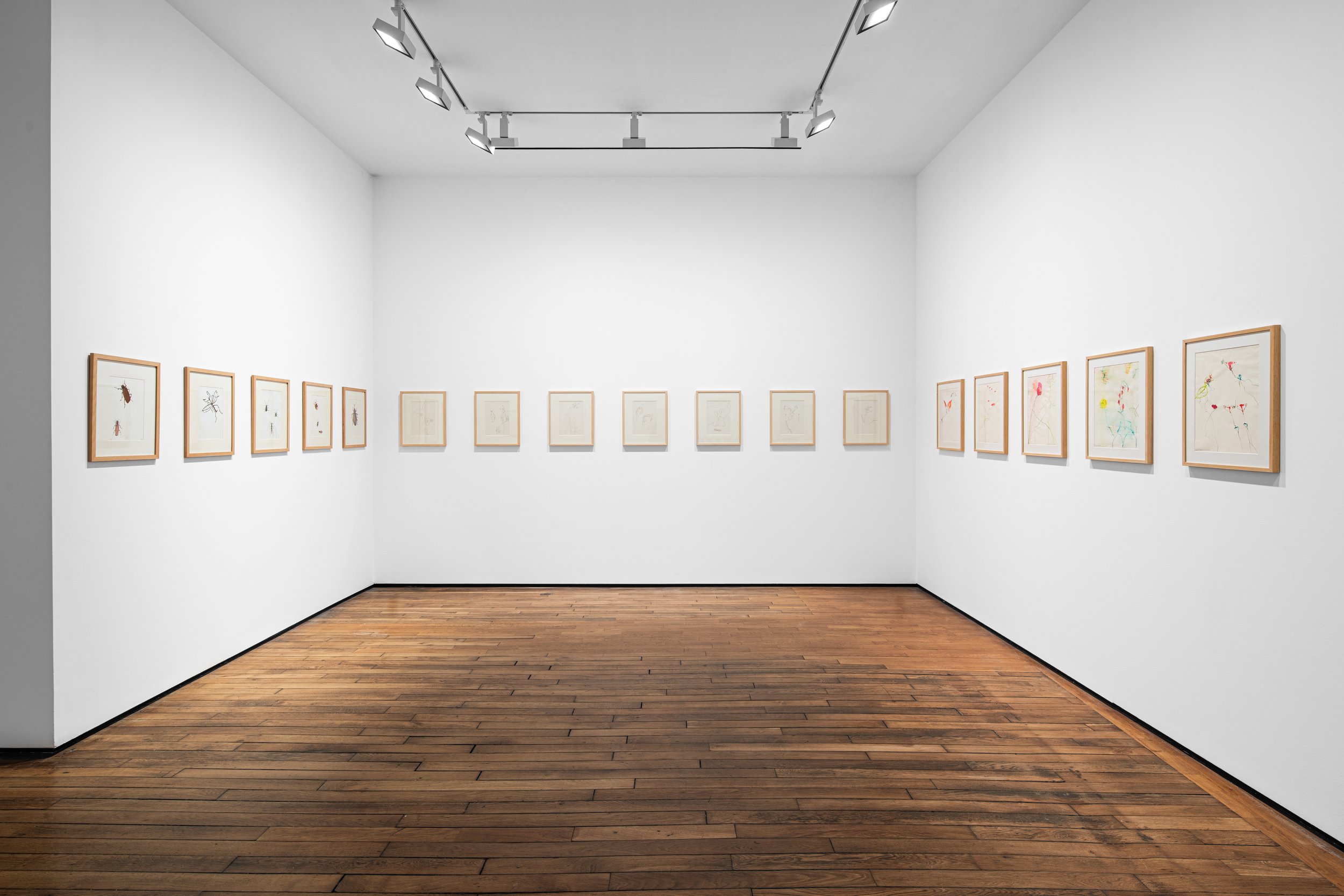
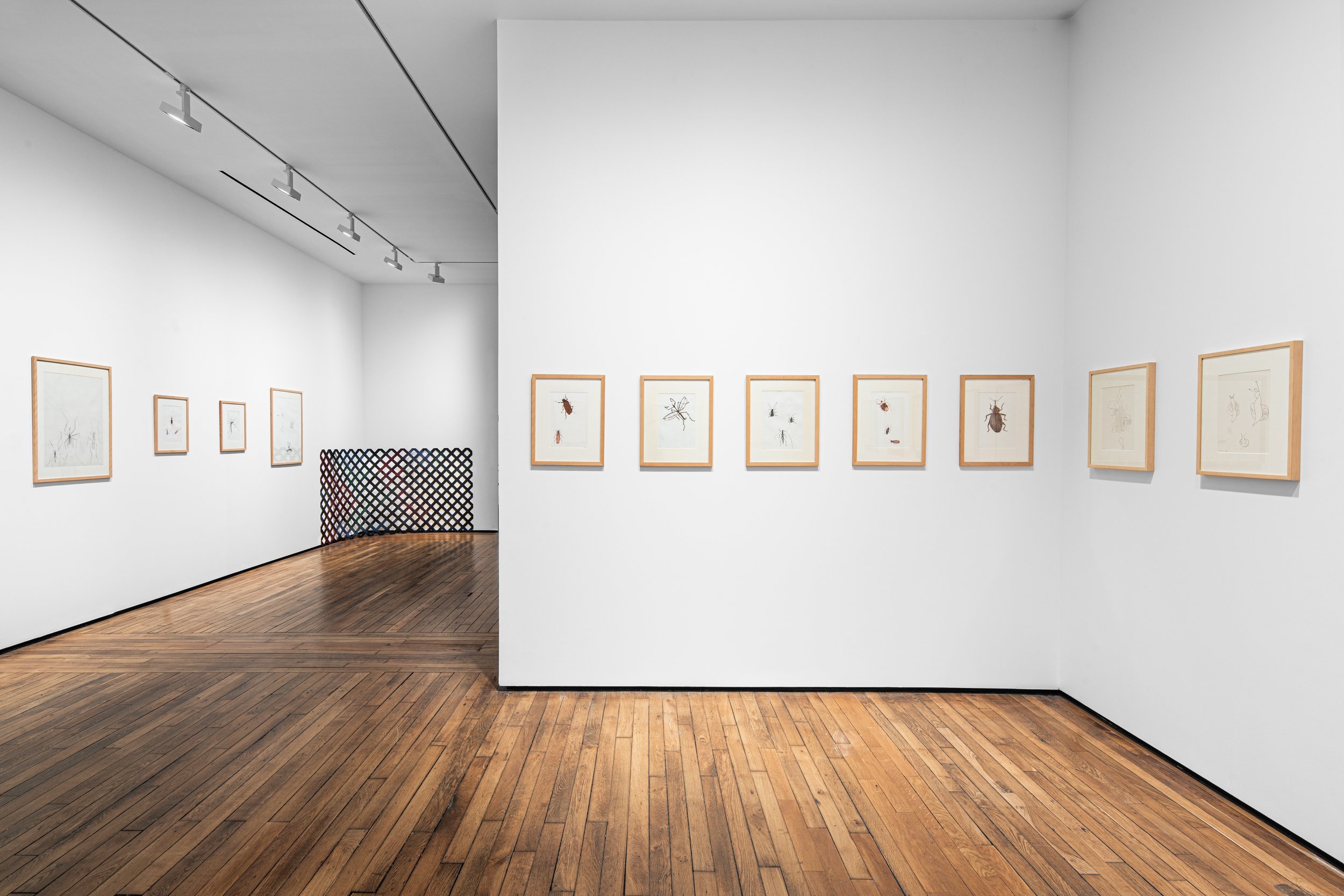
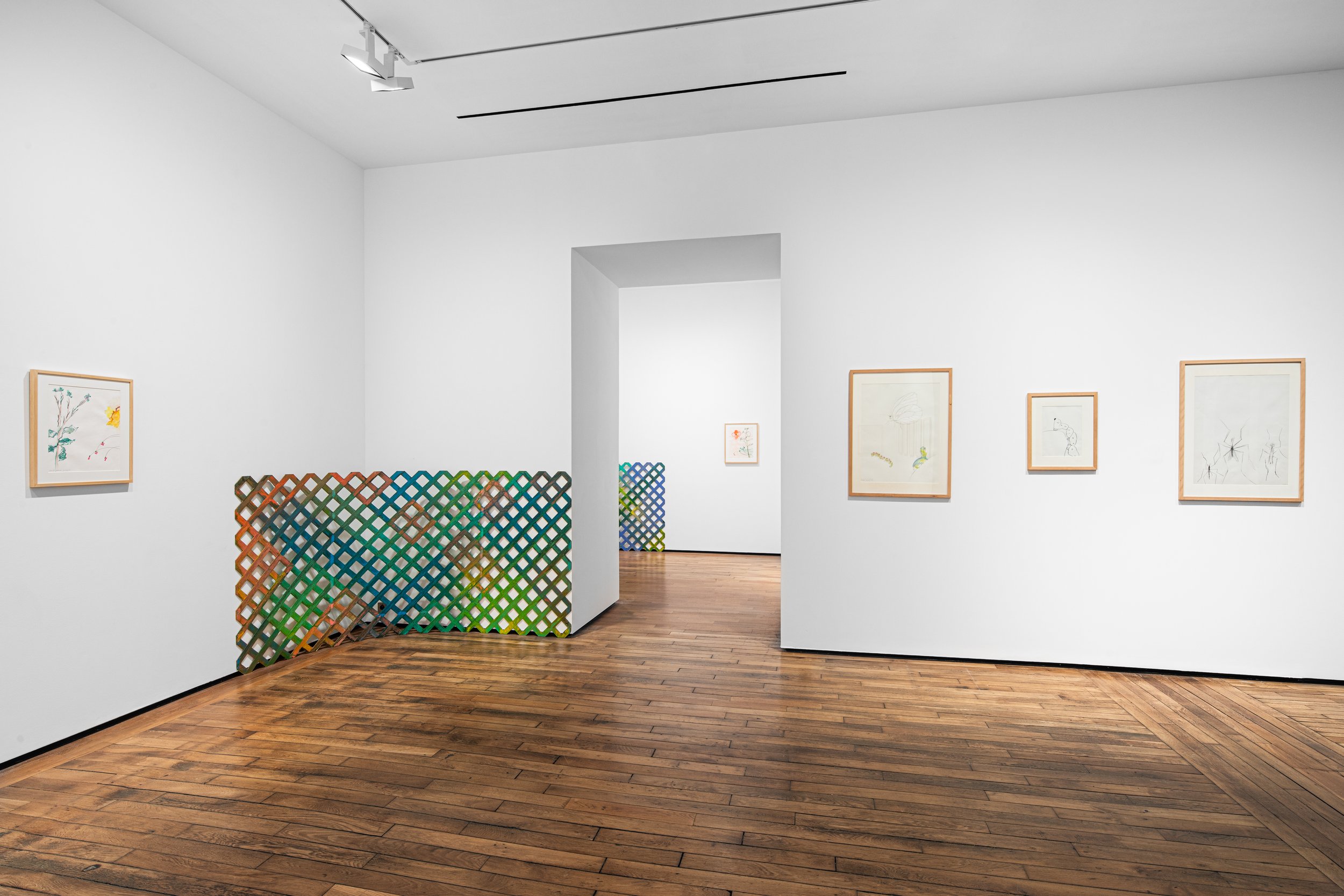
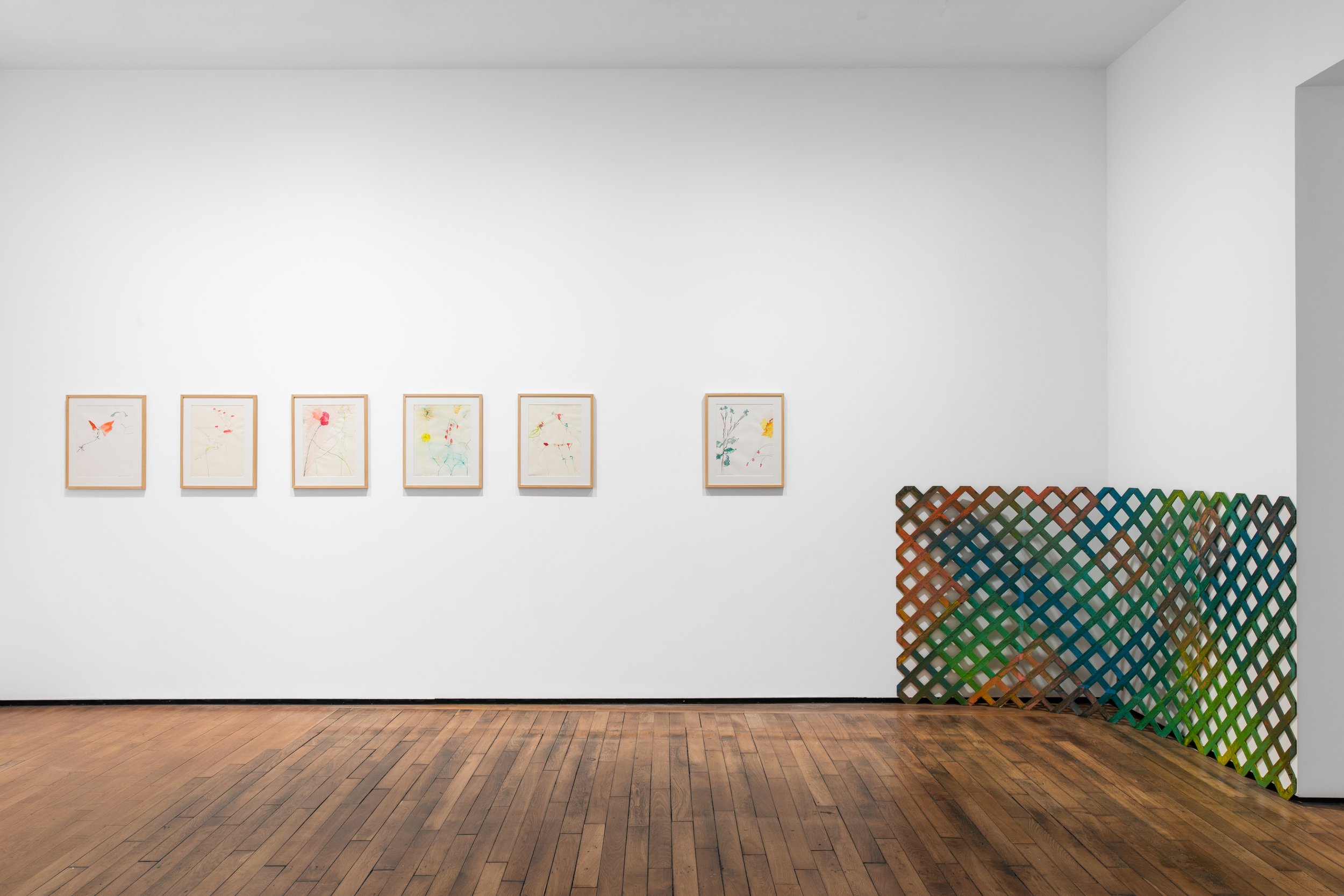
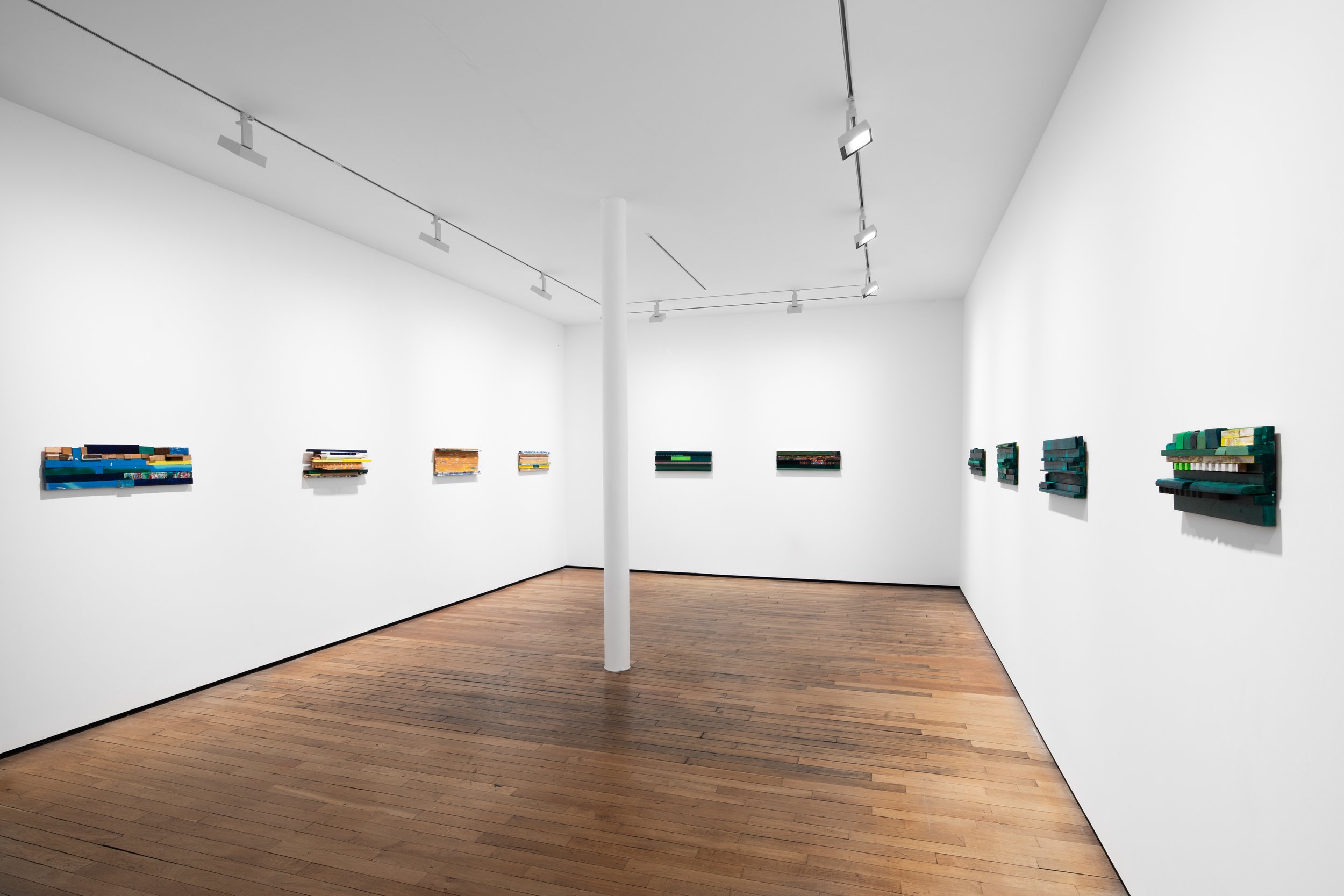
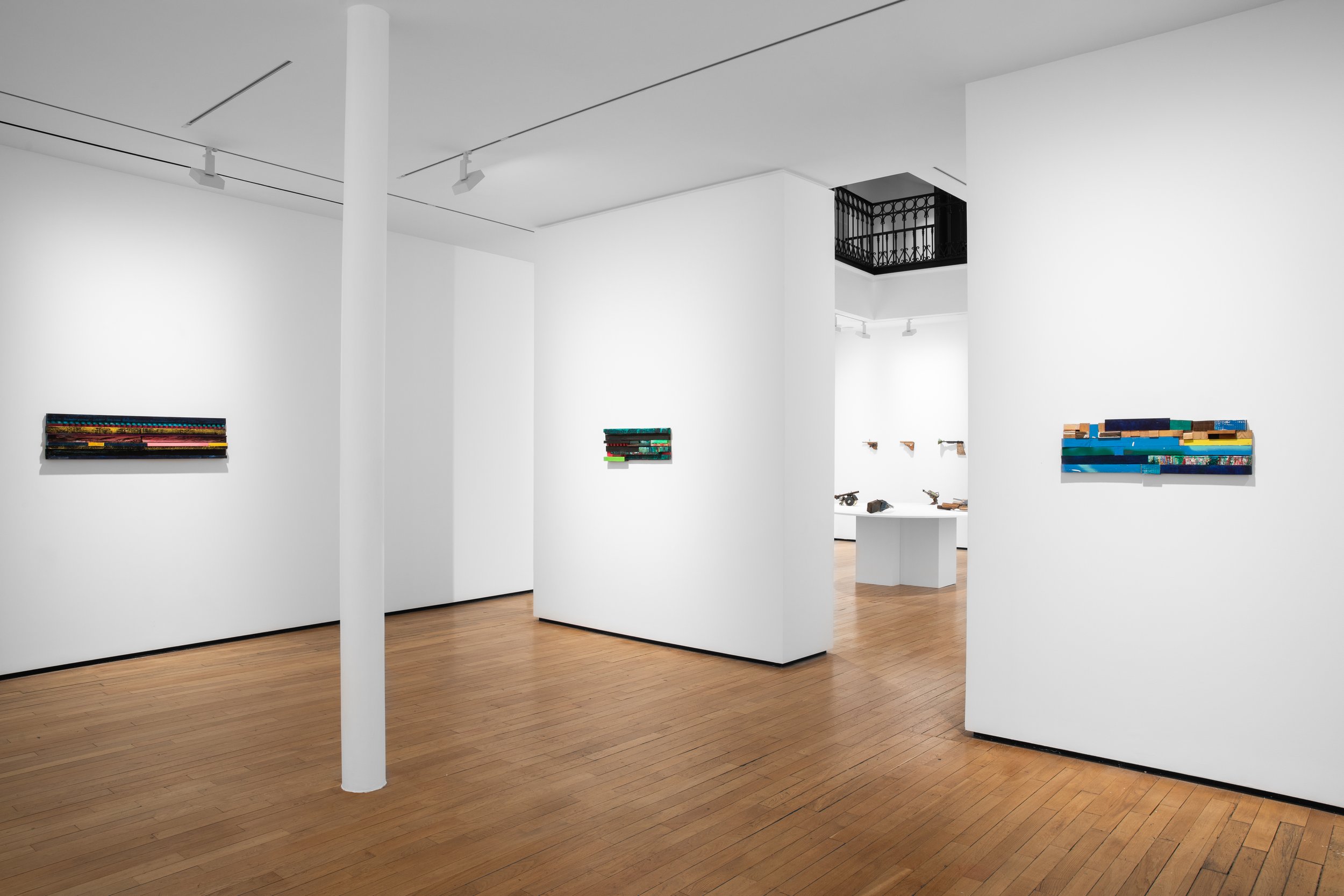

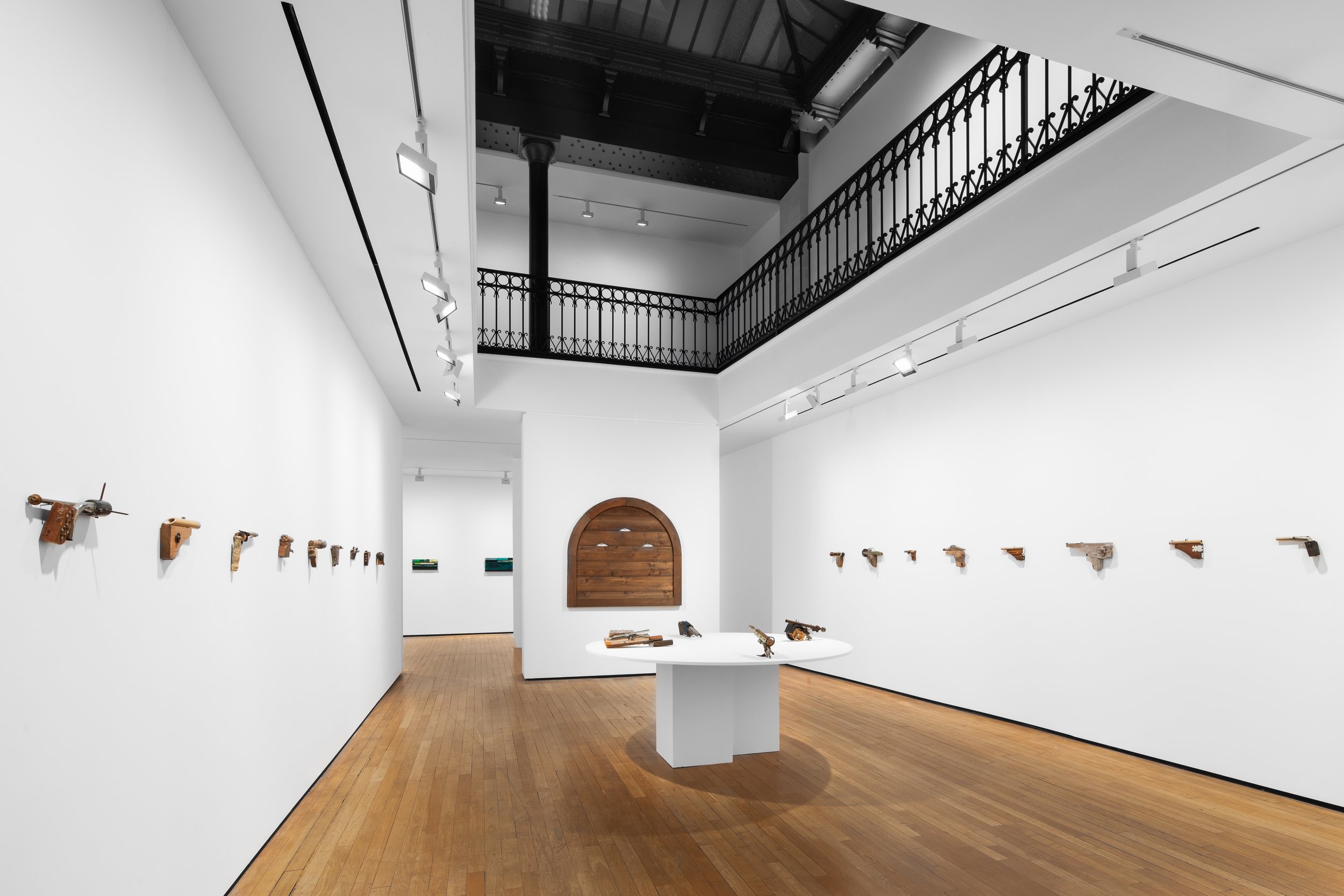
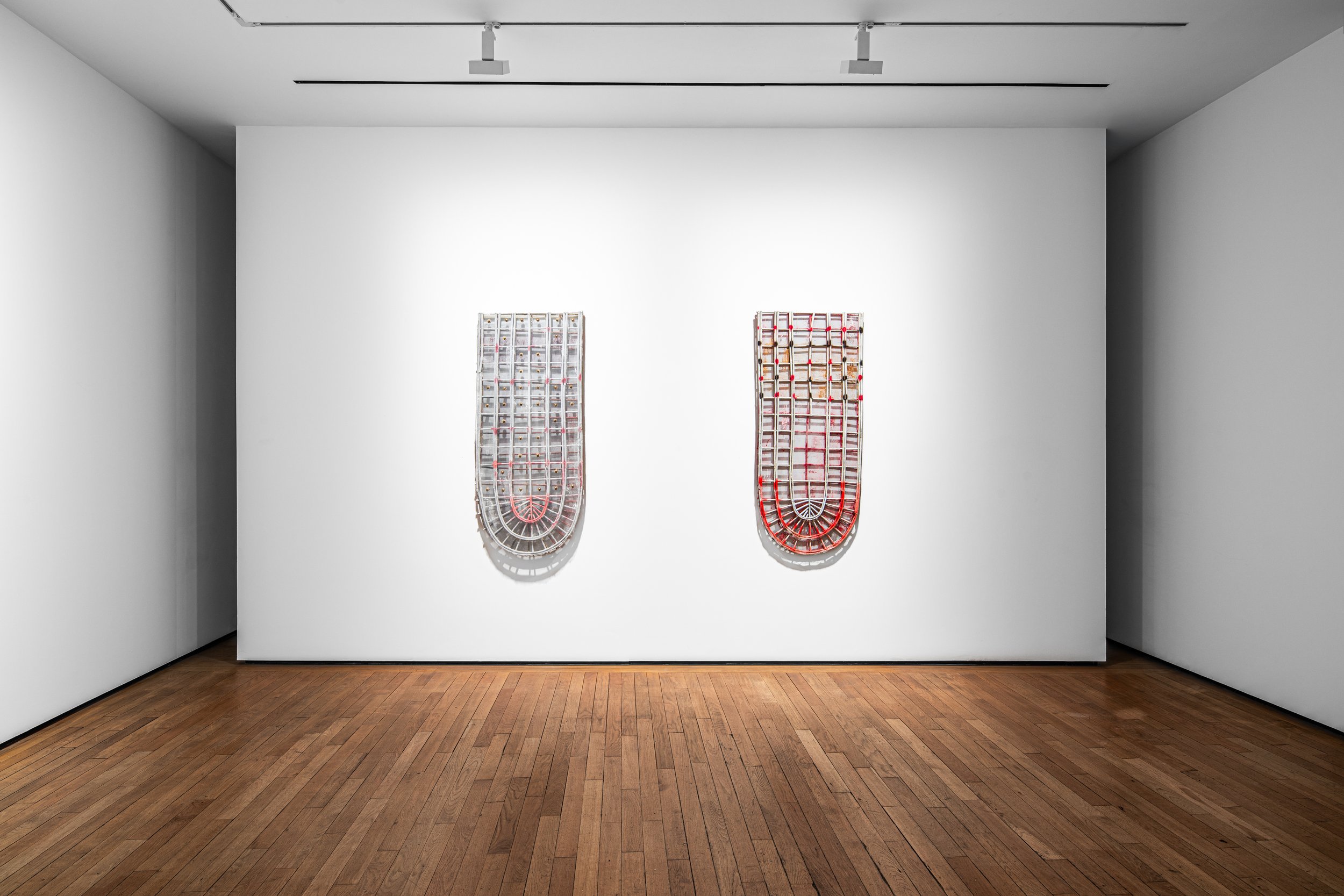
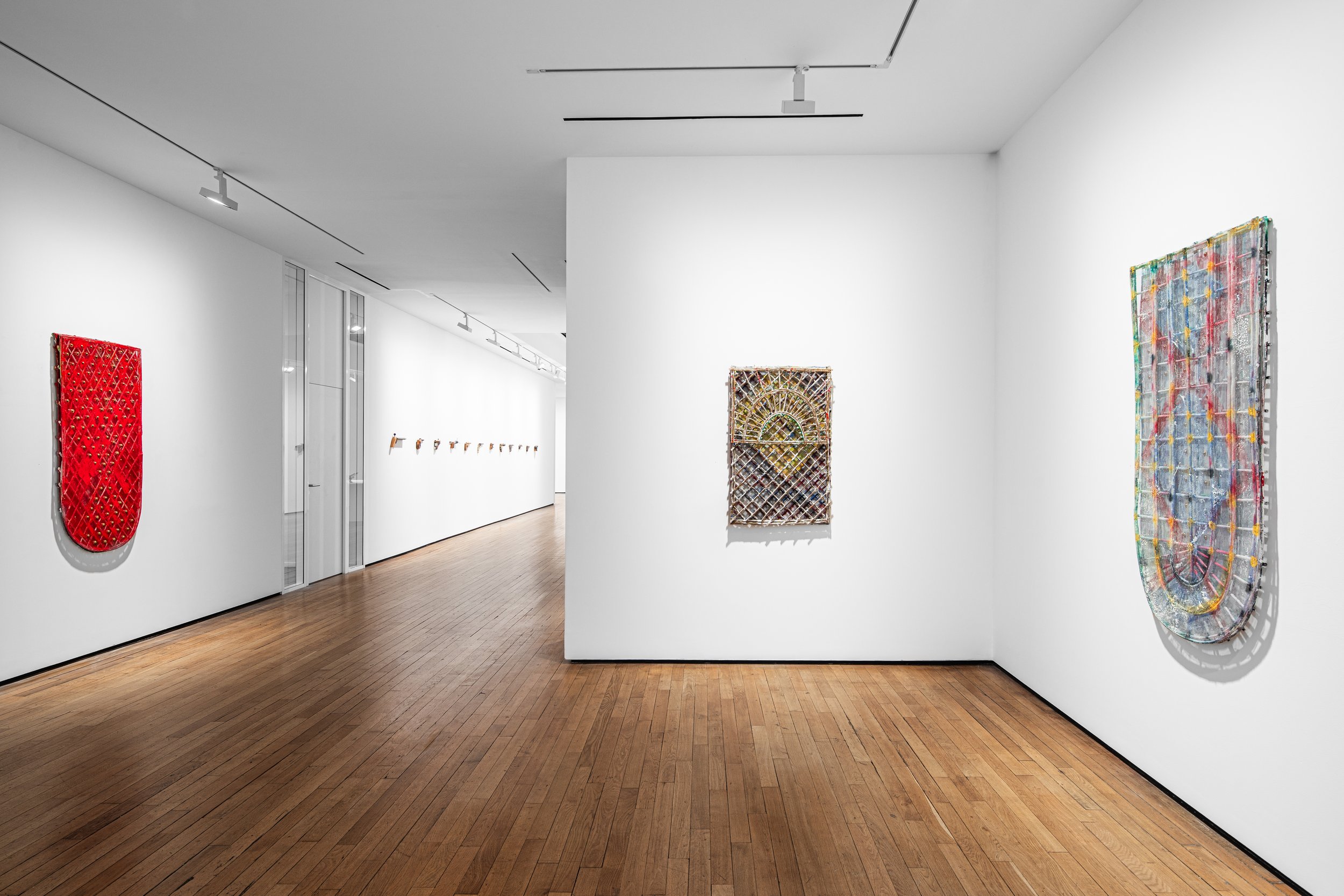
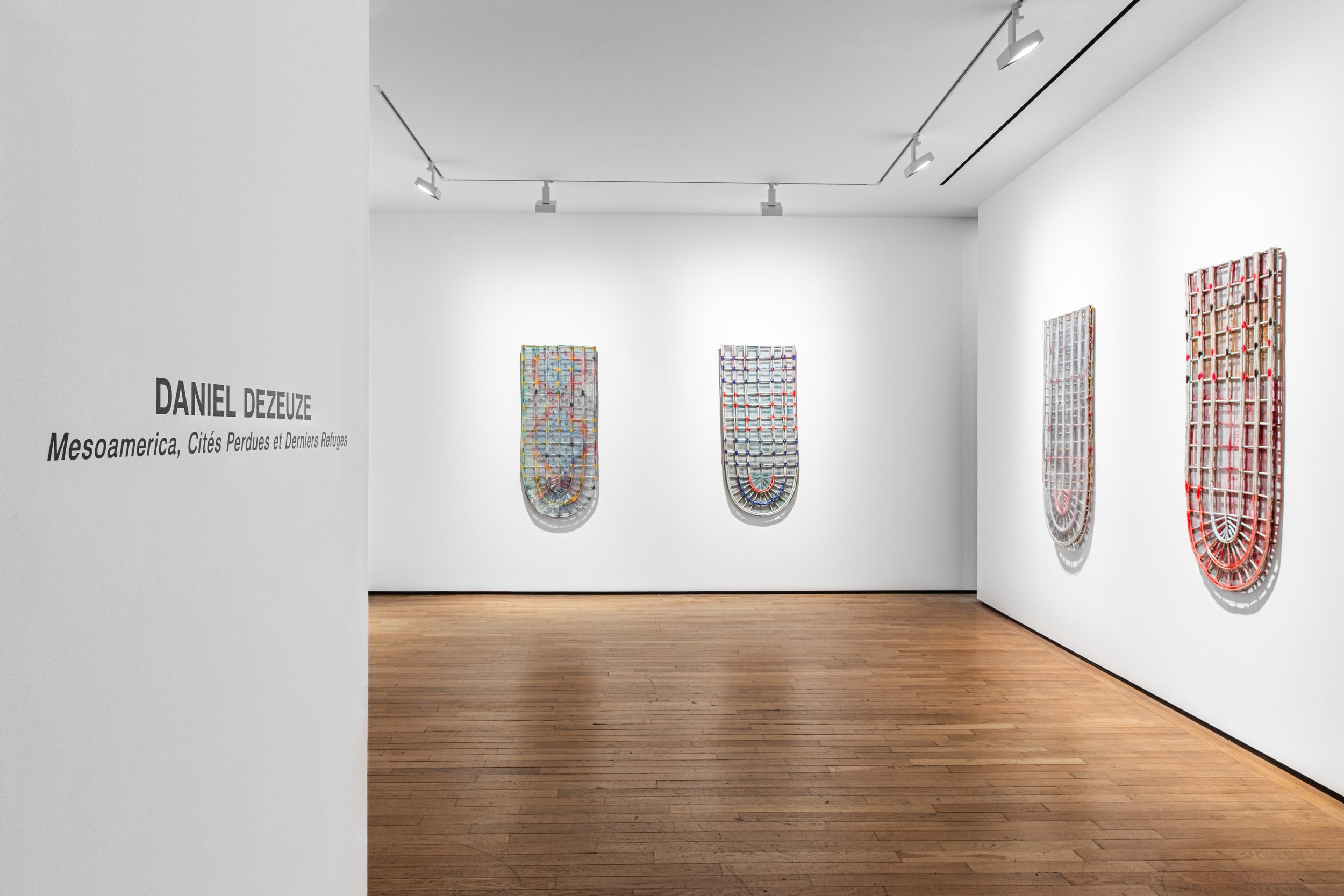
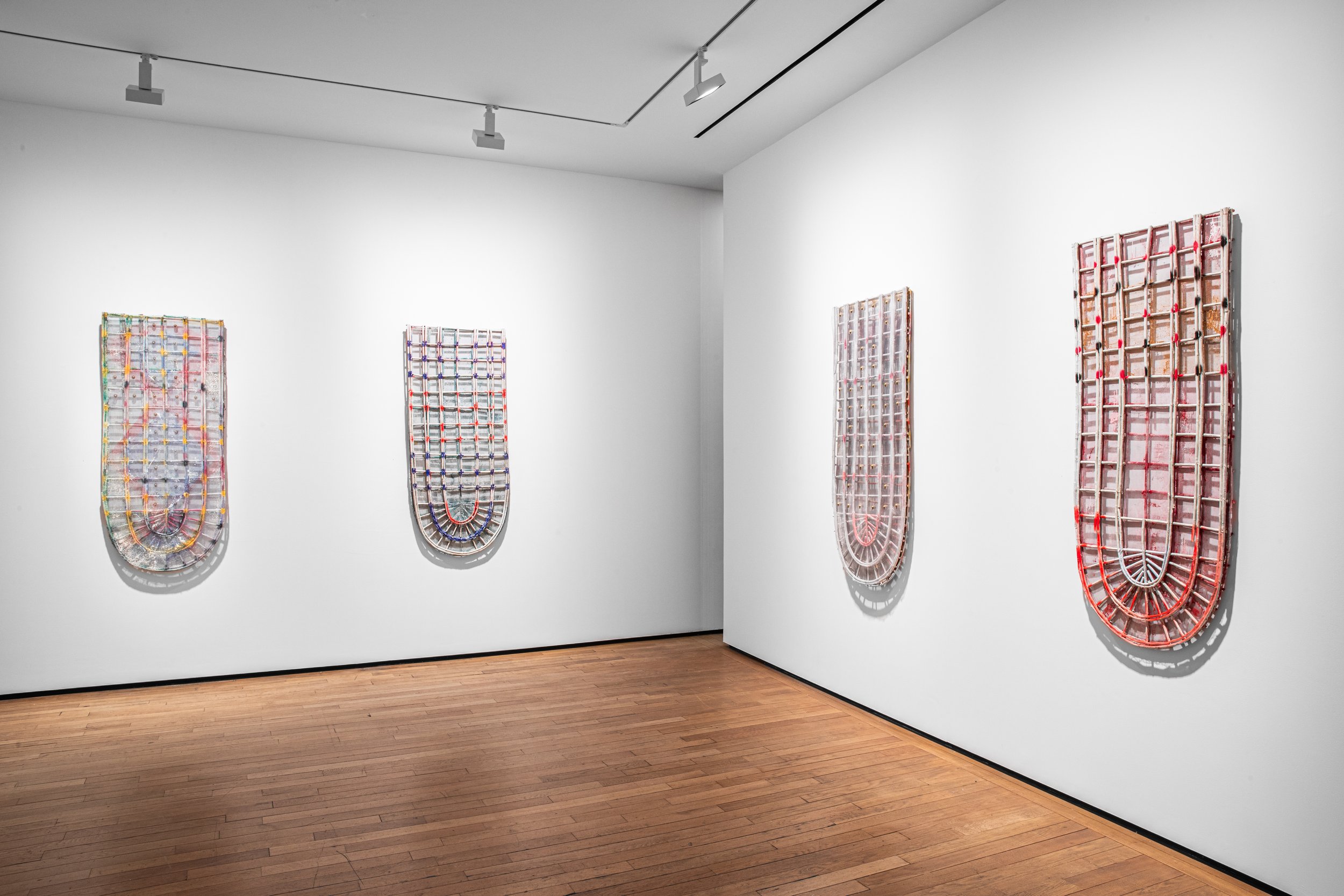
Toutes les images / All images :© Courtesy de l’artiste et TEMPLON, Paris —Brussels — New York
Indigenous people and colonizers. The simplicity of the artist's chosen materials, wood, mesh, and corks, and the delicacy of the way he combines them offer a disturbing exploration of the frontiers between art and crafts, the untouched and the policed, as well as the fragility of civilizations and modernity. In contrast, the gallery basement is inhabited by a collection of drawings Daniel Dezeuze has put together, a jungle of flowers, insects, mosquitoes, and snails. Bordering on the abstract, the series of pieces depicts fragile yet untameable nature, illustrating the artist's obsession with "capturing the uncapturable.” Daniel Dezeuze has spent almost fifty years deconstructing the notion of painting, exploring its traditional techniques and materials in a quest to delve into the role, history, and practice of painting. The impulse to spurn the canvas began very early on in his career: he flipped ped stretchers against the wall, playing with empty spaces and three dimensionality to push the boundaries of artistic traditions. His work is steeped in craftwork practices and anthropology, reflecting his interest in nomadic and non European cultures. His remarkable journey has led him to experiment with what is seen as “poor” materials —wood, gauze, net, and fabric, as well as subverted objects. His oeuvre has heavily influenced new generations of European artists, and features in numerous public collections, including at the Centre Pompidou, Musée d’Art Moderne de la Ville de Paris, Musée Fabre in Montpellier, Carré d’Art in Nîmes and Musée d’Art Contemporain (MAC) in Marseille.
About the Artist:
Born in 1942 in Alès, Daniel Dezeuze lives and works in the southern French port town of Sète. His work has been widely exhibited since the 1970s in France and internationally. The Musée de Grenoble held a retrospective of his art in 2017, while the FRAC Occitanie in M Montpellier held an exhibition of his drawings in 2015. MAMAC in Nice (2012), Centrale Electrique in Brussels (2009) and the Musée Fabre in Montpellier (2009) have also shown his work. In 2008, he exhibited his entire oeuvre at the Musée Paul Valéry in Sète.
.
His art has featured in a wide variety of group exhibitions: at Collection Lambert in Avignon in 2022, FRAC Poitou Charentes in 2020, Musée de l’Abbaye Sainte -Croix in Les Sables d’Olonne (MASC) and MOCAD in Detroit, USA, in 2019, Carré d’Art in Nîmes In 2017, Abattoirs in Toulouse in 2015, Villa Datris in L’Isle sur la Sorgue, Musée du Louvre Lens and Musée d’Art Moderne et Contemporain in Strasbourg in 2014, Musée Picasso in Antibes and Centre Pompidou Metz in 2013, MAMAC in Nice in 2012, Centrale El ectrique in Brussels, Belgium, in 2009 and Fundació Suñol in Barcelona, Spain, in 2007. Daniel Dezeuze has been represented by Galerie Templon since 1999.
For more information about this exhibit and other exhibits at the Templon Gallery, please visit their website here. Also, find the Gallery on Instagram and Artsy.
Ross Simonini: Scrolls
Installation view: Ross Simonini, Scrolls, 2024. François Ghebaly, New York. Courtesy of the Artist and François Ghebaly Gallery. Photo: Brad Farwell
François Ghebaly New York has proudly presented the opening of Scrolls, Ross Simonini’s first exhibition with the gallery at its Lower East Side location on March 7, 2024, and will conclude on April 2, 2024. Ross Simonini’s artistic project hinges on a kind of generosity— open, plural considerations of connection, meaning, and form. Simonini is a painter, musician, author, and multi-hyphenate wordsmith. Over the past two decades, he’s produced a singular oeuvre, one dedicated to the crossing and recrossing of boundaries of medium (anywhere from a roman à clef novel to site-specific performances to studio LPs) in the pursuit of an unmistakable personal poetics.
Simonini’s use of homophones, double entendres, and hidden writing schemes creates an overarching linguistic register that becomes an invisible force within his images.
Installation view: Ross Simonini, Scrolls, 2024. François Ghebaly, New York. Courtesy of the Artist and François Ghebaly Gallery. Photo: Brad Farwell
Scrolls, his latest exhibition of new paintings, is perhaps the most direct expression of this impulse in his work so far. “The language of the conscious mind is text, and the language of the unconscious mind is image,” Simonini says. “You can’t read in a dream. So when you turn text into image, you’re taking a conscious experience and sending it into the unconscious.”
Installation view: Ross Simonini, Scrolls, 2024. François Ghebaly, New York. Courtesy of the Artist and François Ghebaly Gallery. Photo: Brad Farwell
For Simonini, the ‘hidden’ writings in question are actual phrases he writes and draws into the shapes of the painted figures, celebratory refrains repeated over and over again throughout a single painting, but never spoken aloud. A letter becomes a smile, an eye, a waving arm. “My hope,” he says, “is that language is felt.”
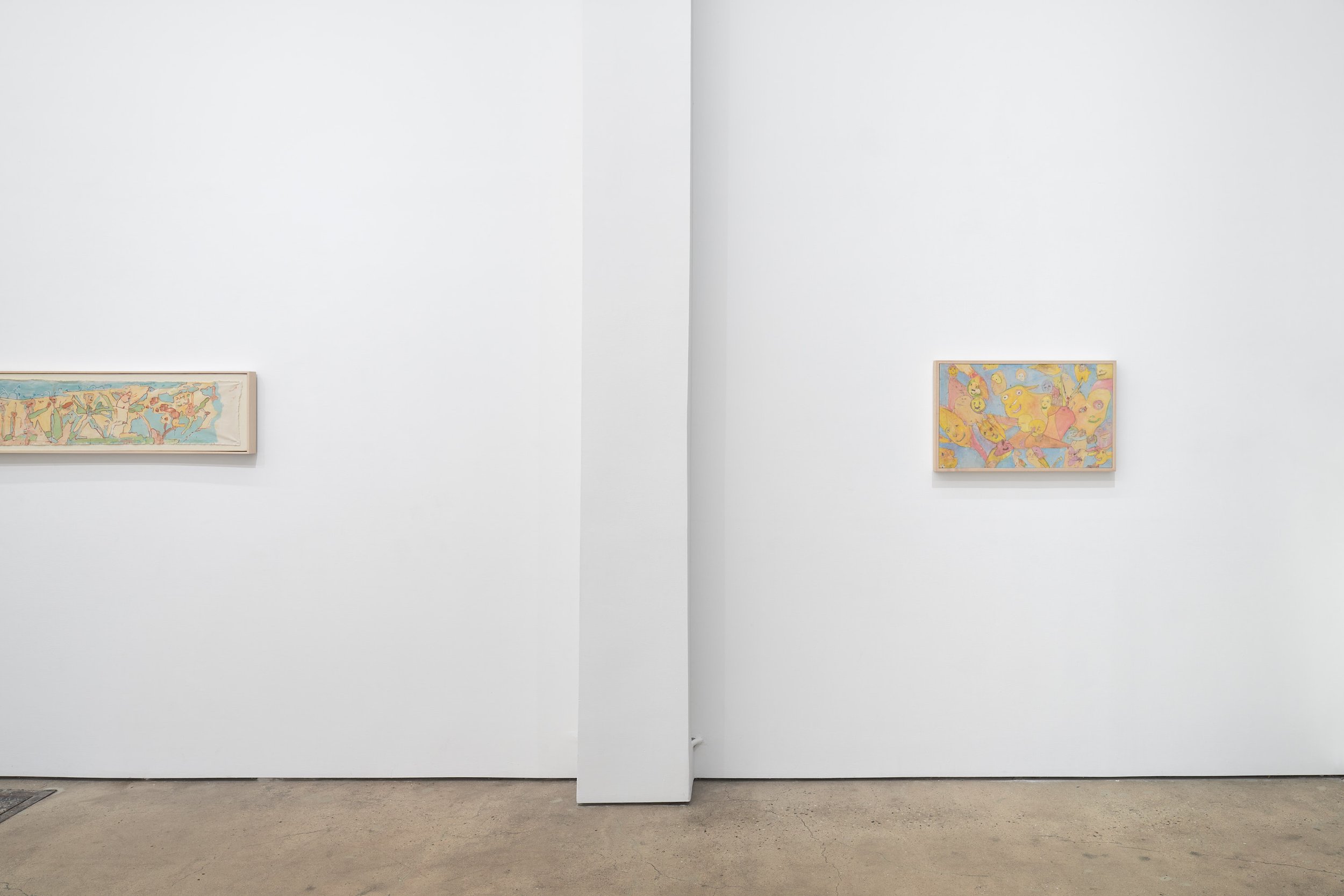
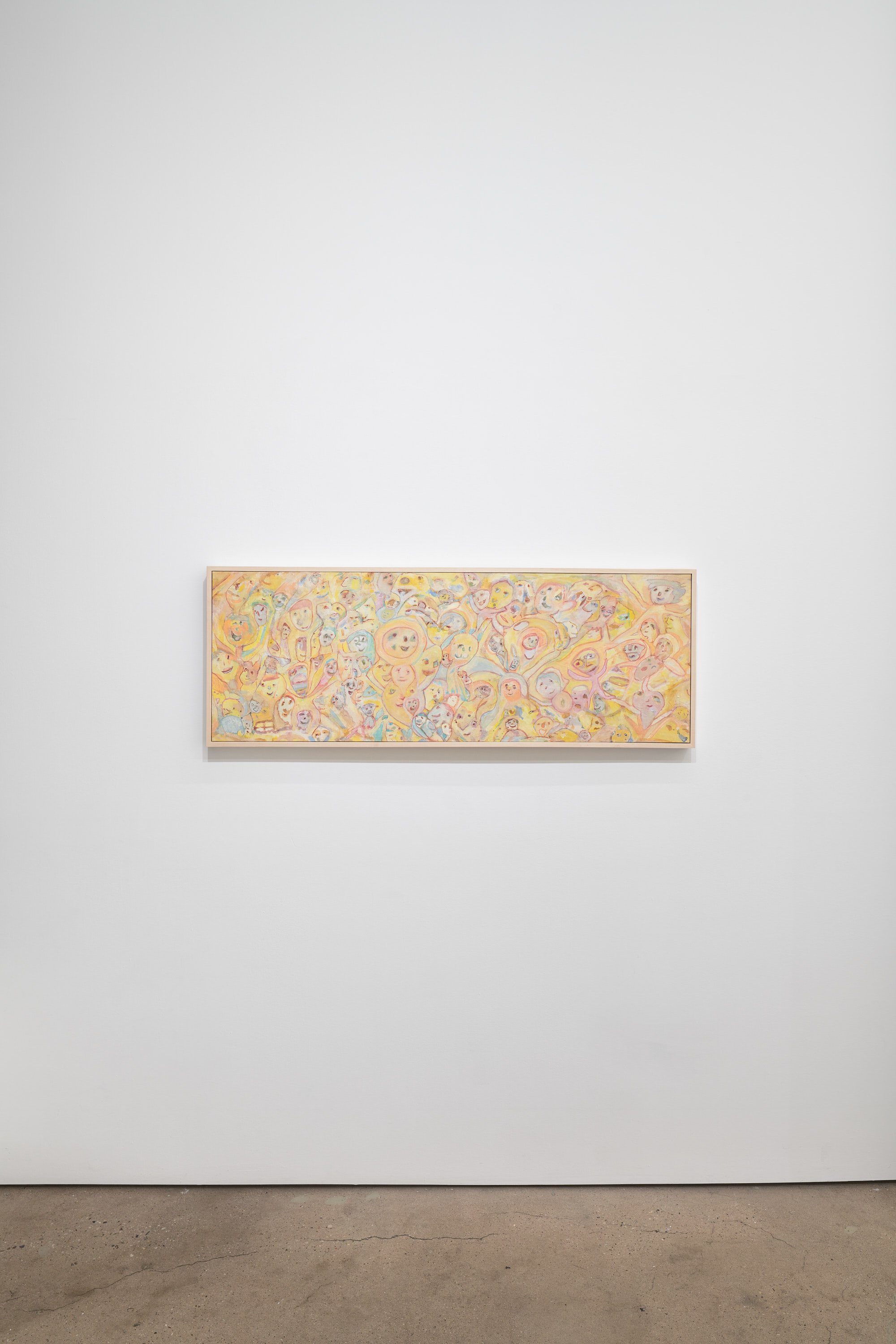
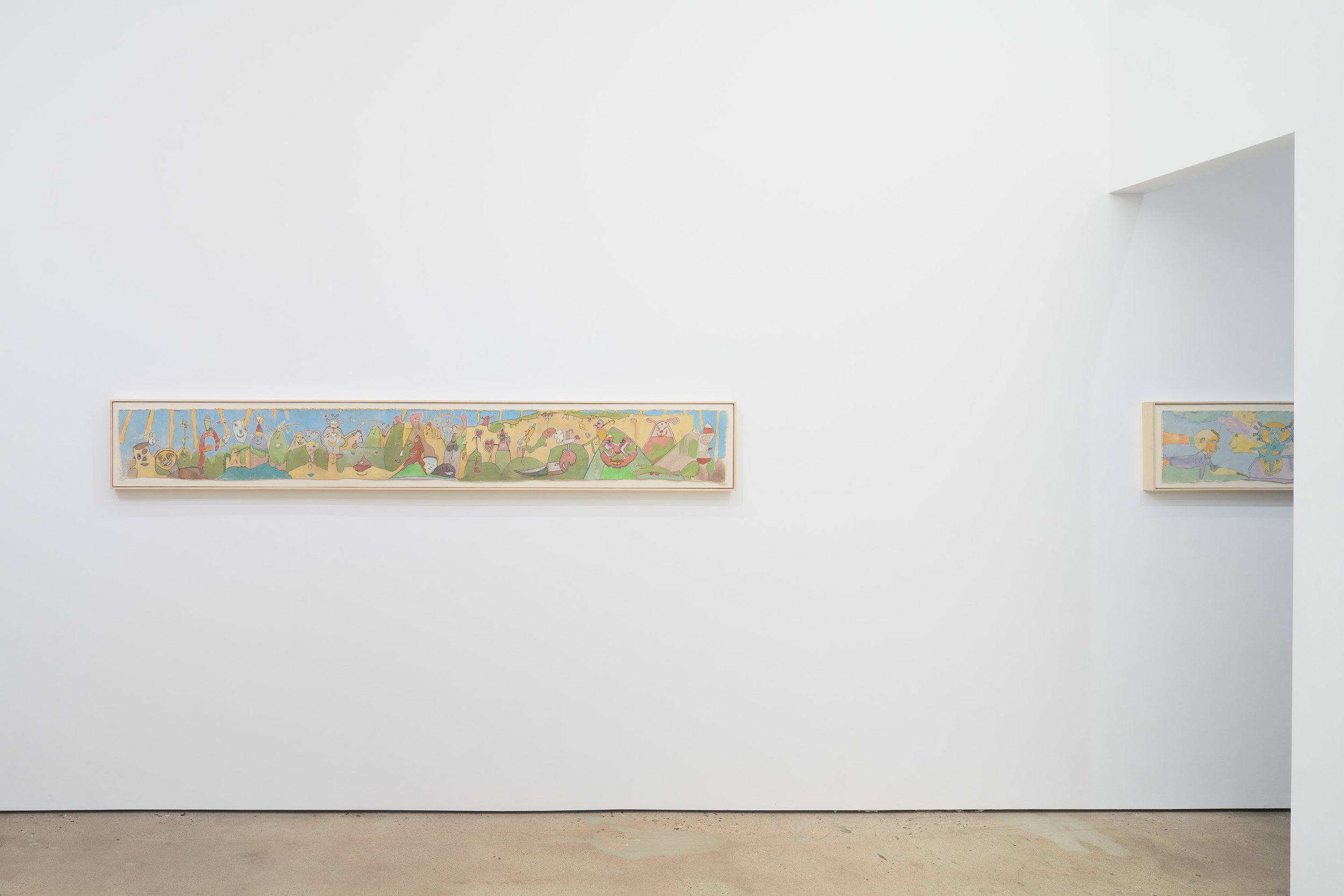
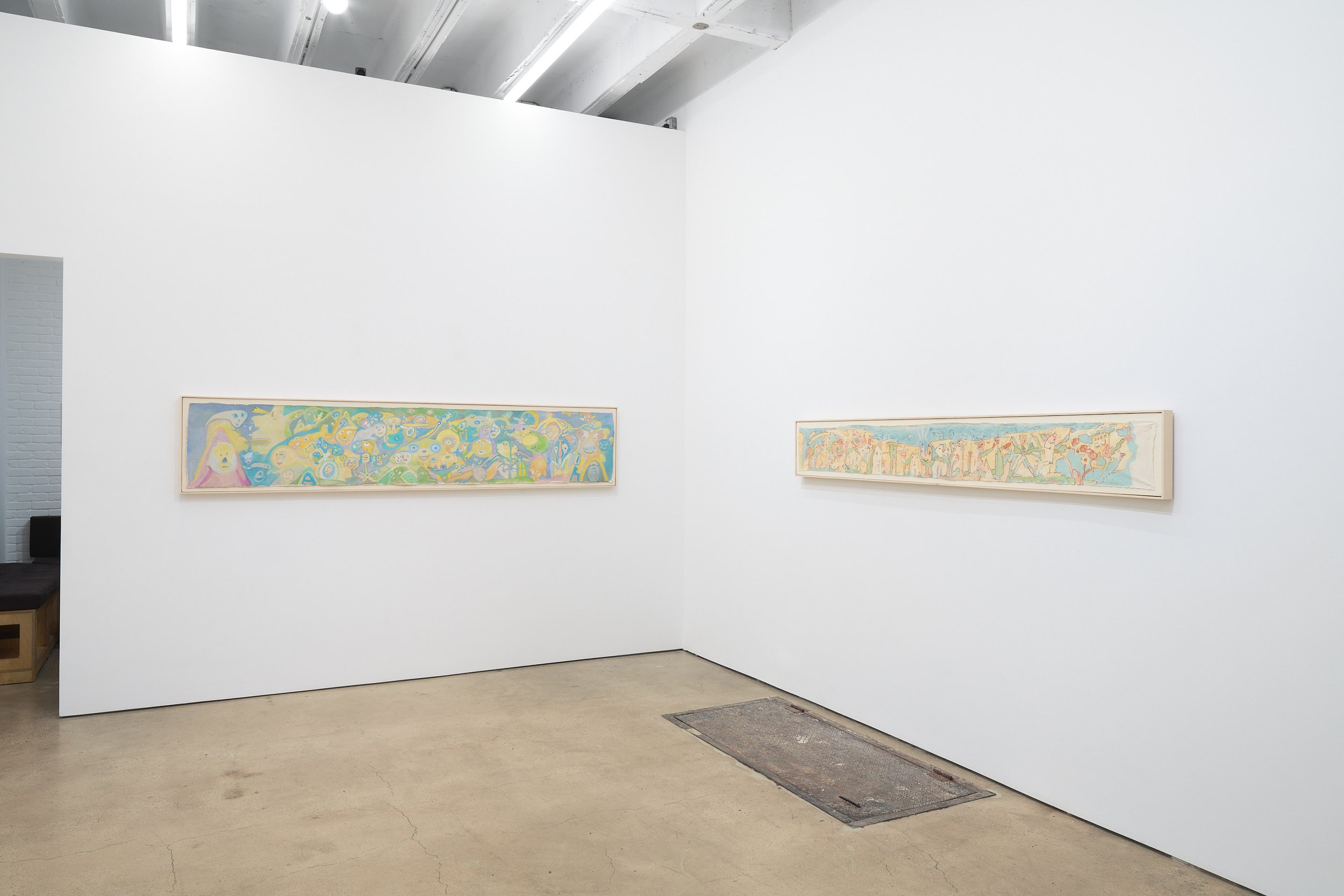
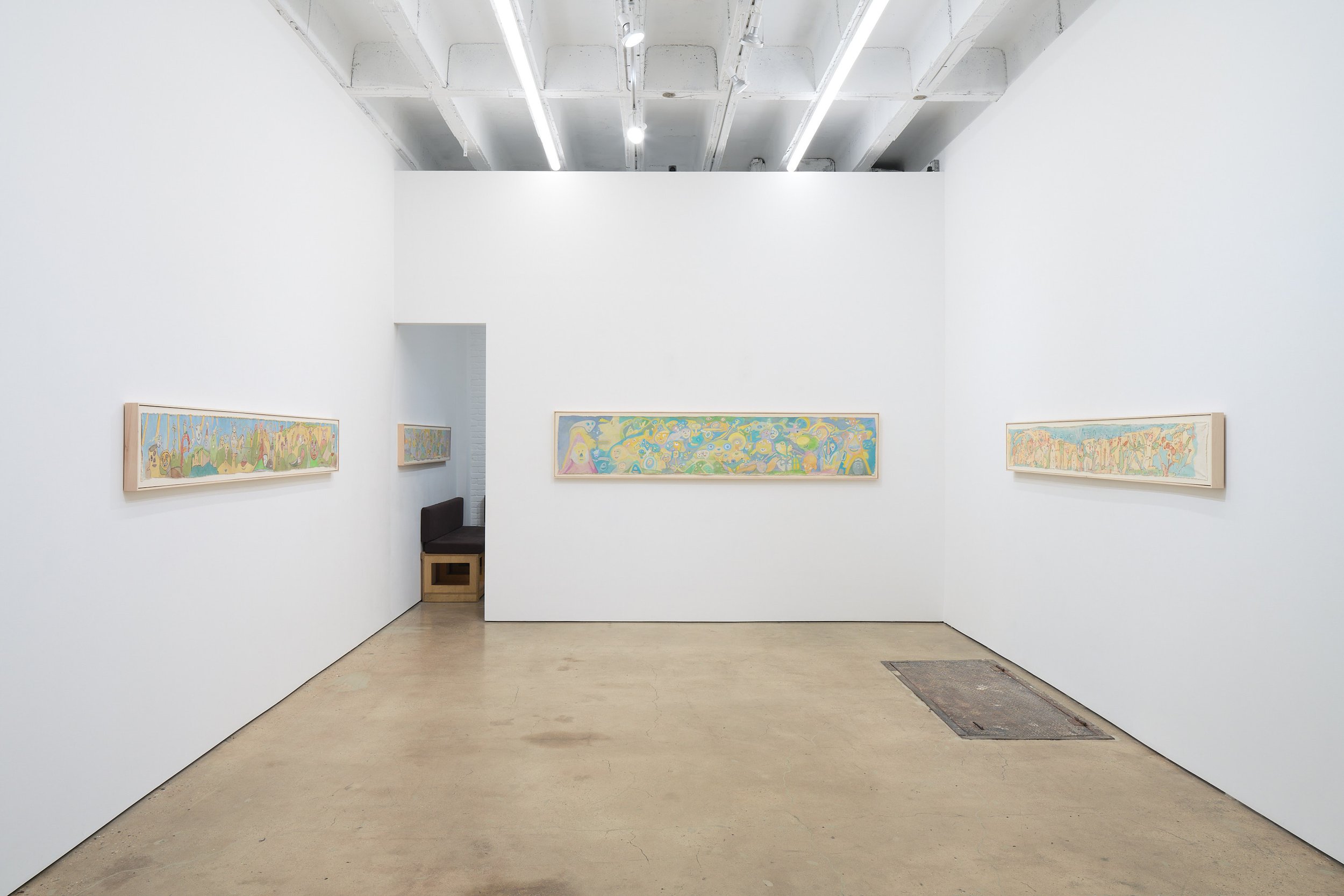
Installation view: Ross Simonini, Scrolls, 2024. François Ghebaly, New York. Courtesy of the Artist and François Ghebaly Gallery. Photo: Brad Farwell
The Scrolls invoke a feeling of narration through their rolling, longitudinal design. Across time and culture, the ‘long’ form has been a visual mode instrumentalized for the depiction of epics—stories that chart development, decline, and transformation.
Simonini’s images, fittingly described by the artist as ‘bachannals,’ recall the jostling, polychrome masked crowds of a James Ensor painting. Across the eight scenes that comprise Scrolls, streams of colorful, pareidoliac sprites aggregate in fête-like formations, at once jubilant, endearing, and hallucinatory. The artworks themselves are crafted from a list of materials with origins dating back to Fra Angelico frescoes and Greek antiquity: egg tempera, casein milk paint, and plain cotton. The almost sculptural sense of organic materials accentuates the animistic quality of Simonini’s painting. Milk and egg are, after all, building blocks of life.
Installation view: Ross Simonini, Scrolls, 2024. François Ghebaly, New York. Courtesy of the Artist and François Ghebaly Gallery. Photo: Brad Farwell
At the same time, Simonini is referencing the “scrolling” that has become our contemporary world’s primary means of beholding images, reading text and the various combinations of both we all encounter daily. To scroll is to enter a mode of perception that almost mirrors our natural, panoramic experience—a flowing motion that cannot be expressed in a single, static glance. Like an unfurling poem, an exploratory sentence or even a musical score, these scrolls must be felt one look at a time. Ross Simonini is an artist and writer based in Los Angeles. Simonini received his bachelor’s degree from the University of California and his MFA from Bennington College. Recent solo exhibitions include sun.works, Zurich; SHRINE, Los Angeles; Anonymous Gallery, New York; Sharjah Biennial 13, UAE; Et Al, San Francisco. and Shoot the Lobster, Luxembourg. Recent group exhibitions include Vielmetter, Los Angeles; François Ghebaly, Rome; and Altman Siegel, San Francisco.
For more information about this exhibition and others please visit the François Ghebaly gallery here. The gallery can also be found on Instagram, Artsy, and Facebook.
Tavares Strachan: Magnificent Darkness
(Front view) Inner Elder (Mary Seacole), 2023 Inner Elder (Biko as Septimius Severus), 2023 Inner Elder (Nina Simone as Queen of Sheba), 2023 Ceramic (Background) Andromeda (Green, Pink and White Galaxy), 2023 Sunflower (Yellow, White, and Blue Galazy), 2023 Cartwheel Galaxy (Blue, Purple, Red and White Galaxy), 2023 Oil, enamel and pigment on acrylic Installation view, Tavares Strachan "Magnificent Darkness" Marian Goodman Gallery, Los Angeles, 2024 Courtesy of the artist and Marian Goodman Gallery Photo credit: Elon Schoenholz
Marian Goodman Gallery Los Angeles is pleased to announce a solo exhibition of Tavares Strachan. The exhibition had an opening reception on February 17th and will conclude on April 13, 2024. Titled Magnificent Darkness, this immersive exhibition will feature several new bodies of work across six diverse and site-specific environments. Through an interconnected array of works comprising ceramic, bronze, marble, hair, neon, sound, and painting, this exhibition collectively professes a visual allegory toward the overarching exploration of light and darkness.
Encyclopedia of Invisibility (Pocket Guide), 2024 Leather, gilding, archival paper, lucite box and stand Overall: 9 1/4 x 12 1/8 x 10 in. (23.5 x 30.8 x 25.4 cm) Installation view, Tavares Strachan "Magnificent Darkness" Marian Goodman Gallery, Los Angeles, 2024 Courtesy of the artist and Marian Goodman Gallery Photo credit: Elon Schoenholz
Strachan’s work summons historical and cultural references, creating essential contextual collisions and connections to his celebrated, ongoing research project, The Encyclopedia of Invisibility. For this exhibition, a central installation from the Encyclopedia forefronts the surrounding gallery spaces, bringing light to a number of ‘invisible histories’ that have largely fallen by the historical wayside. A special, smaller format of the Encyclopedia in book form will also be on view. Nearby, a new work in neon, There is a Light in Darkness, draws on the words of James Baldwin and serves as the source for the audio work that can be heard throughout the exhibition space.
In the Seward Gallery, a vast and transportive earthen floor grounds two near-life-sized ceramic sculptures, Matthew Henson (Hunter’s Shirt Stacked with Football and Spear) and Andrea Crabtree (Potter’s Shirt Stacked with Diver’s Helmet), representing the figures of Matthew Henson, the African American explorer who discovered the North Pole, and Andrea Motley Crabtree, the first African American female diver for the U.S. Navy. Themes intrinsic to Strachan’s practice—ranging from human aspiration to the chronicle of elided histories—are evoked here through depictions of Arctic exploration and deep-sea discovery. Clay, as integral to human evolution and the creation story, is found repeatedly throughout the exhibition, from the Seward Gallery floor to the numerous ceramic sculptures on view.
Mind Field No. 1, 2023 Flocked hair on canvas 60 x 60 x 2 in. (152.4 x 152.4 x 5 cm) Amina (A Map of the Crown), 2023 Bronze, flocked hair 23 5/8 x 9 7/8 x 5 7/8 in. (60 x 25 x 15 cm) Installation view, Tavares Strachan "Magnificent Darkness" Marian Goodman Gallery, Los Angeles, 2024 Courtesy of the artist and Marian Goodman Gallery Photo credit: Elon Schoenholz
In an intimate space off the main lobby sits Amina (A Map of the Crown), a bronze bust sculpture adorned with a traditional West African hairstyle. The closeness of these materials offers an insightful reconciliation of the distance between the deeply personal, political, and present nature of hair and the venerable qualities bestowed upon bronze sculpture—some of the earliest and most accomplished bronze works date to Africa in the 10th century. A new series of paintings also debuts here. Mind Field No. 1 sits in dialogue with Amina, together begetting references ranging from the history of the monochrome to metaphorical notions of hair as a protective layer, symbol of knowledge, and means for communication and transport.
Jah Rastafari with Rice Field (Stacked with Pineapple, Shield, and Football), 2023 Ceramic, rice field installation 110 1/4 x 59 x 59 in. (280 x 149.9 x 149.9 cm) Installation view, Tavares Strachan "Magnificent Darkness" Marian Goodman Gallery, Los Angeles, 2024 Courtesy of the artist and Marian Goodman Gallery
In the adjacent Hudson gallery, a ‘meadow’ of dried rice grass transforms the space into a landscape, referencing rice as a staple of the Afro-Caribbean diet. Viewed from above, the terrain is shaped in the form of the Ghanaian Adinkra symbol for Nsaa, which symbolizes quality and durability, and metaphysically denotes excellence and authenticity. The dramatic floorscape finds its focal point in Jah Rastafari (Stacked with Pineapple, Shield and Football), 2023, a multifaceted ceramic sculpture illustrating a bricolage of spiritual and cultural forms from disparate centuries.

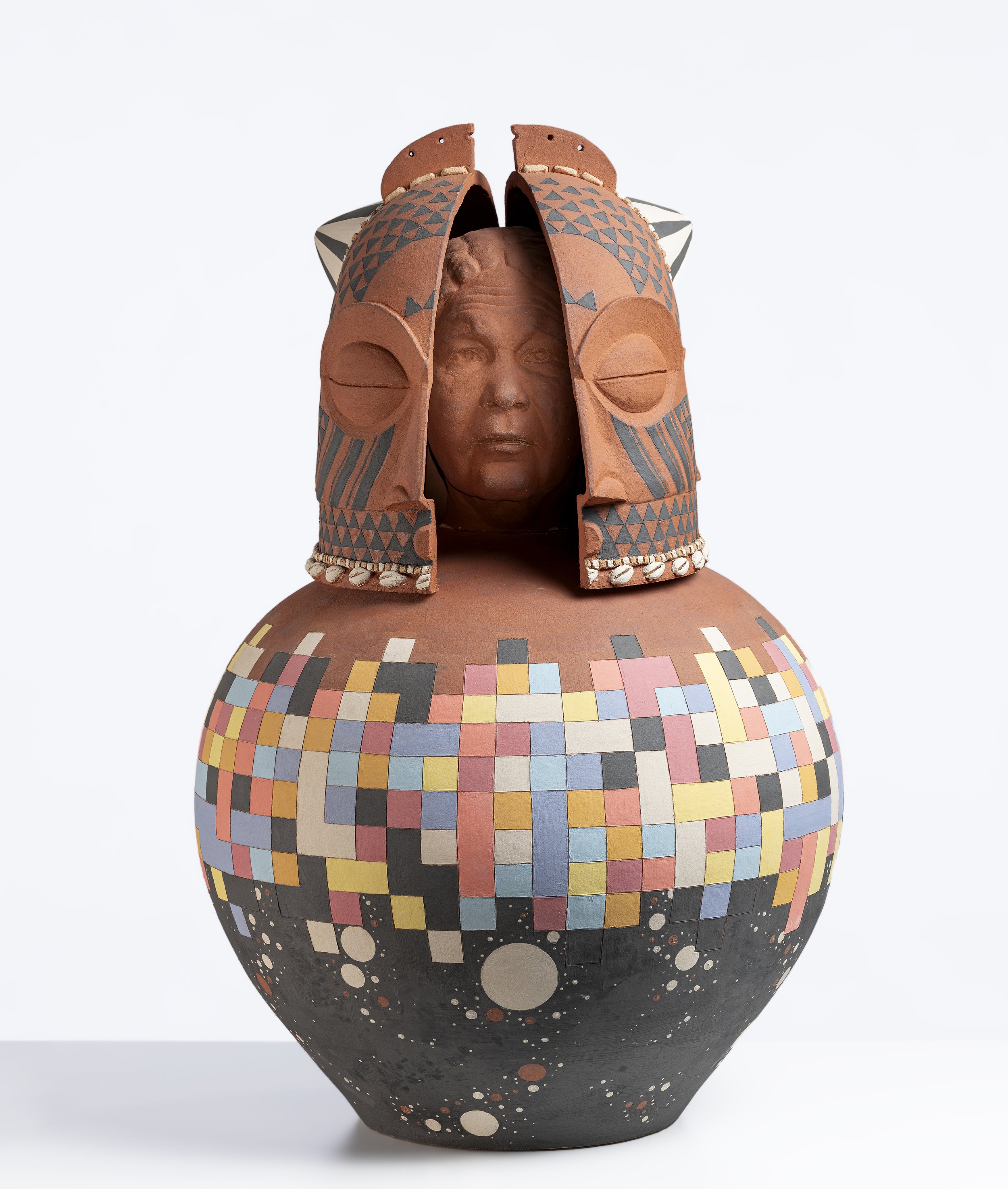

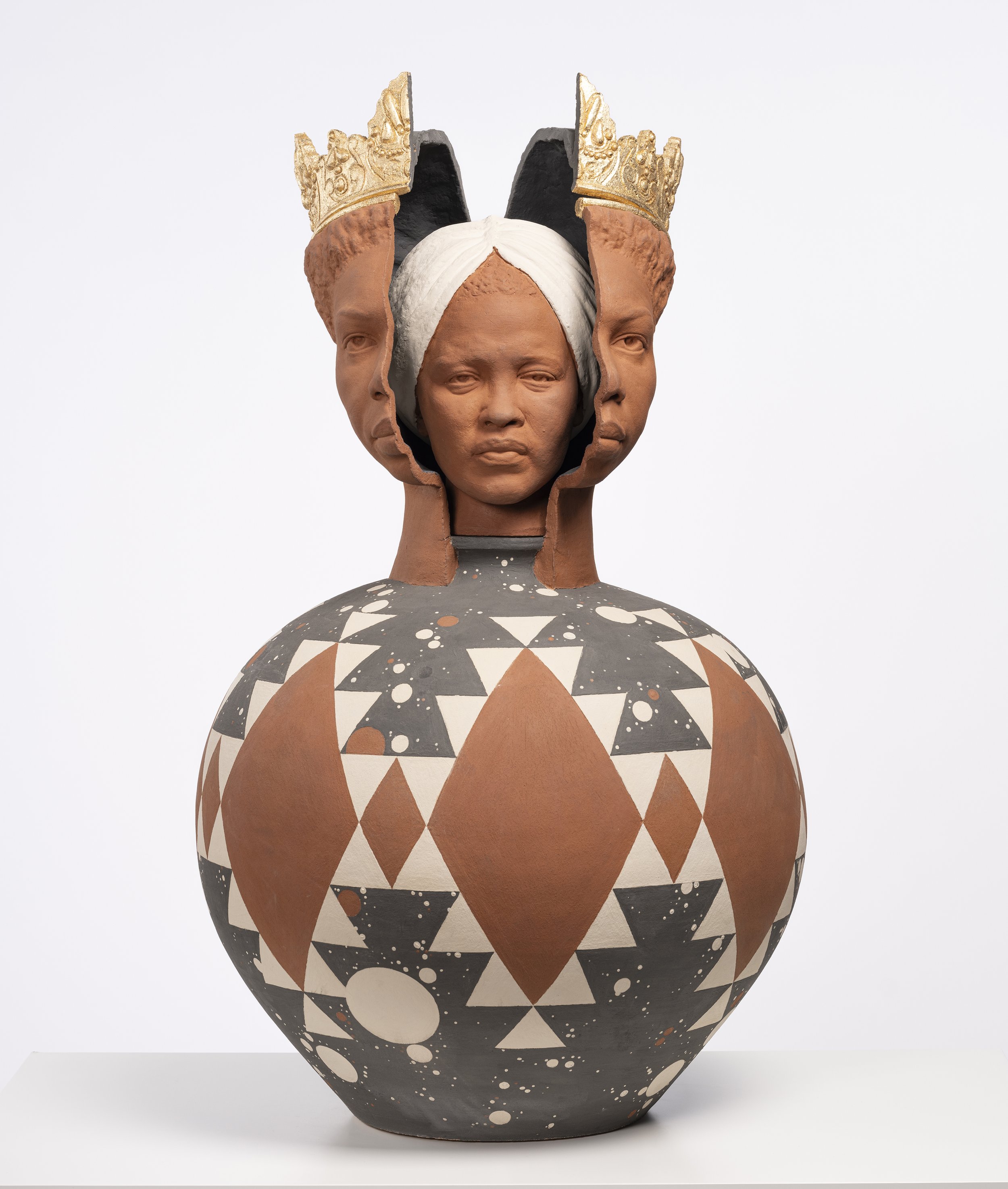
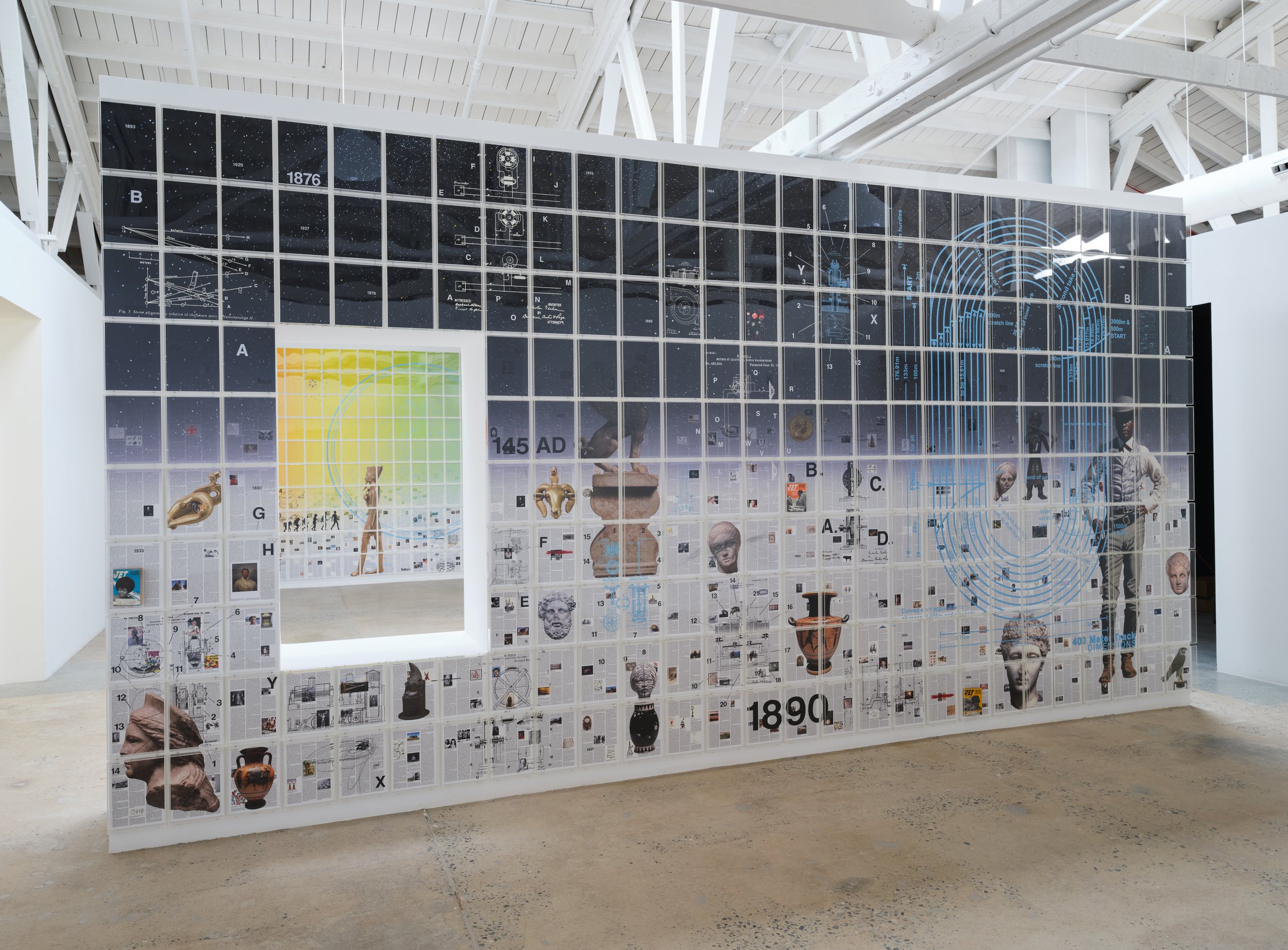
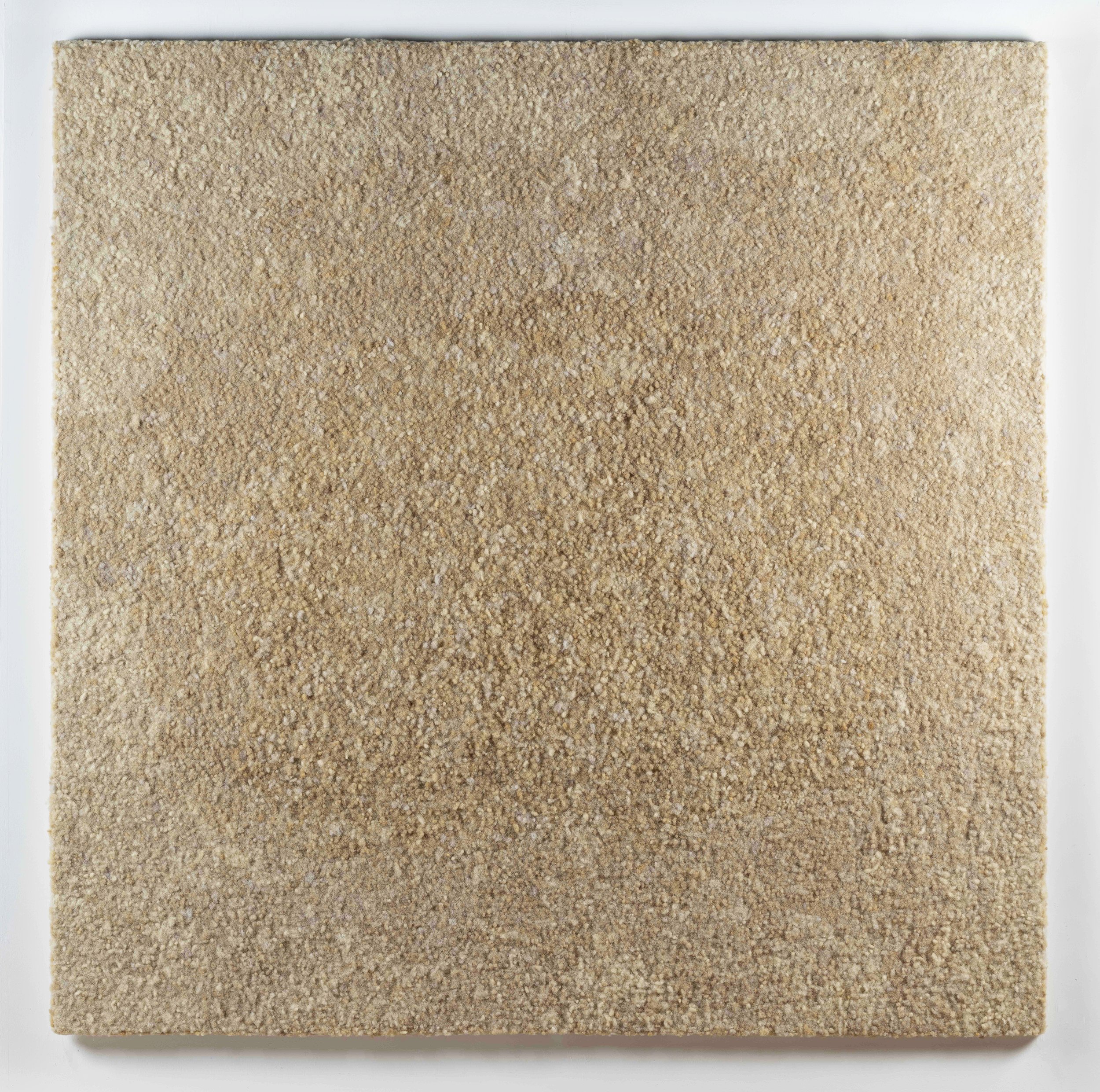
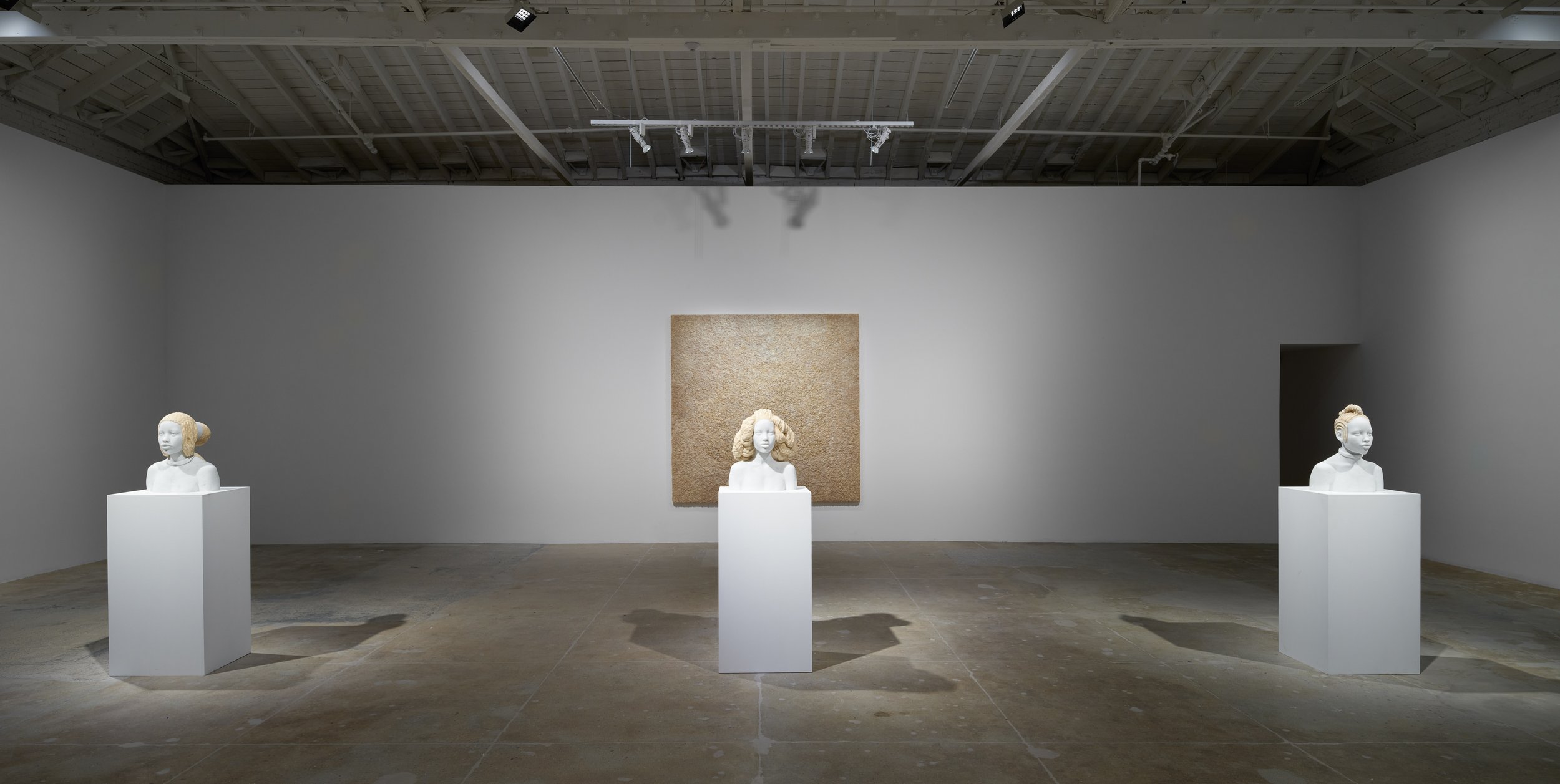
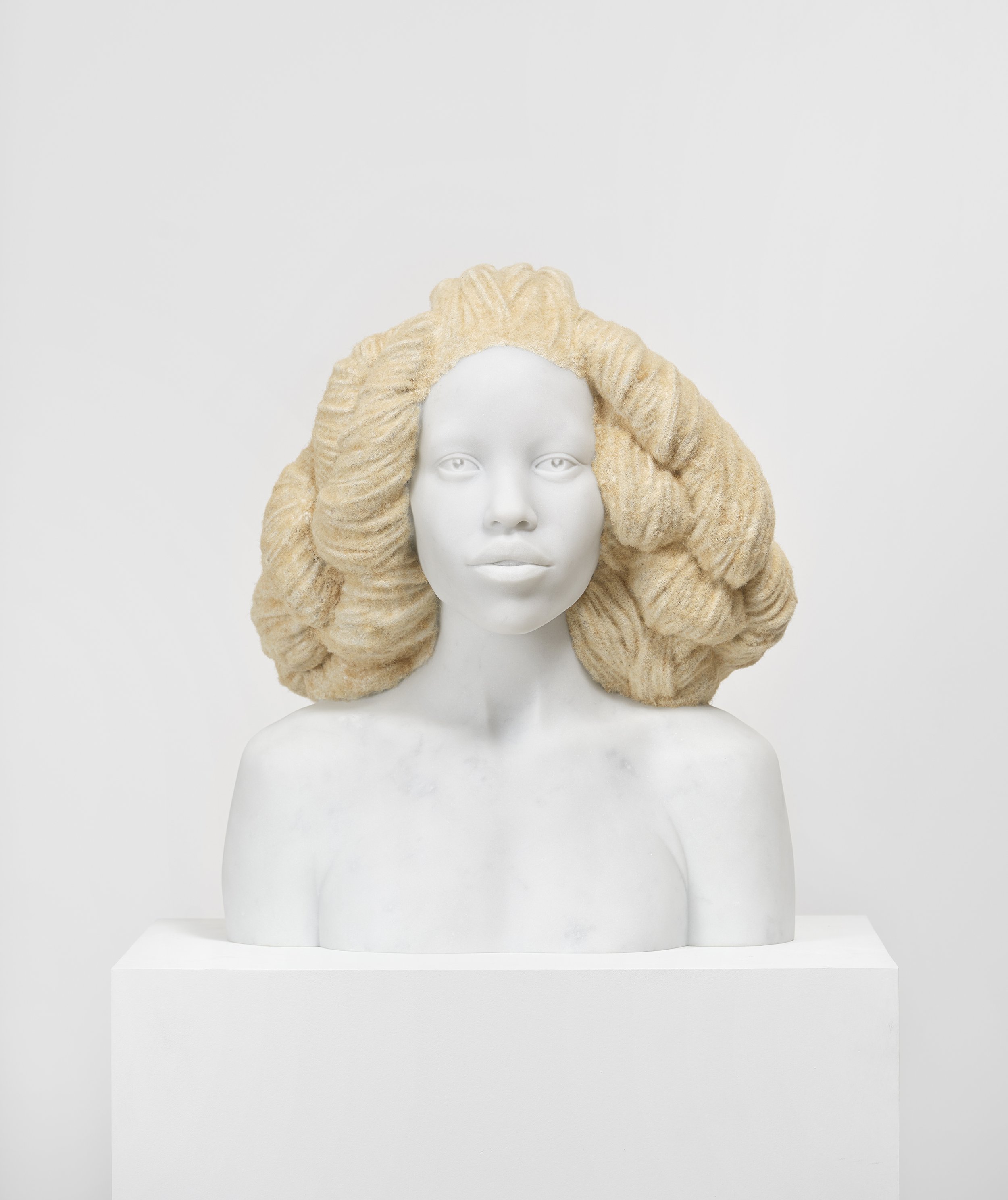
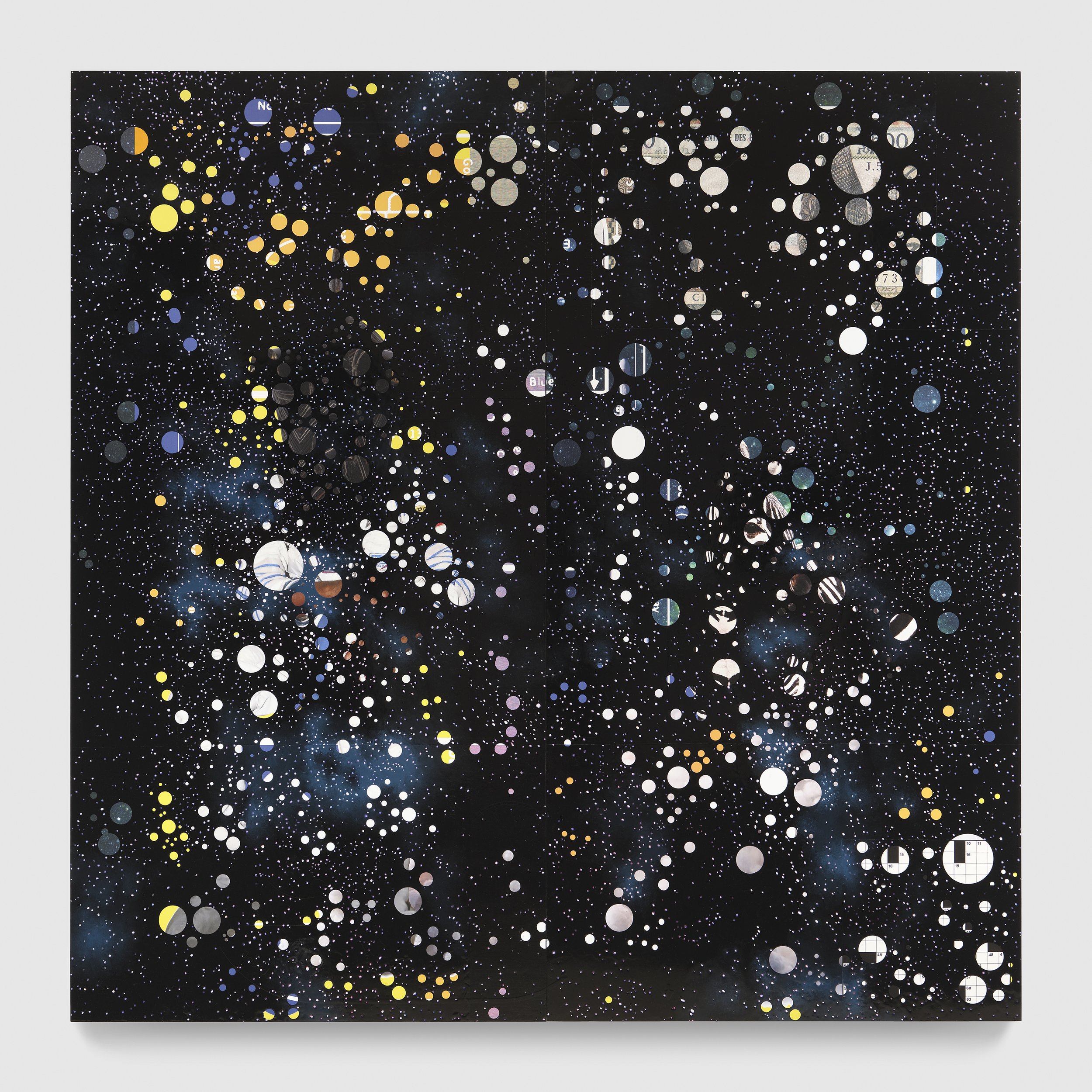
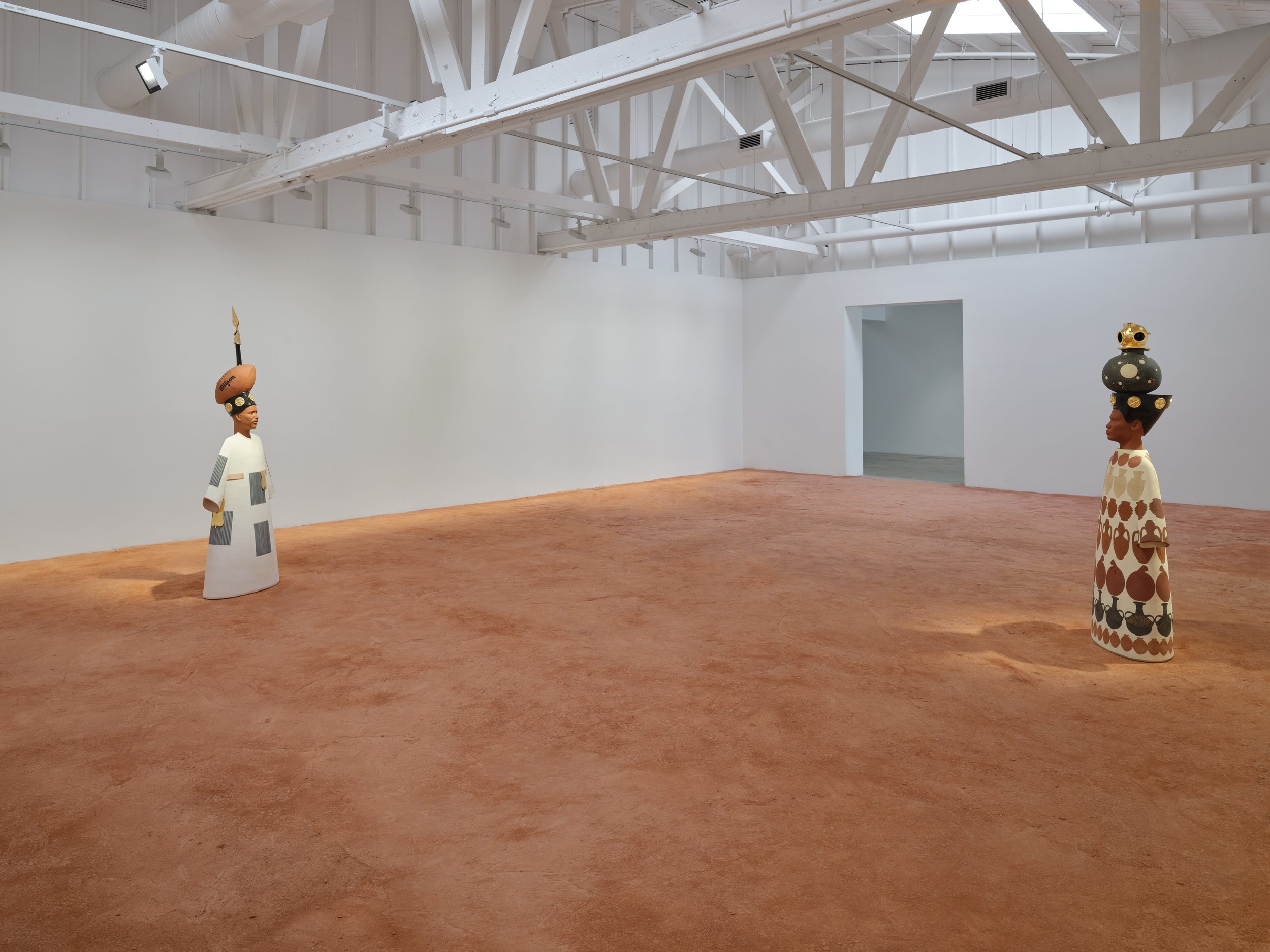

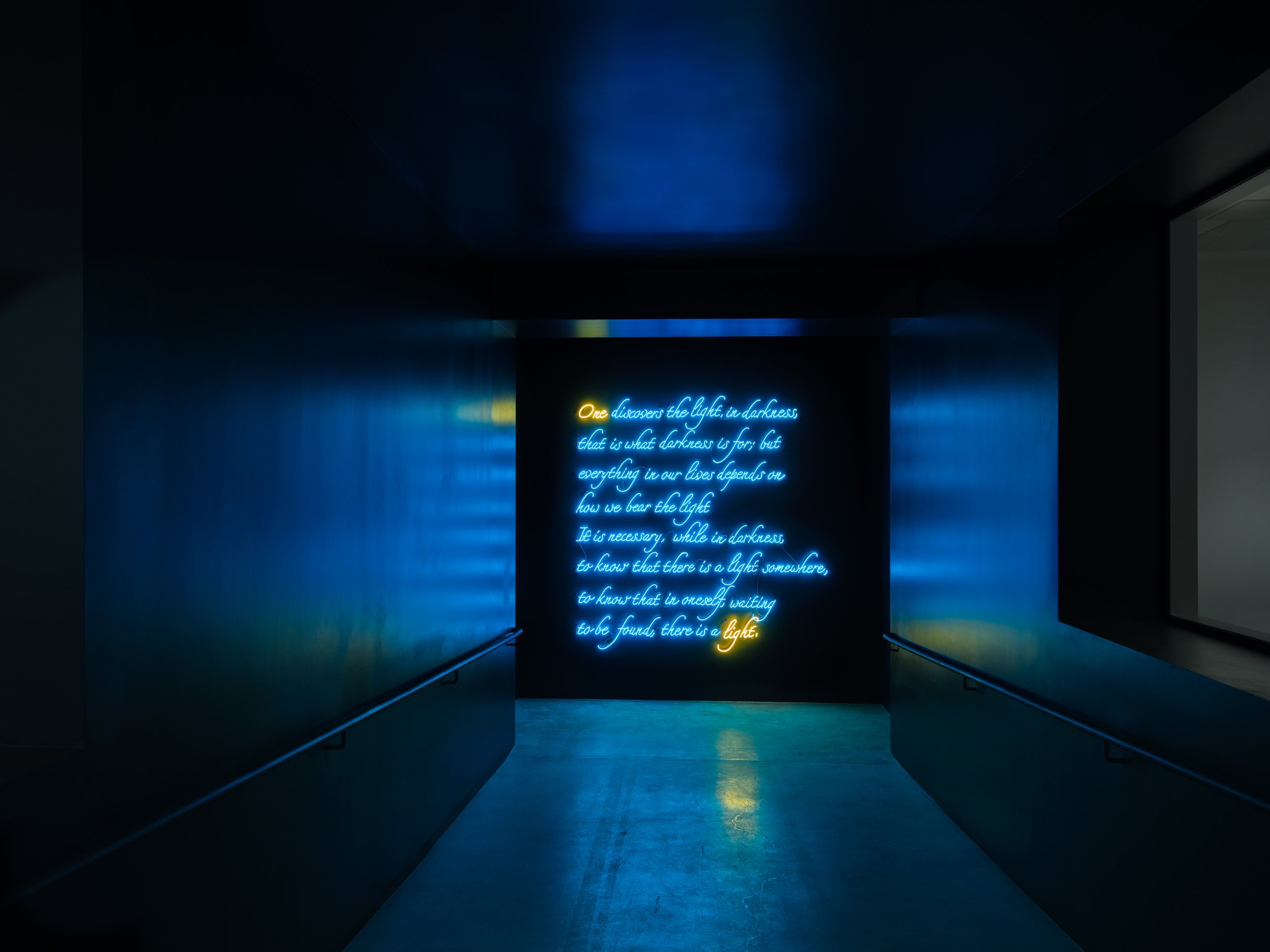
The Main Gallery continues the dialogue of the interrelation of light and darkness opening with the related words of Baldwin. Split in two, the divided spaces become each other’s complements. In the darkness of one half, new Galaxy paintings, depicting distant constellations and galaxies as symbols of the invisible systems that structure our world, are placed in relation to three ceramic sculptures: Inner Elder (Mary Seacole); Inner Elder (Biko as Septimius Severus); and Inner Elder (Nina Simone as Queen of Sheba), historical figures who carry their own symbolic cosmology and are symbols of a lost language. These works explore the traditions of storytelling in West African and Afro-Caribbean cultures, serving the dual purpose of vessels made of earth that host the daily materials of rice and water, and canvases to document stories through symbols and patterns. The contrasting, light-filled gallery presents a white painting of hair, Mind Field No. 8, alongside three white marble sculptures, Makeda (A Map of the Crown), Moremi (A Map of the Crown), and Amanirenas (A Map of the Crown), collectively drawing questions around whiteness and related visual discourses of ancient sculpture.
Current and upcoming projects include a new sculptural installation, The First Supper, presented in the context of an exhibition at the Royal Academy of Arts, London, and a solo exhibition at the Hayward Gallery, London, to open in June 2024. Two new publications, The Awakening and In Total Darkness, have been published by Marian Goodman Gallery and will be available during the exhibition.
Strachan was born in 1979 in Nassau, Bahamas, and currently lives and works between New York City and Nassau. He received a BFA in Glass from the Rhode Island School of Design in 2003 and an MFA in Sculpture from Yale University in 2006. He draws on both the resources and community of his birthplace, dividing his time between his studio in New York and Nassau, where he has established an art studio and scientific research platform B.A.S.E.C. (Bahamas Aerospace and Sea Exploration Center) and OKU, a not-for-profit community project encompassing an artist residency and exhibition spaces, a scholarship program, and after-school creative programs.
Strachan’s work has been featured in numerous solo exhibitions including You Belong Here, Prospect 3. Biennial, New Orleans (2014); The Immeasurable Daydream, Biennale de Lyon, Lyon (2013); Polar Eclipse, The Bahamas National Pavilion 55th Venice Biennale, Venice (2013); Seen/Unseen, Undisclosed Exhibition, New York (2011); Orthostatic Tolerance: It Might Not Be Such a Bad Idea if I Never Went Home Again, MIT List Visual Arts Center, Cambridge (2011); among others.
He has been the recipient of numerous awards including the John D. and Catherine T. MacArthur Foundation fellowship (2022), Artist in Residence at the Getty Research Institute (2019-2020), the Frontier Art Prize (2018), and the Allen Institute’s inaugural artist-in-residence (2018), LACMA Art + Technology Lab Artist Grant (2014), Tiffany Foundation Grant (2008), Grand Arts Residency Fellowship (2007), and Alice B. Kimball Fellowship (2006). In his TED talk in April 2023, Strachan discussed the need to restore lost stories, as exemplified within his work, The Encyclopedia of Invisibility.
For more information about the exhibit, please visit the Marian Goodman Gallery’s site. The gallery can be found on Instagram and Artsy, too.
Justine Mahoney: VIGIL
Image courtesy of Hayden Phipps/Southern Guild.
Southern Guild Cape Town presents VIGIL, a solo exhibition of ceramic sculptures and paintings by South African artist Justine Mahoney, which opened on February 8th and will end on May 23rd, 2024. In this exhibition, the artist reimagines the 12 Jungian archetypes in a series of sculpted figures and large-scale paintings on heavy-weight fabric. Rooted in a wealth of esoteric theory, Mahoney’s archetypes embody and mythologize facets of the collective human unconscious.
The King courtesy of Hayden Phipps/Southern Guild.
Over an extended period of isolation during the pandemic, Mahoney began a daily practice of self-enquiry through Jungian meditation. Encountering what Swiss psychiatrist Carl Jung referred to as “Mythopoetic Imagination” – the dark and fertile landscape of active imagination – the artist conjured vivid manifestations of each archetype. Jung believed these archetypal models underpinned man’s innate and universal personas, behaviours and motivations. They appeared to Mahoney as messengers, carriers from the invisible terrain, arriving as “giant psychic forces” from within. She crystallised their final forms after extensive research into Tarot, Plato’s theory of forms, and a close reading of Jung’s journals (The Black Books) and manuscripts (The Red Book: Liber Novus). She also drew heavily from esoteric knowledge systems that pre-date the advent of Judeo-Christianity. Treating imaginative thought and fantasy as vital creative functions, VIGIL surfaces from a subversive reality; one that belies rationality to ground itself more freely in the ancient, essential and human.
Love courtesy of Hayden Phipps/Southern Guild.
Mahoney’s process of sculpting this body of work echoes the digital collages in her previous series. Shaping the clay into the desired form, each figure was then deconstructed – bisected, hollowed out, interchanged and reassembled to take their final expression. This act of disruption and reconfiguration extends throughout Mahoney’s three decades-long career, which has been characterised by a preference for transgressive, hybridised figuration. This hybridity is the result of a distinct self-awareness that has seen the artist remain active in and awake to both the making of her work and the larger examination of her own identity.
The works in VIGIL regard the figure as an amorphous vessel, transforming each body into irregular contortions. Mother arches backward, life-giving milk flowing from her breasts as 10 fingers reach through her stomach as if growing from within. She is the creator and destroyer, both the abundant life-force and the abyss. The Child looks skyward, mouth agape, holding up two large hands in what could be interpreted as either acquiescence or protest. The figure stands at the precipice of a new beginning, the cosmic infant of boundless possibility. The Wanderer, wearing a hooded cloak, eyes peering out from a painted face of red, holds the head of a wolf. They are the hungry seeker, returning with the spoils from the divine hunt. Some figures read as plant-like, with braided hair or limbs reaching downward to ground themselves in the earth. Mahoney considers these apparitions as the denizens of our inner worlds, encompassing the duality and rapture of our universal humanity.
The painted earthenware figures stand on ebonised plinths of indigenous cedar and pine, which Mahoney treated using the centuries-old Japanese wood-burning technique of Shou Sugi Ban. Each plinth has been torched with a flamethrower, blackening the wood before being sealed with an ebony stain.
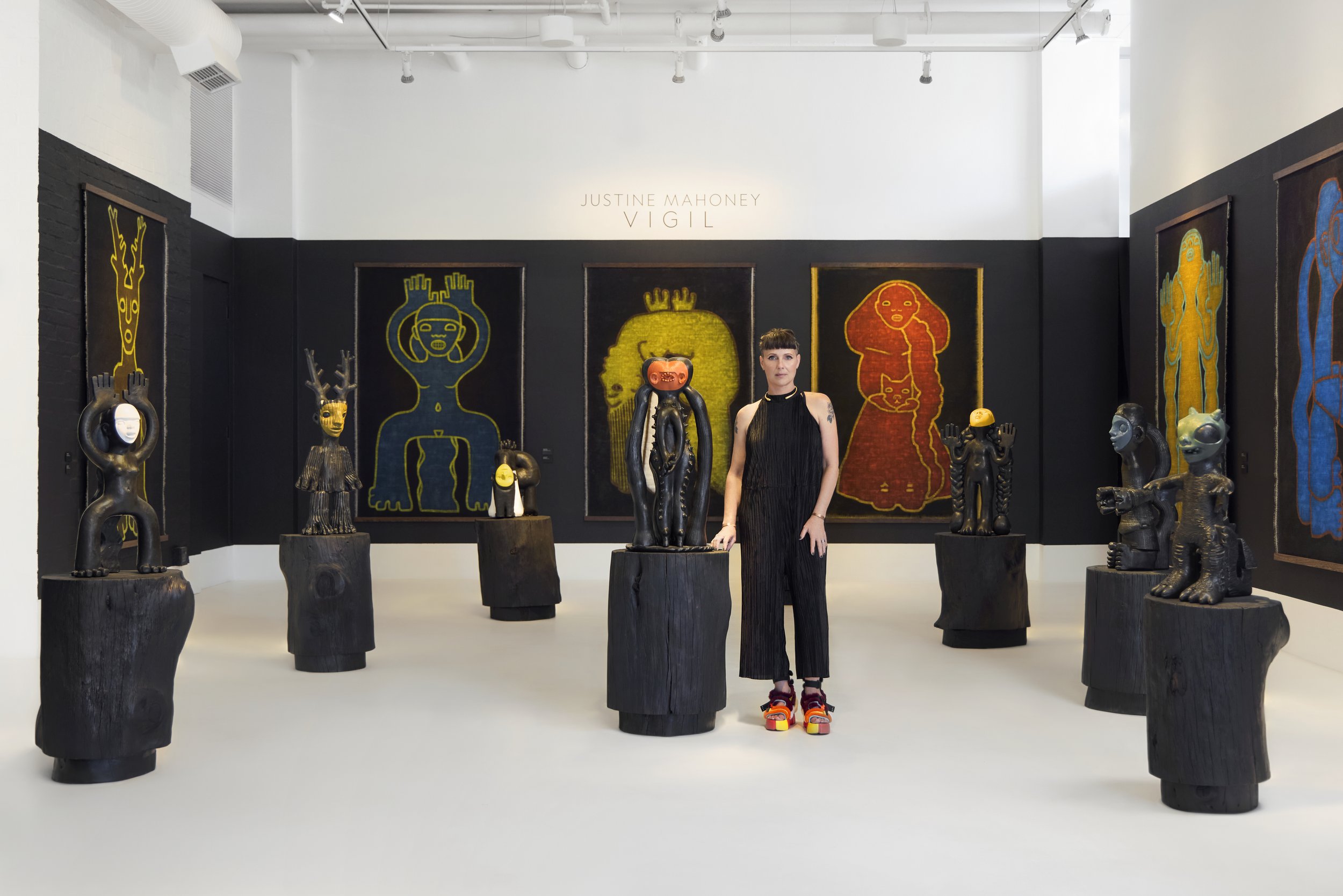
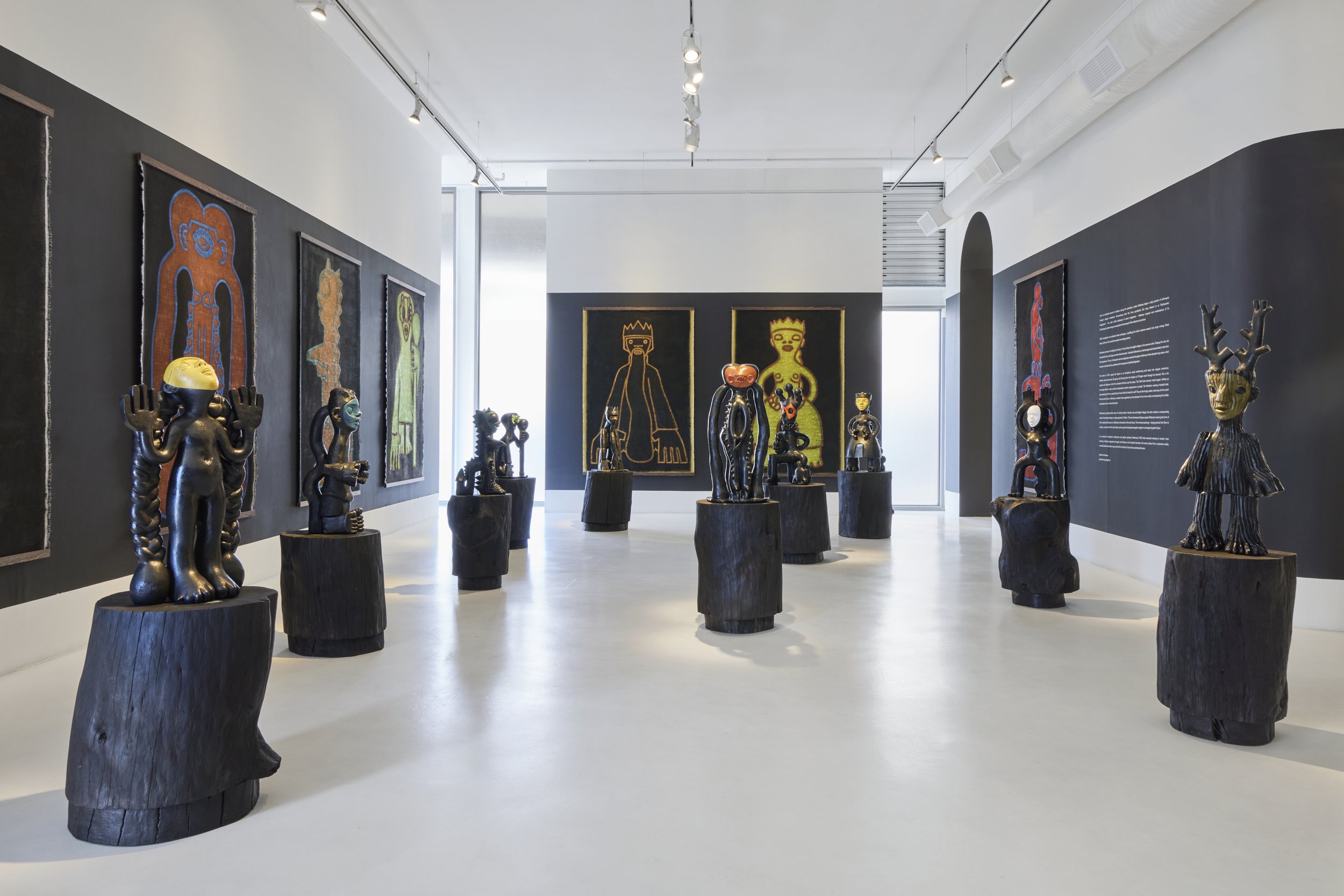
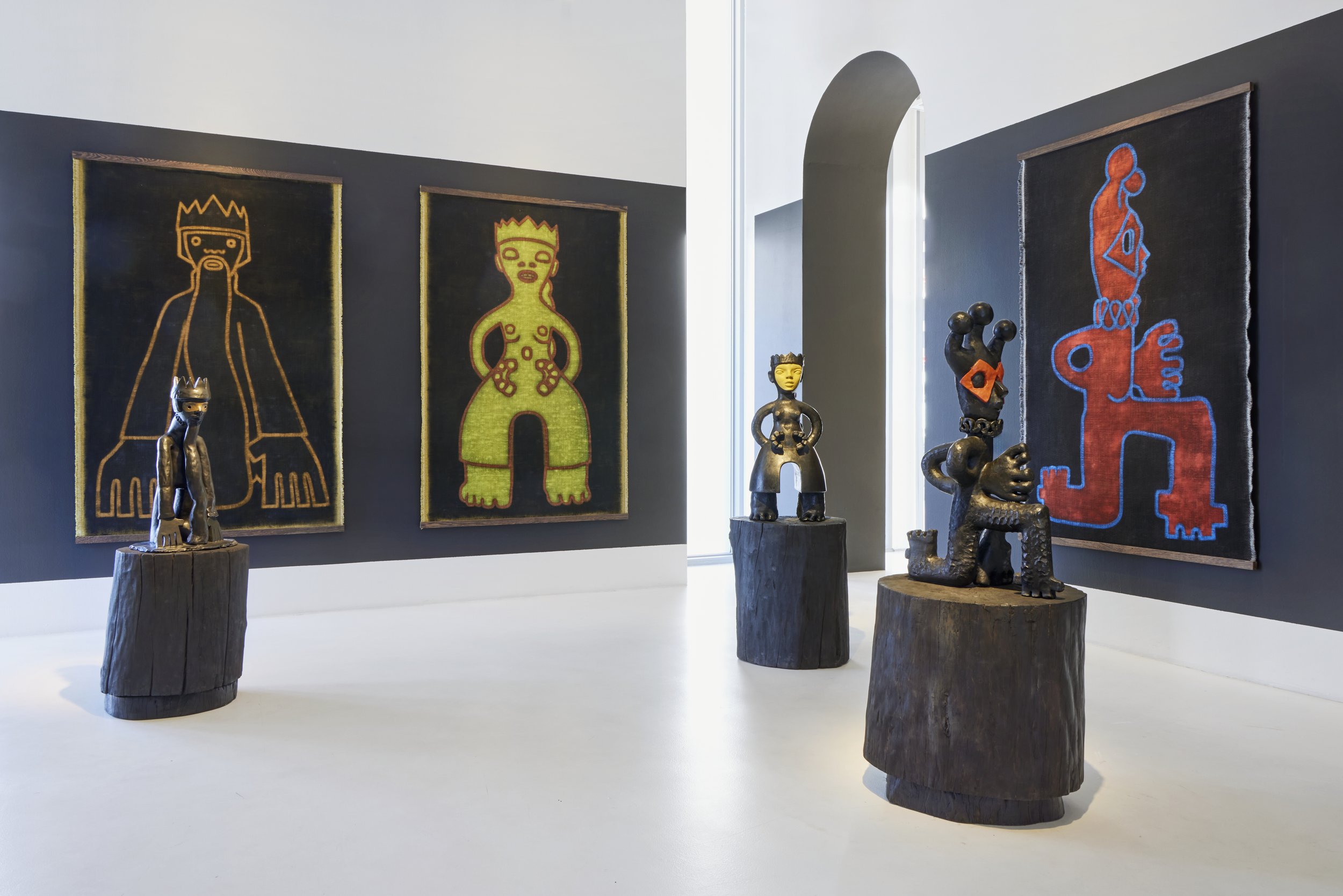
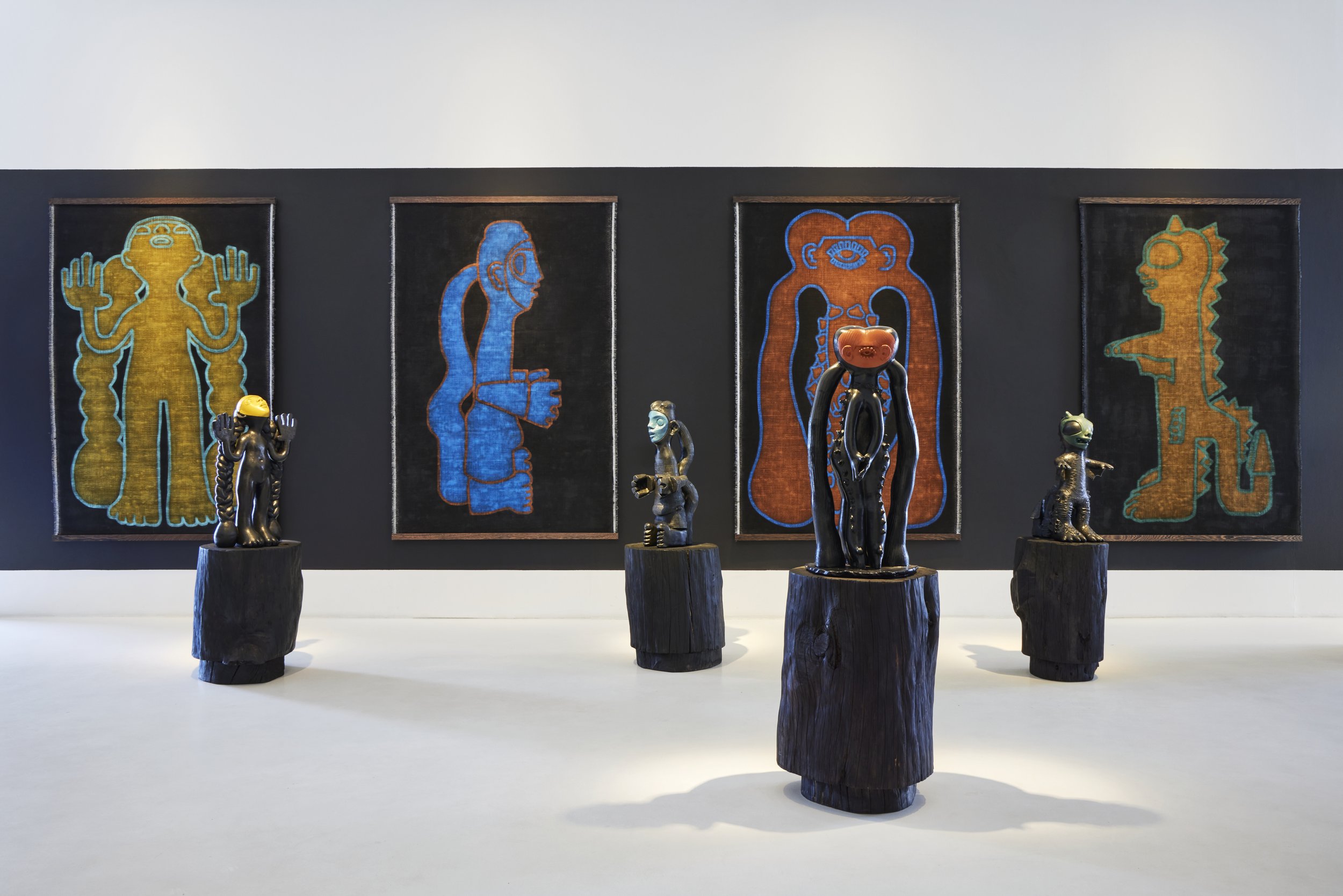
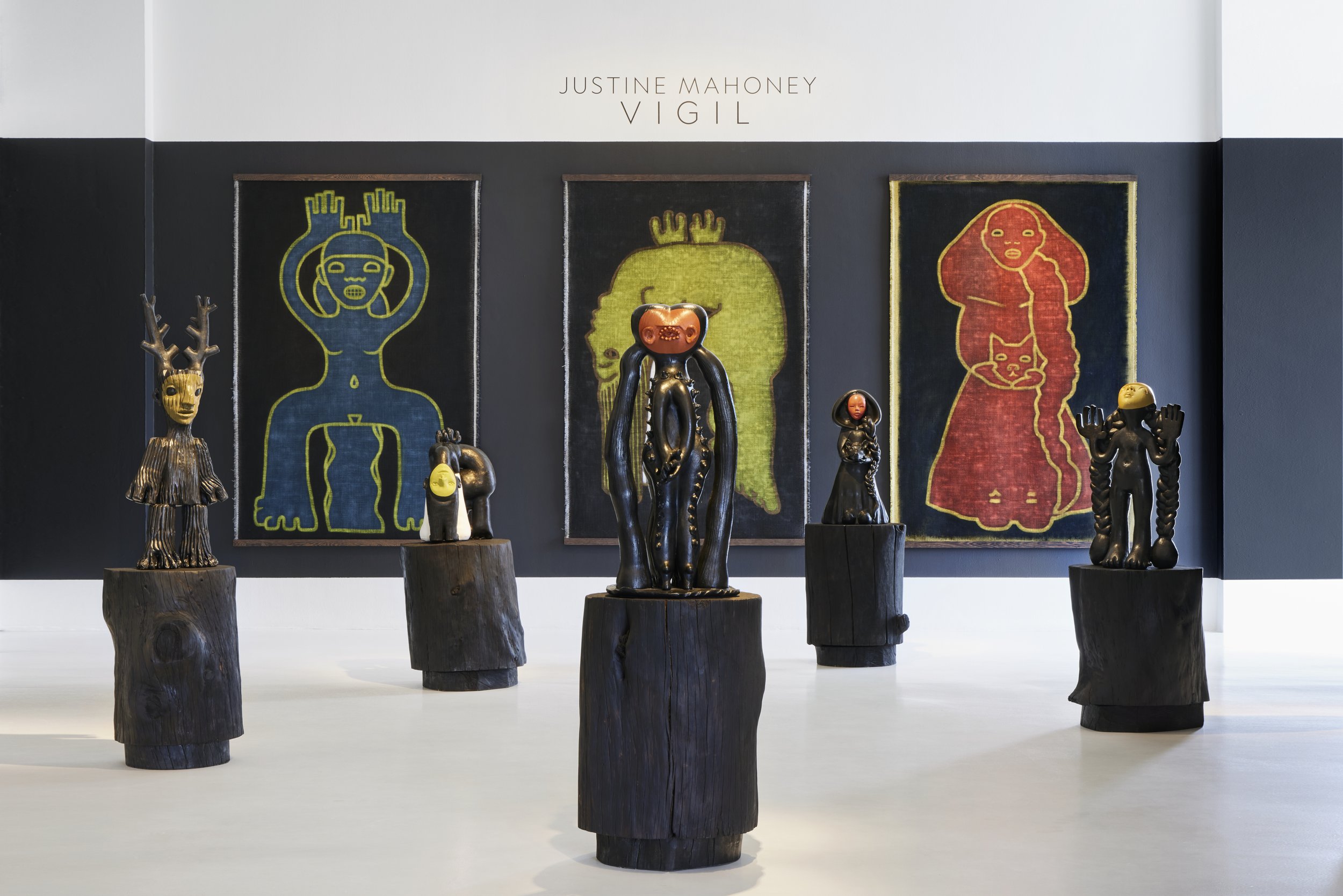
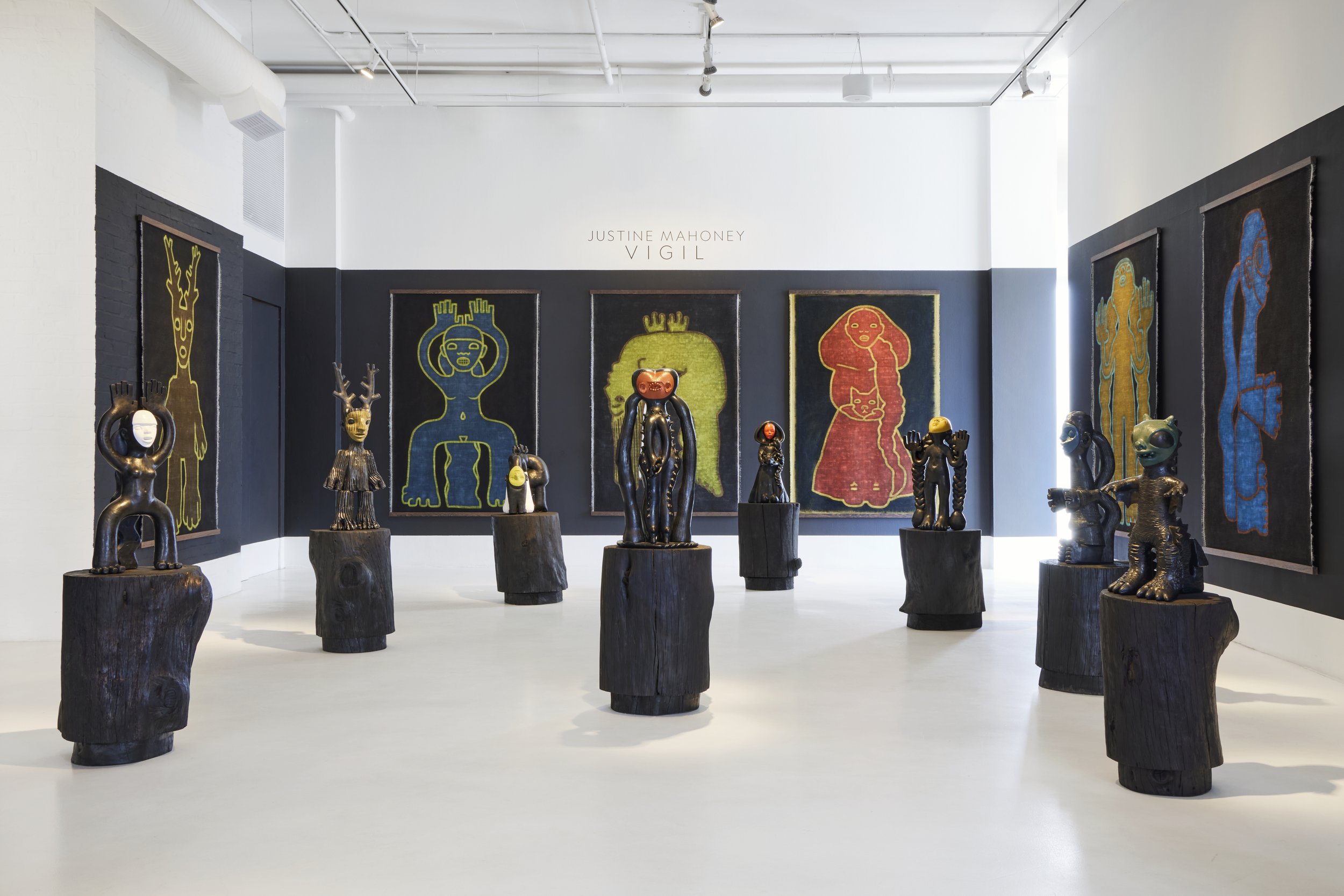
Installation view of Justine Mahoney: VIGIL Southern Guild Cape Town. Image courtesy of Hayden Phipps/Southern Guild.
Returning to painting after years of working solely in bronze, clay and digital collage, the artist created a corresponding series of enamel paintings on large segments of fabric. The two-dimensional figures appear flattened, reducing the form of their sculptural likenesses to deliberate silhouettes of line and colour. The immense paintings – hanging almost from floor to ceiling - converse with the clay bodies, retaining each archetype’s energetic weight in a reimagined graphic figure.
In a moment of epistemic restlessness and global upheaval, Mahoney’s VIGIL finds renewed meaning in ancient, inner knowing. The body of work elevates the primal and perhaps forgotten knowledge of our collective humanness and shared mythologies.
VIGIL by Justine Mahoney runs concurrently with Dzuvula (Shedding Skin) by Rich Mnisi at Southern Guild Cape Town from 8 February – 23 May 2024. For more information about this exhibition and others, please visit the Southern Guild Website here; the gallery can also be found on Artsy, Instagram, and Facebook.
The cure will be completed in my body, silence your spirit to let me reach you, my skin will secrete angels and you will have forgotten and forgiven all.
Tau Lewis, The cure will be completed in my body, silence your spirit to let me reach you, my skin will secrete angels and you will have forgotten and forgiven all., 2023 (detail) Tau Lewis, courtesy of the artist and Night Gallery, Los Angeles. Photo: Justin Craun.
ICA Miami awarded the fourth Ezratti Family Prize for Sculpture to Tau Lewis. Working in an array of techniques—including hand-sewing, appliqué, carving, and assemblage—Lewis honors the materials and creative modalities intrinsic to communities of the African diaspora.
Using found, inherited, and secondhand cloth and objects, Lewis contemplates the affective histories of her materials. Disparate stories and voices are salvaged from the fibers during these processes of transformation; en masse, they imbue Lewis’s forms with potency and life.
Tau Lewis, The cure will be completed in my body, silence your spirit to let me reach you, my skin will secrete angels and you will have forgotten and forgiven all., 2023 (detail) Tau Lewis, courtesy of the artist and Night Gallery, Los Angeles. Photo: Justin Craun.
The artist’s new sculpture The cure will be completed in my body, silence your spirit to let me reach you, my skin will secrete angels and you will have forgotten and forgiven all. (2023) evokes a mythic world of her own creation. Lewis creates in iterations, conceiving of her bodies of work similarly to chapters spread across different volumes. The newest exploration of Lewis’s Saint Mozelle—which she describes as a tutelary deity—forms the center of the installation and spills over with transmuting blossoms and other small life forms. The materials, including found jewelry, leather scraps, drum skins, teeth, and other talismans, carry unique attributes and mysteries beyond what the eye can see—much like the spirit of Mozelle itself.
Tau Lewis, The cure will be completed in my body, silence your spirit to let me reach you, my skin will secrete angels and you will have forgotten and forgiven all., 2023 (detail) Tau Lewis, courtesy of the artist and Night Gallery, Los Angeles. Photo: Justin Craun.
Tau Lewis (b. 1993, Toronto) has had recent solo exhibitions at 52 Walker, New York, (2022); National Gallery of Canada, Ottawa (2021); and Oakville Galleries, Ontario (2020). Her work has been prominently featured in prestigious exhibitions including the Venice Biennale: “The Milk of Dreams” (2022). Lewis’s work is held in the collections of the Metropolitan Museum of Art, Library Collection, New York; National Gallery of Canada, Ottawa; Institute of Contemporary Art, Miami; Hammer Museum, Los Angeles; among many others. Lewis lives and works in Brooklyn.
Tau Lewis, The cure will be completed in my body, silence your spirit to let me reach you, my skin will secrete angels and you will have forgotten and forgiven all., 2023 (detail) Tau Lewis, courtesy of the artist and Night Gallery, Los Angeles. Photo: Justin Craun.
Inaugurated in 2019, the Ezratti Family Prize for Sculpture is awarded by ICA Miami to a living artist in recognition of their exceptional contributions in sculpture and supports the creation of a new commission. Building on the museum’s history of commissioning and presenting new works, the prize reflects ICA Miami’s ongoing commitment to promoting experimentation in artistic practice and providing an international platform for influential voices in contemporary art. Earlier recipients of the Ezratti Prize for Sculpture are Chakaia Booker, Damián Ortega, and Robert Grosvenor.
Tau Lewis, The cure will be completed in my body, silence your spirit to let me reach you, my skin will secrete angels and you will have forgotten and forgiven all., 2023 (detail) Tau Lewis, courtesy of the artist and Night Gallery, Los Angeles. Photo: Justin Craun.
The exhibition is located on the Ground Floor / Arlene H. and Laurans A. Mendelson Gallery. With the exhibition opening on Nov 16, 2023 it will close on Apr 28, 2024. The Institute of Contemporary Art, Miami is located at 61 NE 41st Street, Miami, Florida 33137. For more information, visit here or follow the museum on Instagram, YouTube, and Facebook. Explore the ICA Channel for inside looks at ICA Miami exhibitions and the practices of the most exciting artists working today.
Ahmed Morsi in New York: Elegy of the Sea
Portrait by Yehia El Alialy Courtesy of the artist, photo credit: Yehia El Alaily, Egypt
A major figure in Egyptian modernism and the contemporary art canon, the painter, poet, and critic Ahmed Morsi has only recently begun to gain recognition in the West. “Ahmed Morsi in New York: Elegy of the Sea” brings together a number of paintings from 1983 to 2012 that the artist made in New York, where he continues to live. Morsi came of age in the 1940s and was part of the Alexandria School, a key cultural movement that placed the Egyptian city on the map as an emerging Mediterranean metropole in the postwar period. When Morsi arrived in New York in 1974, his paintings transformed, taking on a lyrical blue and solemn landscape that evoked his seaside homeland, the port city of Alexandria.
Green Horse, Courtesy of the artist (and owner if they choose as per Loan Request)
In this distinctive body of work, Morsi creates surreal, fantastical landscapes populated by recurring figures, real and imagined: fish out of water, androgynous subjects, mythological horses, human-size clocks, and images within images. This Surrealist vocabulary emerges from Morsi’s experience of dislocation, memories of the city and sea in Alexandria, and the simultaneous experience of crowdedness and solitude living in diaspora.
Four Eyes, Courtesy of the artist and mathaf: Arab Museum of Modern Art Collection, Qatar
Morsi’s universal maritime scenes represent multiple seas, as well as feelings of placelessness, repetition, and loss. His aesthetic corpus reflects a uniquely Egyptian Surrealist practice that bridges the visual and the textual, where painting and poetry are intimately connected. They also concretely reflect the loss of an Alexandria that once was, the stories and memories the artist carries, and the political conditions that shape modern and contemporary life. Morsi’s sea is a portal for dreams and a mode of envisioning the world: elegiac, mythological, and otherworldly. To engage with Morsi in New York is to encounter the sea’s hold on the material of the city, or, as Morsi ponders in his poetry: “Did the sea dry up? / A question kept returning to me time and again / as I was dragging my defeated ship over asphalt stones.”
Ahmed Morsi (b. 1930, Alexandria, Egypt) has exhibited work in solo and group exhibitions around the world including, most recently, “Detail From a Mural,” Salon 94, New York (2021); “Greater New York,” MoMA PS1, Long Island City, Queens (2021); “When Art Becomes Liberty: The Egyptian Surrealists (1938–65),” National Museum of Contemporary Art, Korea, Seoul (2017); and “Ahmed Morsi: A Dialogic Imagination,” Sharjah Art Foundation (2017). Morsi’s work is held in numerous collections around the world, including the Museum of Modern Art, New York; Mathaf: Arab Museum of Modern Art; Kiran Museum of Art, New Delhi, India; Sharjah Art Foundation; and the Museum of Egyptian Modern Art, Cairo, among others.
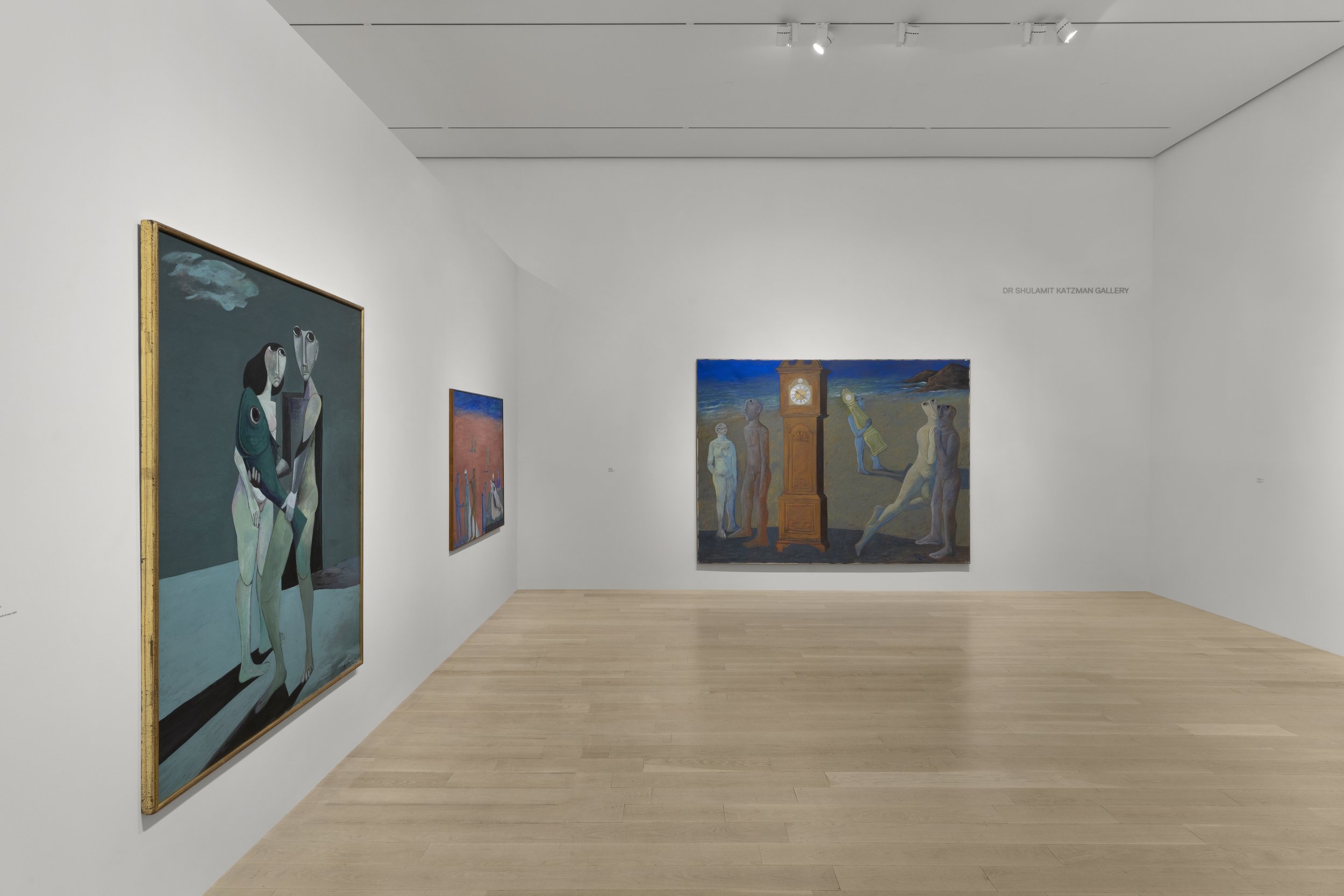
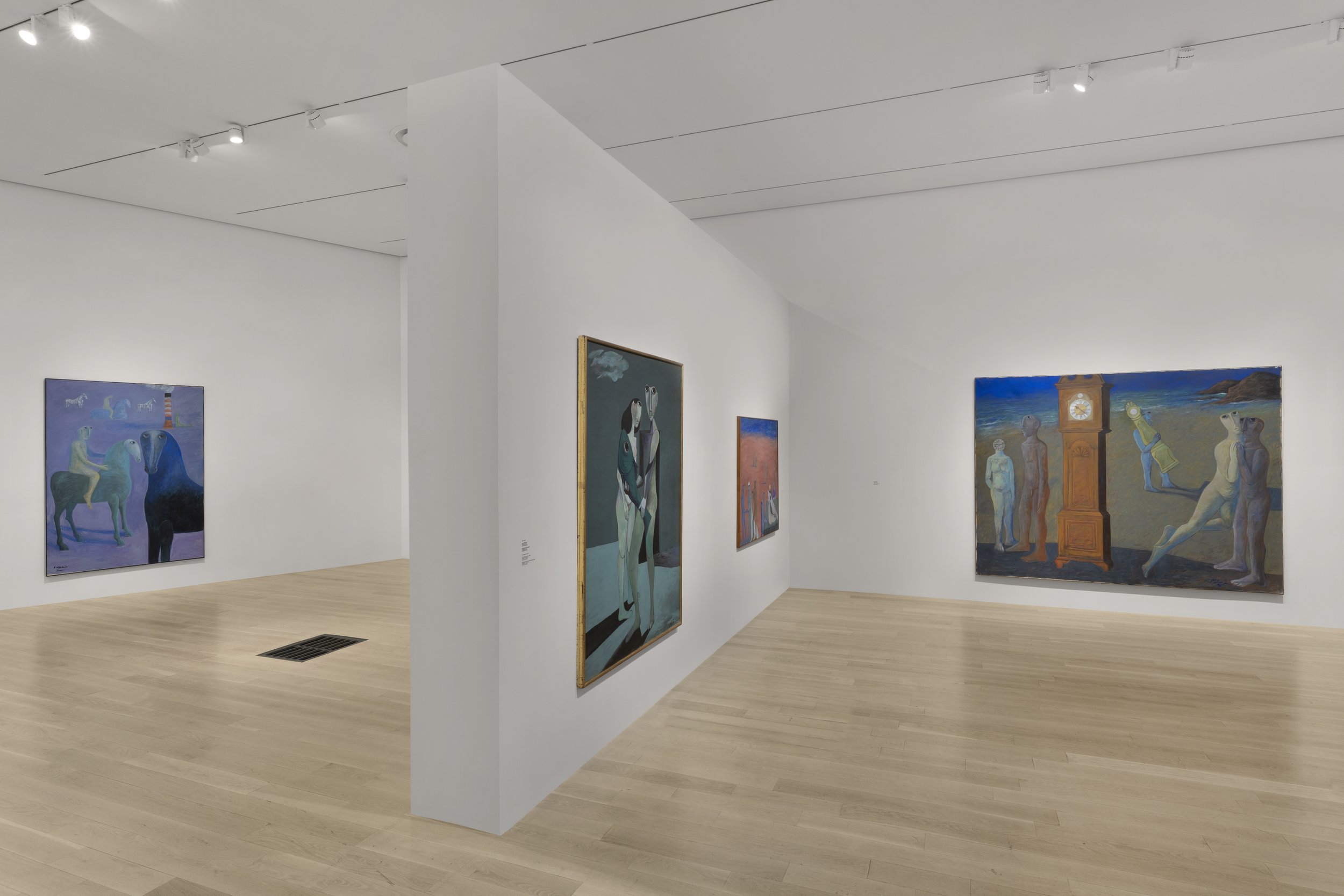
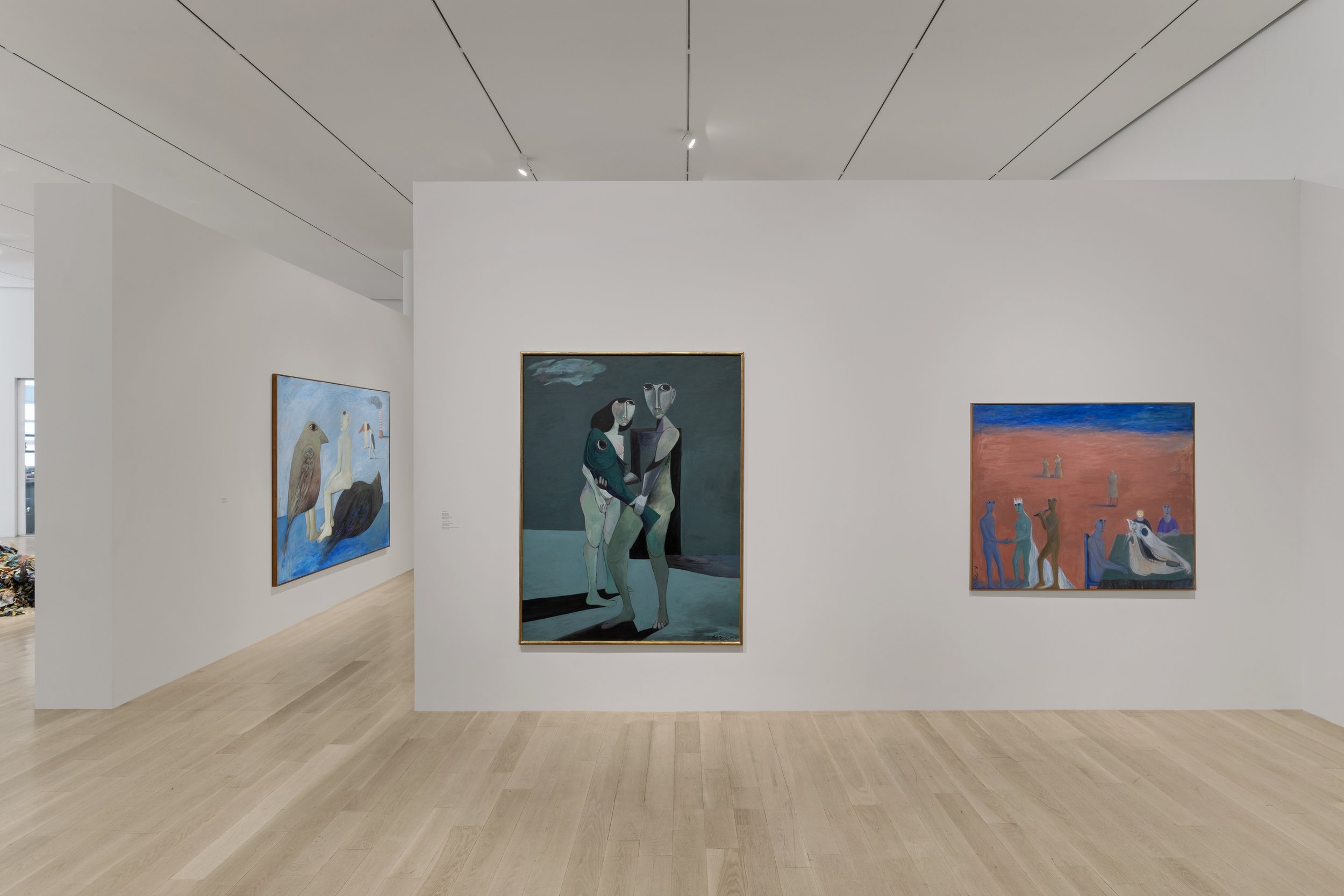
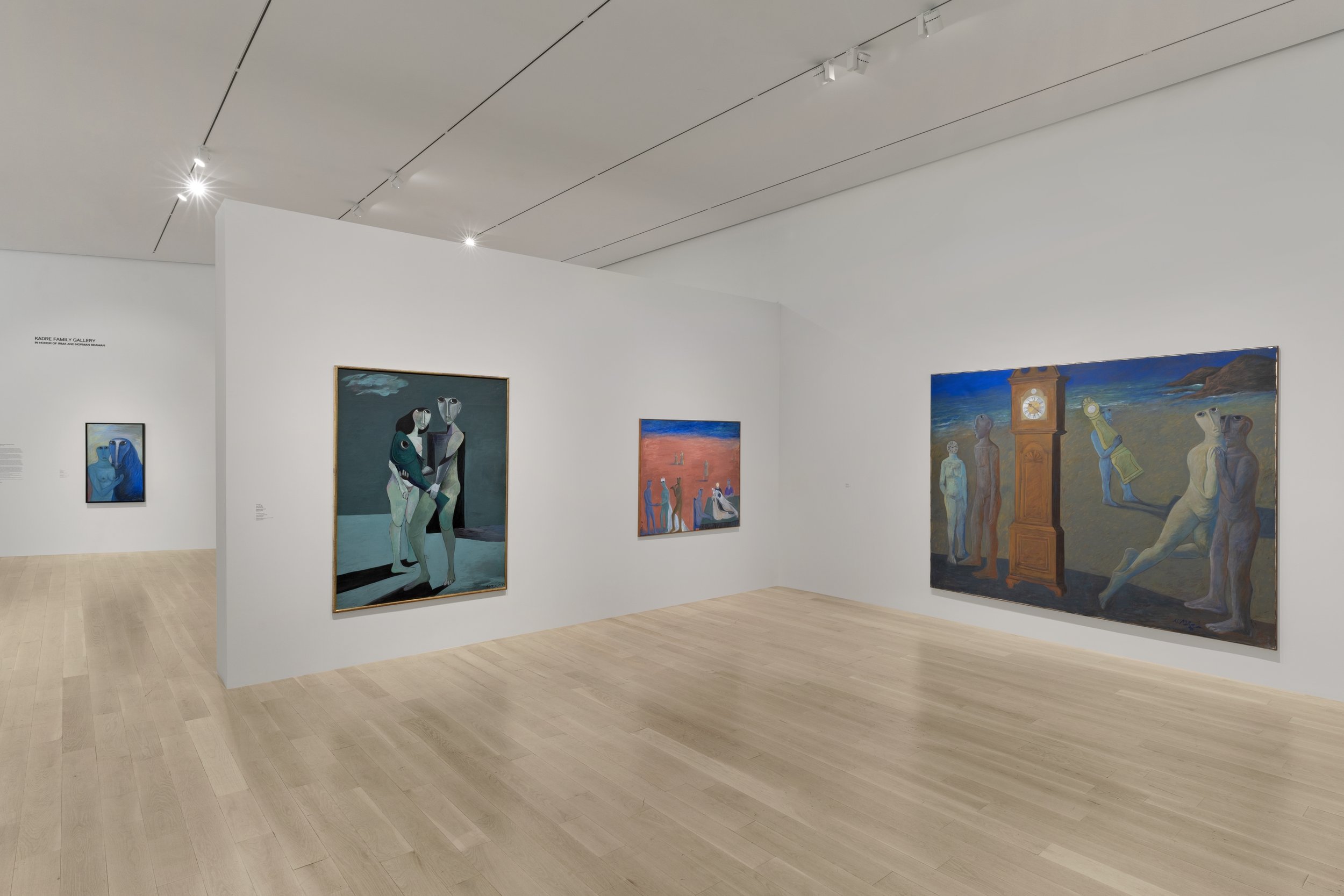
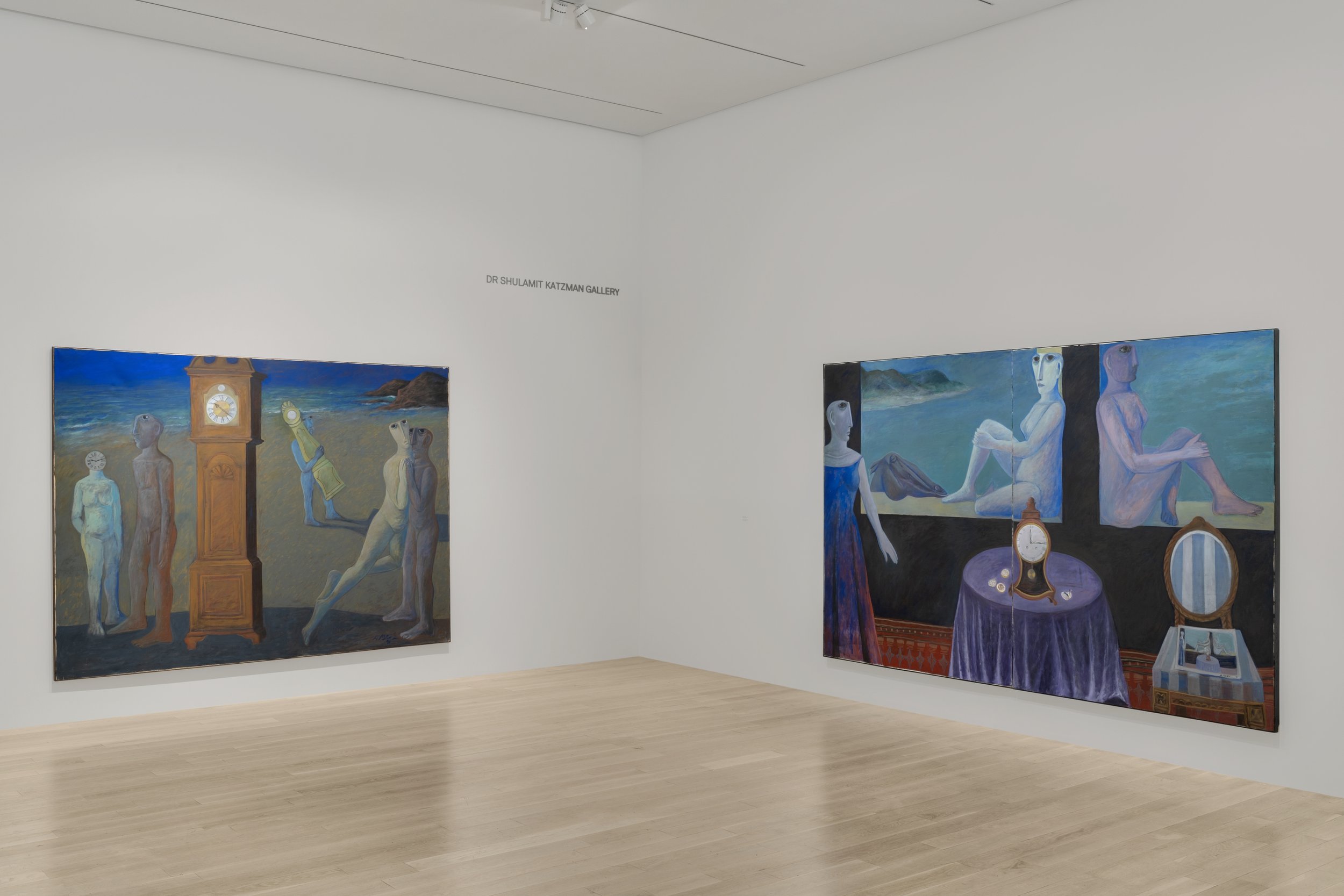
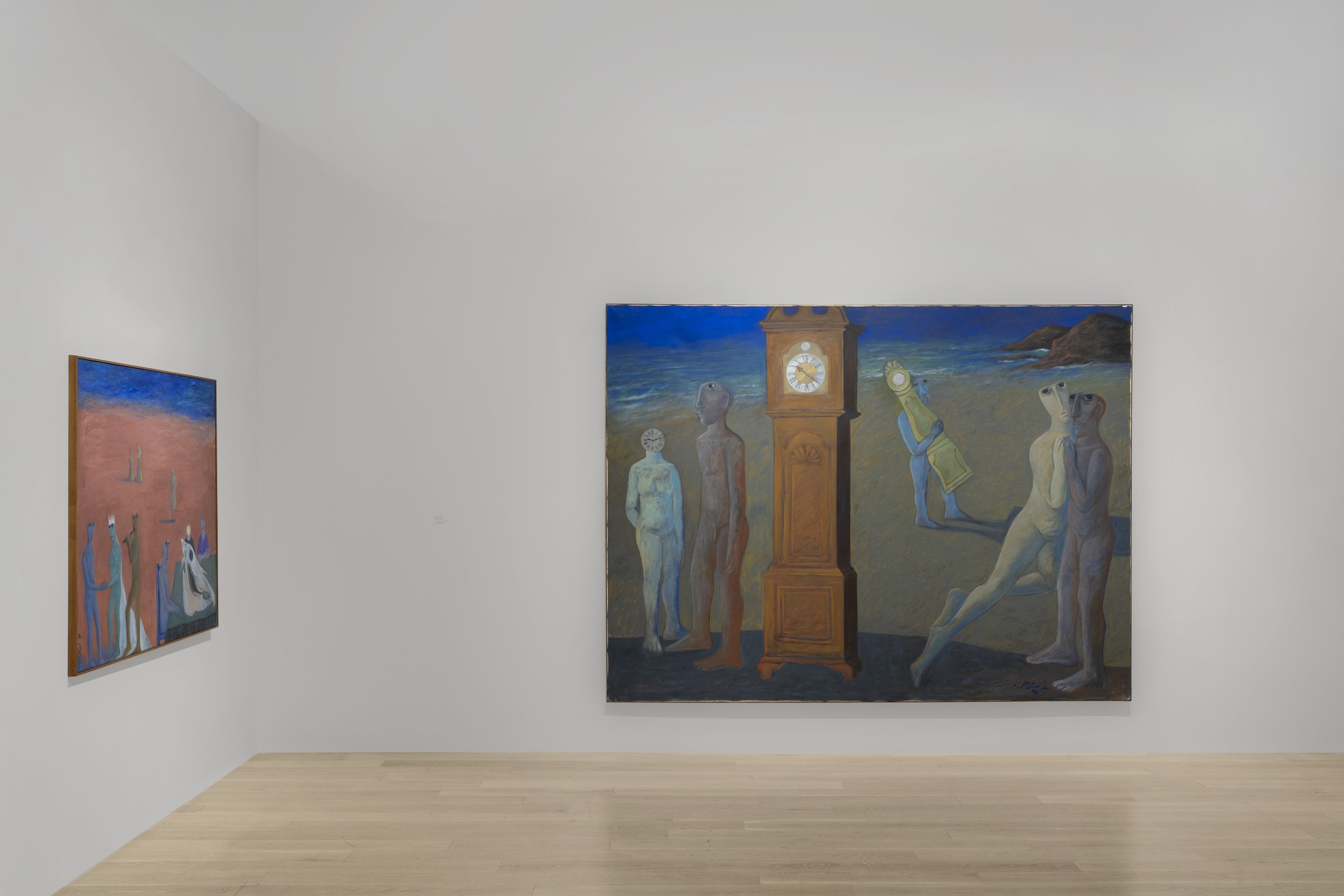
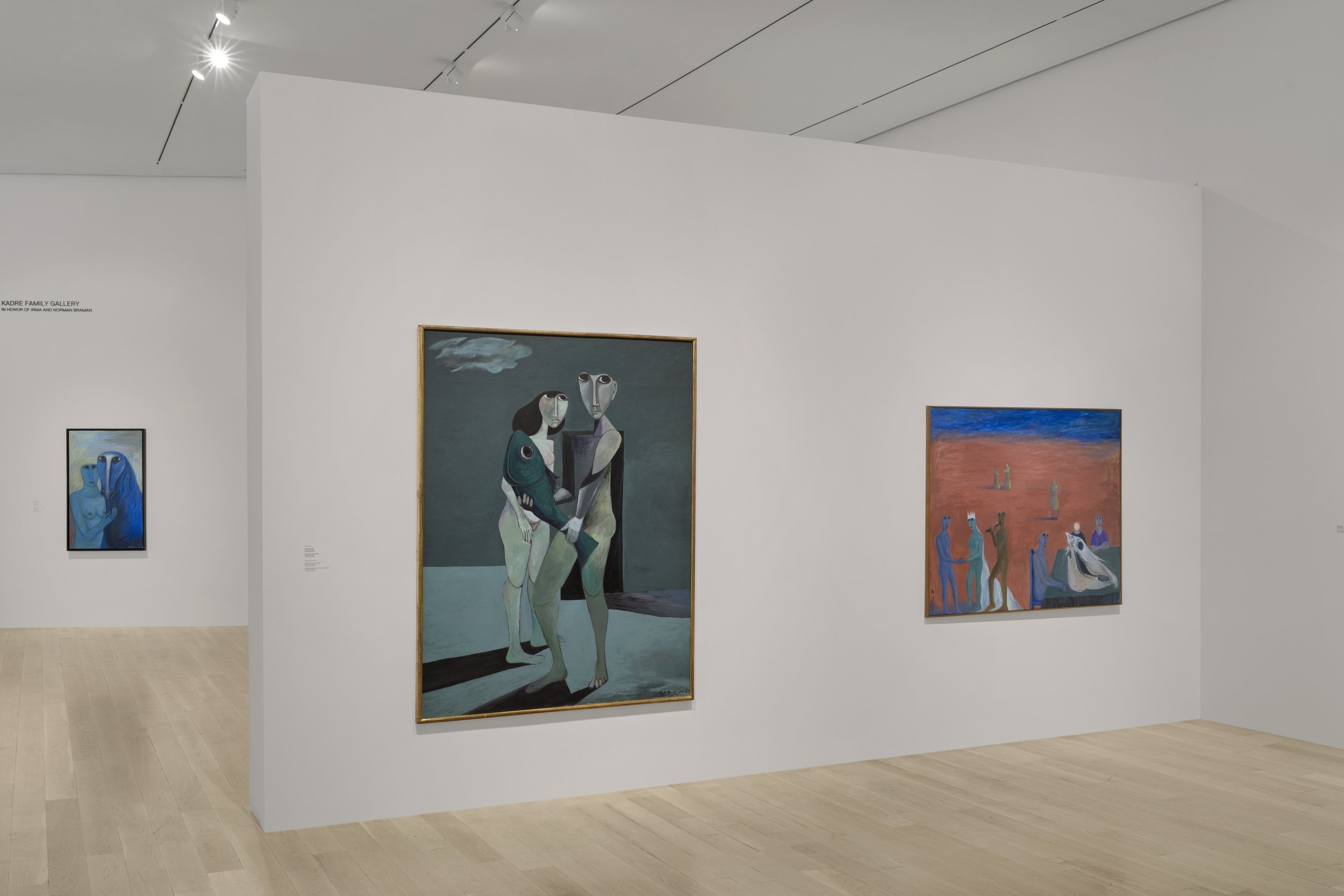
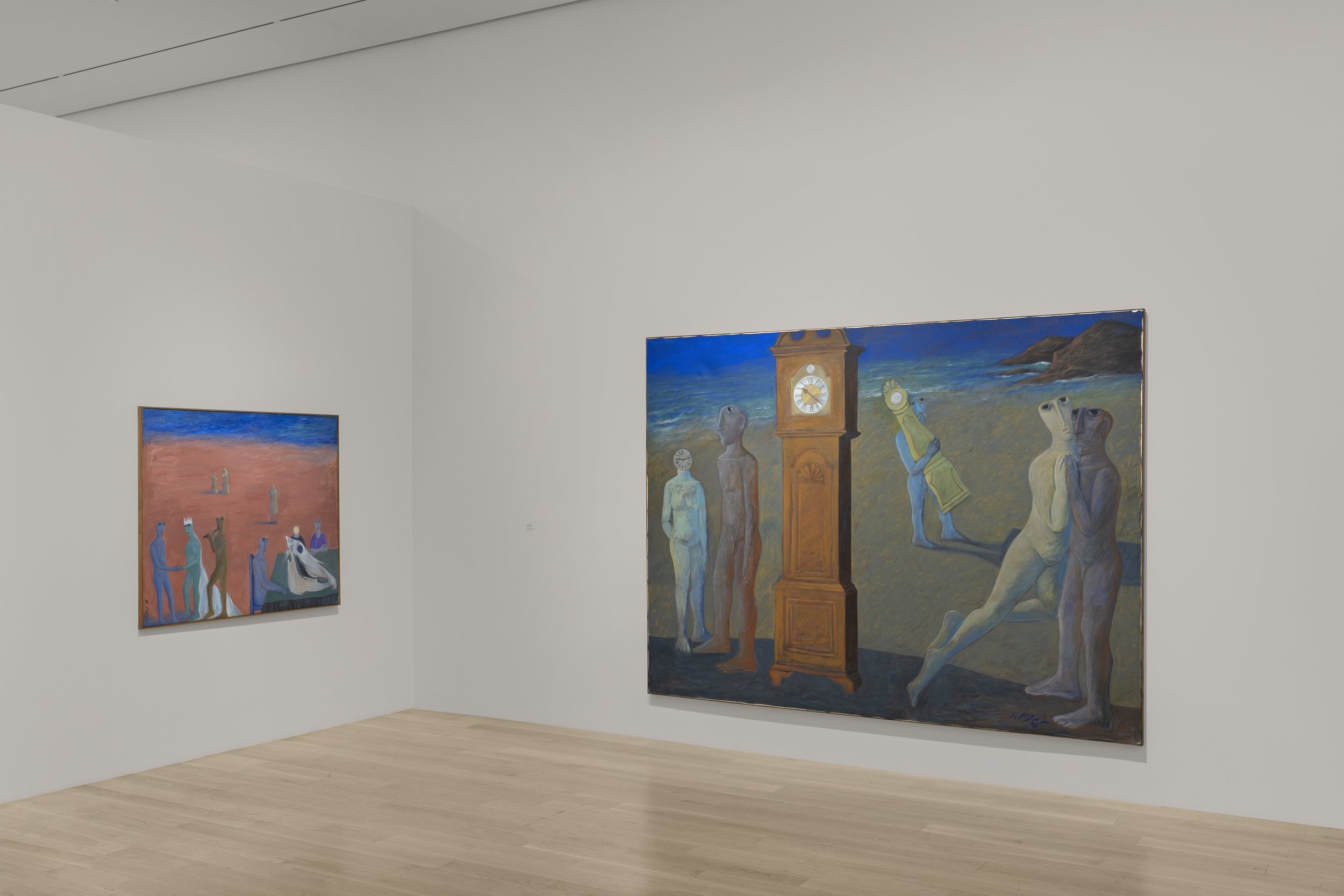
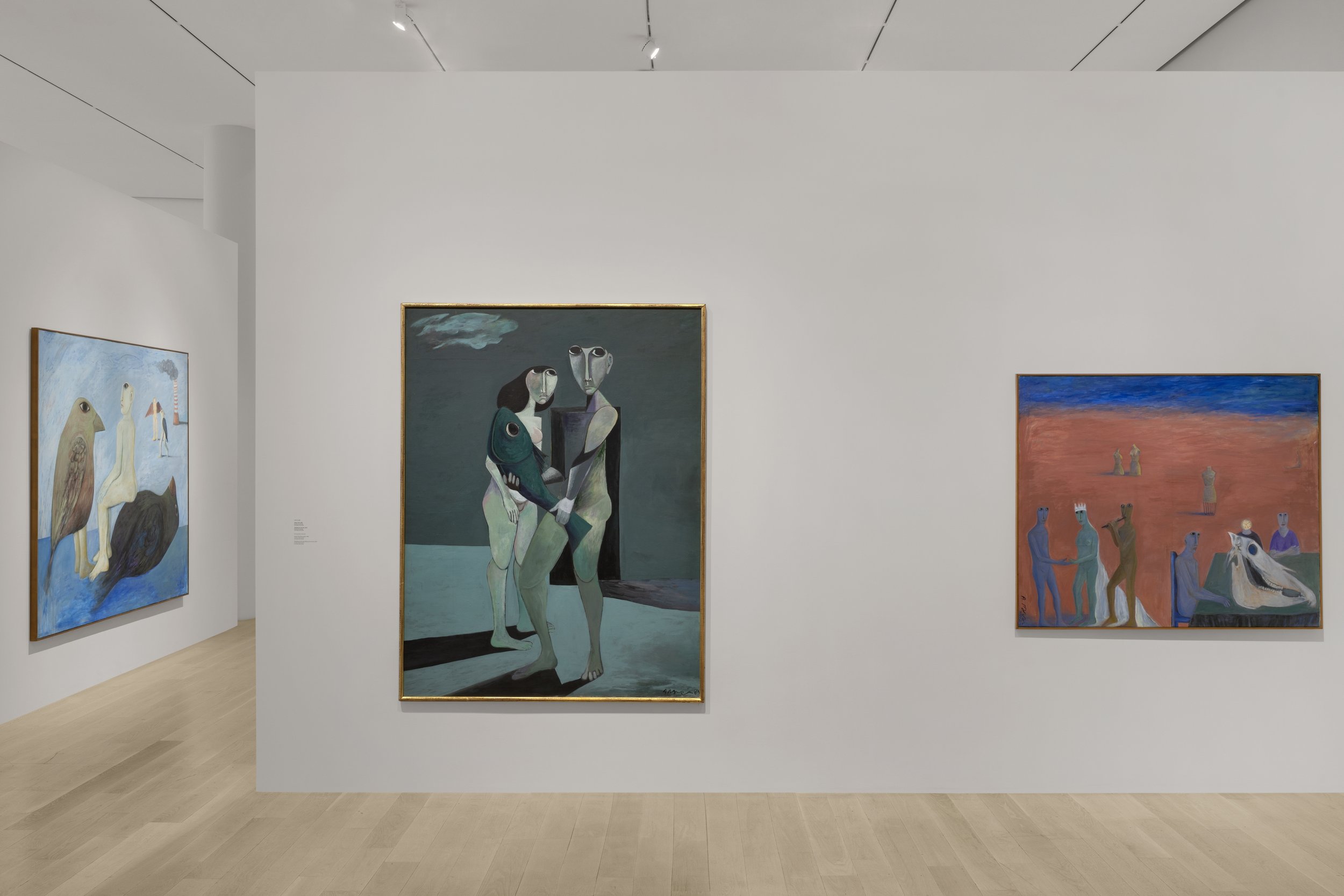

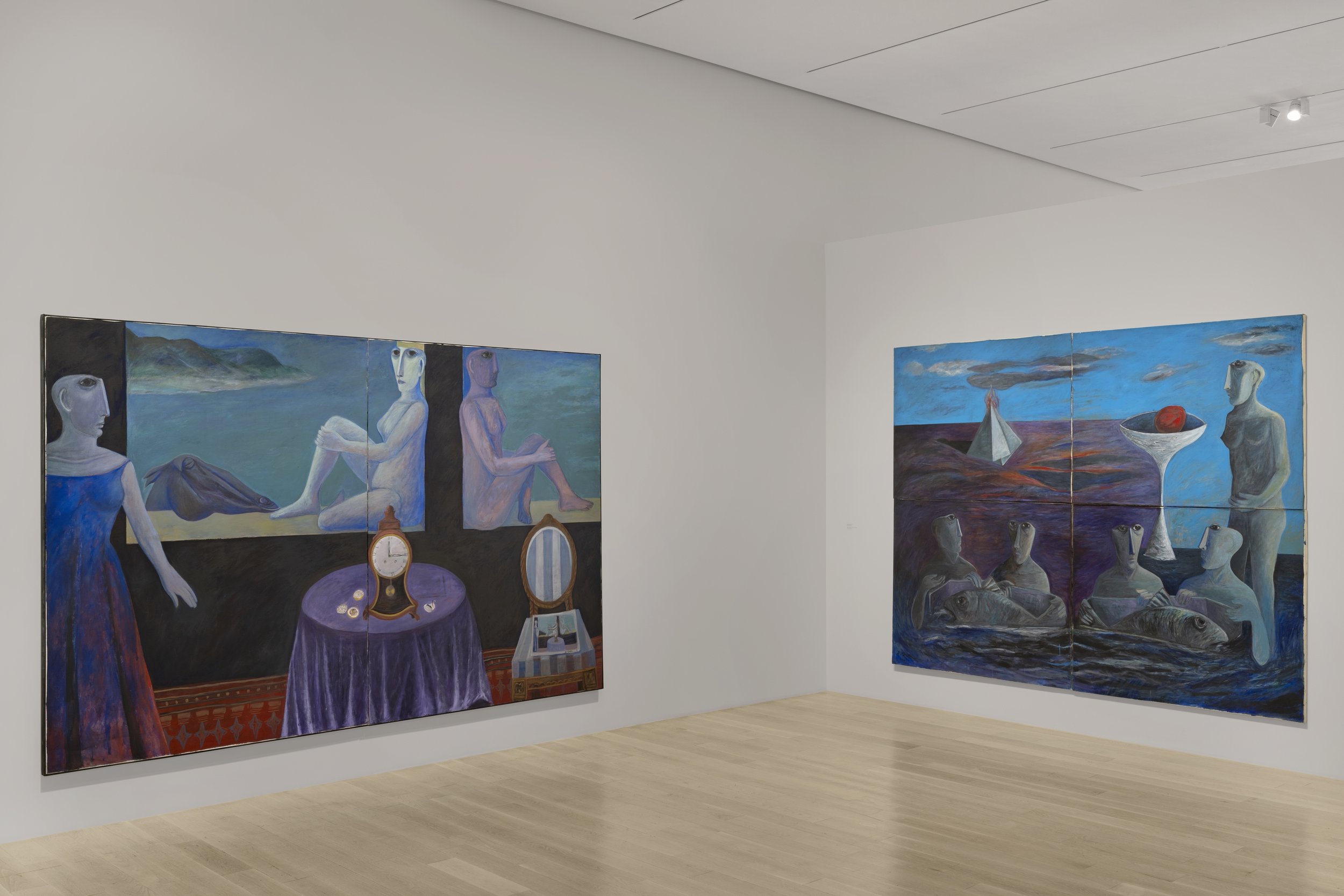
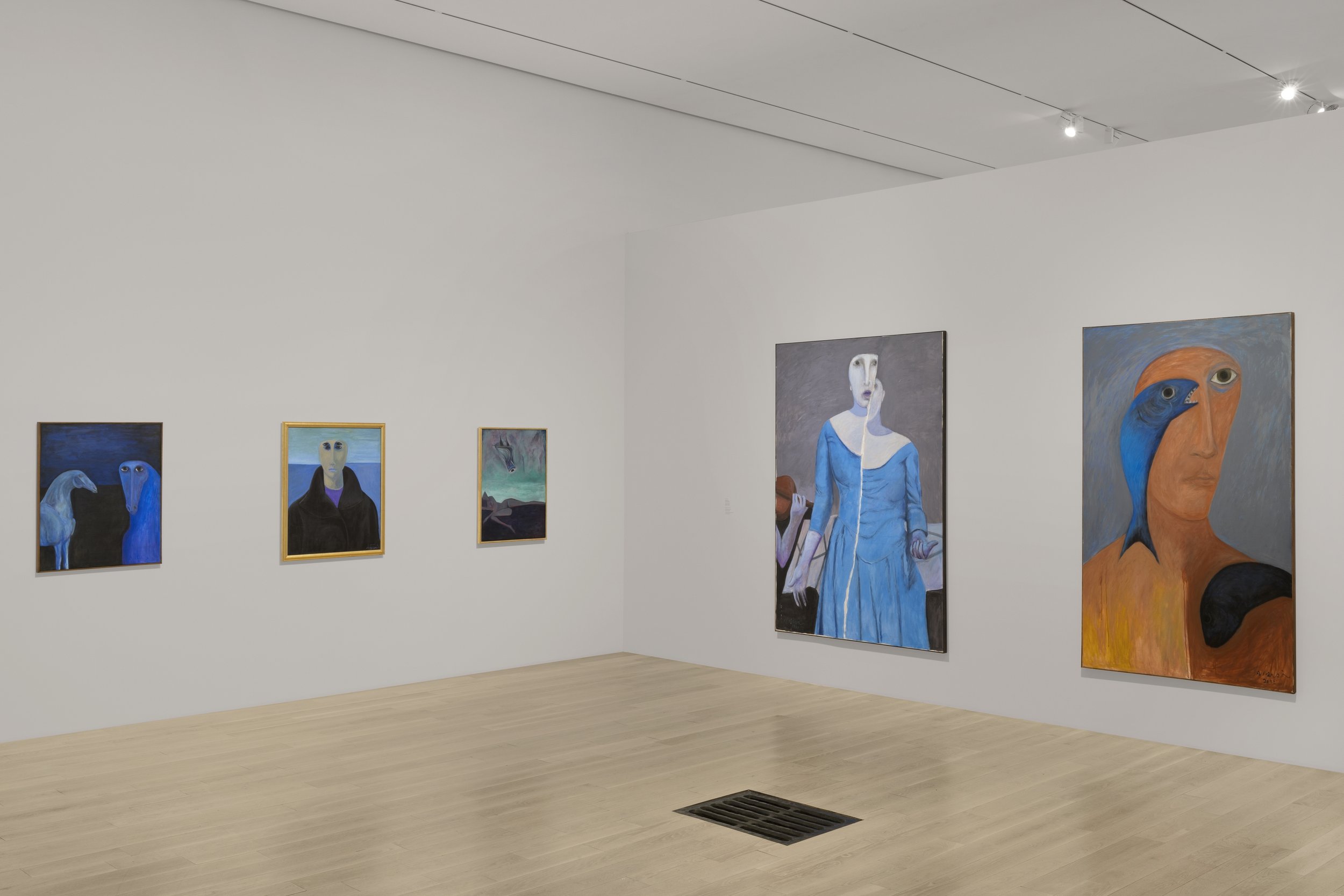

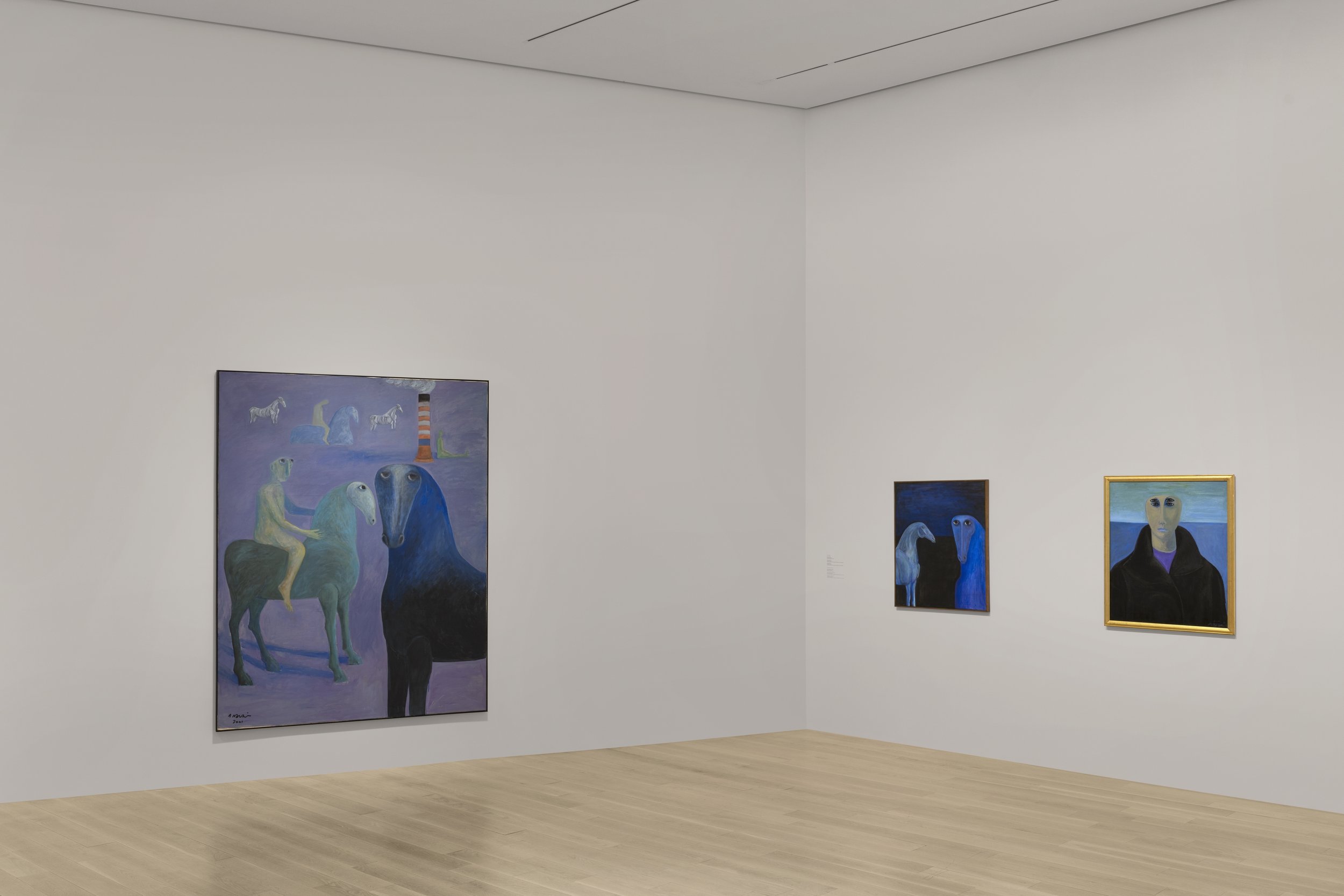
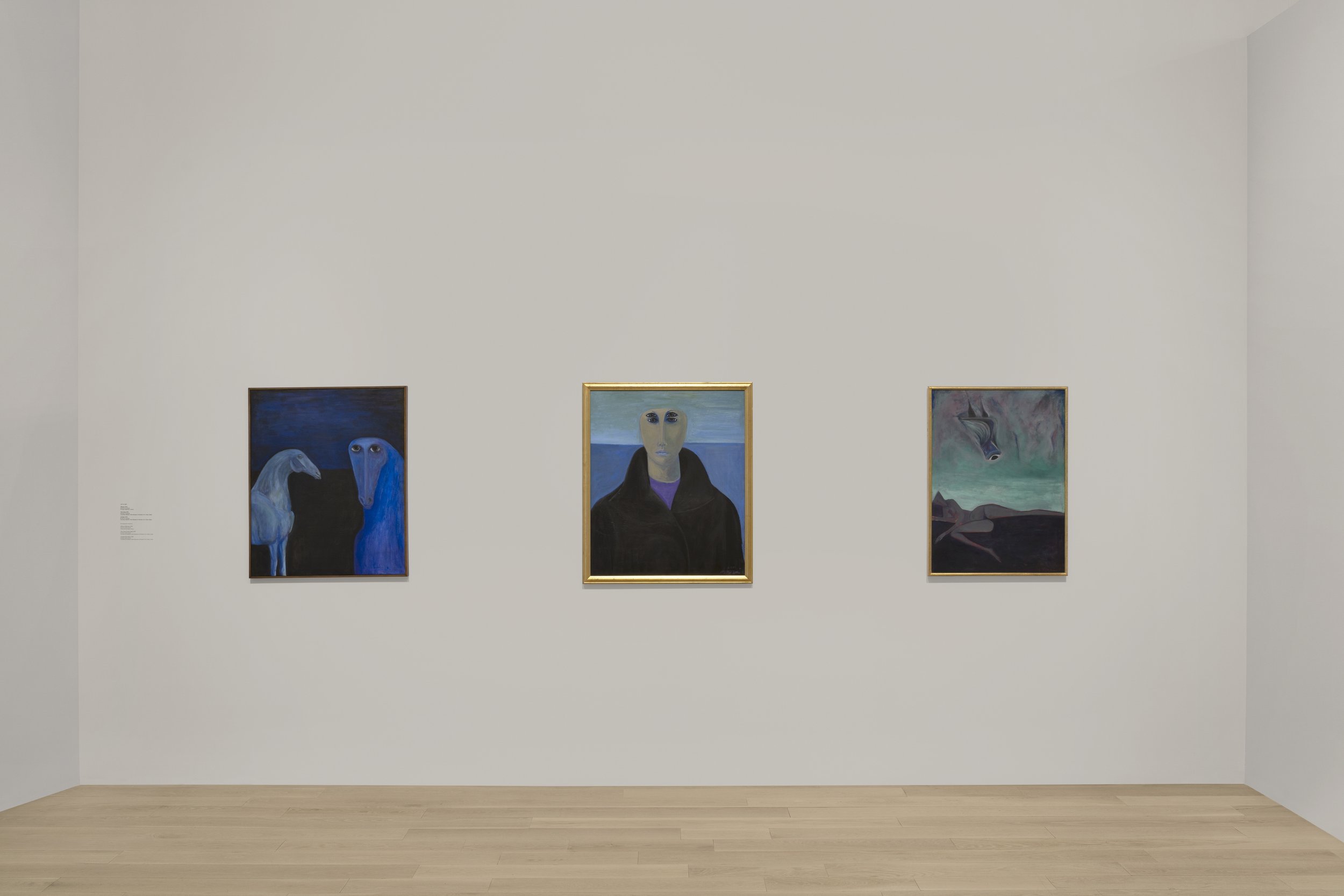
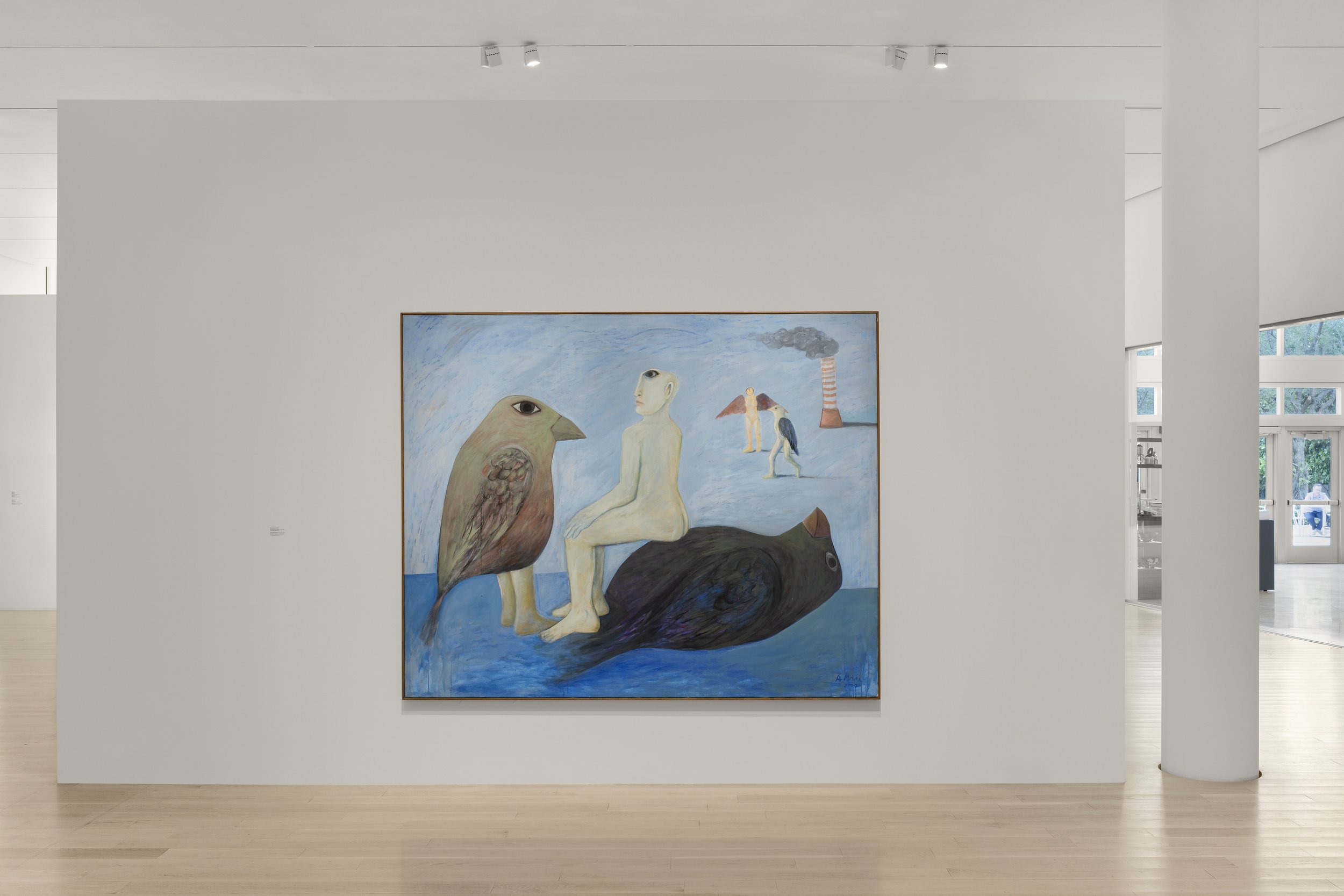
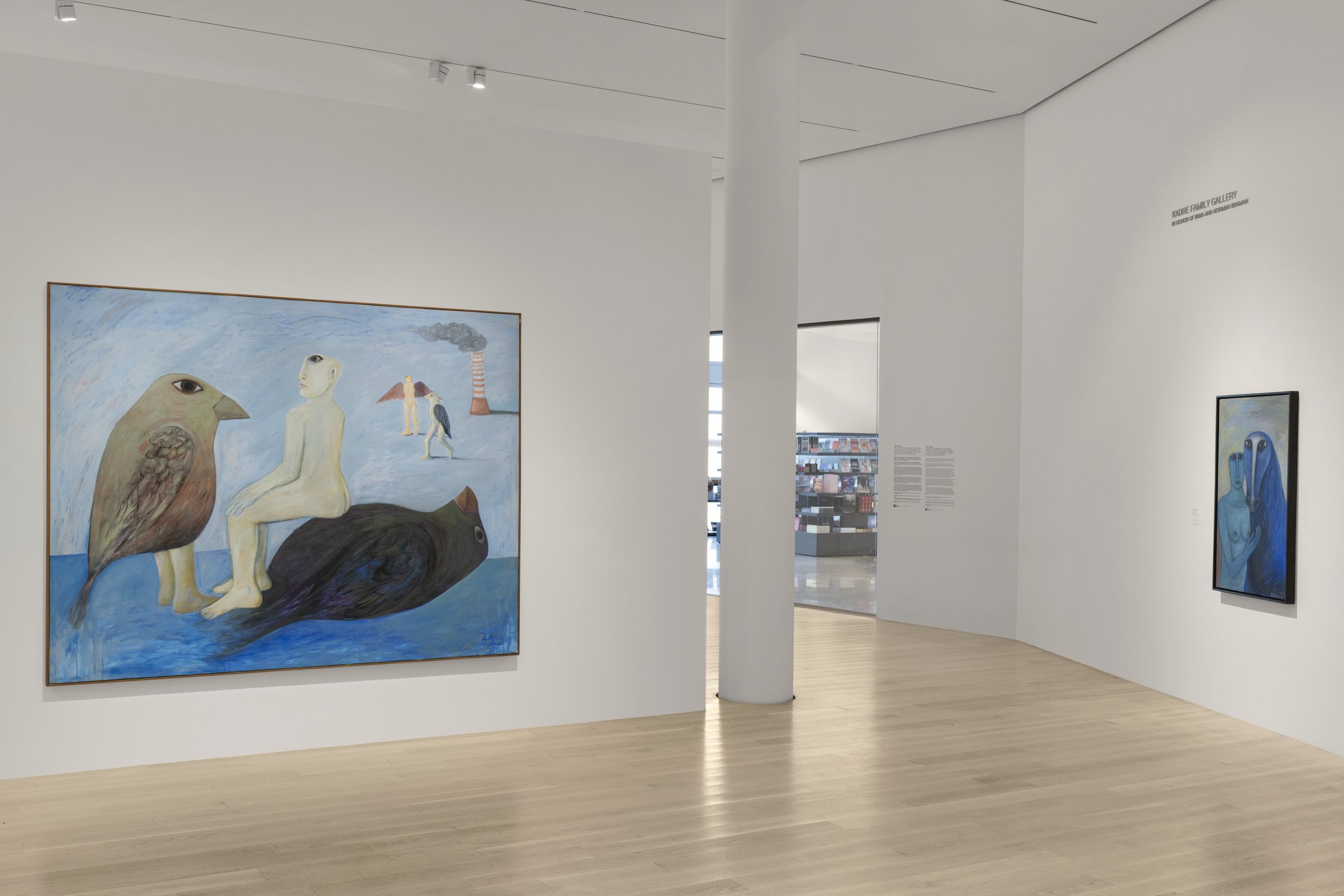
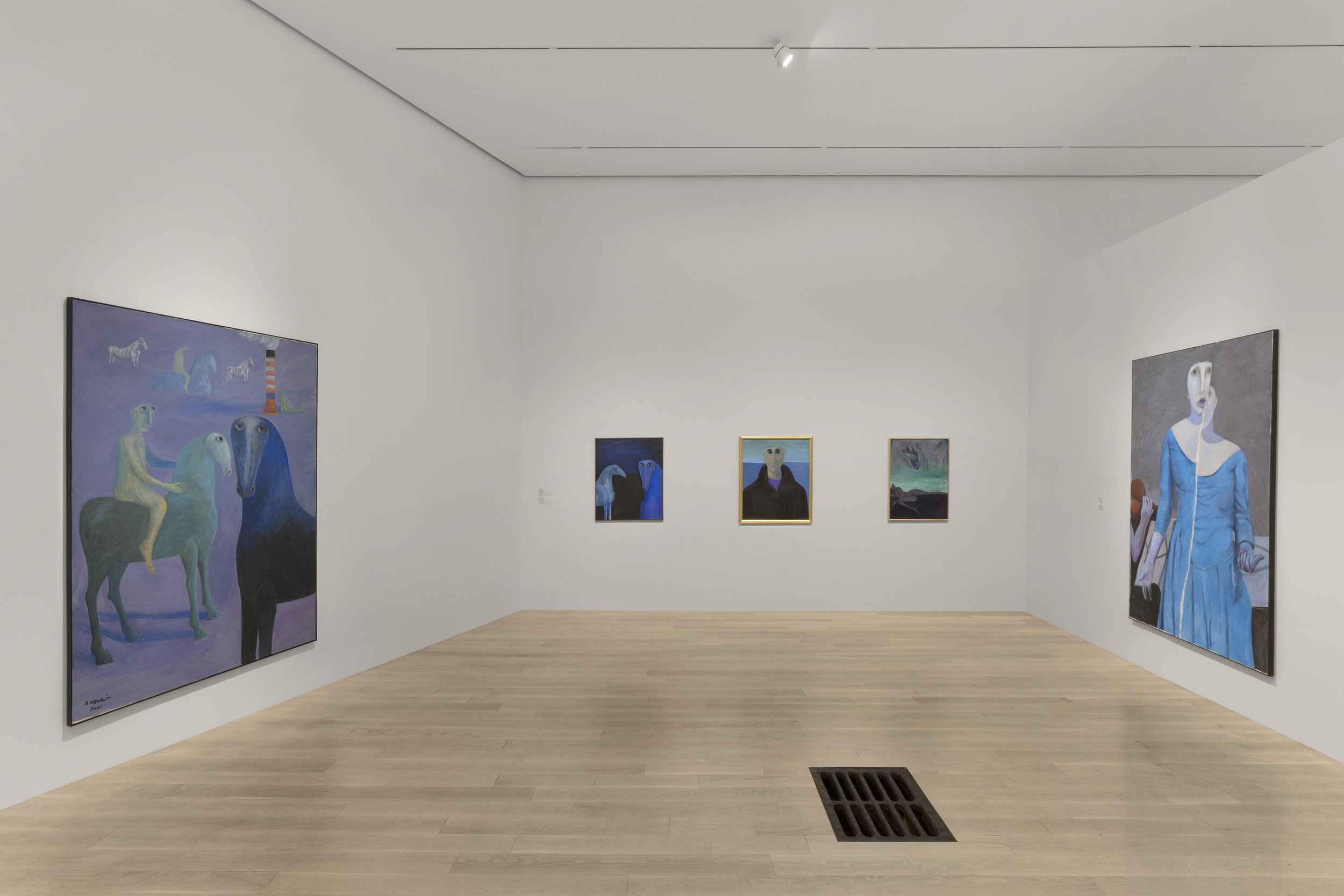
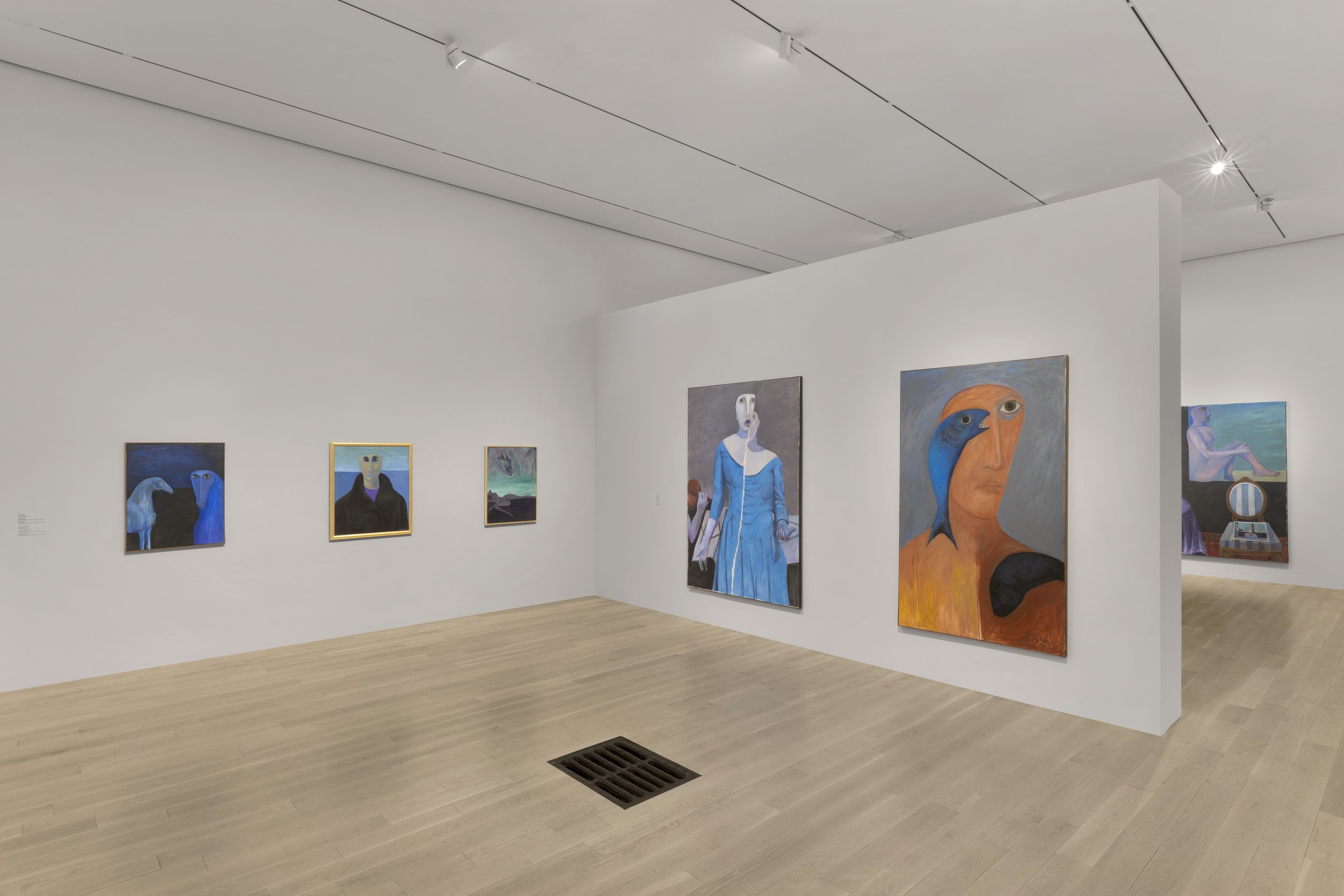
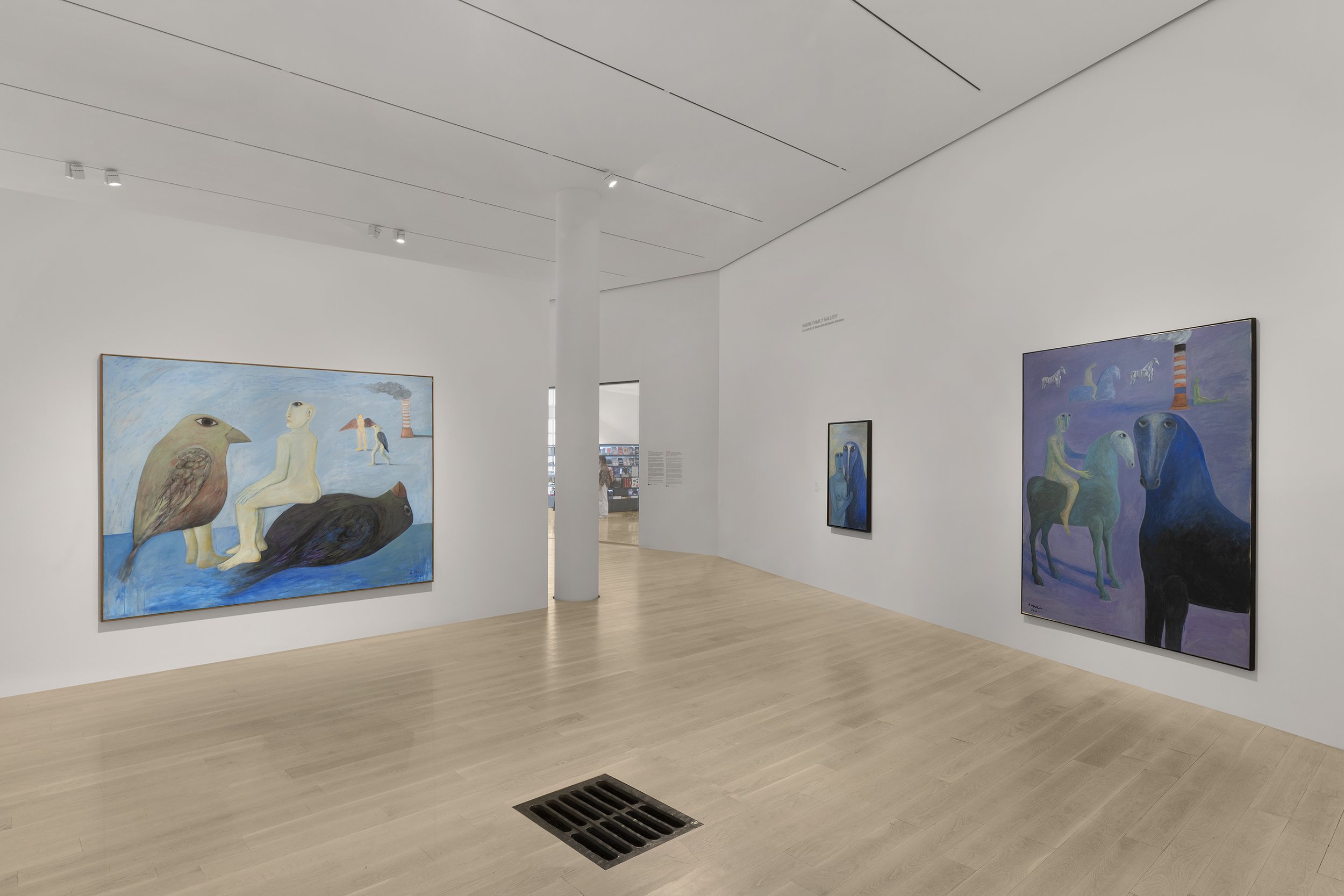
Installation view: "Ahmed Moris in New York: Elegy of the Sea," at the Institute of Contemporary Art,Miami. Dec 5, 2023-Apr 28, 2024. Photograph Zachary Balber.
“Ahmed Morsi in New York: Elegy of the Sea” is organized by ICA Miami and curated by Donna Honarpisheh, Associate Curator.
Exhibition Support Exhibitions at ICA Miami are supported by the Knight Foundation.
About the Institute of Contemporary Art, Miami
The Institute of Contemporary Art, Miami (ICA Miami) is dedicated to promoting continuous
experimentation in contemporary art, advancing new scholarship, and fostering the exchange of art and ideas throughout the Miami region and internationally. Through an energetic calendar of exhibitions and programs, and its collection, ICA Miami provides an important international platform for the work of local, emerging, and under-recognized artists, and advances the public appreciation and understanding of the most innovative art of our time. Launched in 2014, ICA Miami opened its new permanent home in Miami’s Design District in December 2017. The museum’s central location positions it as a cultural anchor within the community and enhances its role in developing cultural literacy throughout the Miami region. The museum offers free admission, providing audiences with open, public access to artistic excellence year round.
The Institute of Contemporary Art, Miami is located at 61 NE 41st Street, Miami, Florida 33137. For more information, visit here or follow the museum on Instagram, YouTube, and Facebook. Explore the ICA Channel for inside looks at ICA Miami exhibitions and the practices of the most exciting artists working today.
Anne Collier
Anne Collier, "Unraveling (Are You Out Of Your Mind)", 2023. Adhesive vinyl on wall. 535x 139 inches. Courtesy of the artist. Photo: Zachary Balber. Courtesy Institute of Contemporary Art, Miami.
ICA Miami presents a newly commissioned work by Anne Collier in the museum’s central stairwell. This is the first site-responsive wallpaper by the artist, and her first major presentation in Miami. In her photographic work that combines staged and often appropriated images, Collier examines mechanisms of representation, circulation, and objecthood of images.
Anne Collier, "Unraveling (Are You Out Of Your Mind)", 2023. Adhesive vinyl on wall. 535x 139 inches. Courtesy of the artist. Photo: Zachary Balber. Courtesy Institute ofContemporary Art, Miami.
Critically reflecting on the representation of women in mass media, her analog photographs feature found imagery, including posters, records, and comic strips from the 1950s and 1960s. Juxtaposing a sober, near-forensic approach to image-making with the charged gender dynamics of the found images she appropriates, Collier frames the apparatus of the camera as both an instrument of domination and emancipation.
Anne Collier, Eye # !, (2014) Courtesy of artist: Anton Kern Gallery, New York; Galerie Neu, Berlin, Gladstone Gallery, Brussels; and the Modern Institute, Toby Webster Ltd., Glasgow
Anne Collier (b. 1970, Los Angeles) has exhibited her work widely internationally in solo and group presentations. Recent survey exhibitions include Lismore Castle, Waterford, Ireland (2023); Sprengel Museum, Hannover, Germany (2018), which traveled to Fotomuseum Winterthur, Switzerland (2019); and a major survey at the Museum of Contemporary Art, Chicago, which traveled to the Hessel Museum of Art, Annandale-on-Hudson, New York (both 2014), the Aspen Museum of Art (2015), and the Art Gallery of Ontario, Toronto (2016); among many others. Collier’s work is part of numerous museum collections worldwide, including the Art Institute of Chicago; Los Angeles County Museum of Art; Moderna Museet, Stockholm; Museum of Contemporary Art, Chicago; Museum of Fine Arts, Boston; Museum of Modern Art, New York; Solomon R. Guggenheim Museum, New York; and Tate Modern, London. The artist lives and works in New York City.
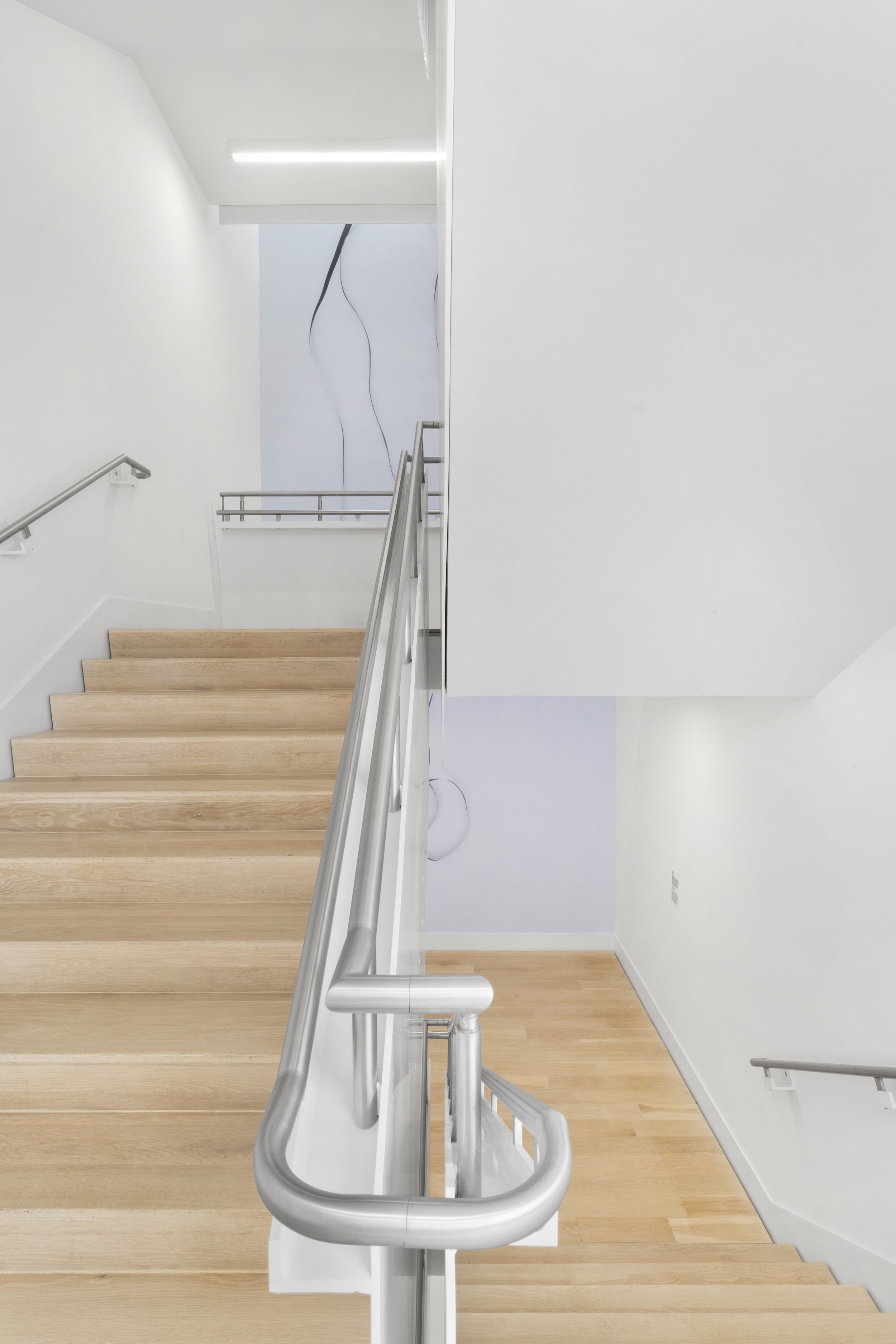
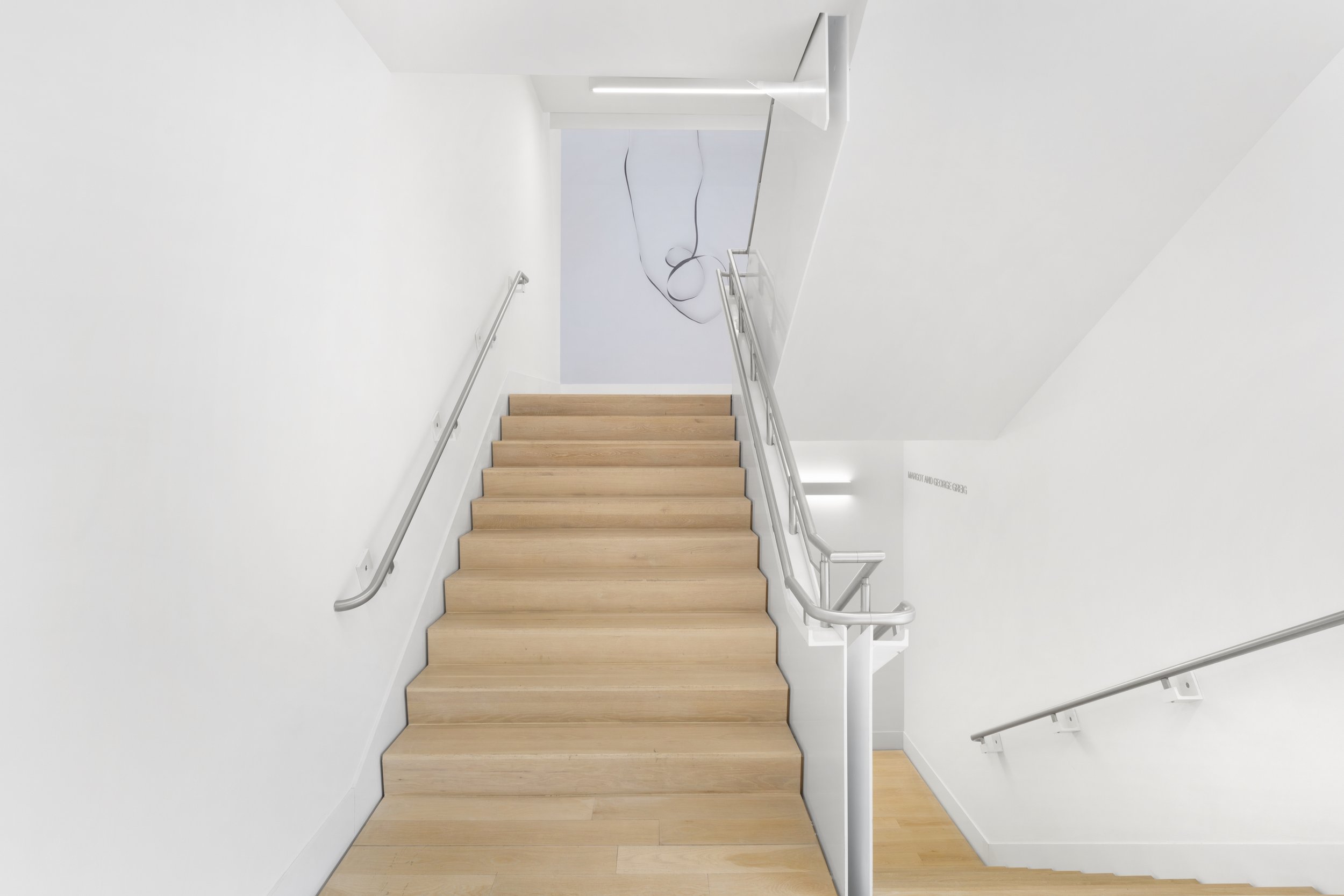
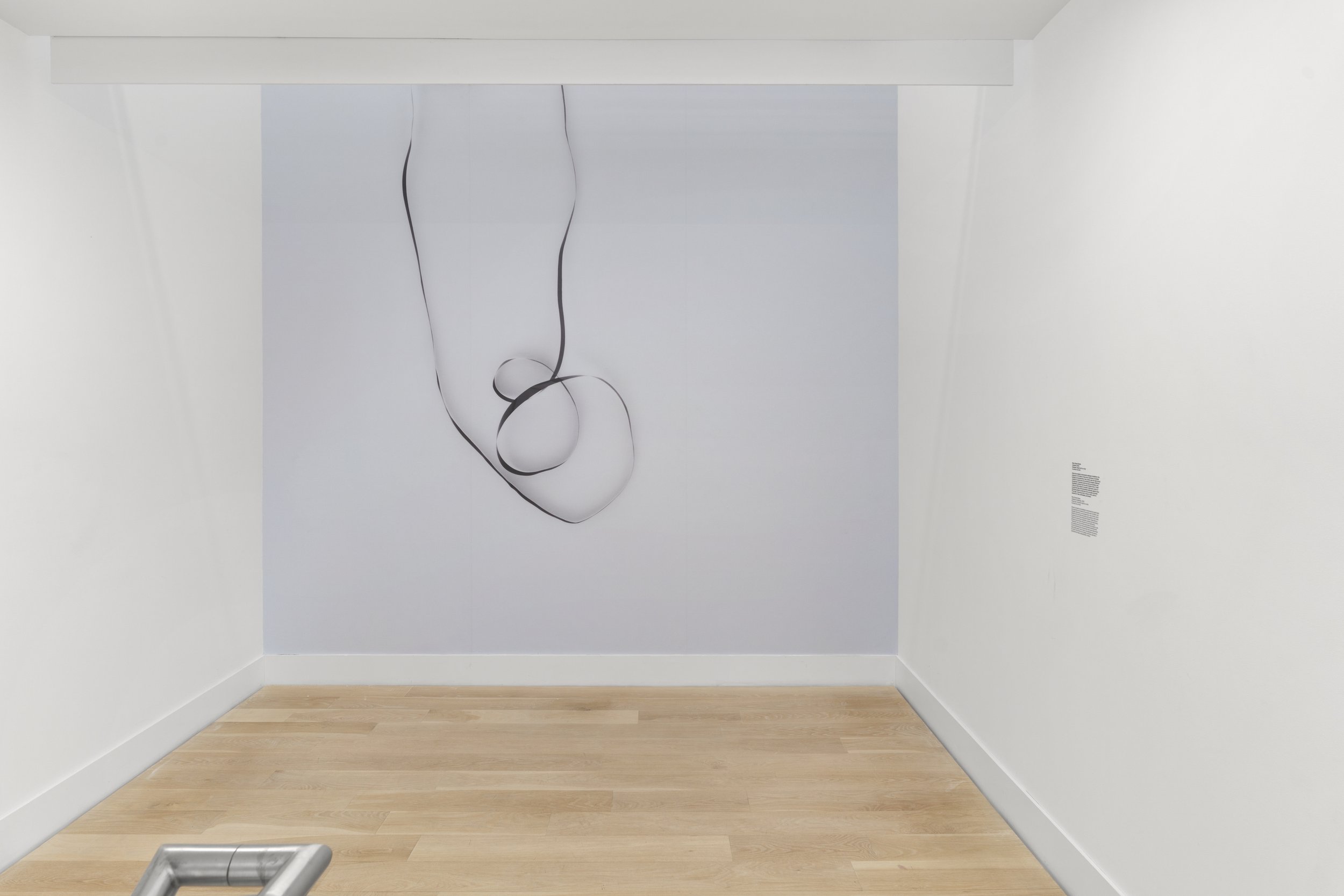
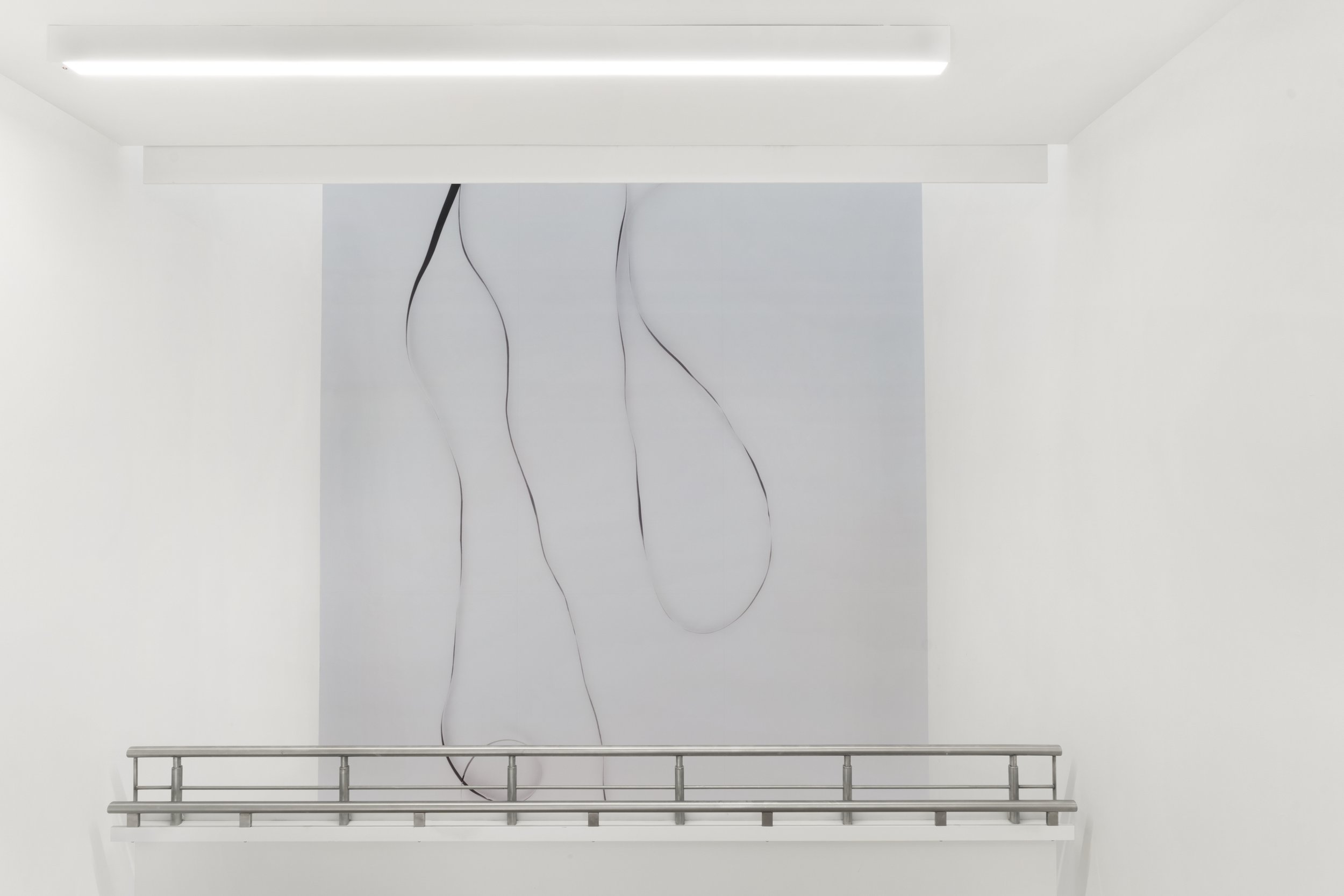
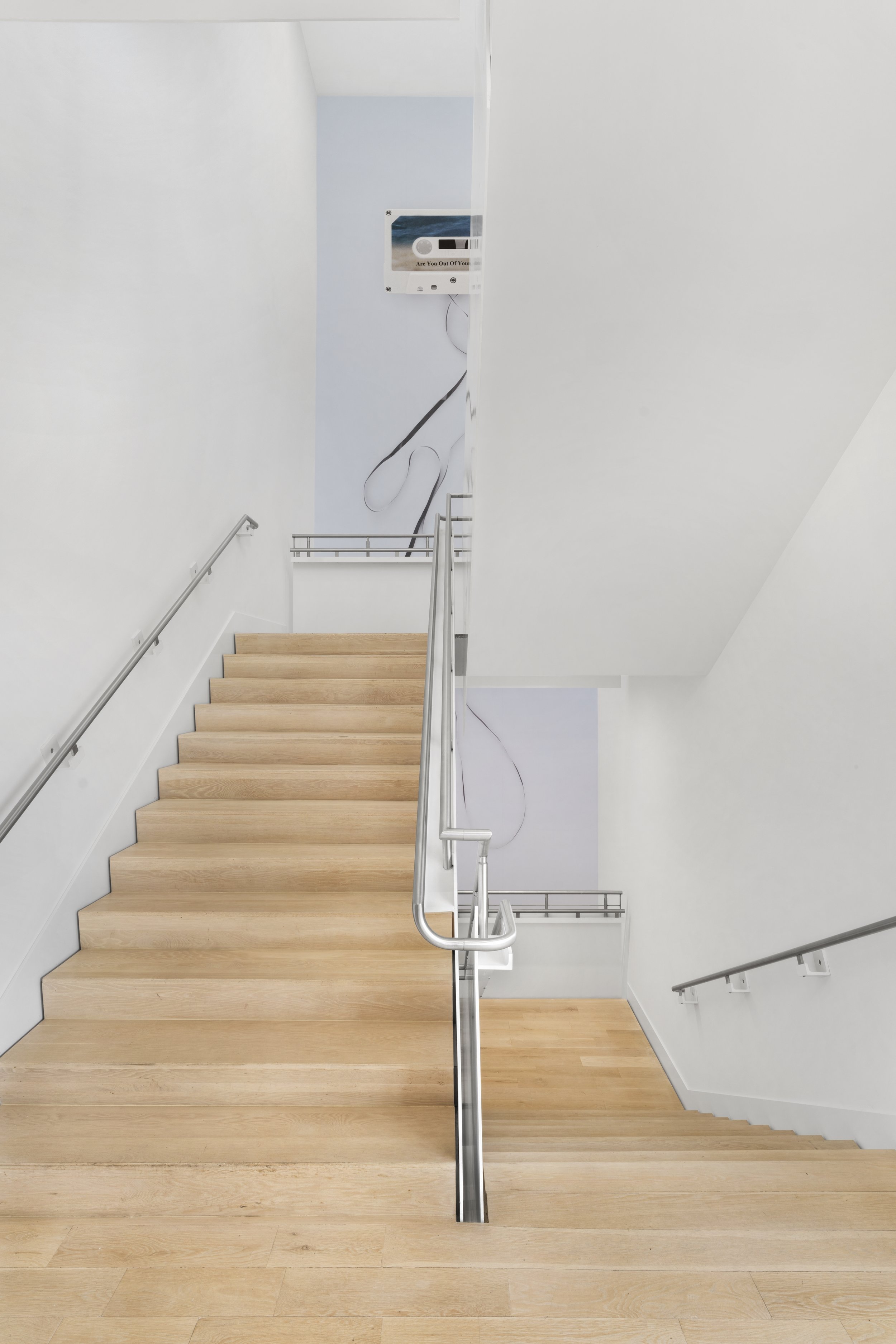
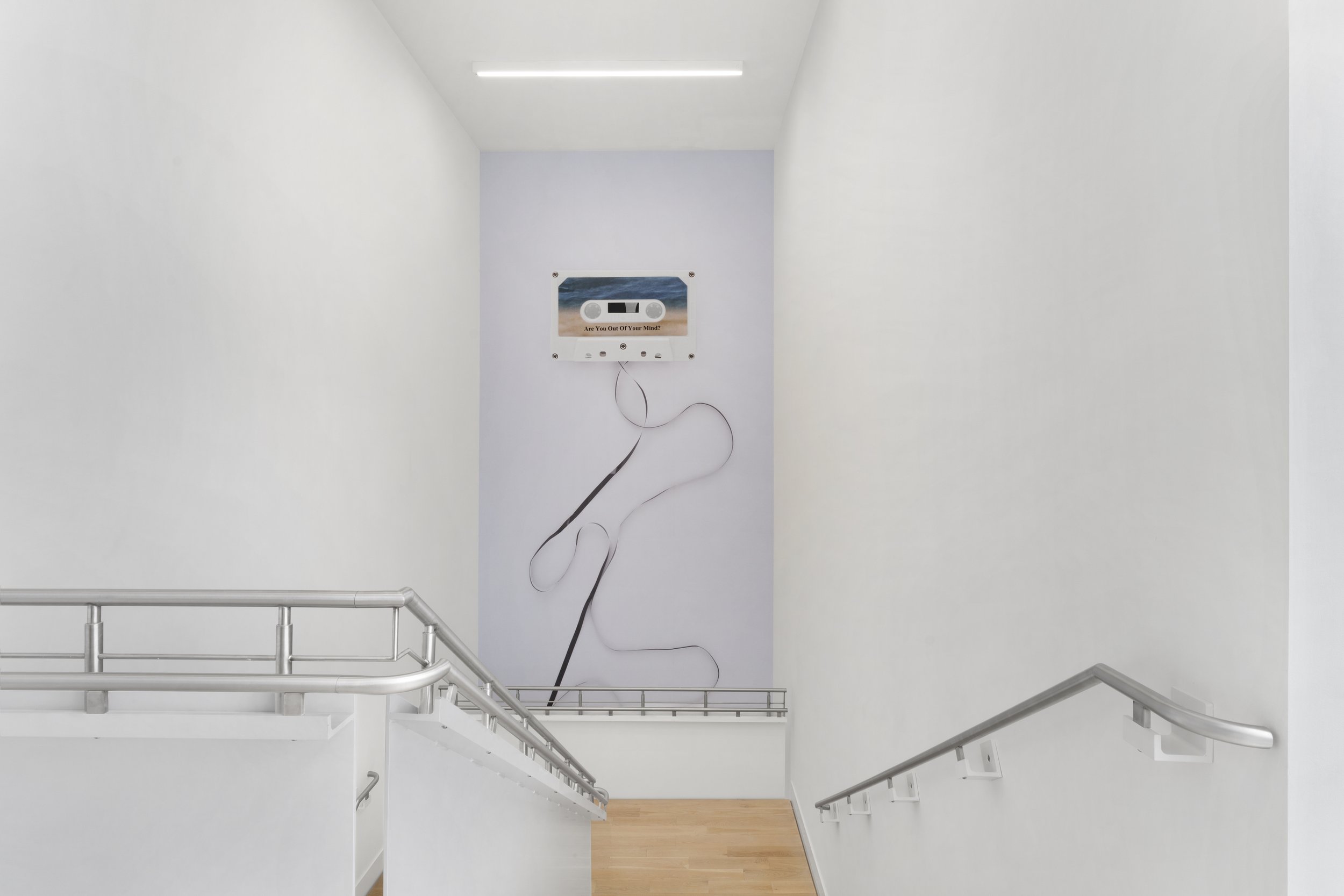
Anne Collier, "Unraveling (Are You Out Of Your Mind)", 2023. Adhesive vinyl on wall. 535x 139 inches. Courtesy of the artist. Photo: Zachary Balber. Courtesy Institute of Contemporary Art, Miami.
The exhibition opened on December 5, 2023, and will run through until October 16, 2024; the location of the exhibition is in ICA’s Stairwell.
The Institute of Contemporary Art, Miami is located at 61 NE 41st Street, Miami, Florida 33137. For more information, visit here or follow the museum on Instagram, YouTube, and Facebook. Explore the ICA Channel for inside looks at ICA Miami exhibitions and the practices of the most exciting artists working today.
Lee Mingwei: Rituals of Care
Our Peaceable Kingdom, 2020–present 40 framed paintings, each 17 3/8 x 23 5/8 in. (44 x 60 cm), easels TKR Installation dimensions variable
Courtesy of Lee Studio Photo Courtesy of Gropius Bau, photo by Laura Fiorio
Inspired by personal experiences and world events, Lee Mingwei (b. 1964) creates interactive installations and performances. Asking how art can encourage social connection and healing in a time of so much trauma and loss, the exhibition features projects made between 1995 and 2024 that place the visitor at the center of radical acts of generosity and care. The Letter Writing Project (1998–present) invites visitors to sit and write a letter they have always meant to send but never did. Guernica in Sand (2006–present), a temporary reinterpretation of Picasso’s famous painting in sand that is then erased, meditates on the cyclical nature of creation and destruction. Transforming ordinary actions like writing, sweeping, mending, or breathing into rituals of care, Lee Mingwei’s works encourage us to find beauty and solace in the small acts that define everyday life.
In-depth
Conceived in 1995 as part of Lee Mingwei’s graduate school application, 100 Days with Lily anticipated several themes of his practice since: the creation of interactive experiences that encourage social connection and care. Five photographs of the artist engaged in mundane activities with a planted lily are overlaid with 100 lines of text, 20 per photograph, describing how he incorporated the flower into his daily routine as a memorial for his maternal grandmother.
The Letter Writing Project, 1998-present Mixed media interactive installation Wooden booth, writing paper, envelopes 3 pieces, 290 x 170 x 231 cm each Photo Courtesy of Mori Art Museum, photo by Yoshitsugu Fuminari
The Letter Writing Project (1998–present) arose from the artist’s need to continue communication with his maternal grandmother after her death. Visitors are invited to sit and write the letter they have always meant to send but never took the time to write. Lee Mingwei leaves it up to each person whether to address their letter and have the Museums mail it or leave it unsealed for other visitors to read.
The Mending Project, 2009–present Table, two chairs, spools of thread, and fabric items provided by visitors, dimensions variable Collection of Rudy Tseng Photo Courtesy of Mori Art Museum, photo by Yoshitsugu Fuminari
In The Mending Project (2009–present), Lee Mingwei uses the simple act of sewing as a means to connect and share an experience. Visitors are invited to bring items of clothing in need of repair that Lee Mingwei or his designated host will mend and embellish. The mending is done with the idea of celebrating and commemorating the act of repair. This conscious embrace and highlighting of the fabric’s scar(s) speaks to the emotional work of mending as a means to deal with trauma and loss. Select garments will be chosen and added to a growing installation of items connected by thread to spools on the wall.
In Sonic Blossom (2013–present), a singer approaches visitors with the offer of a song selected from the Schubert lieder (songs written for one voice). Lee Mingwei listened to this music with his mother while caring for her after heart surgery in 2012. If a visitor accepts this offer of beauty and solace, the singer then serenades them with a song of their choice.
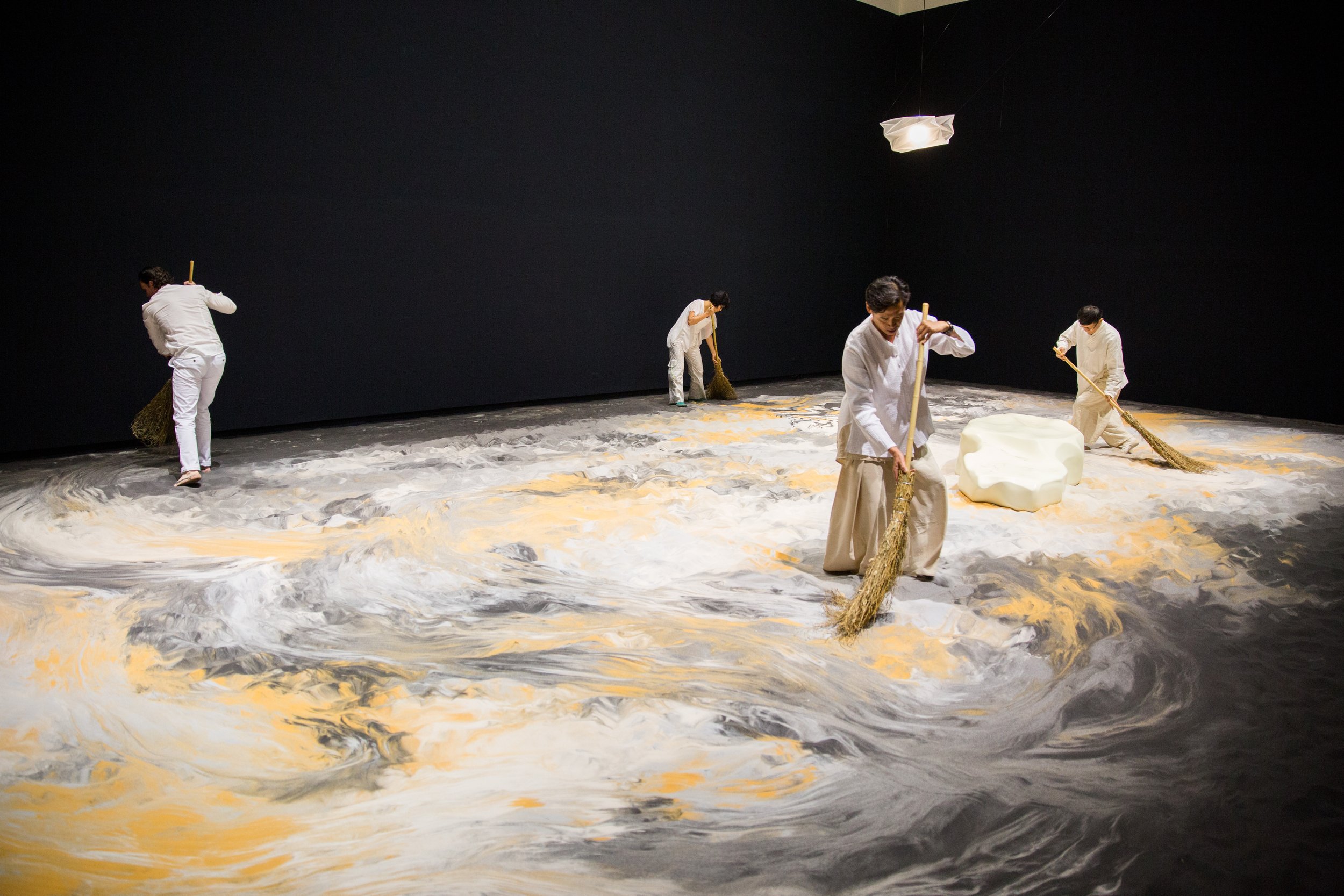
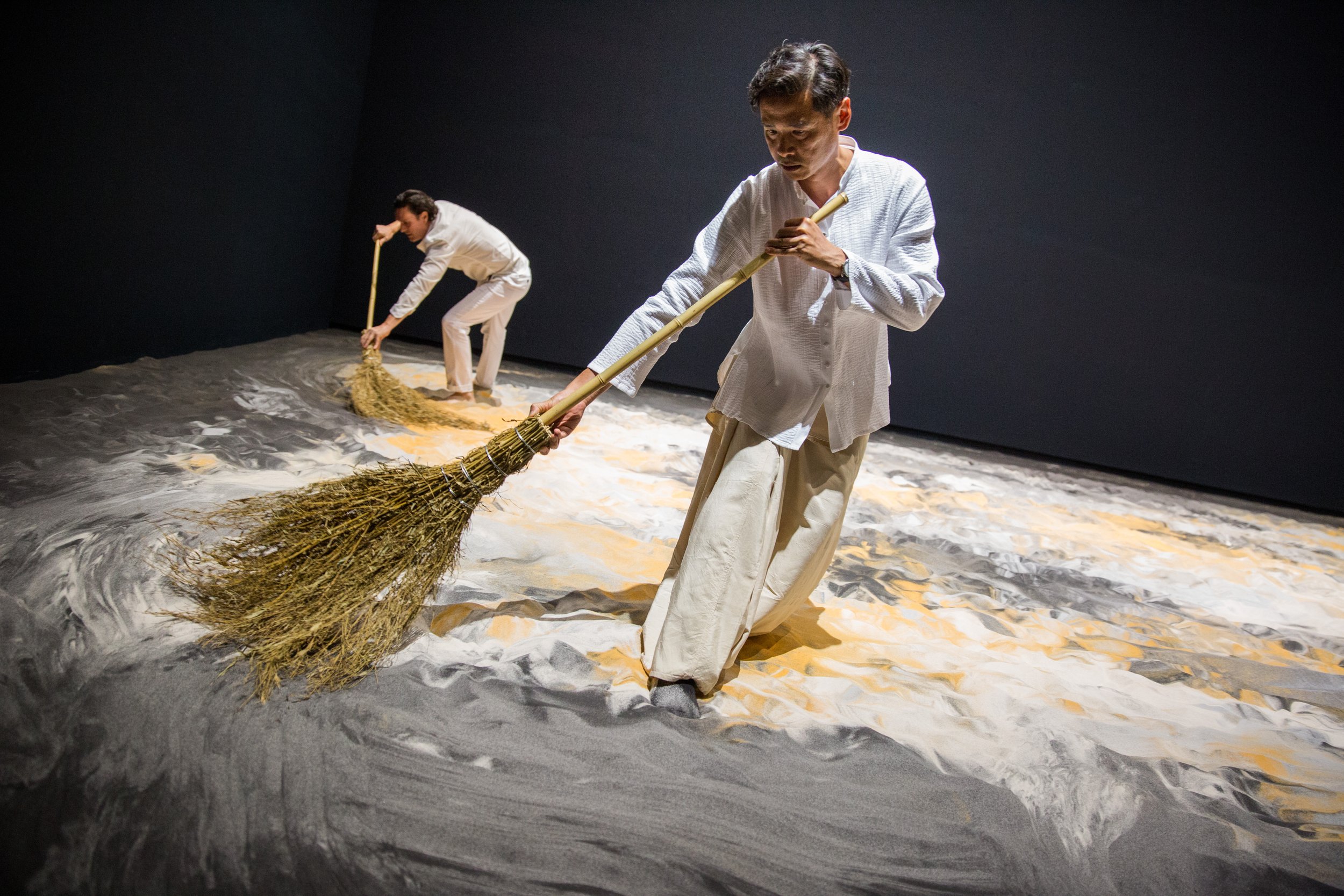
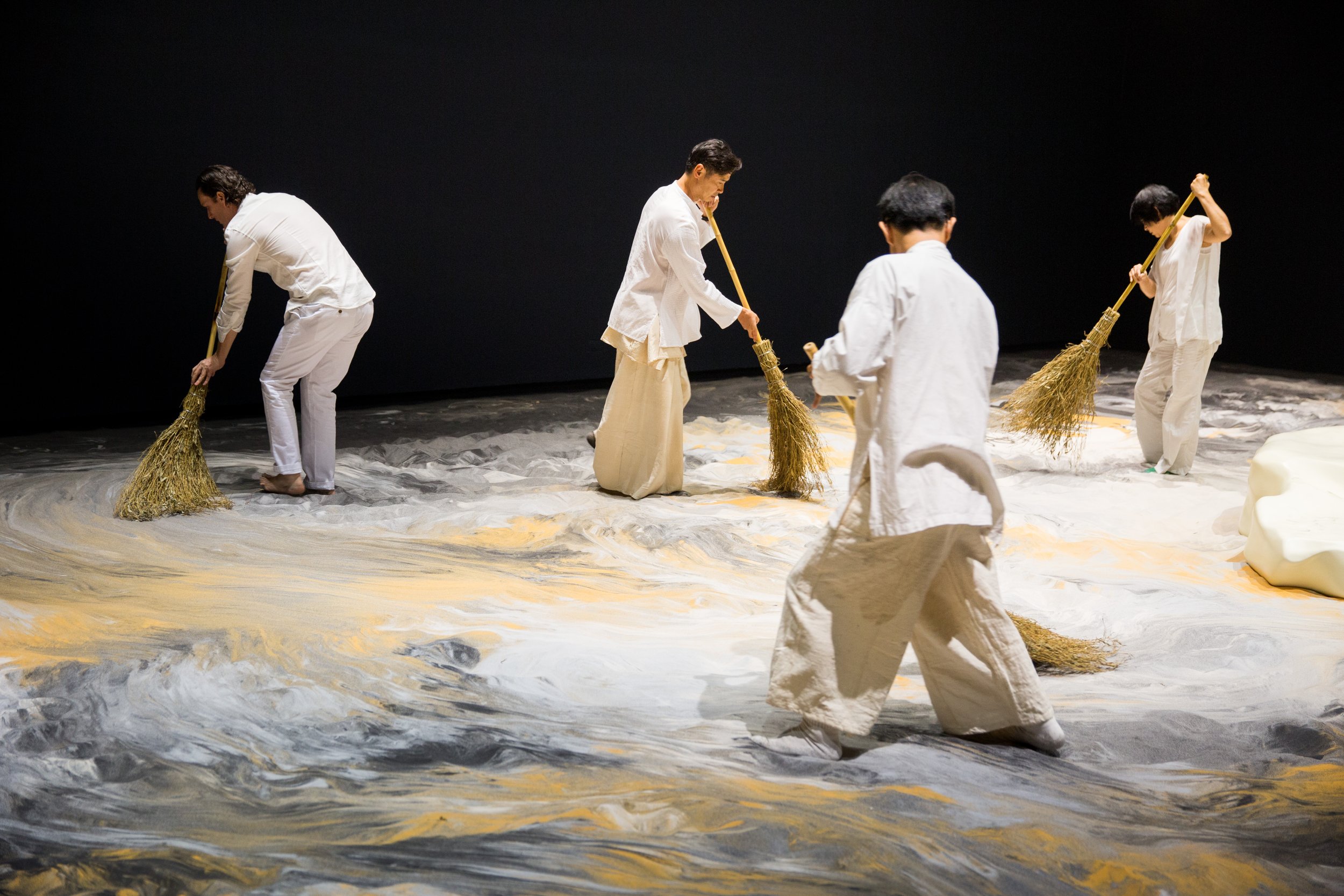
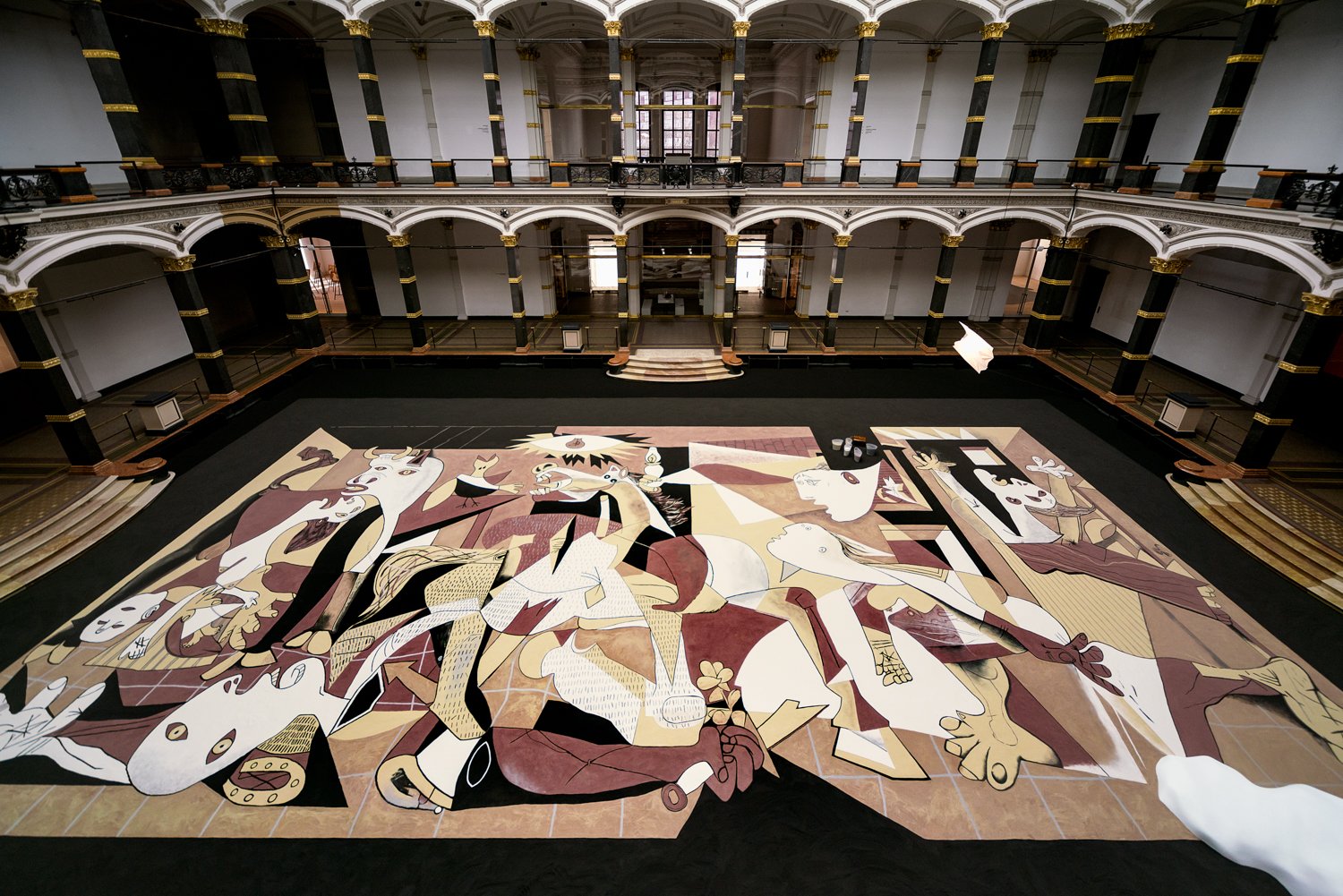
Guernica in Sand, 2006-present Mixed media interactive installation Sand, wooden island, lighting 1300 x 643 cm
Photo Courtesy of Taipei Fine Arts Museum
During the Iraq War, Lee Mingwei revisited Pablo Picasso’s iconic painting Guernica (1937). The experience resulted in the work Guernica in Sand (2006–present): a sand painting that partially recreates Picasso’s original. A meditation on impermanence and transformation, the work will be both completed and erased in a performance in March, and left in an unrecognizable state for another week. The work points toward both the weight of history and the persistence of hope through change.
Our Peaceable Kingdom (2020–present) unites a group of paintings that reinterpret the 1833 painting by Edward Hicks in the collection of the Worcester Museum of Art in Massachusetts. It is one of 62 works bearing the title Peaceable Kingdom that Hicks created between 1820 and 1849, a version of which is in our collection and on view at the de Young. Based on an Isaian prophecy appealing to Hick’s Quaker beliefs, it depicts animals, children, Lenape, and Quakers peacefully coexisting. Lee Mingwei invited 11 artists to reinterpret Hicks’s painting, then asked each to choose two other artists to do the same, thus creating “a family tree of copies with multiple descendants.” For the de Young, he asked artist Chelsea Ryoko Wong to create her version of peace; she in turn invited Emily Fromm and Emilio Villalba.
Chaque souffle une danse (Each Breath a Dance, 2024) reflects on the physical and social threats that the simple act of breathing has come to embody since the onset of the COVID-19 pandemic and George Floyd’s murder. For this artwork, Lee Mingwei concluded his daily meditation practice by placing a few droplets of sumi ink on an alabaster slate as the sun set, spreading the ink over the surface with several contemplative breaths. This work will be presented at the de Young as a video beginning in April, as well as a physical installation at Minnesota Street Project.
The exhibition opened on February 17th, 2024 and will conclude on July 7th of, 2024. Also Rituals of Care the catalogue can be purchased here. For more information about this exhibition and others at de Young/Legion of Honor and the fine arts museums of San Francisco, please visit here. The museum can also be found on Instagram, on Facebook, and YouTube.
.
Refik Anadol: Echoes of the Earth: Living Archive
Refik Anadol, Artificial Realities: Coral, 2023. Courtesy Refik Anadol Studios
Serpentine is thrilled to present Echoes of the Earth: Living Archive, an exhibition of new and recent works by internationally renowned artist, technologist, and pioneer in artificial intelligence arts, Refik Anadol.. Anadol, a pioneer in AI Arts presented his largest institutional solo exhibition in the UK, featuring new and recent works which opened on February 16th and will end on April 7th 2024.
Known for his digital works and large-scale public installations that present real-time generative environments, Anadol’s collaborative creative process with AI plays on human perception. Echoes of the Earth: Living Archive presents years-long experimentation with visual data of underwater landscapes and rainforests.
Refik Anadol, Artificial Realities: Coral, 2023. Courtesy Refik Anadol Studios
The exhibition features Artificial Realities: Coral (2023), an immersive installation enveloping viewers in an AI's imagination of underwater landscapes. For this artwork, Refik Anadol Studio trained a unique AI model with approximately 135 million images of corals openly accessible online. Generating abstracted coral images, the AI constructs new visuals and colour combinations based on the dataset.
Anadol’s solo exhibition also features the UK premiere of Living Archive: Large NatureModel a new site-specific installation which was first introduced at the World Economic Forum 2024 in Davos, Switzerland. At Serpentine North, the installation transforms the gallery into the AI model’s interpretation of a rainforest. It is the first installation in a growing body of work that is created employing The Large Nature Model, the world’s first open- source generative AI model dedicated to nature. For this ongoing research, the artist worked with the data of major institutions, including the Smithsonian Institution and London’s Natural History Museum. As additional data partners, such as universities, museums, foundations, government entities and libraries join the effort, the model, centred around archival images of fauna, flora and fungi, will expand over the coming years.
Refik Anadol said: “I am thrilled to bring our Studio's most ambitious AI Art projects to date to Serpentine this year. A ground-breaking initiative that we call the Large Nature Model, developed by our Studio, stands as the world’s first open-source, generative AI multimodal focused on nature, trained on an extensive and ethically sourced dataset of the natural world. Echoes of the Earth: Living Archive displays multisensory artworks derived from this model, featuring visuals and sound. Collaborating on such a significant project with my long-time mentor, Hans Ulrich Obrist, with whom I've shared many stages discussing the future of AI art, is an immense privilege.”
Refik Anadol, Echoes of the Earth: Living Archive, 2024. Installation view, Serpentine North. Photo: Hugo Glendinning. Courtesy Refik Anadol Studio and Serpentine.
Bettina Korek, CEO, and Hans Ulrich Obrist, Artistic Director, Serpentine, said: “Refik Anadol brings art, science and technology together to create generative, immersive environments that fascinate, educate and enchant audiences. This show kicks off a year of research and projects by the Serpentine Arts Technologies department focused on AI, and we could not be more pleased than to collaborate with him.”
Taking the data that surrounds us as primary material, and using a neural network, amethod of AI that is inspired by the human brain, as a collaborator, Anadol creates compelling visualisations of our digitised memories and expands the possibilities of interdisciplinary arts. His work explores the meaning of humanity in the era of artificial intelligence as well as the challenges that ubiquitous computing has brought forth. He investigates the profound ways in which the dominance of technology in our daily lives alters our perception and experience of time and space.
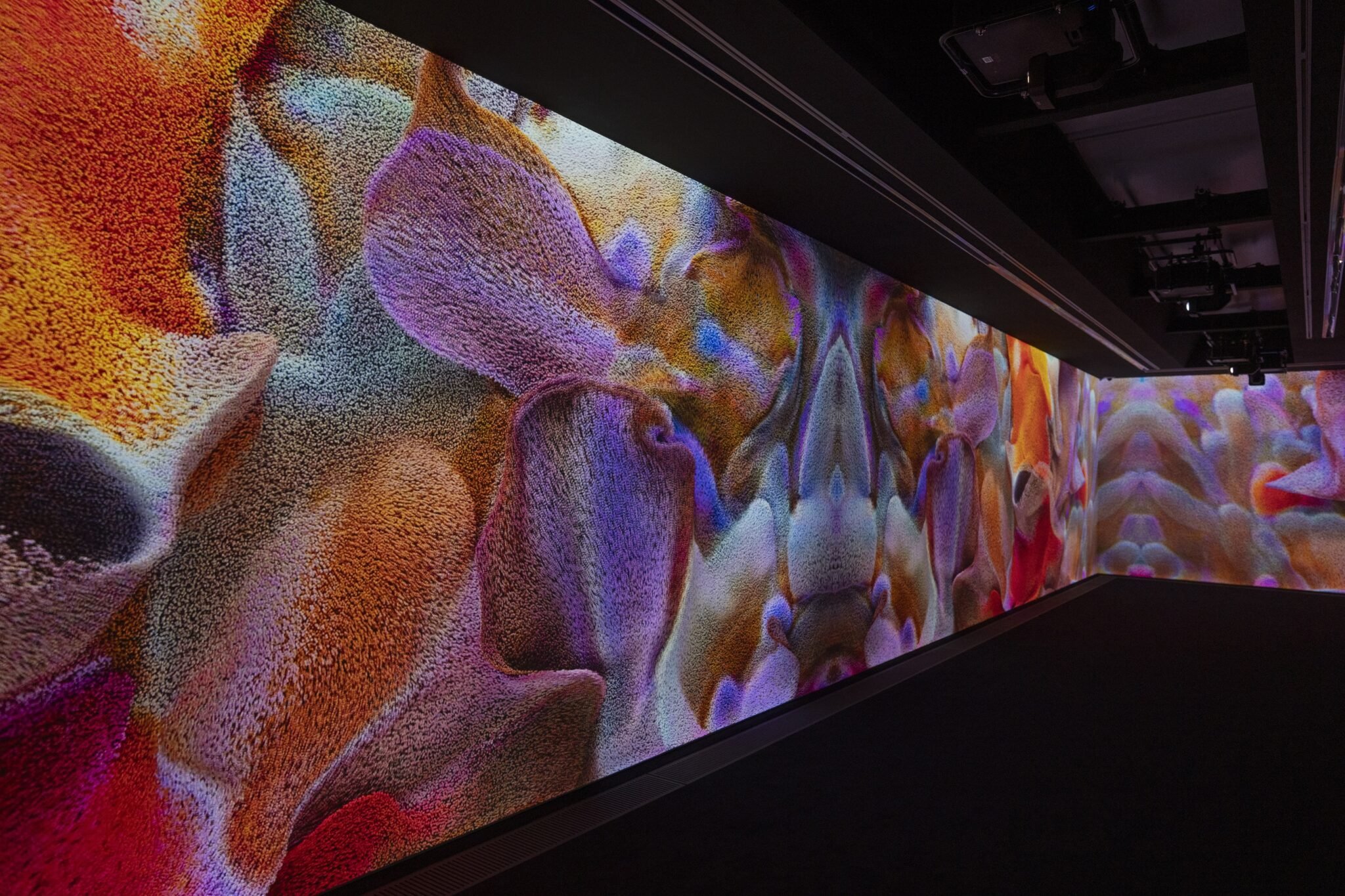
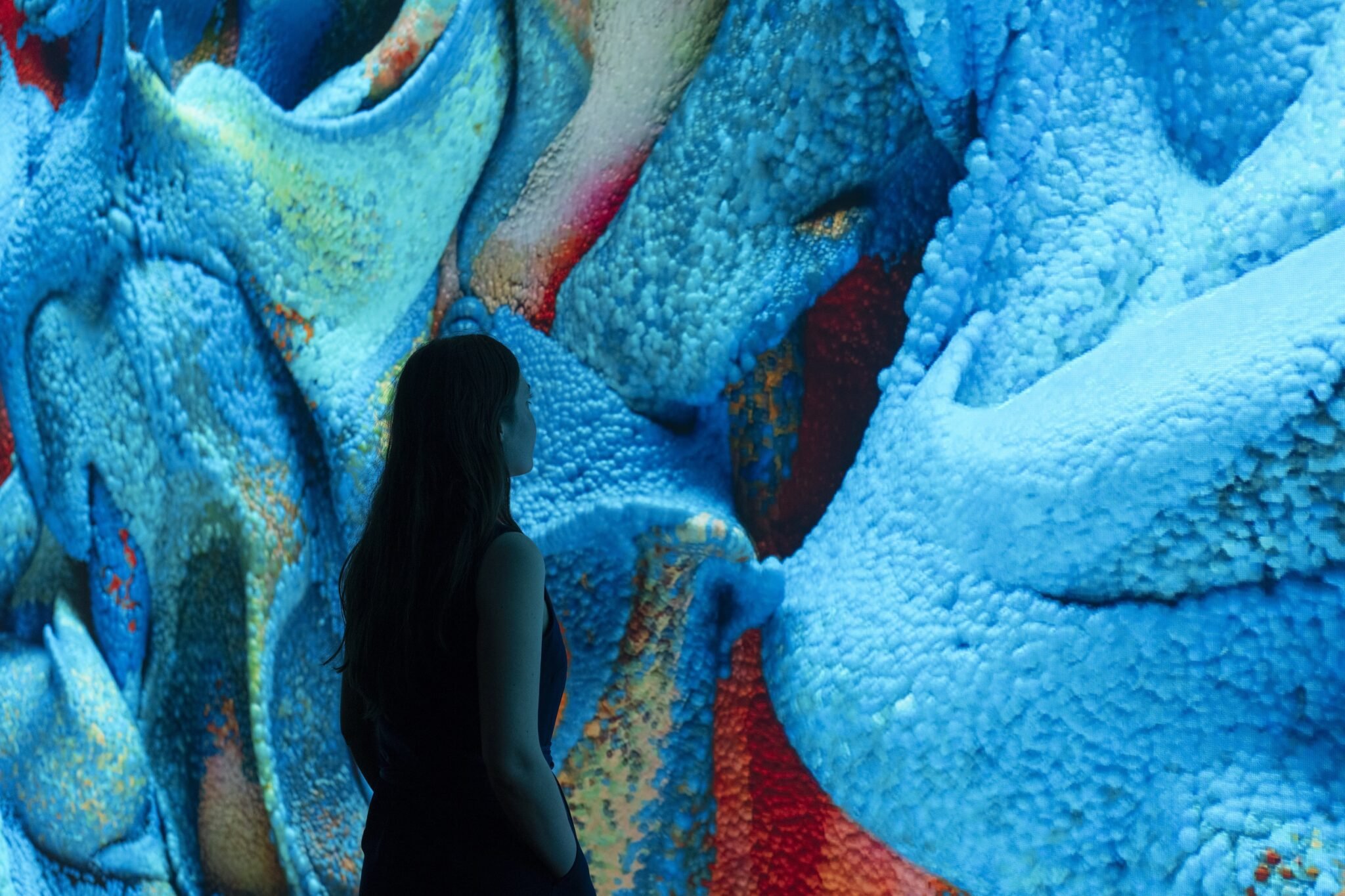
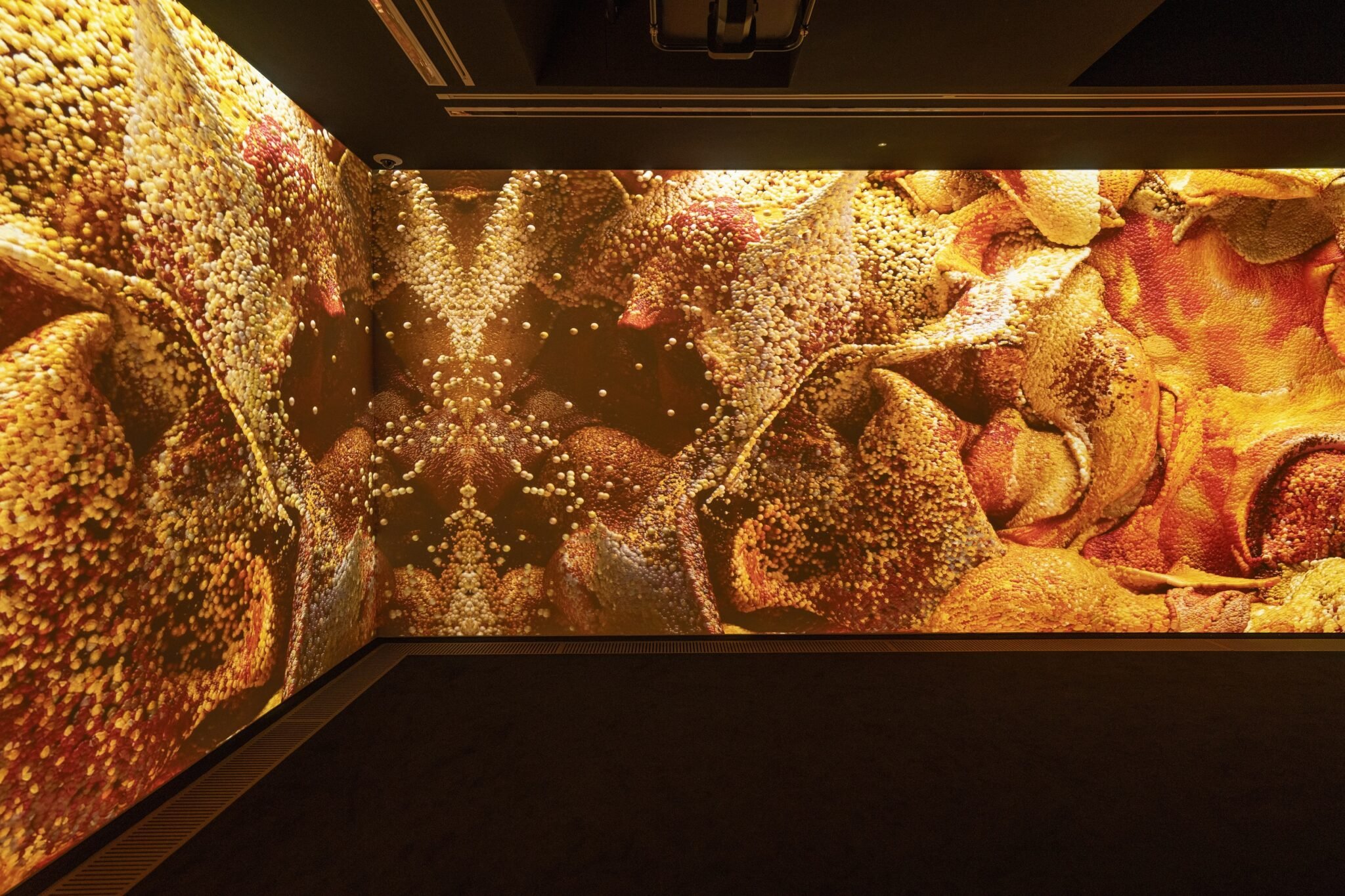
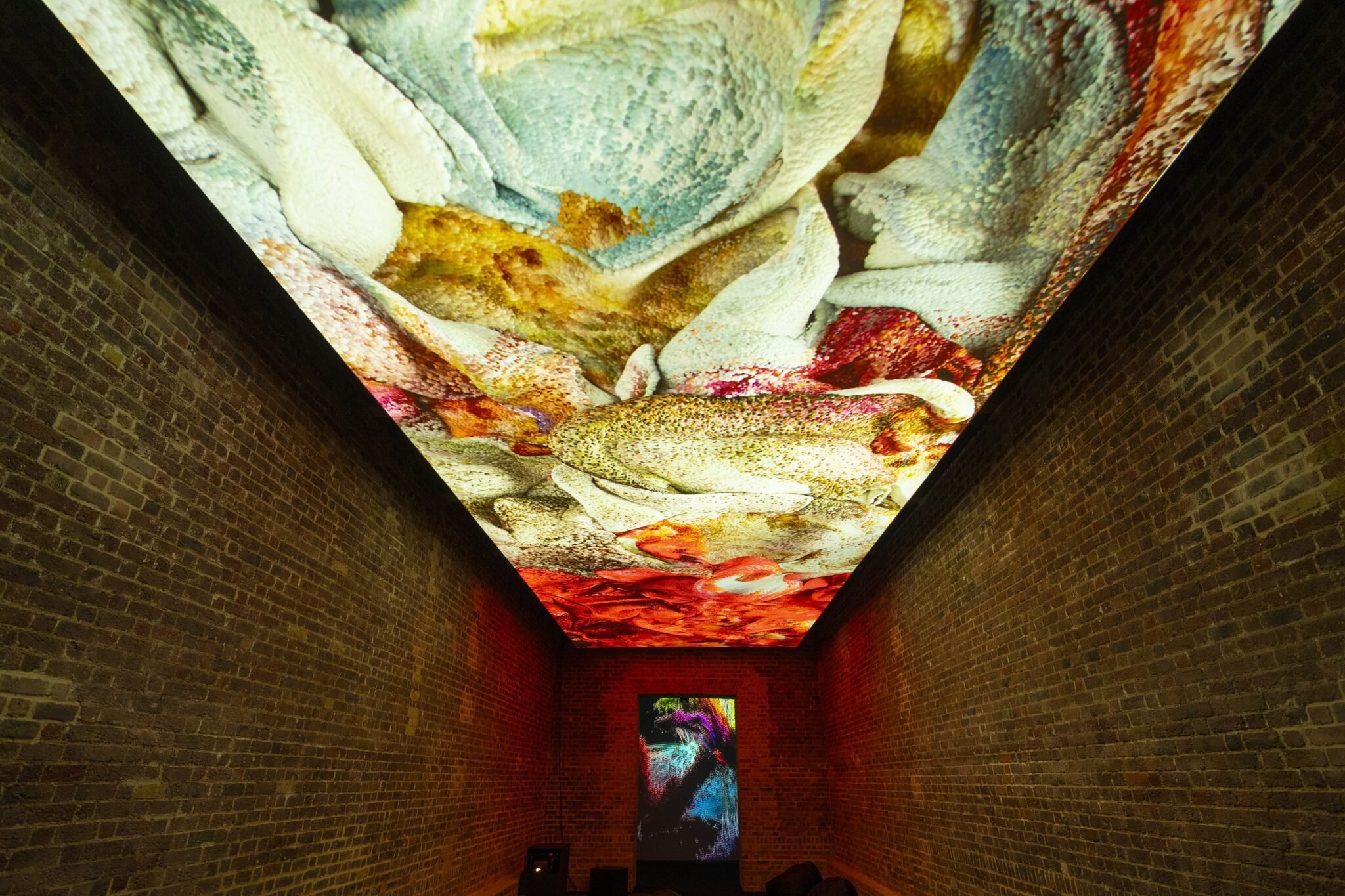
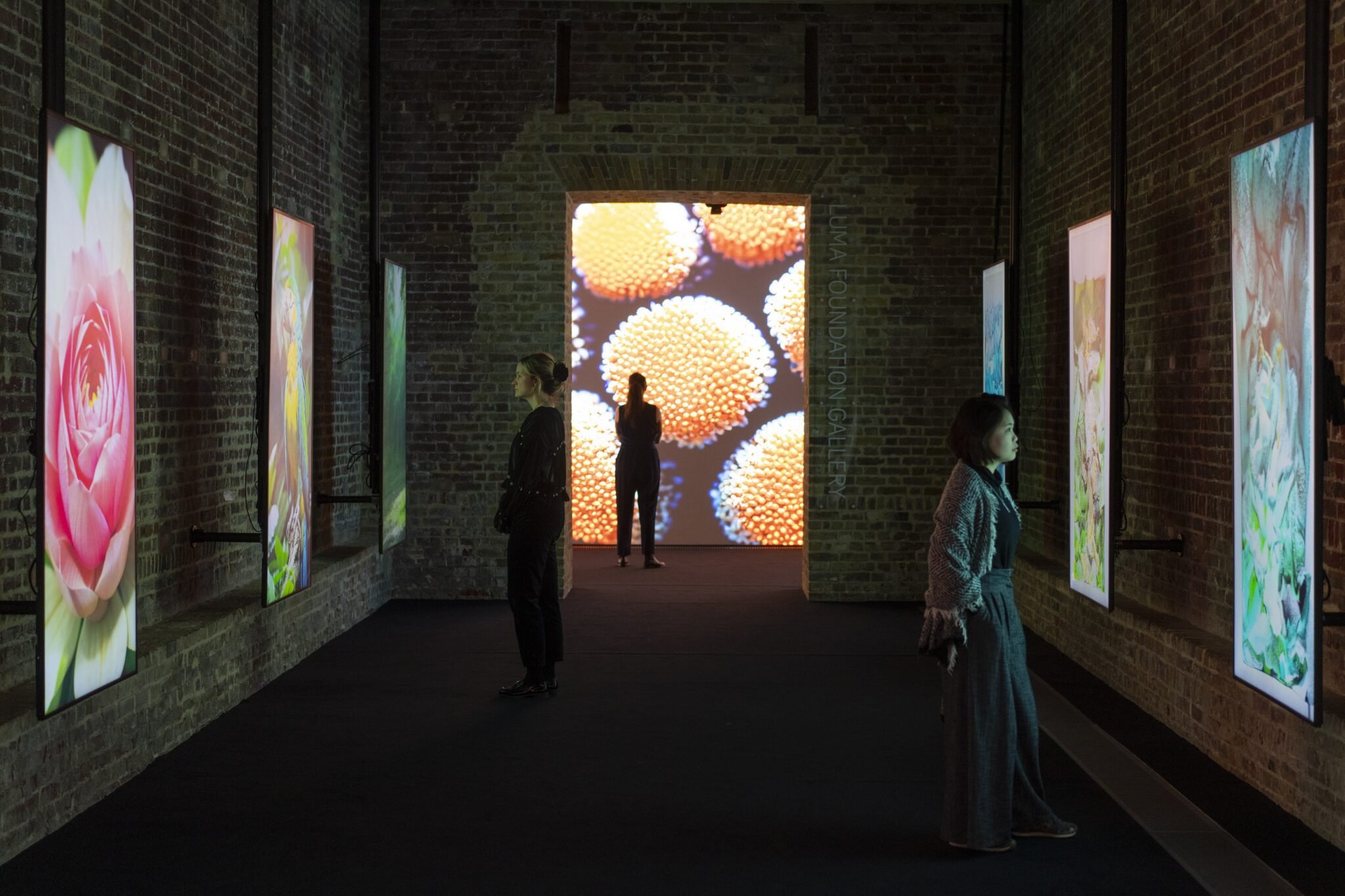
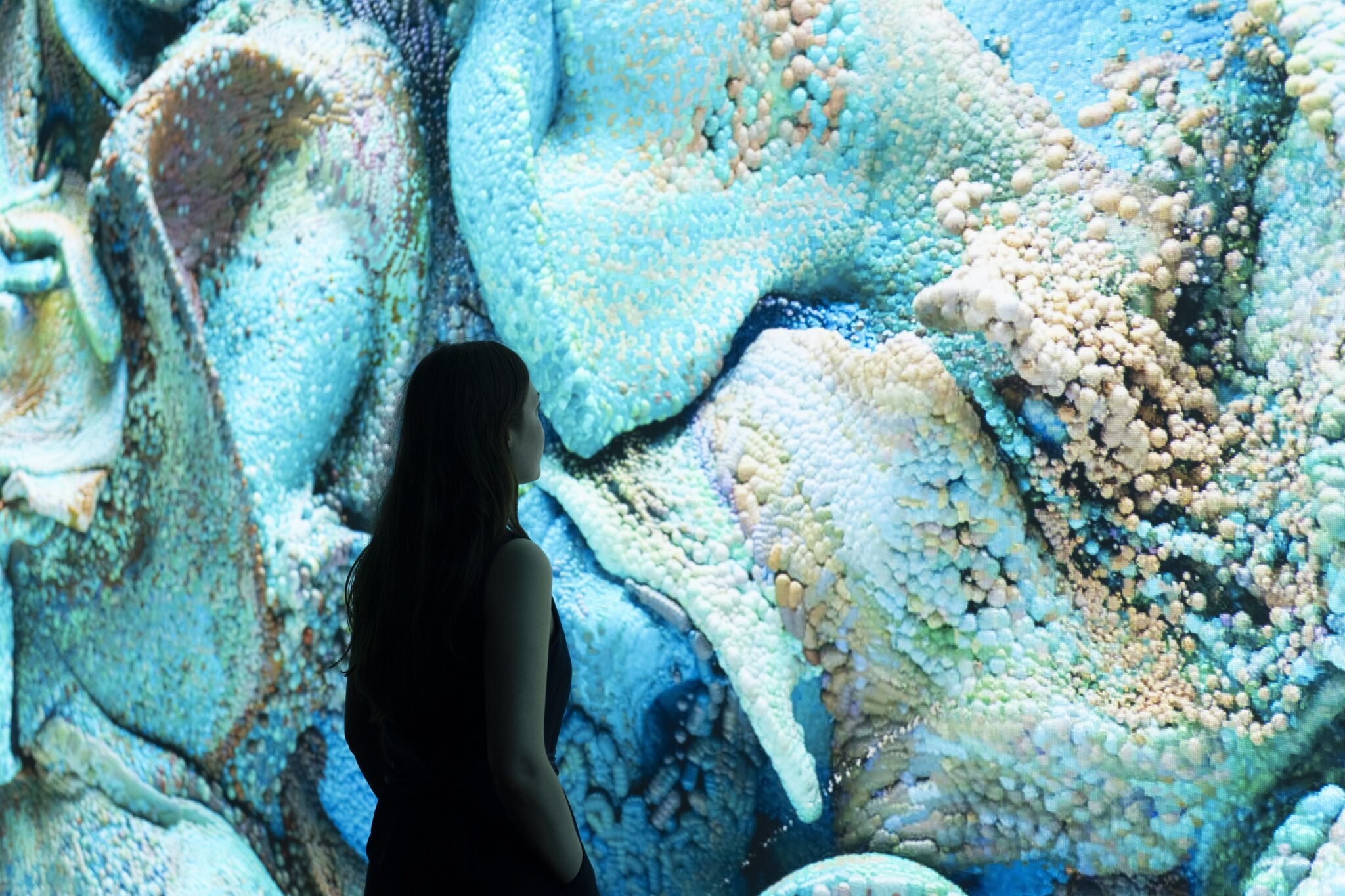
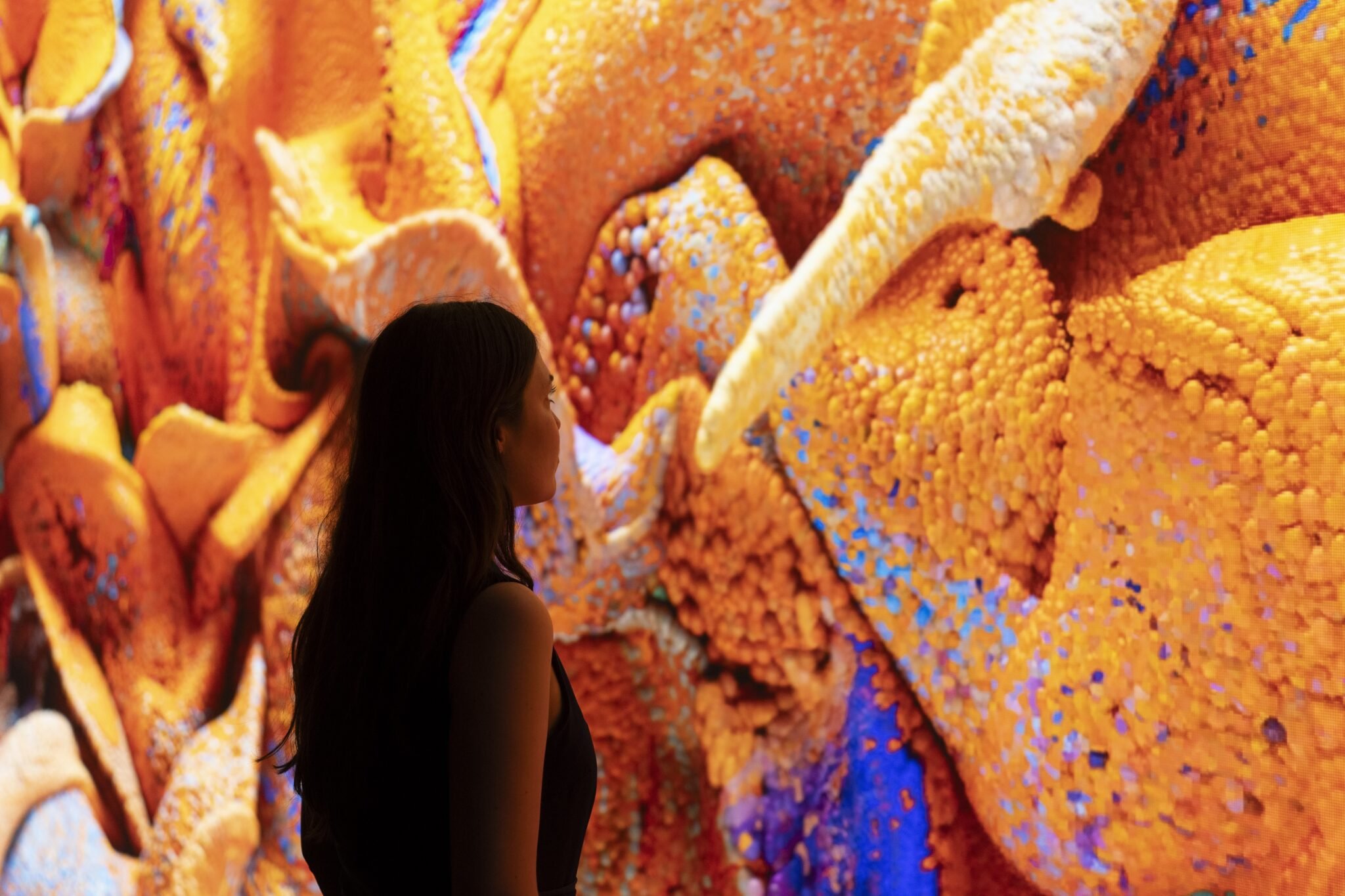
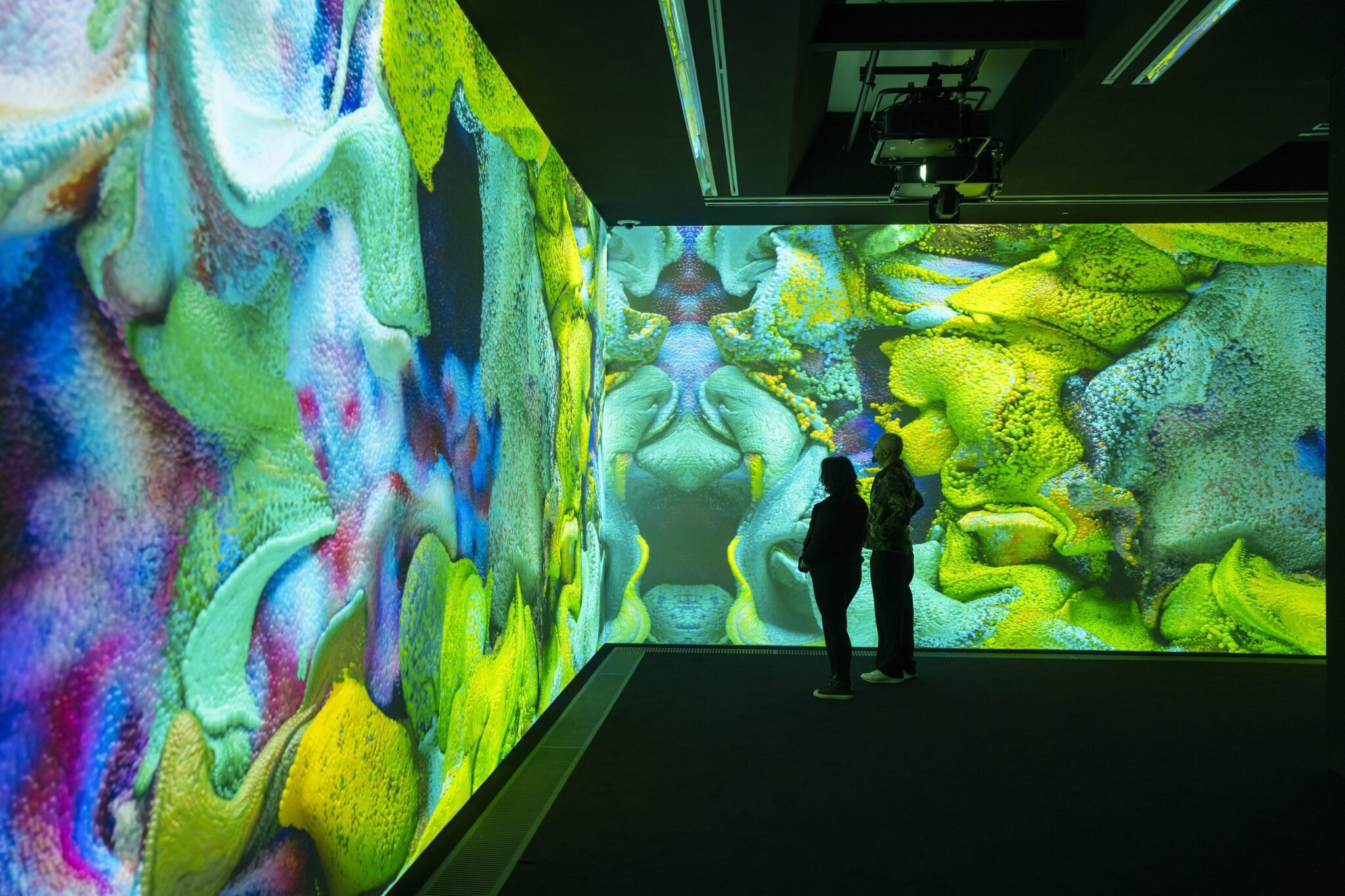
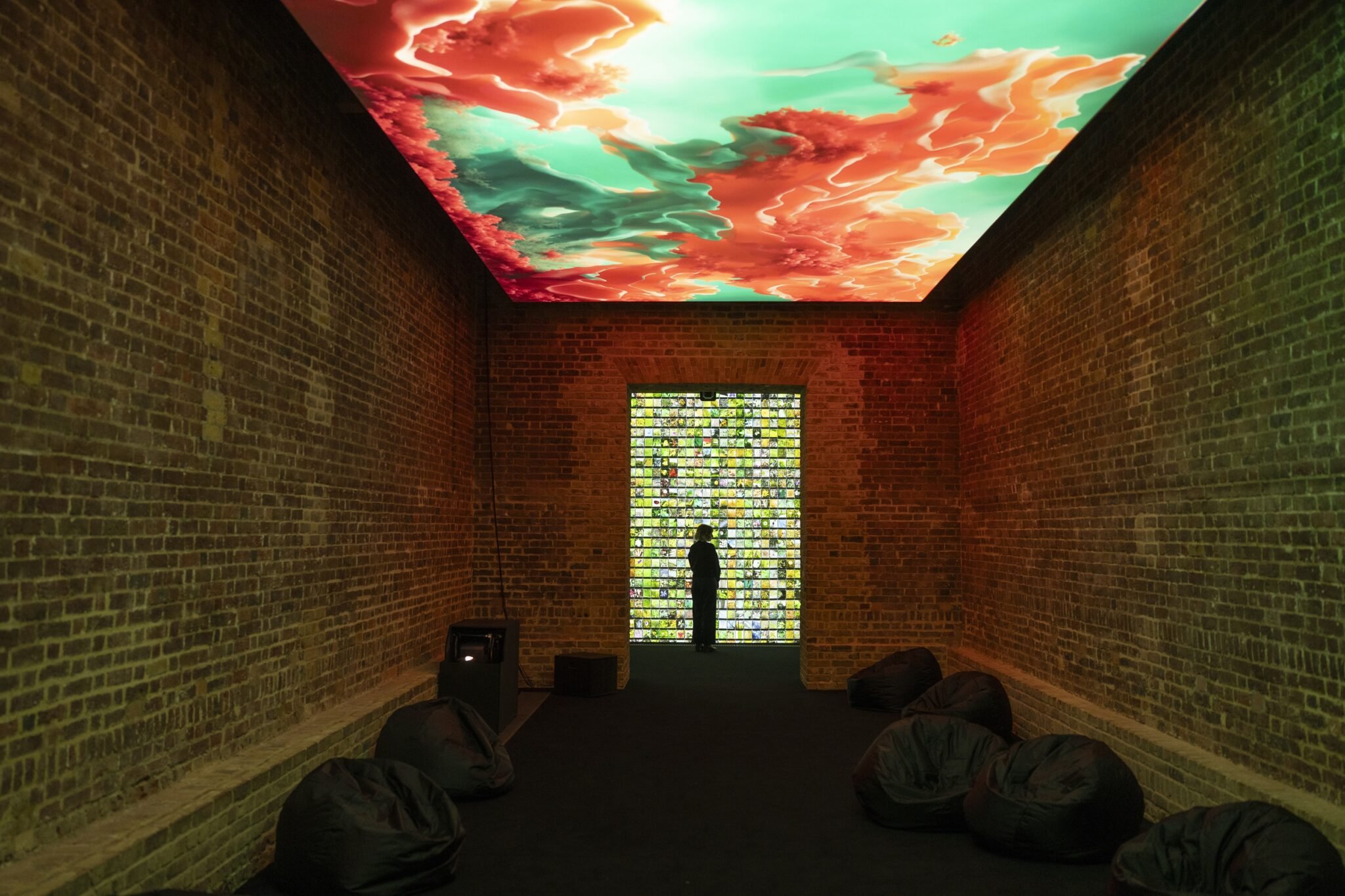
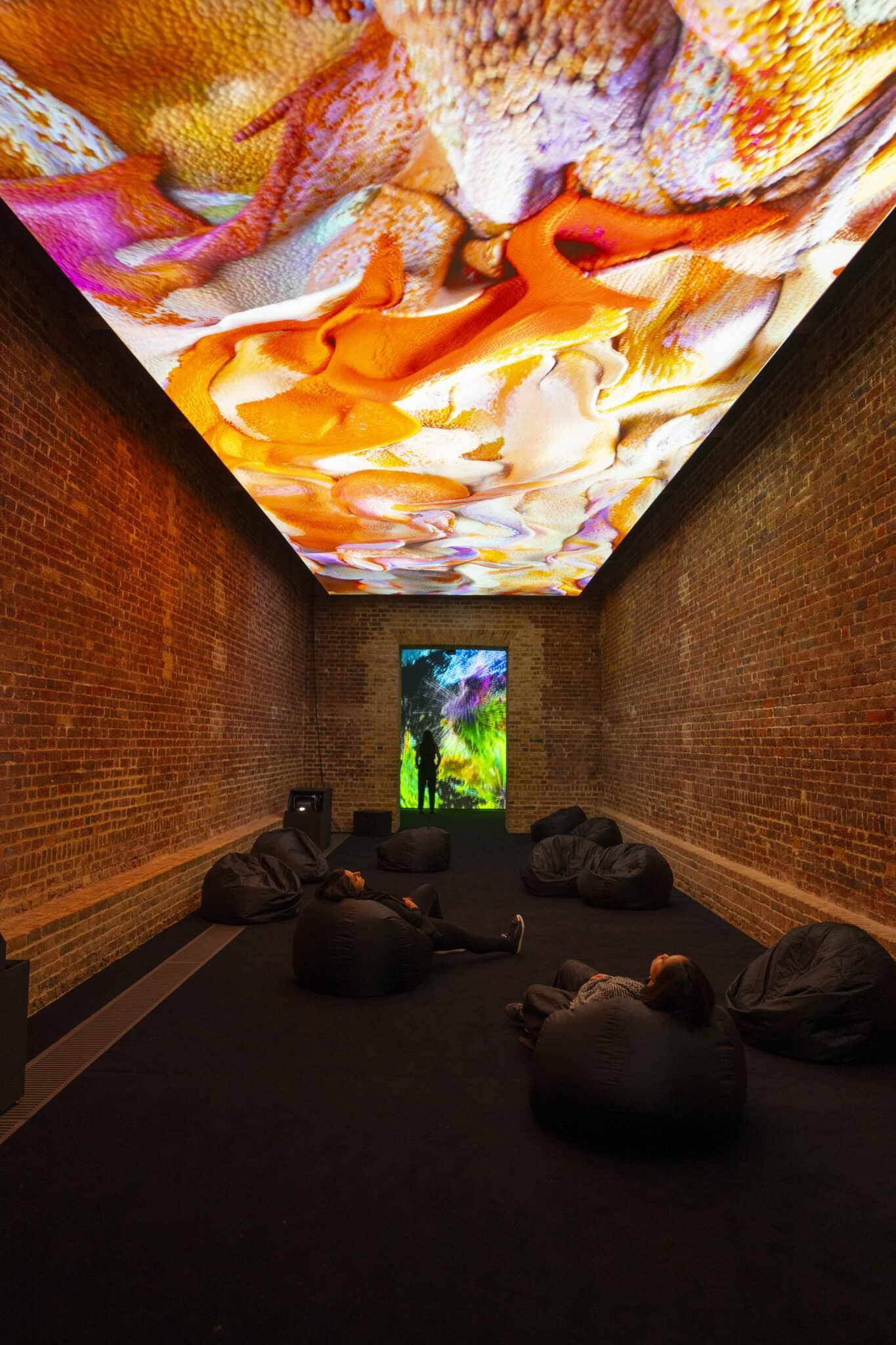
Refik Anadol, Echoes of the Earth: Living Archive, 2024. Installation view, Serpentine North. Photo: Hugo Glendinning. Courtesy Refik Anadol Studio and Serpentine.
The exhibition is part of the New Alliances strand of the Serpentine programme which aims to widen audiences through engagement and collaborations. Echoes of the Earth: Living Archive is presented in collaboration with 1OF1, led by patron and philanthropist Ryan Zurrer, which partners with forward thinking artists and institutions by contextualising and supporting art of the digital age.
Since 2014, Serpentine has developed AI projects with Cécile B. Evans, James Bridle, Jenna Sutela, Ian Cheng, Pierre Huyghe and Hito Steyerl that have prefigured subsequent technological developments in the field. The establishment of Creative AI Lab in collaboration with King's College London in 2019 offered a space for research into AI systems from artistic and cultural perspectives and interests, generating a solid foundation for thought leadership on this topic as AI gains increasing mainstream attention in 2024 which will also see Serpentine Arts Technologies develop a new AI project with Holly Herndon and Mat Dryhurst later in the year.
Echoes of the Earth: Living Archive is curated by Claude Adjil, Curator at Large, with Liz Stumpf, Assistant Curator and produced by Brittany Stewart, Creative Producer and Halime Özdemir, Production Manager.
Refik Anadol by Efsun Erkilic
About Refik Anadol
Refik Anadol (b. 1985, Istanbul, Turkey) established Refik Anadol Studio in Los Angeles, USA, in 2014. The Studio’s research practice centres around discovering and developing trailblazing approaches to data narratives. Anadol also teaches at UCLA’s Department of Design Media Arts from which he obtained his Master of Fine Arts.
By proposing the possibility of “post-digital architecture,” Anadol invites his audience to imagine alternative realities by redefining the functionalities of both interior and exterior architectural elements. He tackles this by moving beyond the integration of media into built forms and translating the logic of a new media technology into art and design. His works are included in the permanent collections of the Museum of Modern Art, New York; Istanbul Museum of Modern Art; and the National Gallery of Victoria, Melbourne. Anadol has participated in Venice’s Architecture Biennial (2021); NGV Triennial in Melbourne (2020); Ars Electronica Linz (2017); and Istanbul Biennial (2015). His works have widely been presented internationally, including recent exhibitions at Kunsthal Rotterdam (2023); Arken Museum of Modern Art (2023); ArtScience Museum, Singapore (2023); Kunstpalast, Düsseldorf (2023); Espoo Museum of Modern Art (2022-23); Centre Pompidou-Metz (2022); Hammer Museum, Los Angeles (2022); and Pinakothek der Moderne, Munich (2022). Refik Anadol’s global projects have received a number of awards and prizes including the Lorenzo il Magnifico Lifetime Achievement Award for New Media Art, Microsoft Research’s Best Vision Award, iF Gold Award, D&AD Pencil Award, German Design Award, UCLA Art+Architecture Moss Award, Columbia University’s Breakthrough in Storytelling Award, University of California Institute for Research in the Arts Award, SEGD Global Design Award, and Google’s Artists and Machine Intelligence Artist Residency Award. A pioneer in his field, and the first to use artificial intelligence in a public artwork, Anadol has partnered with teams at Microsoft, Google, NVIDIA, Panasonic, NASA/JPL, Intel, IBM, Siemens, Epson, MIT, UCLA, Harvard University, Imperial College, Stanford University, and UCSF, to apply the latest, cutting-edge science, research and technologies to his work. Living Architecture: Casa Batlló, inspired by Antoni Gaudí’s building in Barcelona, Spain is one of Anadol’s most significant public art projects. The piece was displayed on a large media screen in New York’s iconic Rockefeller Plaza with a simultaneous live projection mapping performance on the actual facade of Casa Batlló which was viewed by a crowd of nearly 50,000 people.
About Serpentine
Building new connections between artists and society, Serpentine presents pioneering contemporary art exhibitions and cultural events with a legacy that stretches back over half a century, from a wide range of emerging practitioners to the most internationally recognised artists, writers, scientists, thinkers, and cultural thought leaders of our time. Based in London’s Kensington Gardens, across two sites, Serpentine North and Serpentine South, Serpentine features a year-round, free programme of exhibitions, architectural showcases, education, live events and technological activations, in the park and beyond the gallery walls.
The Serpentine Pavilion is a yearly pioneering commission, which began in 2000 with Dame Zaha Hadid. It features the first UK structures by some of the biggest names in international architecture.
Public art has emerged as a central strand of Serpentine’s programme. Major presentations include a collection of Eduardo Paolozzi’s sculptures (1987), Anish Kapoor’s Turning the World Upside Down (2010), Lee Ufan’s Relatum – Stage (2018-19), Christo and Jeanne-Claude’s London Mastaba in the Serpentine Lake (2018), I LOVE YOU EARTH by Yoko Ono (2021), Dominique Gonzalez-Foerster’s In remembrance of the coming alien (Alienor), (2022), and Alexandra Daisy Ginsberg’s Pollinator Pathmaker (2022 - ongoing).
Proud to maintain free access for all visitors, thanks to its unique location, Serpentine also reaches an exceptionally broad audience and maintains a profound connection with its local community.
Serpentine Arts Technologies programme explores the impact of technology through art, research and experimental projects. It supports artists to produce projects that use advanced technologies and convenes people working in art, technology, law, policy, and academia to share knowledge and develop new ideas about technology and society.
The foundation of Serpentine Arts Technologies’ programme is in an evolving R&D Platform that nurtures innovation for future art ecologies by securing a crucial institutional space for pragmatic interventions and necessary risk-taking at the intersection of art, science and technology. This is achieved through dedicated research labs (Blockchain Lab, Creative AI Lab, Legal Lab, Synthetic Ecologies Lab), orientation and knowledge-sharing with the wider sector through Future Art Ecosystems, and co- facilitation of a national Creative R&D Working Group.
For more information about this exhibition and others, please visit Serpentine’s website. Please also visit and follow Serpentine on Instagram, Facebook, and YouTube, along with TikTok.
BARBARA KRUGER THINKING OF Y̶O̶U̶. I MEAN M̶E̶. I MEAN YOU.
Barbara Kruger: Thinking of You. I Mean Me. I Mean You.,(Installation view, 1 February – 17 March 2024, Serpentine South) Photo: George Darrell
Serpentine is honoured to present a solo exhibition of recent works by American artist Barbara Kruger (b. 1945, Newark, New Jersey, USA). The exhibition will be presented at Serpentine South from ] The exhibit opened February 1st at the Serpentine South and will close March 17th 2024. On March the 4th the exhibition will open and close on April 22 2024 with the viewing hours being from 6- 9 ppm in the public realm with Outernet Arts.
This is Babara’s first solo institutional exhibition in London in 23 years, presented both at Serpentine South and in the public realm.
The site-specific exhibition will feature Kruger's iconic pieces reconfigured in recent years as video works, including Untitled (I shop therefore I am] (1987/2019] and Untitled {Your body is a battleground] (1989/2019.
Barbara Kruger: Thinking of You. I Mean Me. I Mean You.,(Installation view, 1 February – 17 March 2024, Serpentine South) Photo: George Darrell
Titled Thinking of ¥Ou. I Mean Me. I Mean You. the exhibition will feature a unique selection of installations, moving image works, and multiple soundscapes installed across the Serpentine building, bookshop, and outside banners, electric taxis as well as on large-scale, immersive wraparound screens at Outernet Arts. Lastly, the artist has been trying with Tik Tok for the first time to create an effect.
It will be the artist's first solo institutional show in London in over 20 years and a return to Serpentine. Kruger previously exhibited at Serpentine in 1994 as part of the group exhibition Wall to Wall.
Barbara Kruger: Thinking of You. I Mean Me. I Mean You.,(Installation view, 1 February – 17 March 2024, Serpentine South) Photo: George Darrell
Devoted to the exploration of visual culture and image production, Kruger is known for her work with imagery and words, frequently borrowing from the languages of advertising, graphic design, and magazines. Her practice often explores complex mechanisms of power, gender, class, and capital.
Barbara Kruger said: "It would be great if my work became archaic, if the issues that they try to present, the commentary that I'm trying to suggest was no longer pertinent. Unfortunately, that is not the case at this point."
Bettina Korek, CEO of Serpentine said: "Serpentine is thrilled to present Barbara Kruger's first institutional exhibition in London in more than twenty years. This show will extend beyond gallery walls to engage Kensington Gardens and other sites around London, building on a history of public art collaborations I am proud to have facilitated with Kruger in Los Angeles - from wrapping school buses with her signature larger than life graphic texts in 2012 to staging massive billboards and murals in 2020 for the second edition of Frieze Los Angeles."
Hans Ulrich, Artistic Director of Serpentine said: "Barbara Kruger is one of the most transformative artists of our time. For her exhibition Thinking of ¥mi. I Mean Me. I Mean You., at Serpentine, the artist connects to the South Gallery's architecture visually and sonically, and draws the viewer into the space, reflecting on context, histories, cultures, and hierarchies.
The future is invented with fragments from the past, and in her recent work, which is seen here for the first time outside the US, Kruger reanimates some of her previous works through puzzles, aerosols, and other distortions. Summarising her practice, Kruger told me in a recent interview that her art 'is about how we are to one another'. For more than half a century, she has created a commentary on living in our times." For this exhibition, the artist has adapted works, which were recently presented at museums in the United States, to specific locations within Serpentine, both indoors and outdoors.
Barbara Kruger: Thinking of You. I Mean Me. I Mean You.,(Installation view, 1 February – 17 March 2024, Serpentine South) Photo: George Darrell
Untitled (I shop therefore I am), 1987/2019 plays on the philosopher and scientist Rene Descartes' (1596-1650) famous words 'I think, therefore I am'. The video begins with the original image being shattered into multiple pieces of puzzles, which are then assembled to 'rebuild' the work. Once complete, the phrase in the centre changes from the original 'I shop therefore I am' to other variations of it: 'I shop therefore I hoard' / 'I need therefore I shop' / 'I love therefore I need' / 'I am therefore I hate' / 'I sext therefore I am' / 'I die therefore I was.'
Four more replays are in this exhibition, including Untitled (Our Leader), 1987/2020. In these works, the original image transforms and dissolves, then comes back to offer further variations of the written message it carries.
The original work referenced in Untitled (Your body is a battleground), 1989/2019, is a rare example of a work that Kruger made in relation to a specific event, as the artist often emphasises that her 'work is not issue-specific. [...] It's more of an ongoing commentary'. In this instance however, it was created as a poster for the Women's March on Washington in 1989, organised in support of reproductive freedom. Kruger uses the visual language of division - the woman's face is split in two halves with contrasting colours, which also can be read as a frontline. In the following years since the work was created, it was translated to many languages and used across the globe at protests.
In a recent conversation with Hans Ulrich Obrist, Kruger emphasised the ongoing relevance of this work, she said: 'I think it's a very free-floating statement about bodies also. It can allude to men, women, non-binary people - it is important for us to realise that the only binaries that count now are digital binaries. I believe in the possibility of the multiplicity of bodies, and those bodies are all vulnerable.'
The site-specific work wrapping all the walls of the first gallery, Untitled (That's the way we do it), 2011/2020, manifests Kruger's embracement of recent digital and commercial appropriations of her work that have all been posted online. It is a further variation of the work Untitled (I shop therefore I am) displayed on the LED screen in the gallery, as it uses the same image of a hand holding a placard, but in this instance the hand presents the different images and objects made across the years by other people in Kruger's 'style'. A single image from this work is also installed in the Koenig bookshop at Serpentine South, playing further with the context of consumerism.
The exhibition is also a UK premiere of Untitled (No Comment), 2020, an immersive three channel video installation, in which short snippets of footage found on social media platforms are accompanied by the artist's work directly addressing viewers with questions, statements, and quotes by French philosopher and writer Voltaire and American rapper Kendrick Lamar. Footage of hairstyle tutorials, animated cats, acrobats, blurred out selfies,
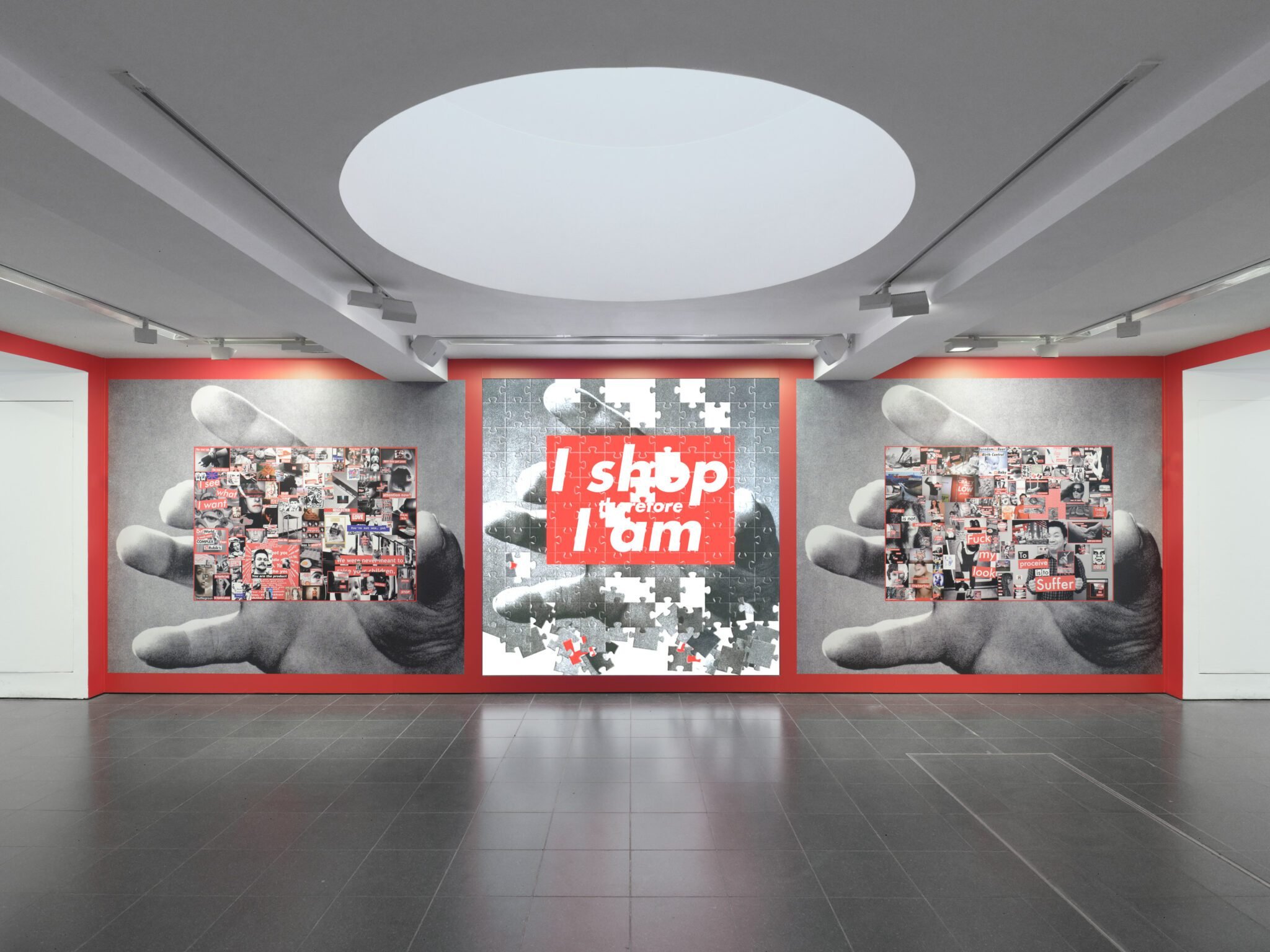
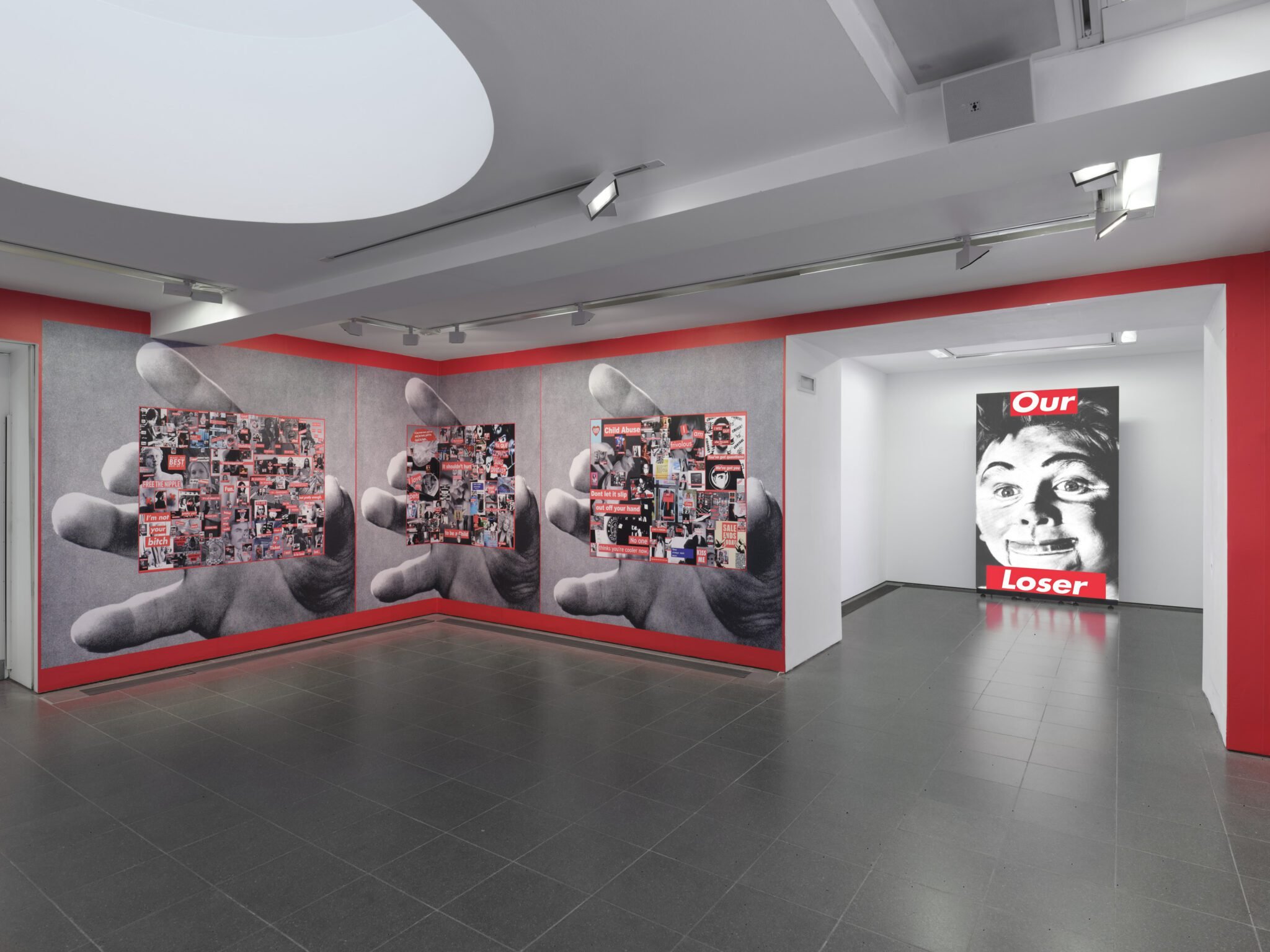
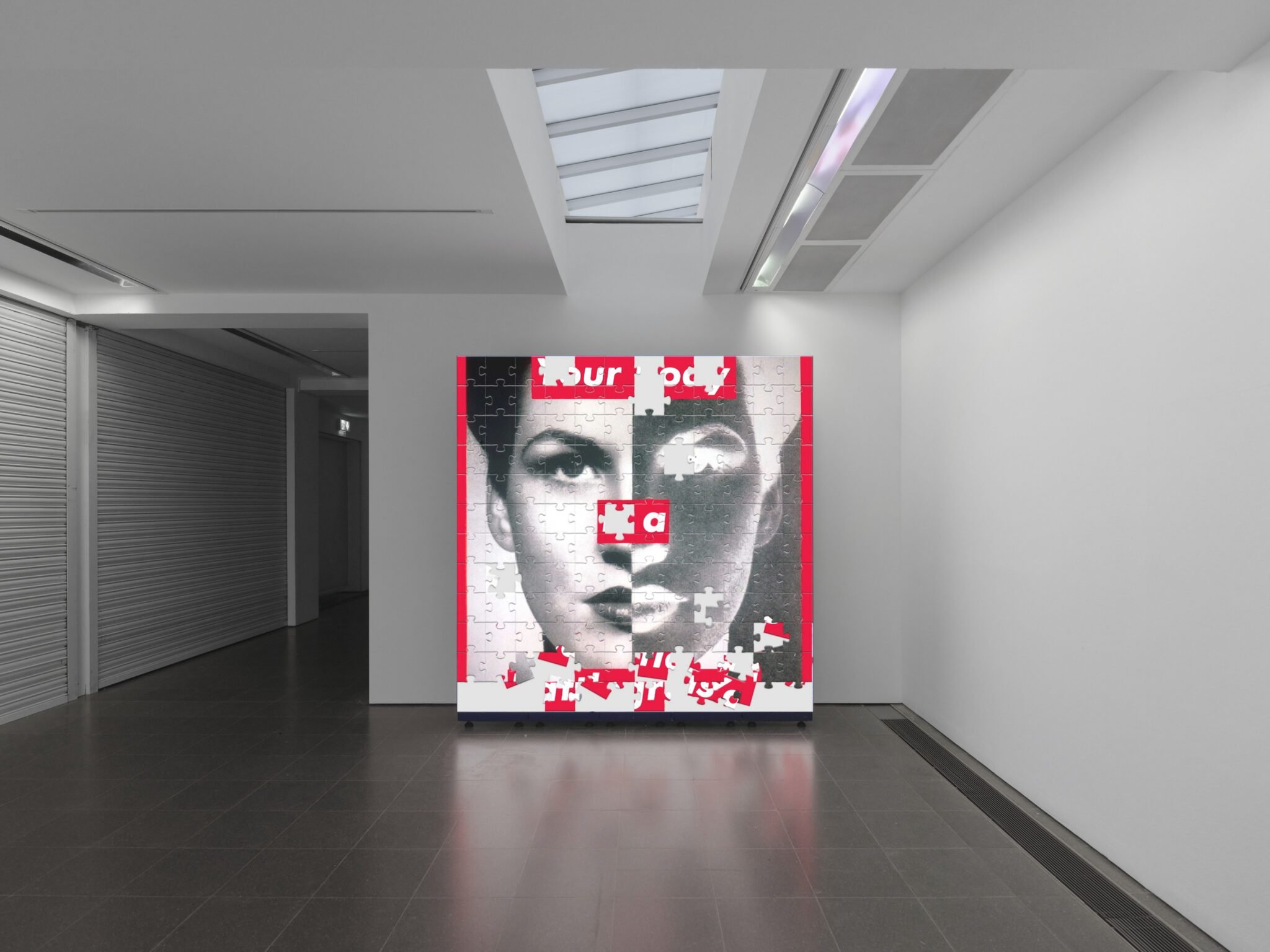
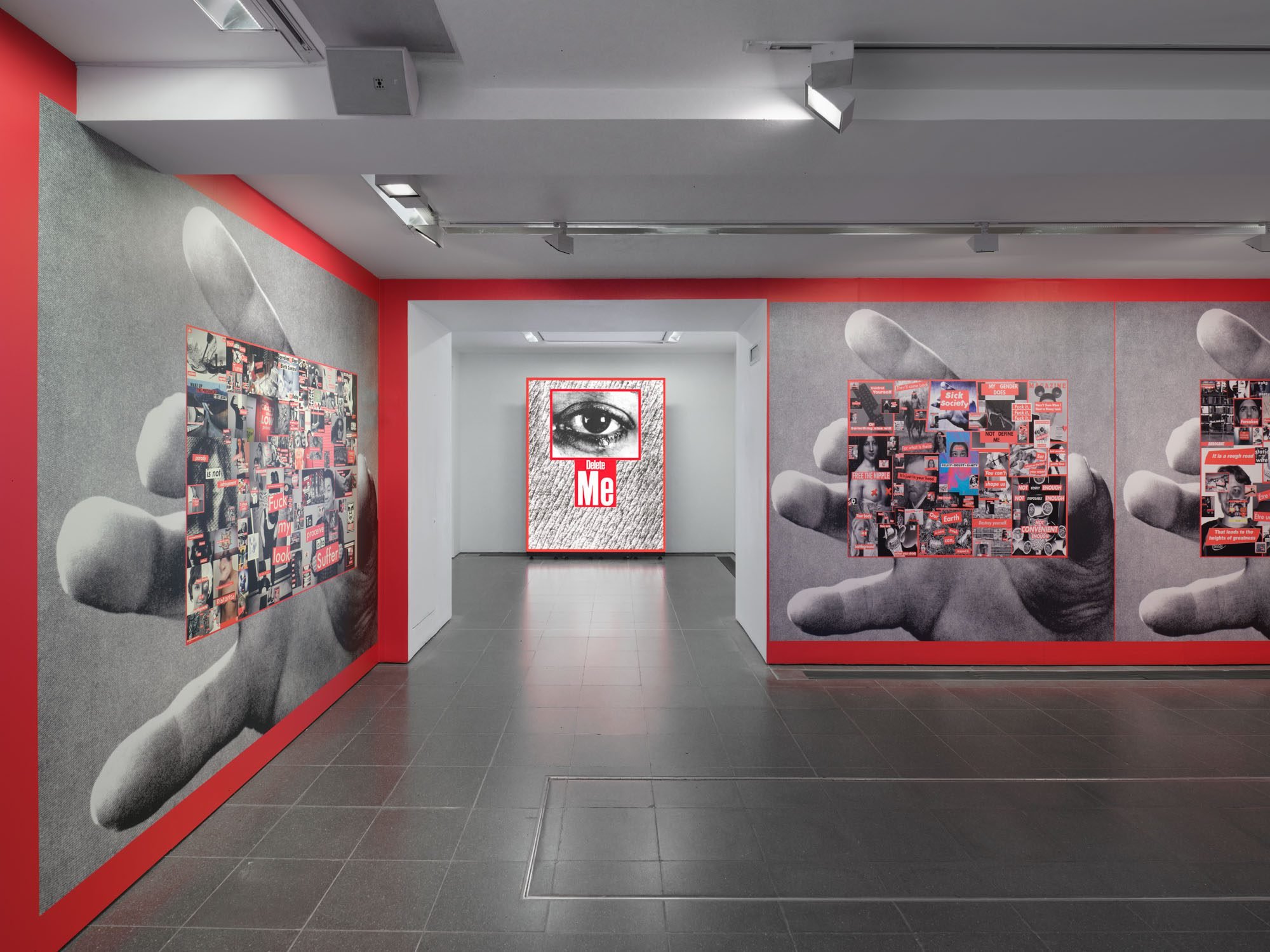
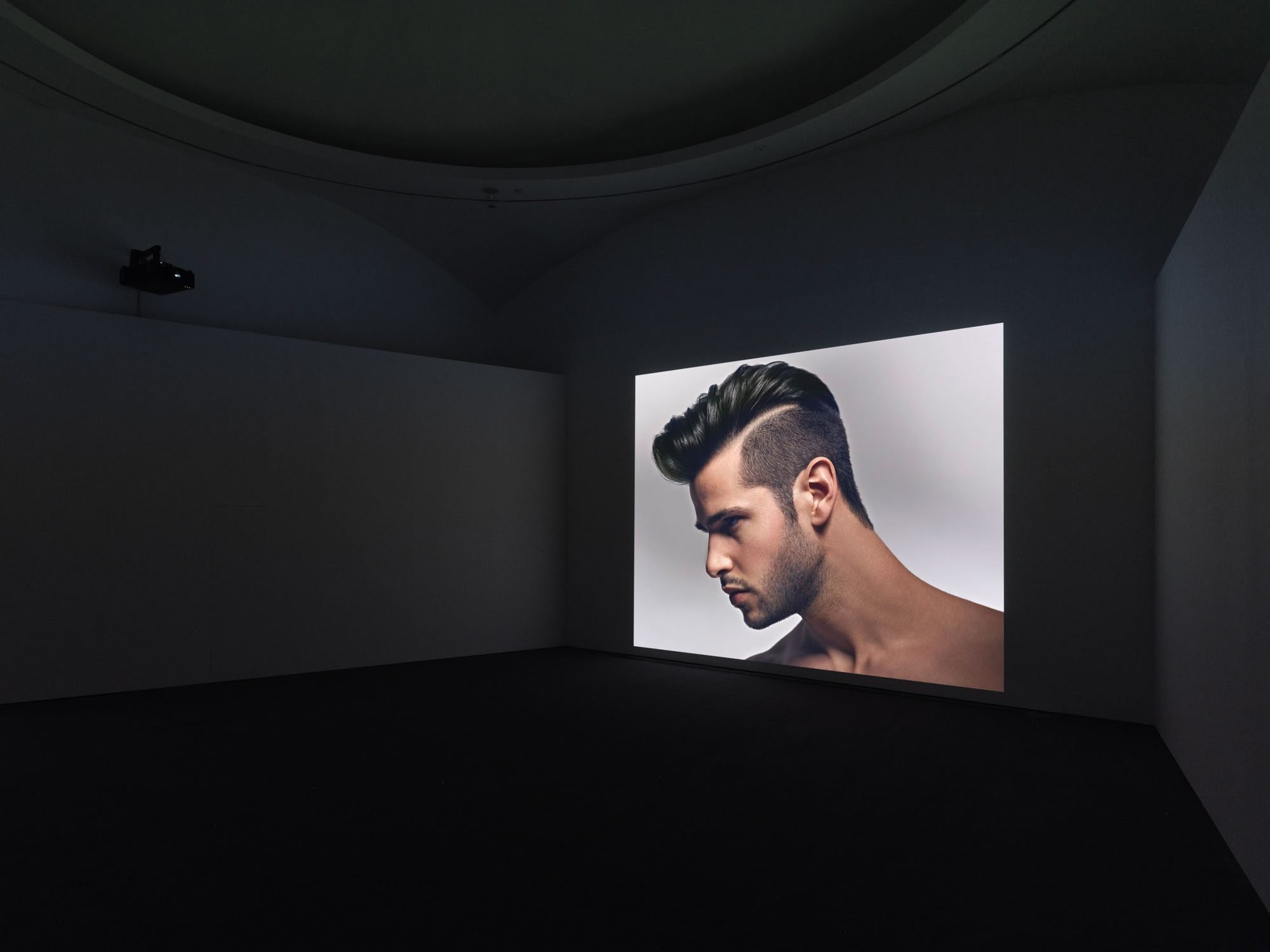
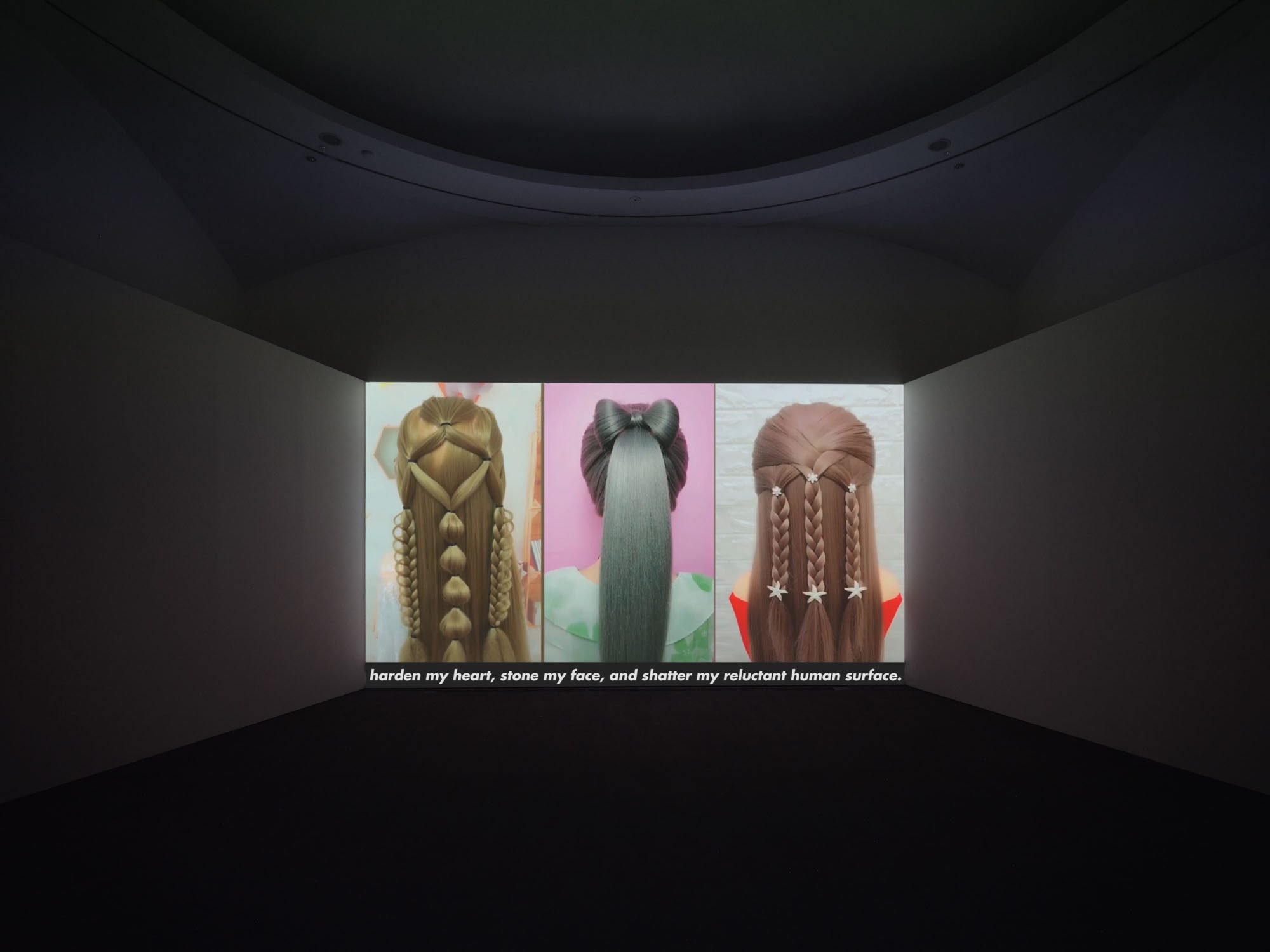
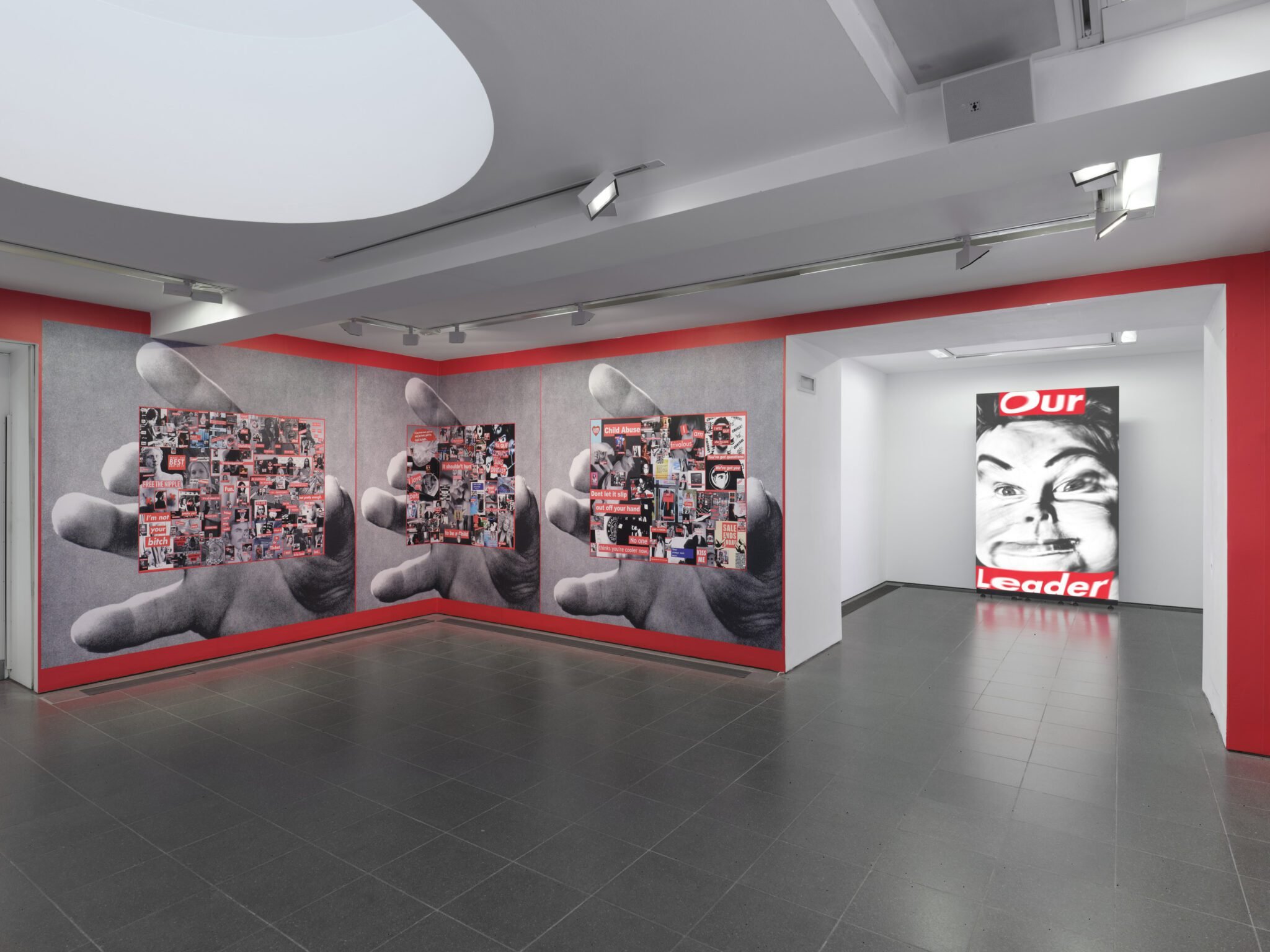
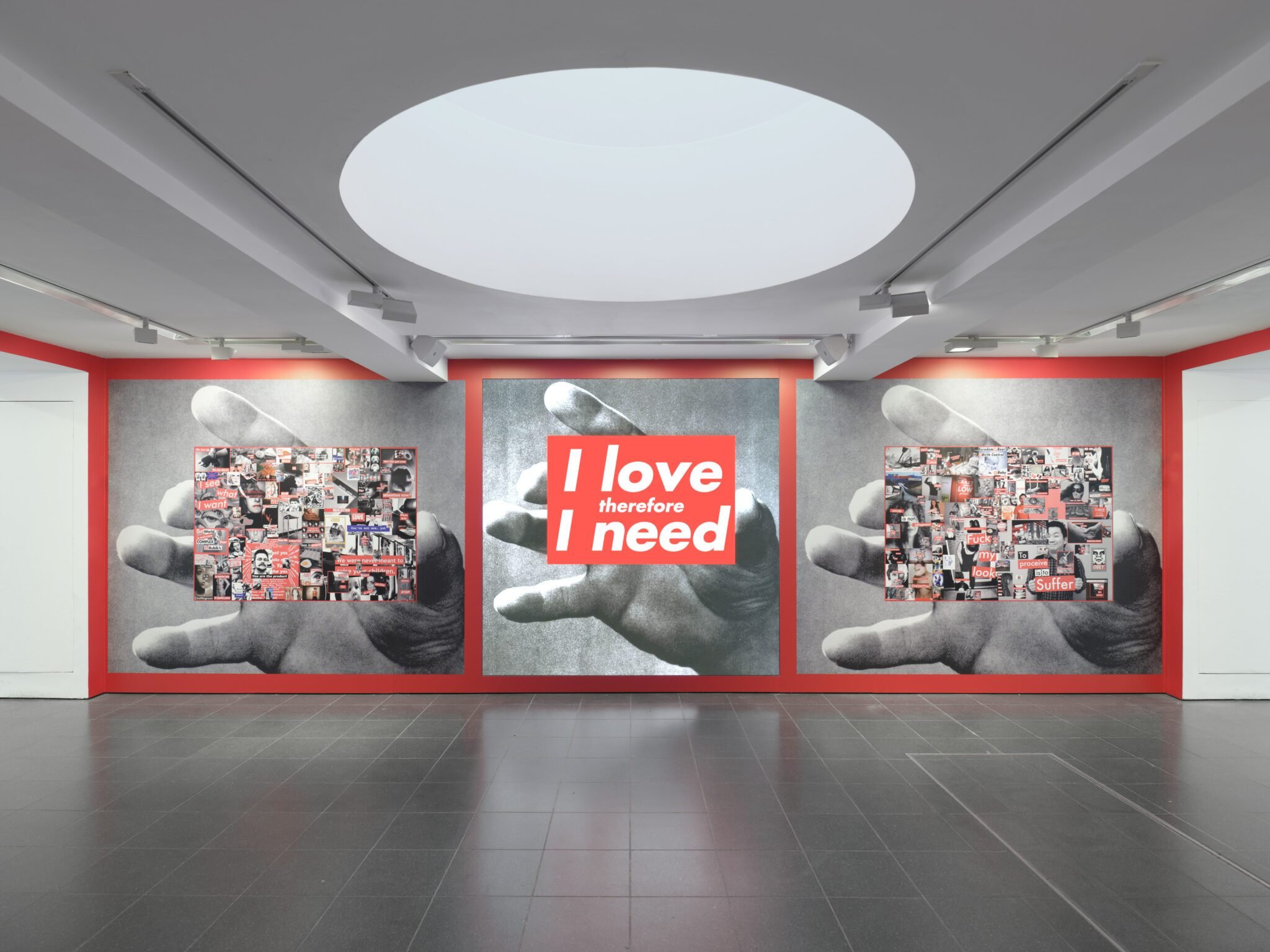
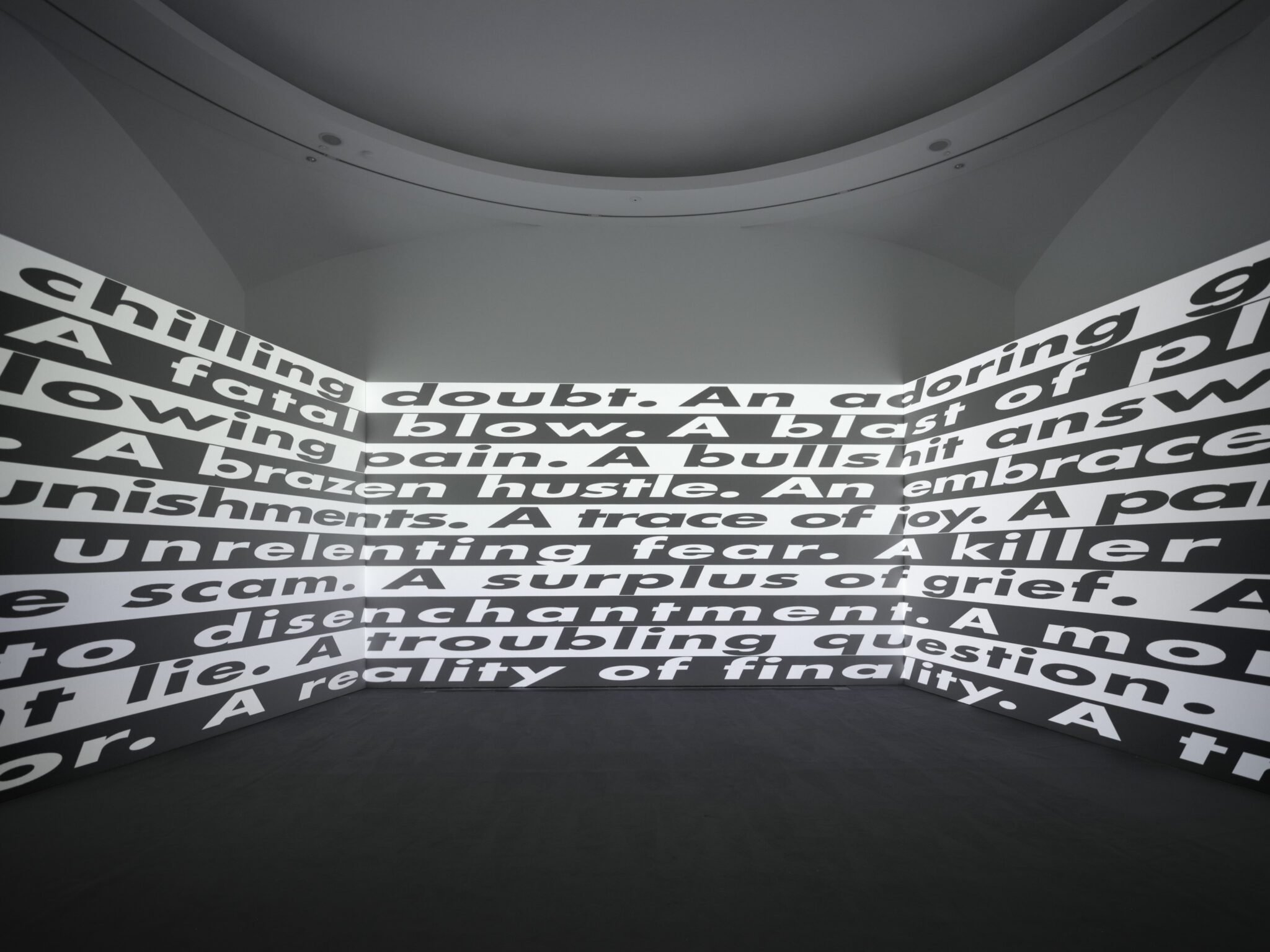
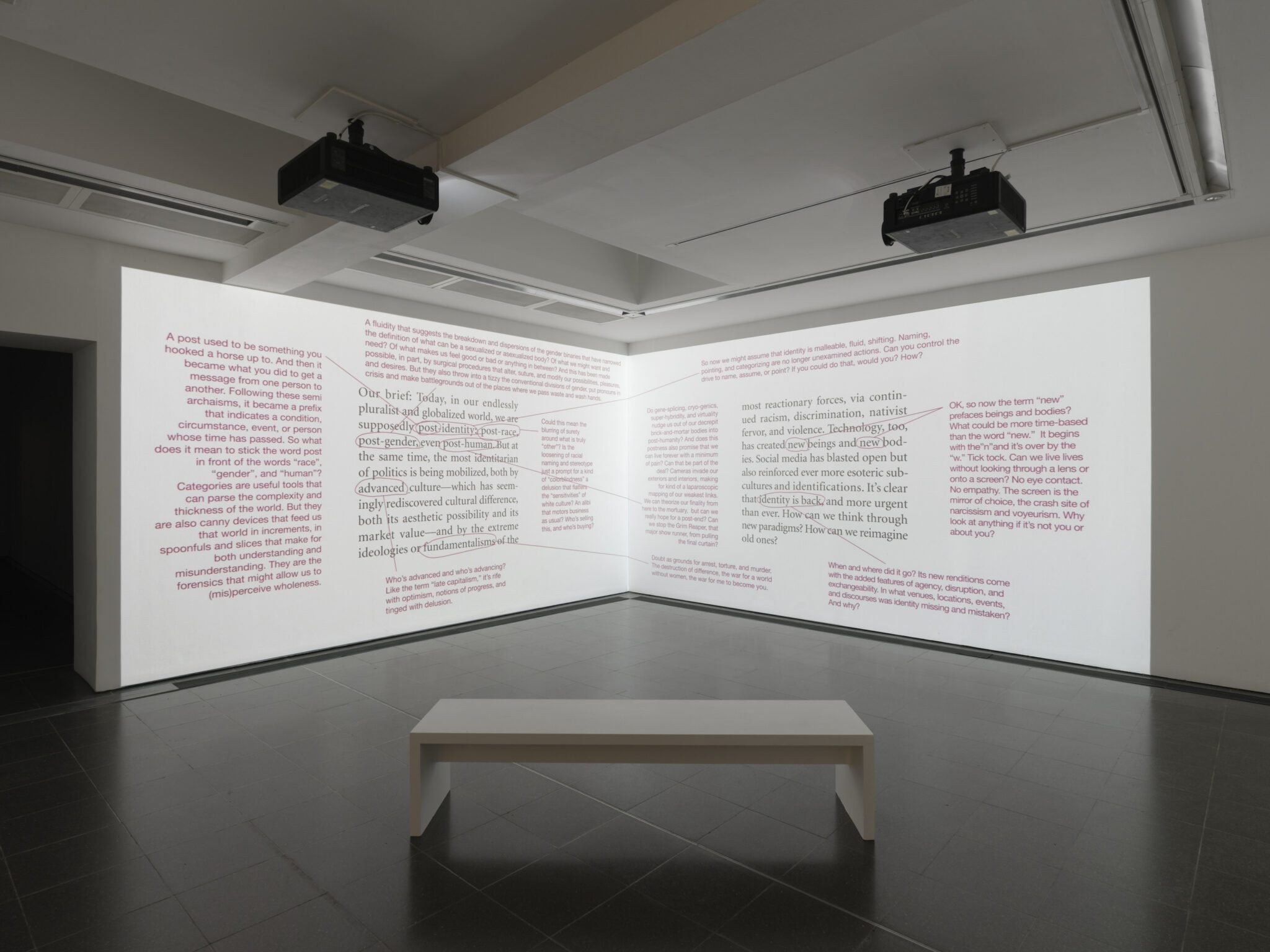
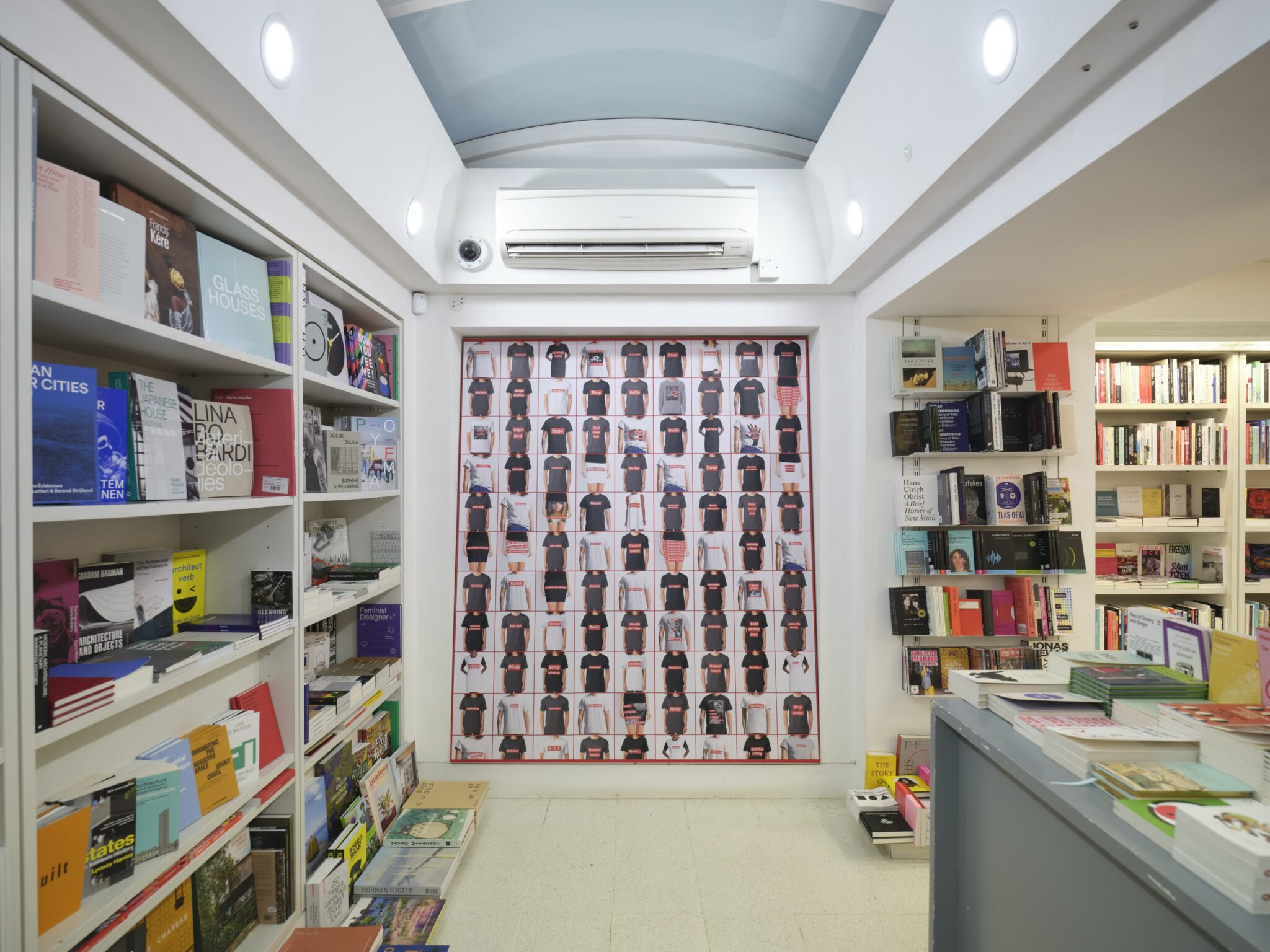
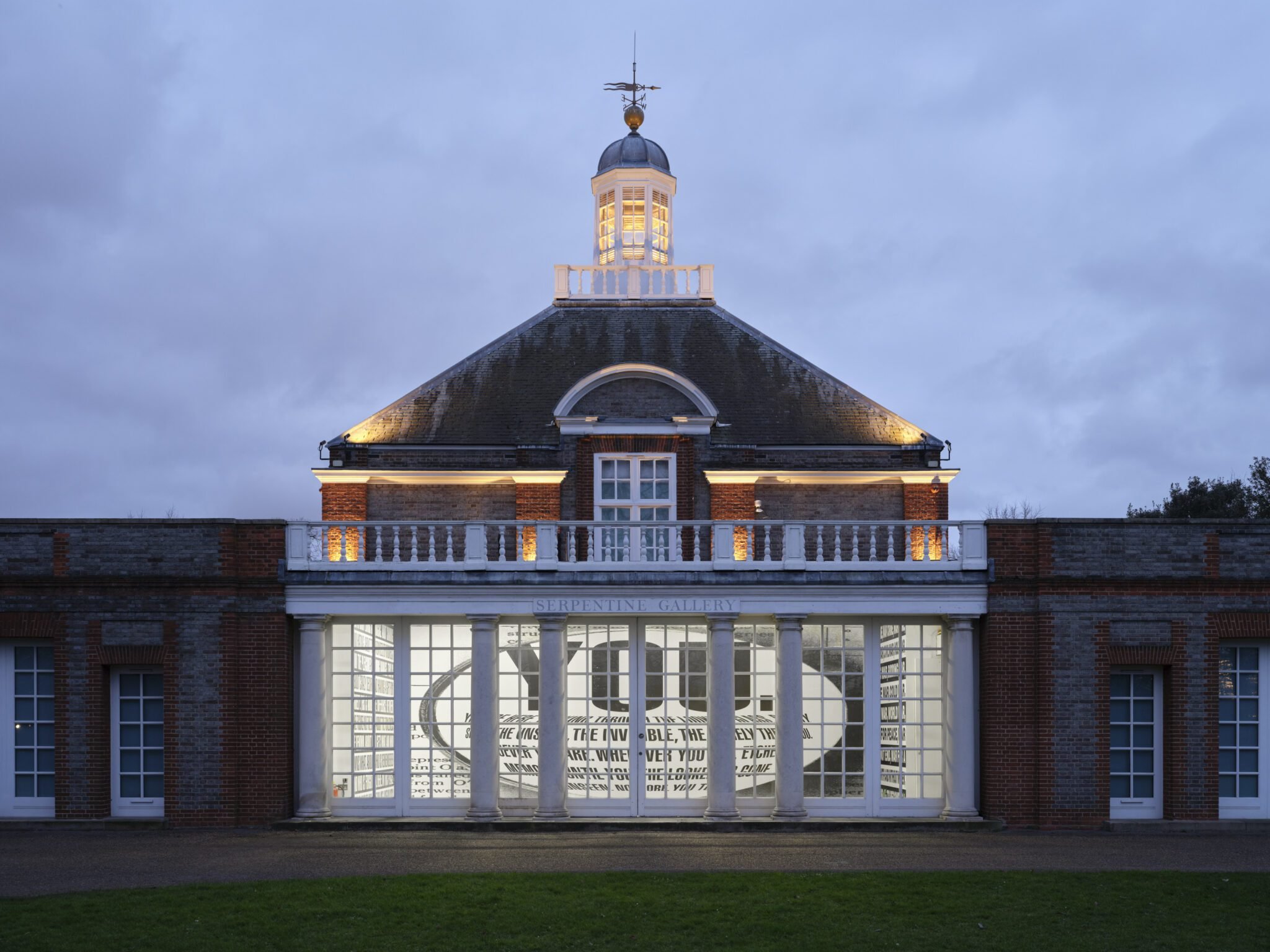

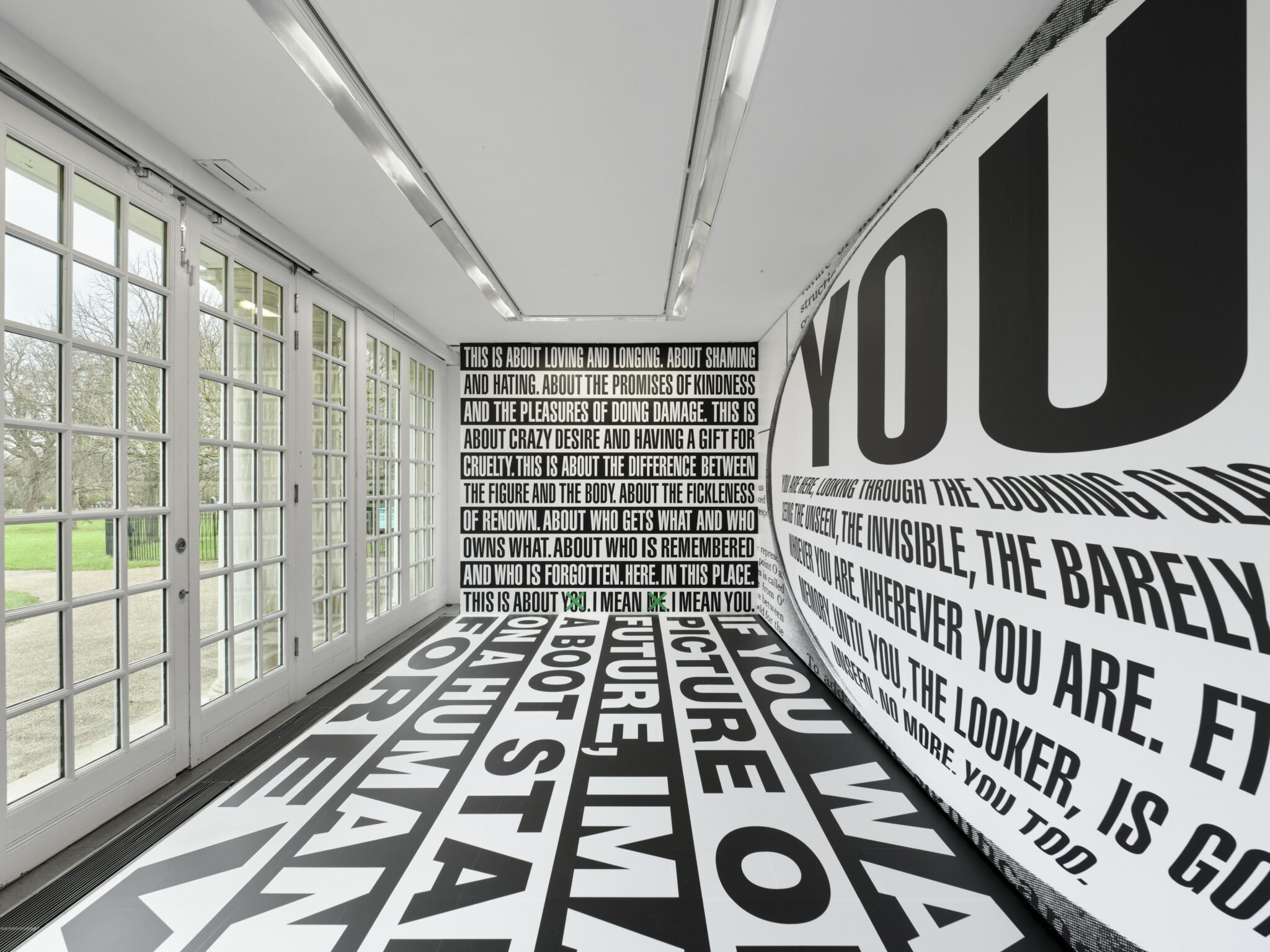
Barbara Kruger: Thinking of You. I Mean Me. I Mean You.,(Installation view, 1 February – 17 March 2024, Serpentine South) Photo: George Darrell
installation images of Kruger's work, and gemstones mix to stress our era's short attention spans.
Pledge, Will, Vow, 1988/2020, is a three-channel video work, recently presented at the 59th Venice Biennale in 2022. In this work, Kruger takes on the texts of the U.S. Pledge of Allegiance, traditional marriage vows, and the last will and testament.
In Untitled (Forever), 2017, enveloping the walls and floor of a gallery rarely open to visitors, Kruger assembles her words with those of others. A quote from George Orwell's novel 1984 is installed on the floor. The rest of the area is covered with textual works, one of which finishes with the words THIS IS ABOUT -¥G-th- I MEAN ME. I MEAN YOU..
The exhibition will also feature an audio chorus of greetings, emotions, and sentiments that address visitors at the entry and throughout the building.
The project is curated by the artist in close collaboration with Natalia Grabowska, Curator at Large, Architecture and Site-specific Projects, and produced by Brittany Stewart, Creative Producer, and Mike Gaughan, Gallery Manager.
About Barbara Kruger:
Barbara Kruger (born 1945, Newark, NJ, USA) is an artist who works with pictures and words. She lives and works in Los Angeles and New York. After spending two years at Syracuse University and Parsons School of Design in New York, she began working as a designer and picture editor at the Conde Nast magazines Mademoiselle and House &Garden. Frequently borrowing from the language of advertising and graphic design, her practice often explores the complex mechanisms of power, gender, class, and capital. Her work has been shown in international art institutions and across public spaces, including installed and projected onto buildings, billboards, hoardings, cars, buses, and skate parks, and printed in newspapers. She is an Emeritus Distinguished Professor in the Department of Art at UCLA.
Solo shows include the Museum of Modern Art, New York (2022), Los Angeles County Museum of Art (2022), Neue Nationalgalerie, Berlin (2022), The Art Institute of Chicago (2021), AMOREPACIFIC Museum of Art, Seoul (2019), National Gallery of Art, Washington, DC (2016), High Line Art, New York (2016), Modern Art Oxford (2014), Kunsthaus Bregenz (2013), Pinakothek der Moderne, Munich (2011), Schirn Kunsthalle, Frankfurt (2010), Gallery of Modern Art, Glasgow (2005), Whitney Museum of American Art, New York (2000), Museum of Contemporary Art, Los Angeles (1999), Musee d'art contemporain, Montreal (1985), and Kunsthalle Basel (1984). Group shows include those at Isabella Stewart Gardner Museum, Boston (2021), Hamburger Bahnhof, Berlin (2018), V-A-C Foundation, Palazzo delle Zattere, Venice (2017), Hammer Museum, Los Angeles (2014), Biennale of Sydney (2014), Museum Ludwig, Cologne (2013), Stedelijk Museum, Amsterdam (2010), Museum of Modern Art, New York (2010, 2009, 2007), Palazzo Grassi, Venice (2006), Museum of Contemporary Art, Chicago (2004), Tate Liverpool (2002), Serpentine, London (1994), Centre Pompidou, Paris (1988), and Solomon R. Guggenheim Museum, New York
(1987). Her work was included in The Milk of Dreams, the 59th International Art Exhibition
- La Biennale di Venezia (2022).
Thinking of ¥mt. I Mean Me. I Mean You. is an adaptation of the exhibition organised by the Art Institute of Chicago, the Los Angeles County Museum of Art, and The Museum of Modern Art, New York.
Thinking of¥eit. I Mean Me. I Mean You. was on view at the Art Institute of Chicago from 19 September 2021 to 24 January 2022, and was co-organised by James Rondeau, President and Eloise W. Martin Director, and Robyn Farrell, Senior Curator at the Kitchen and former Associate Curator of Modern and Contemporary Art. At LACMA, the exhibition was presented 20 March 2022 to 17 July, 2022 and was organised by Michael Govan, CEO and Wallis Annenberg Director, and Rebecca Morse, Curator, Wallis Annenberg Photography Department. The installation at The Museum of Modern Art, New York, was on view from 18 July, 2022 to 2 January 2023 and was organised by Peter Eleey, former Chief Curator, MoMA PS1, and Lanka Tattersall, Laurenz Foundation Curator, Department of Drawings and Prints.
Beyond the gallery walls
Thinking of ¥ou. I Mean M̶e̶. I Mean You. will extend beyond Serpentine South. From 4th March to 20th May 2024, from 6 pm to 11.30 pm in its second collaboration with Outernet Arts - located at the junction of Tottenham Court Road and Charing Cross Road alongside Centre Point - a presentation of Barbara Kruger's work will be displayed on the world's largest wrap-around public screens.
In Silent Writings, 2009/2024, Barbara Kruger explores how we communicate and connect with global events and with each other. The piece weaves images and words in an attempt to engage issues of control, power and dominance. Kruger incorporates her own words alongside quotes from writers and philosophers including Aime Cesaire, Goethe, Thomas Mann and Mary Therese McCarthy. These quotes allude to themes of violence, political modes of operation and spectatorship. Kruger manipulates selected words, enlarging or removing them to highlight their meanings and create new ones. Opposing terms like contact/isolation, order/horror, stupid/clever become fluid and interchangeable.
Throughout the piece, cropped found documentary photographs of conflicts, politicians and mass media images briefly appear between sentences, serving as illustrations of the words or evidence of their relevance. As in many of her works, the artist addresses the viewers directly to make us question our beliefs, perspectives and how we perceive the world.
About Serpentine
Building new connections between artists and society, Serpentine presents pioneering contemporary art exhibitions and cultural events with a legacy that stretches back over half a century, from a wide range of emerging practitioners to the most internationally recognised artists, writers, scientists, thinkers, and cultural thought leaders of our time.
Based in London's Kensington Gardens, across two sites, Serpentine North and Serpentine South, Serpentine features a year-round, free programme of exhibitions, architectural showcases, education, live events and technological activations, in the park and beyond the gallery walls.
The Serpentine Pavilion is a yearly pioneering commission, which began in 2000 with Dame Zaha Hadid. It features the first UK structures by some of the biggest names in international architecture.
Public art has emerged as a central strand of Serpentine's programme. Major presentations include a collection of Eduardo Paolozzi's sculptures (1987), Anish Kapoor's Turning the World Upside Down (2010), Lee Ufan presentedRelatum-Stage (2018-19), Christo and Jeanne-Claude's London Mastaba in the Serpentine Lake (2018), I LOVE YOU EARTH by Yoko Ono (2021), Dominique Gonzalez-Foerster In remembrance of the coming alien (Alienor), (2022), and Alexandra Daisy Ginsberg's Pollinator Pathmaker (2022 - ongoing).
Proud to maintain free access for all visitors, thanks to its unique location, Serpentine also reaches an exceptionally broad audience and maintains a profound connection with its local community.
A Serpentine limited edition by Barbara Kruger will be launched to coincide with the exhibition, to purchase please contact here. Barbara Kruger's limited run drop of apparel will also be sold exclusively at Serpentine South throughout the exhibition.
About Outernet Arts
Outernet Arts is an independent arts organisation located in the heart of London, offering free and accessible exhibitions in one of the world's largest digital spaces. With screens spanning the height of four stories, the organisation presents a year-round programme every Monday from 18:00 to 23:30. It aims to bring together a diverse network of both established and under-represented artists, commissioning projects that explore the complexities of the media space. Through artist-led initiatives, Outernet Arts sparks meaningful discussions about our existence in a digitally dominated world.
For more information about this exhibition and others, please visit Serpentine’s website. Please also visit and follow Serpentine on Instagram, Facebook, and YouTube, along with TikTok.
Stephen Friedman Gallery presents Brazilian artist Luiz Zerbini for Frieze Los Angeles
Installation views: Luiz Zerbini at Frieze LA (2024). Courtesy Stephen Friedman Gallery, London and New York. Photo by Mark Blower.
Stephen Friedman Gallery presents a new body of work by Brazilian artist Luiz Zerbini for Frieze Los Angeles, marking the artist's debut exhibition in the city. The solo presentation includes dynamic paintings and monotypes and shows the immersive and seductive quality of Brazil’s natural environment.
Luiz Zerbini, 'Natureza morta', 2023. Oil on Hahnemühle paper over linen, acrylic on wood, 127 x 98.5cm (50 x 38 3/4in). Copyright Luiz Zerbini. Courtesy of the artist and Stephen Friedman Gallery, London, and New York. Photo by Pat Kilgore.
In a career spanning over three decades, Zerbini has developed a complex visual vocabulary rooted at the intersection of figuration and abstraction. He first emerged within the generational and global ‘return to painting’ of the 1980s, centred in Rio de Janeiro around the Parque Lage School of Visual Arts. The artist was subsequently defined by the landmark exhibition ‘Como vai você Geração 80?’ (How Are You Doing, 80s Generation?, 1984).
Luiz Zerbini, 'Vitamina C', 2023. Oil on Hahnemühle paper over linen, acrylic on wood, 127 x 98.5cm (50 x 38 3/4in). Copyright Luiz Zerbini. Courtesy the artist and Stephen Friedman Gallery, London and New York. Photo by Pat Kilgore.
Juxtaposing hard-edged geometry with organic pattern, Zerbini’s paintings are an optical sensation, and evoke a blend of modernist architecture and lush tropical flora. By incorporating sweeping curves, fluid textures and vivid colours, the artist emulates the intoxicating effects of the sights and sounds of the rainforest. The works are “a reflection of the place I live,” Zerbini explains. “Rio de Janeiro has a huge forest just inside of the city. Everything is mixed. It’s an urban landscape, but it’s really full of nature.”

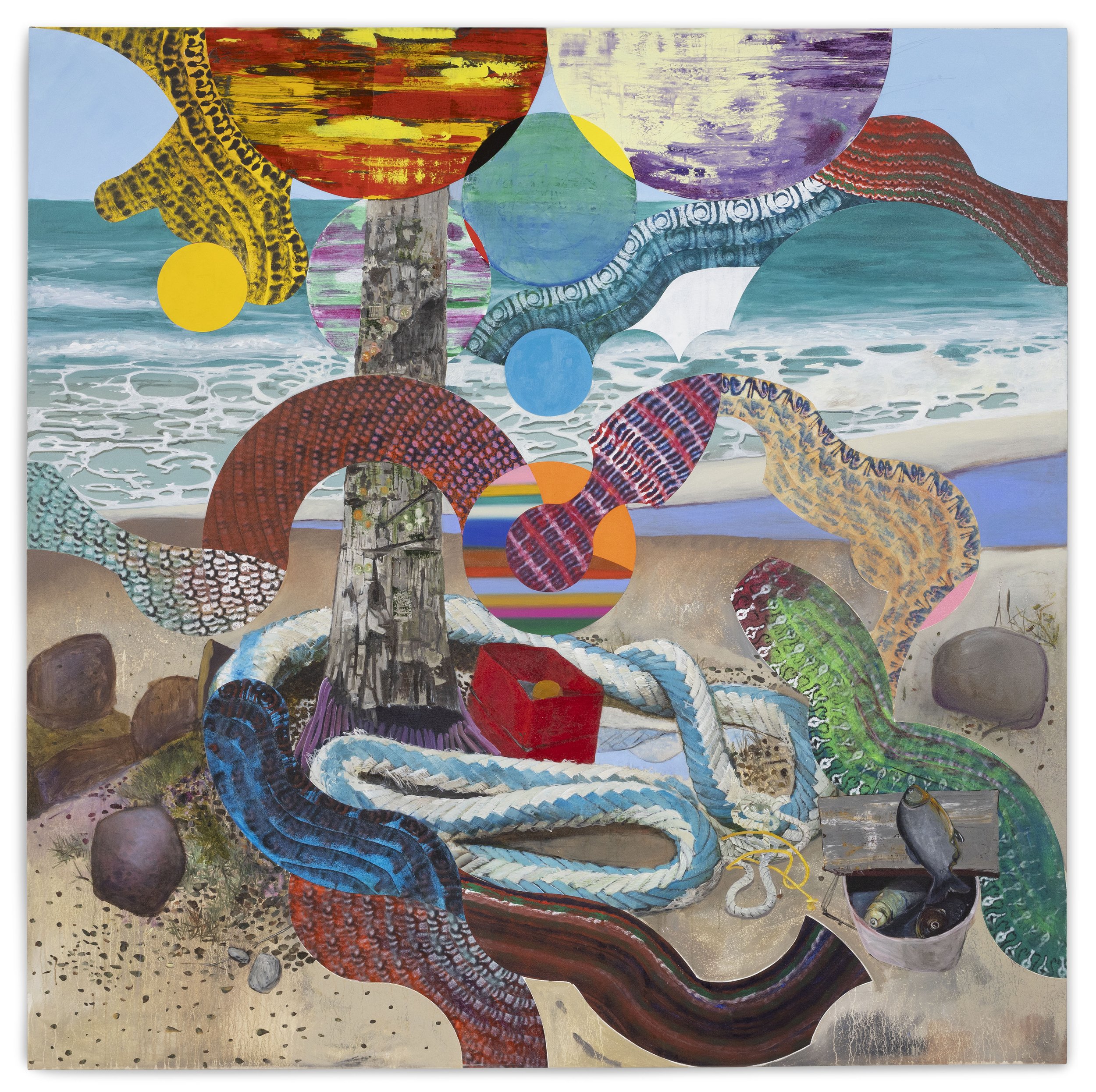
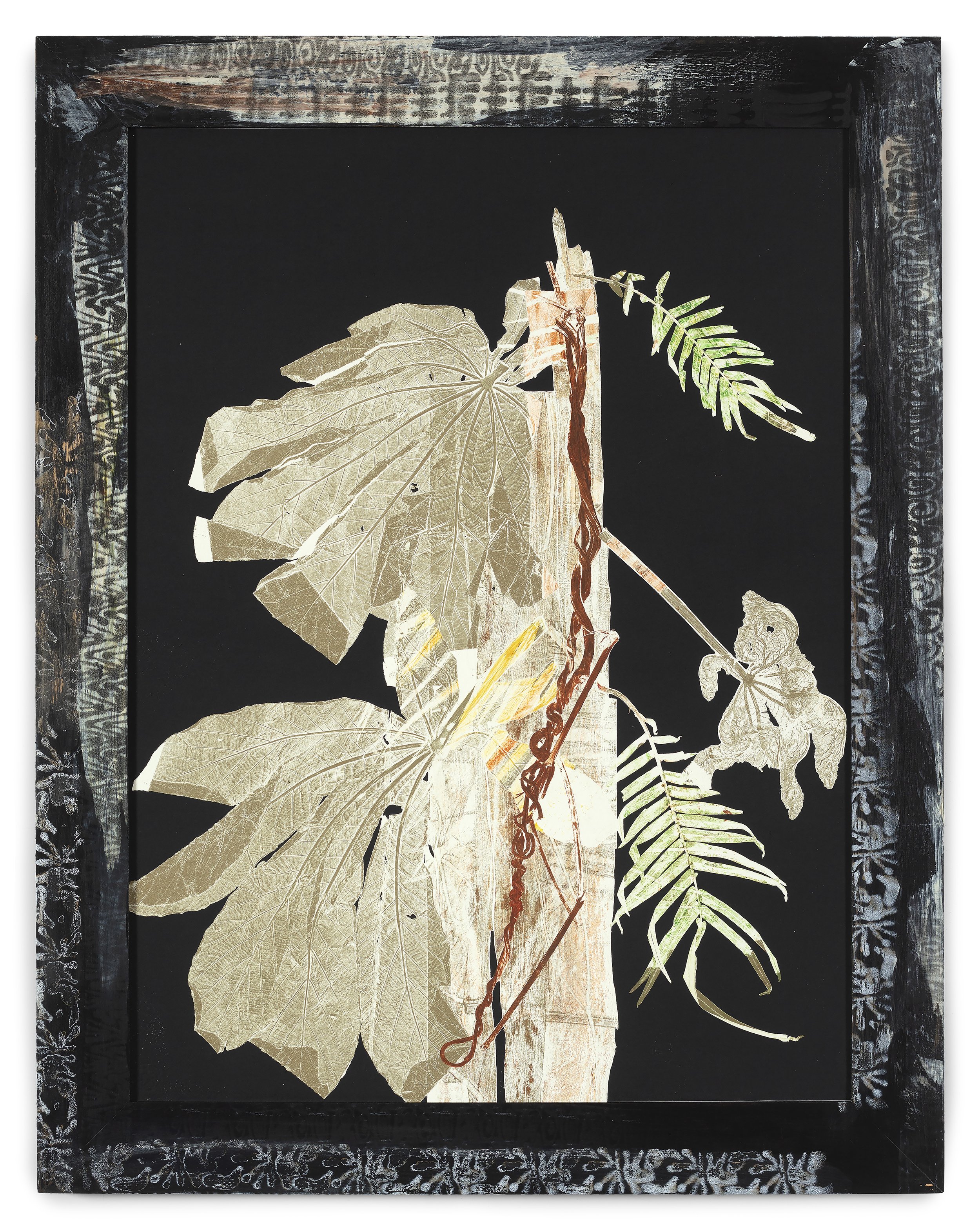
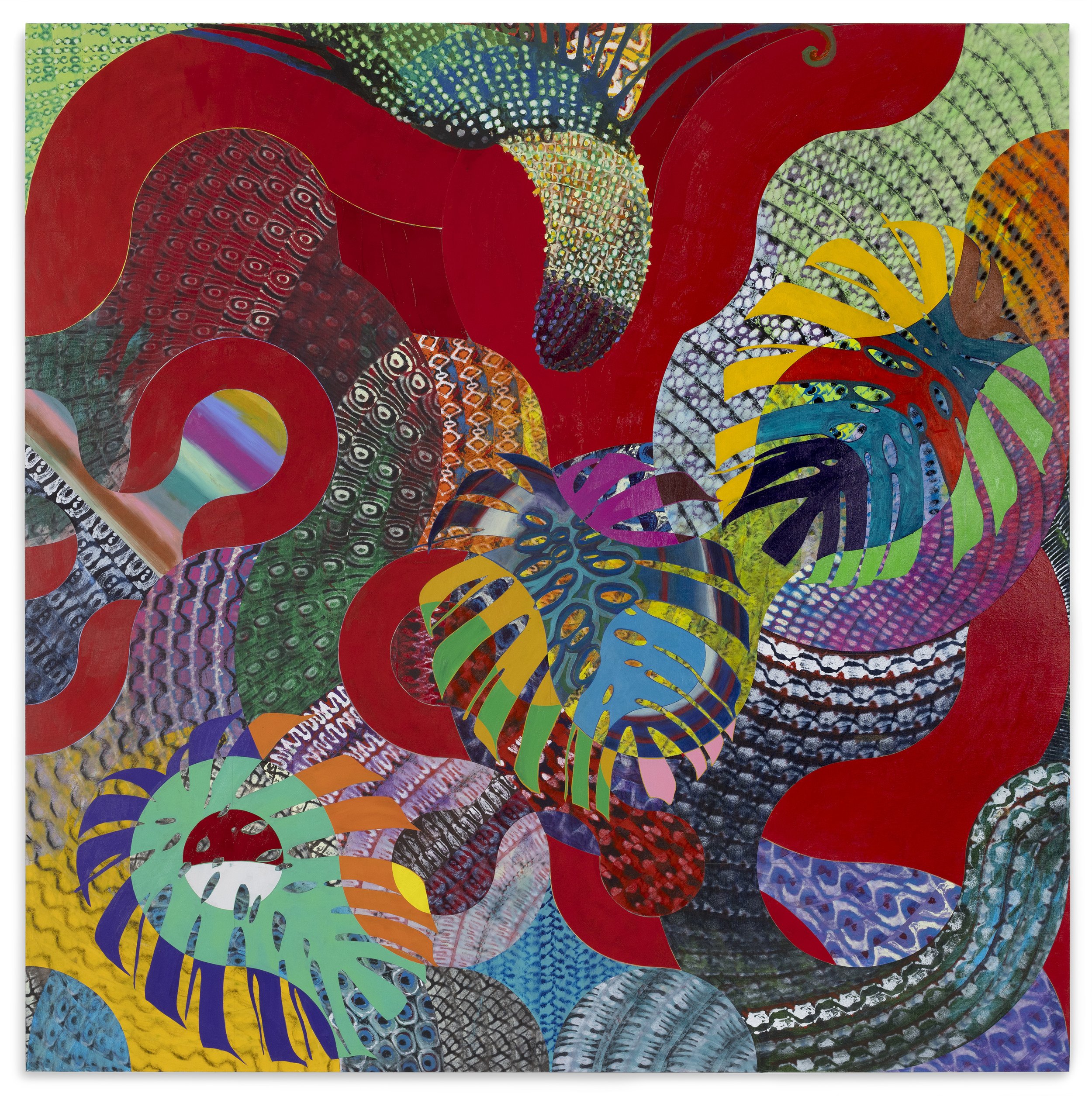
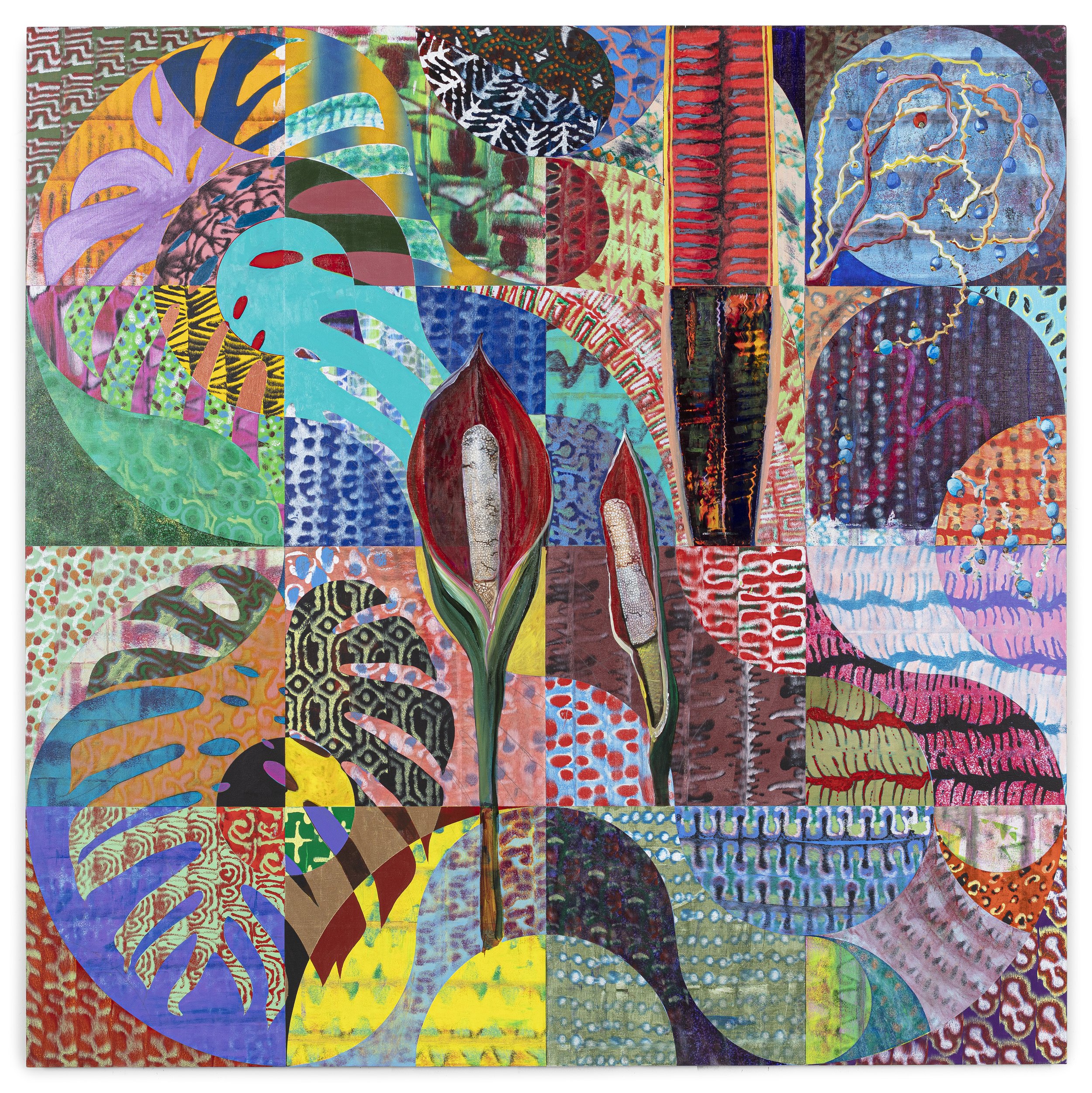
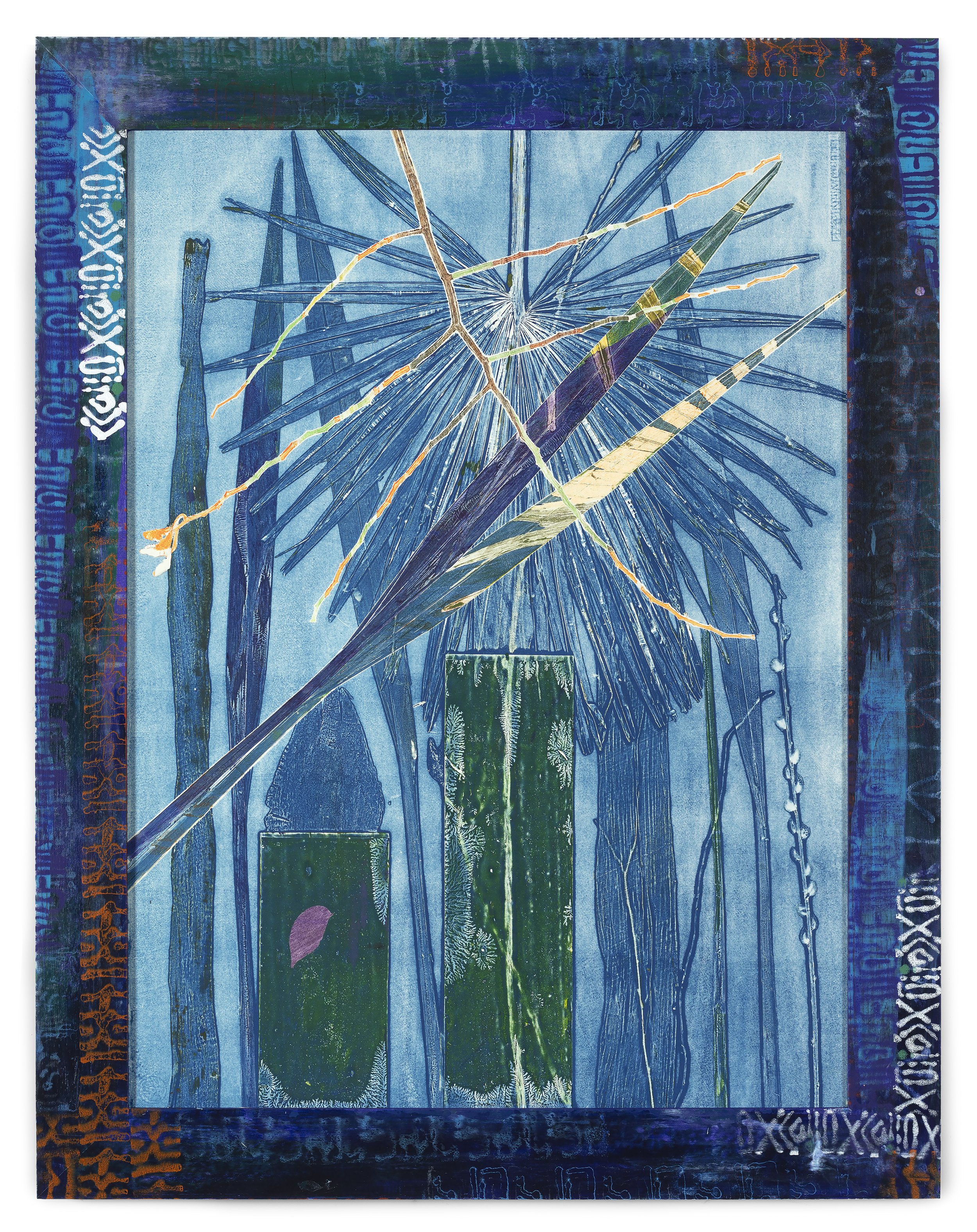
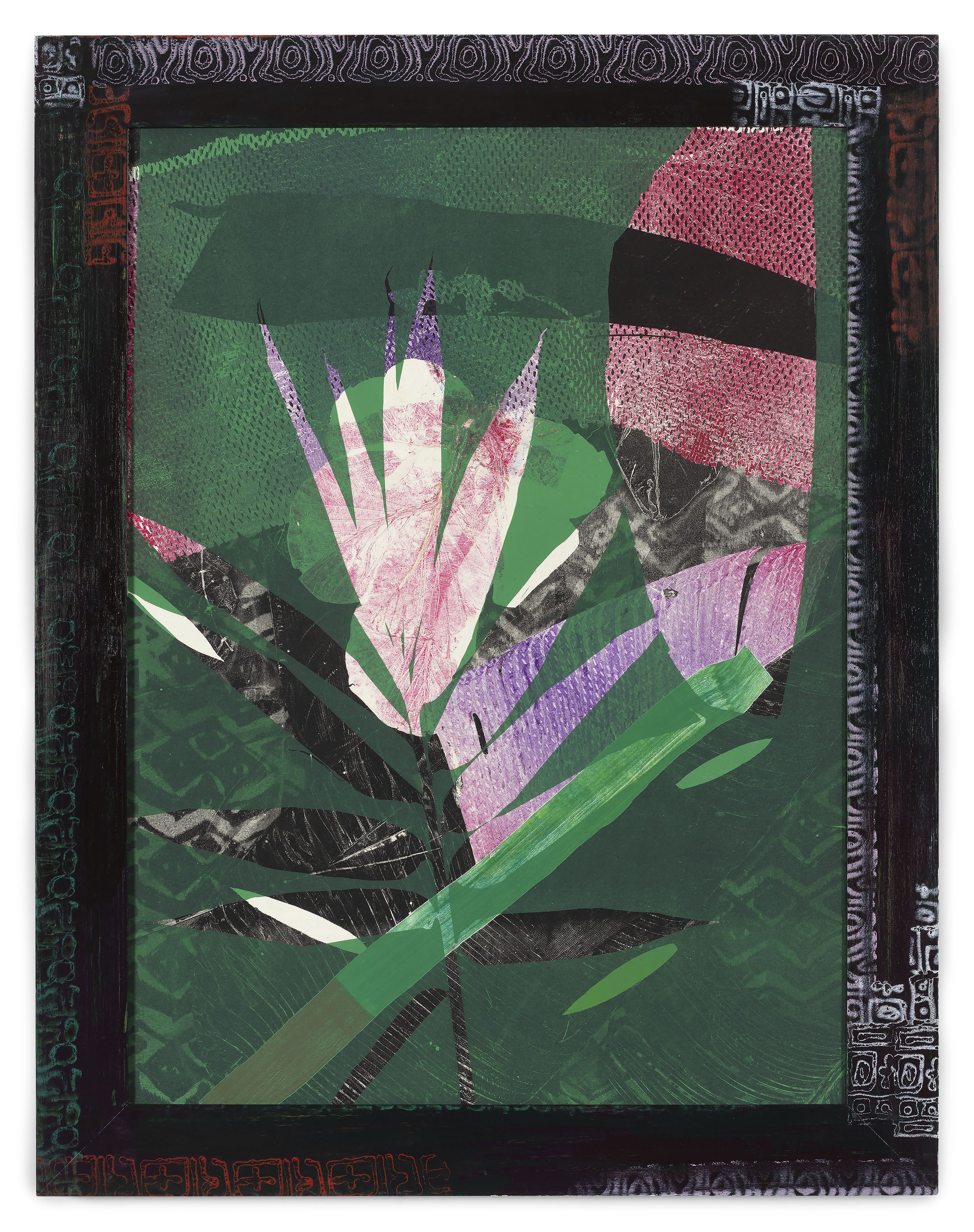
The grid – an emblem of modernism – is typically associated with the static, antinatural and systematic. Zerbini often uses a quadrangular grid as a primary structuring device, which subtly nods to the mosaic pavements and façades of Brazilian tower blocks. In the vibrant painting Erótica (2023), Zerbini transforms the grid’s tight squares into lenses of a kaleidoscopic vision. Monstera leaves and Calla lily flowers are layered over the work’s gridded structure, revealing appropriated patterns found in nature that were incorporated into his own vernacular. The artist takes elements of the grid in Sea Bubbles (2023) to lend the expressive composition a rhythmic quality, recalling the movement of water or trees swaying in the breeze. Flooding the viewer’s perception, Zerbini seeks to convey the impression of “being in the painting as you could be in a forest.”
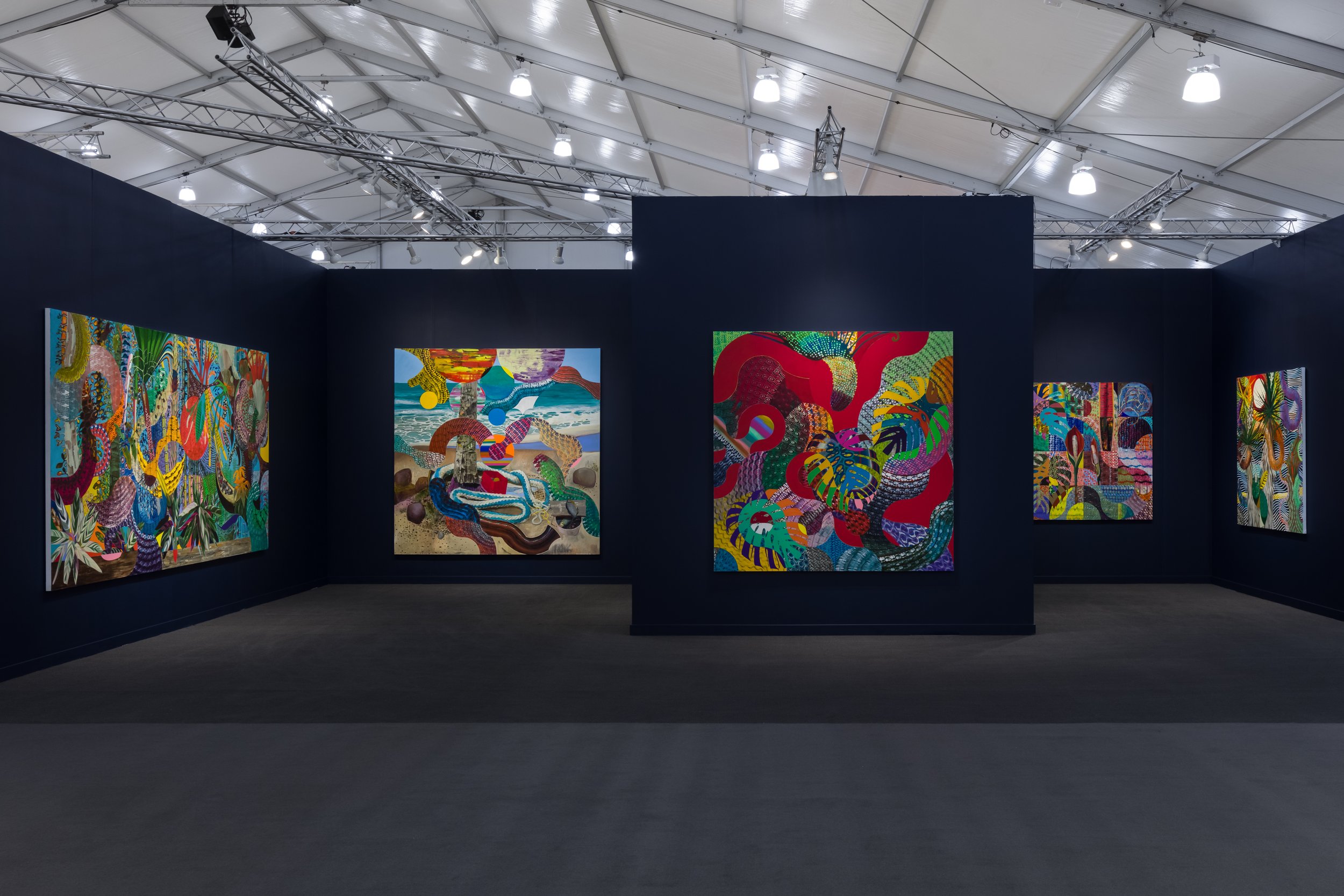
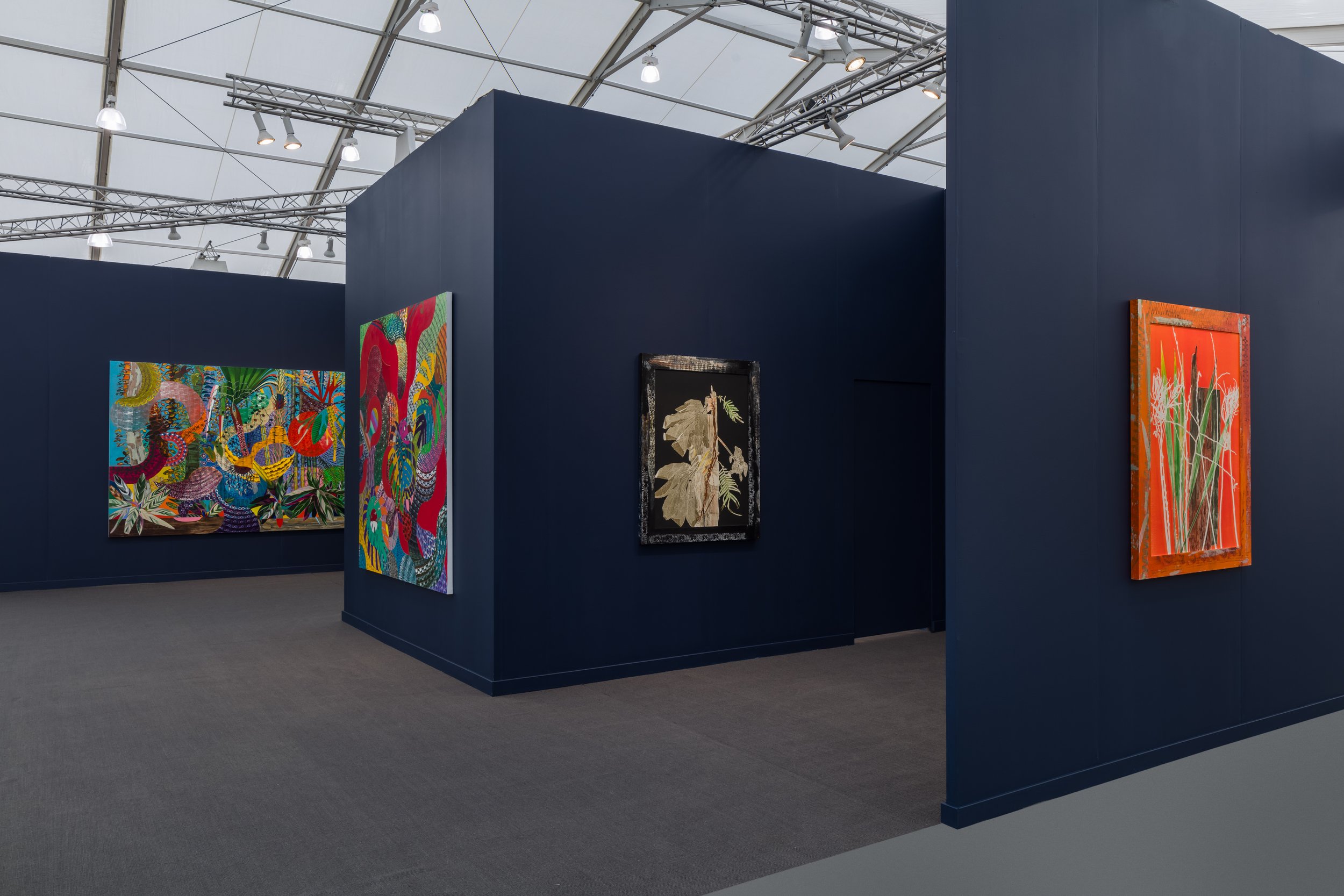
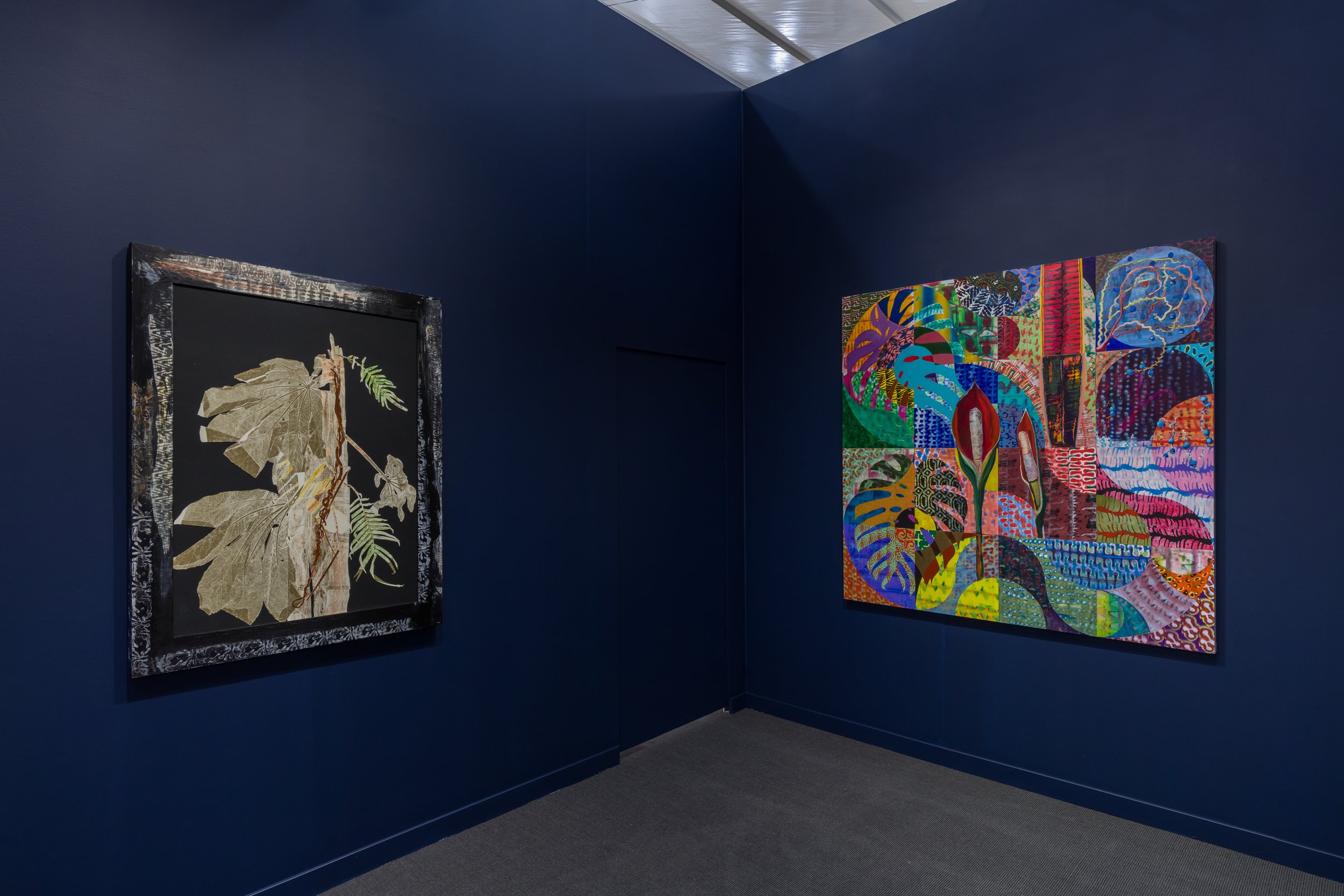
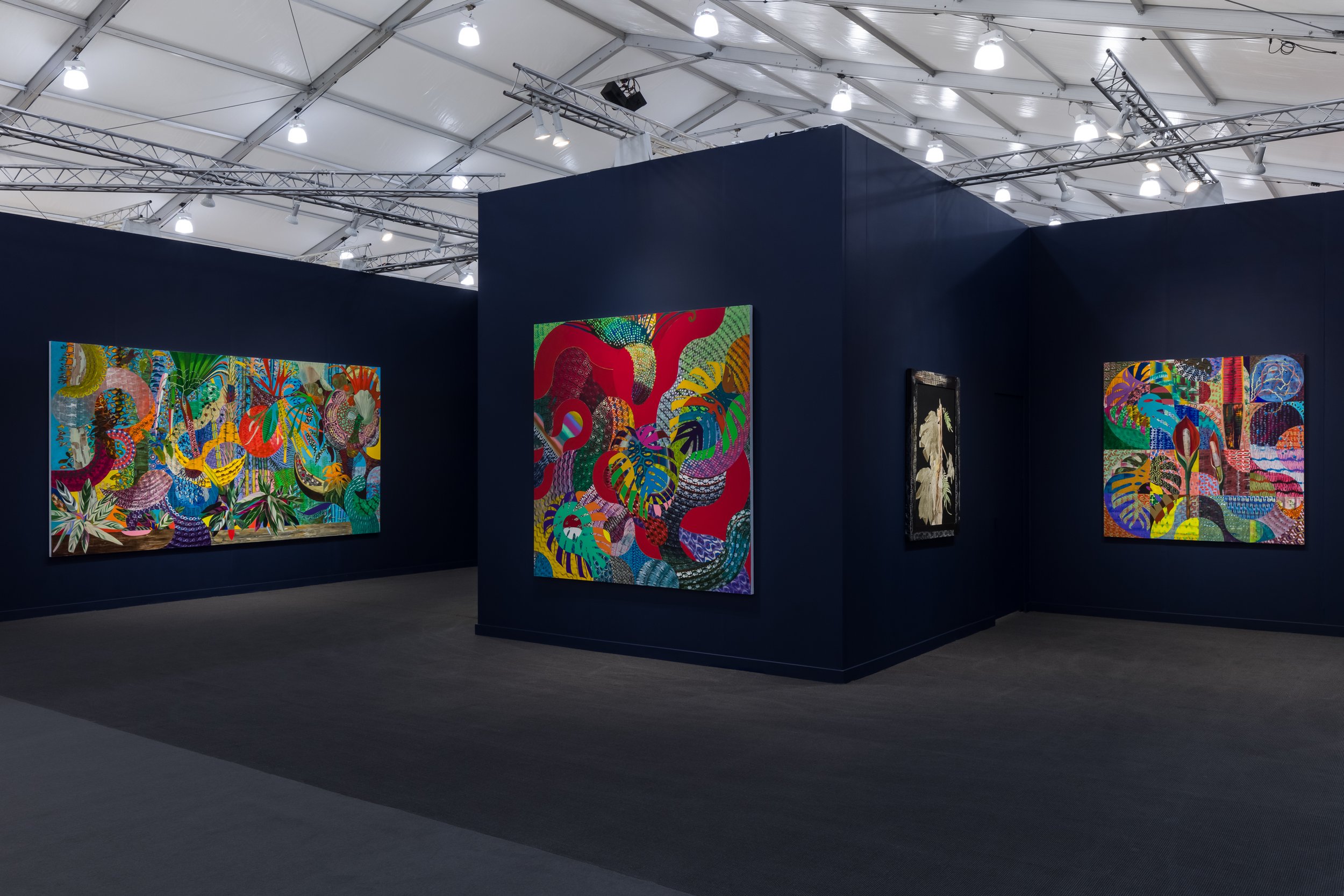
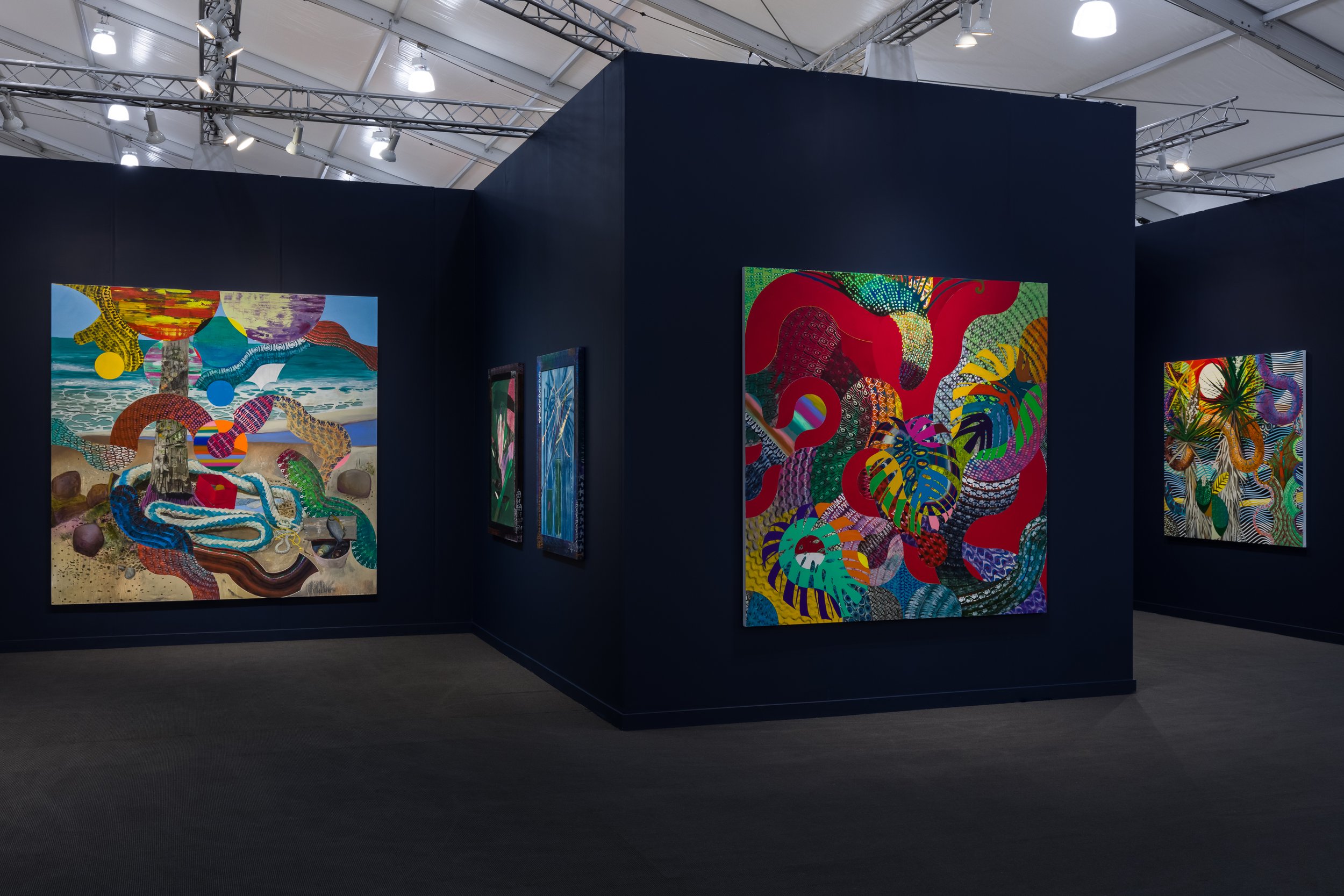
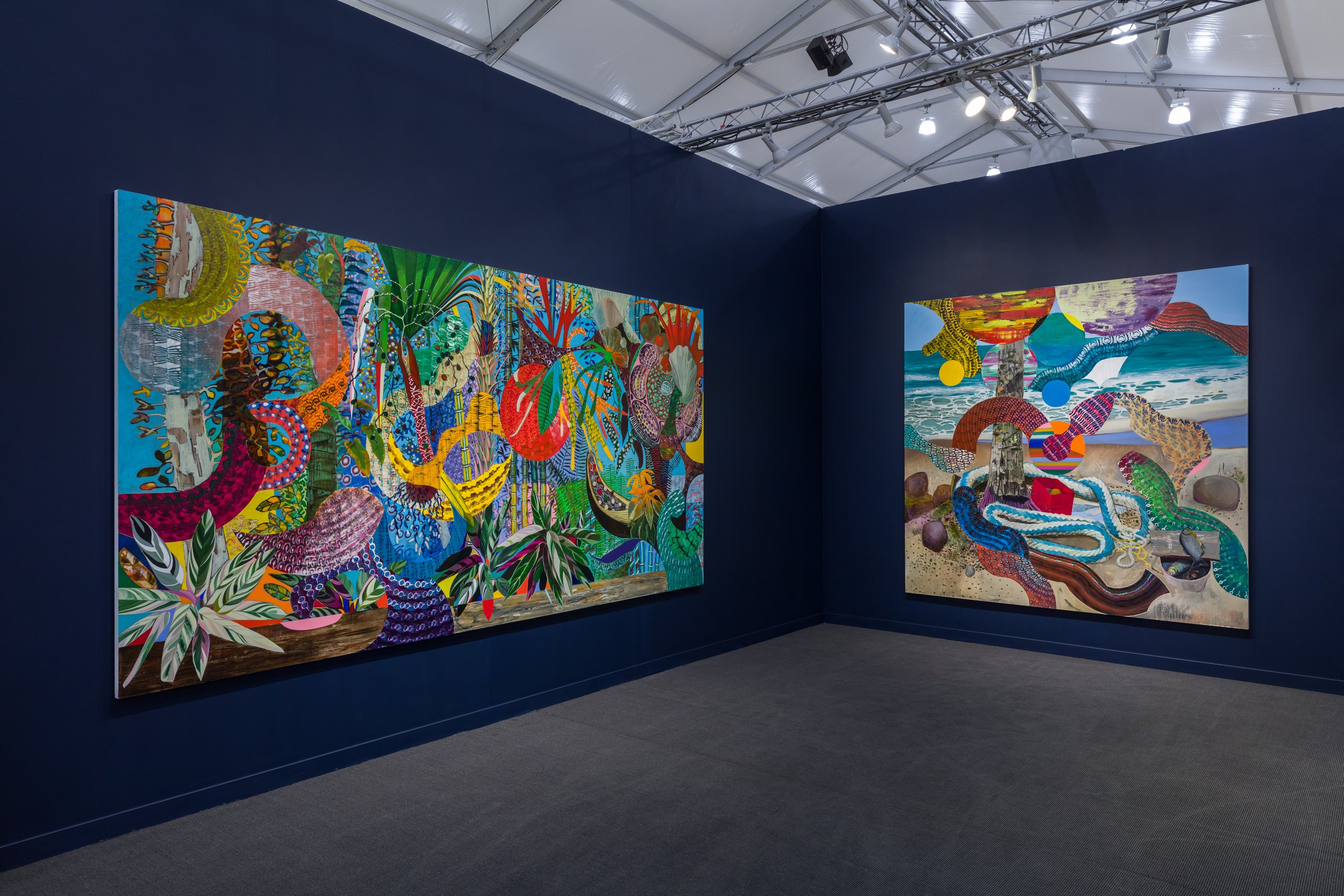
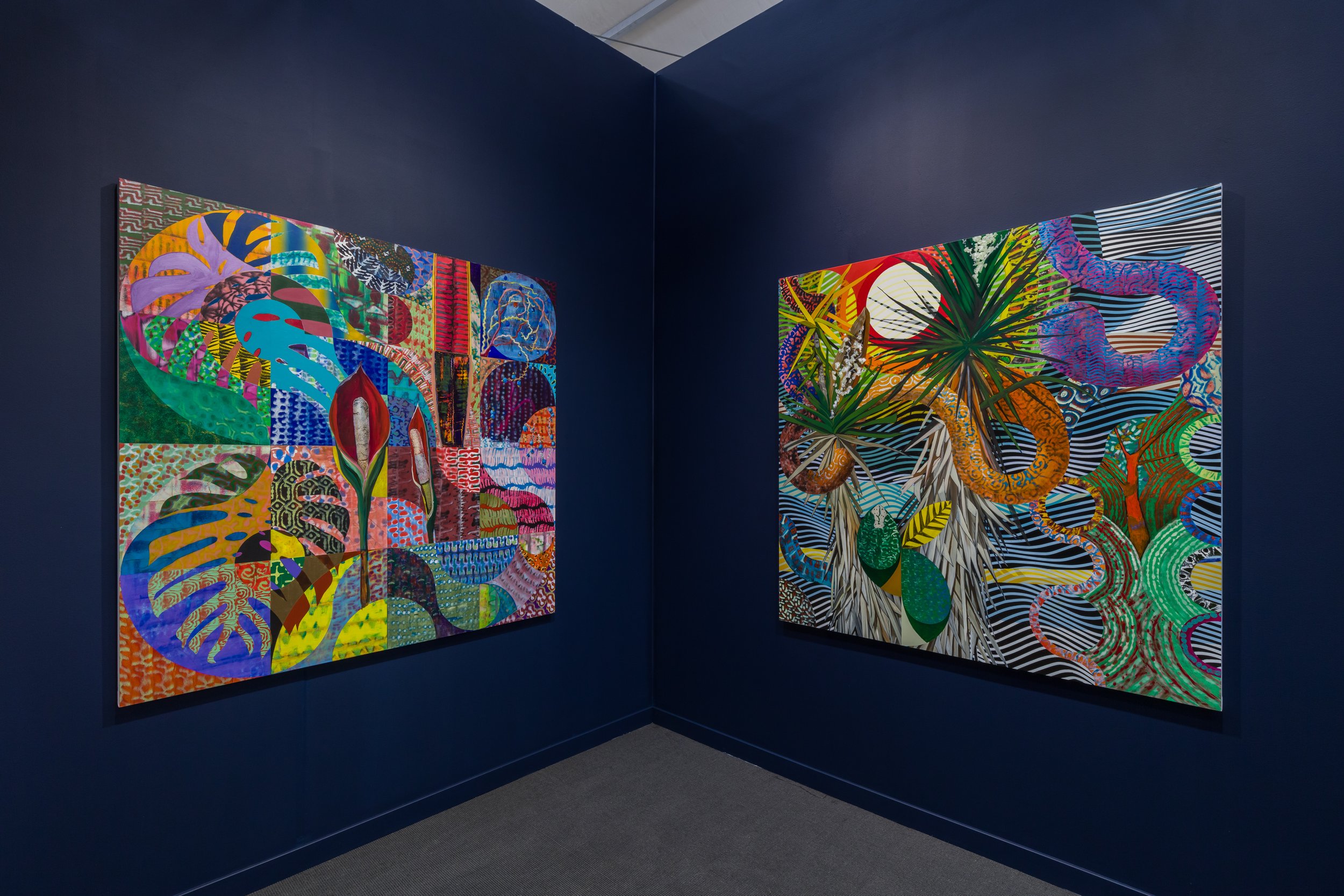
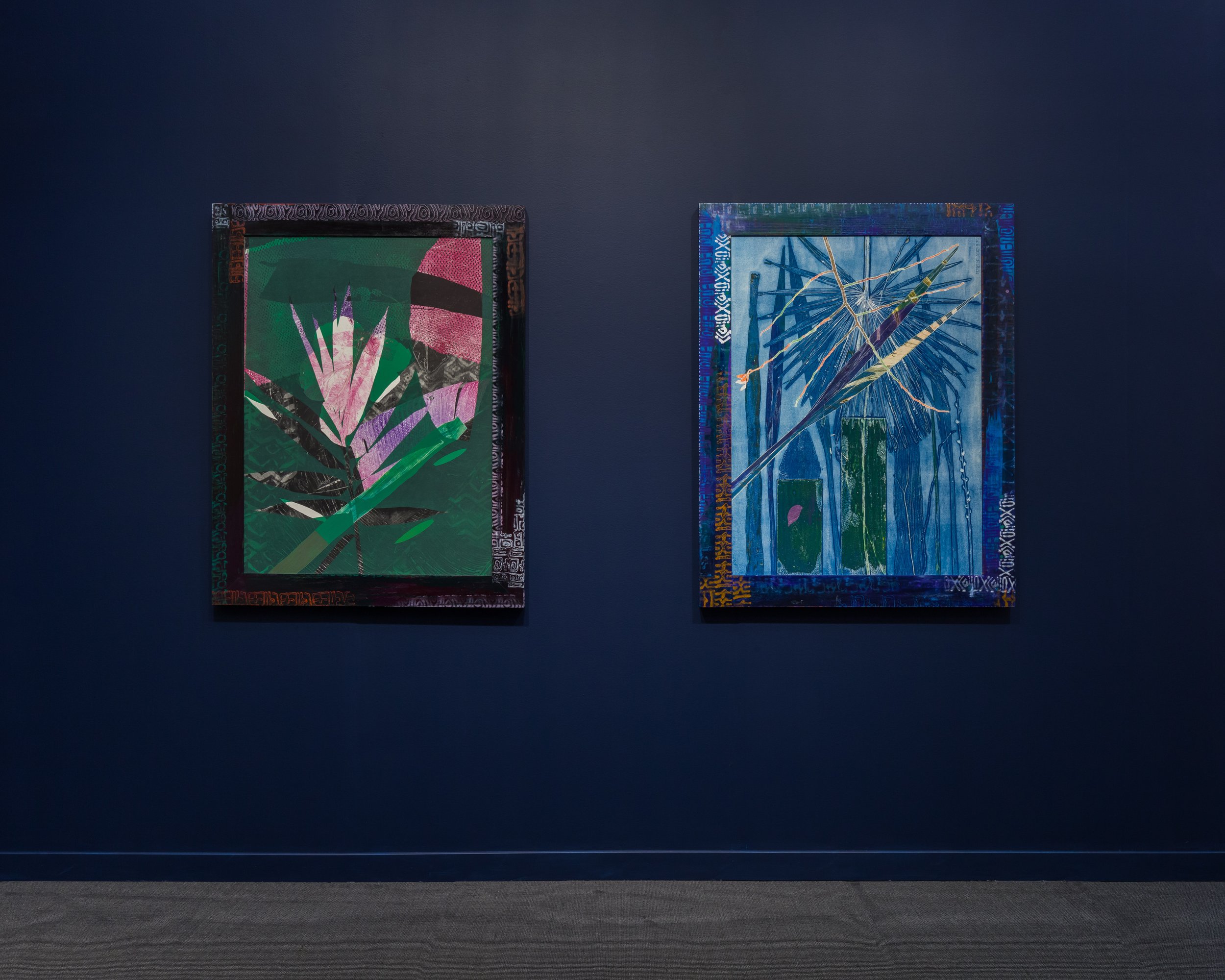
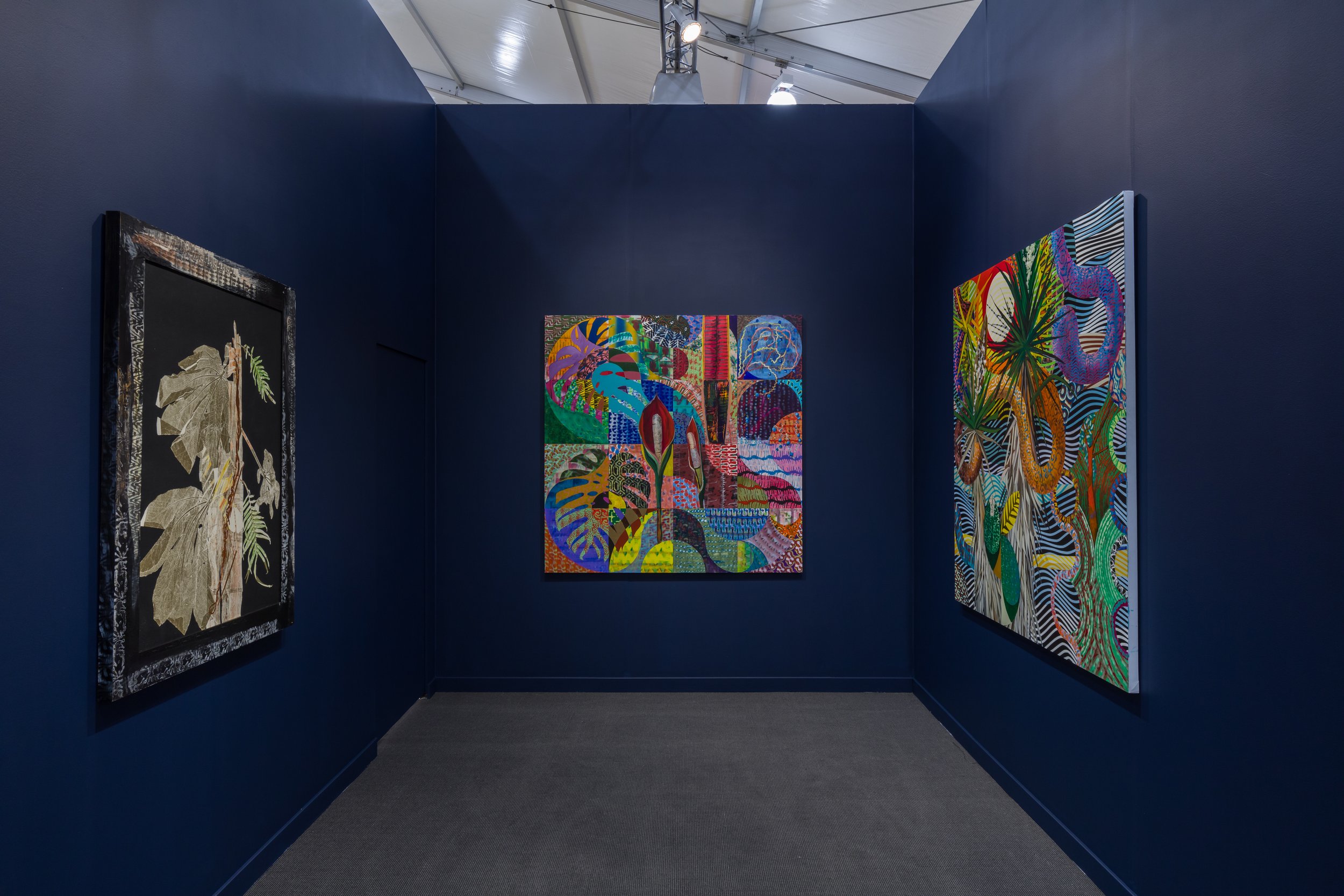
Installation views: Luiz Zerbini at Frieze LA (2024). Courtesy Stephen Friedman Gallery, London and New York. Photo by Mark Blower.
Zerbini’s monotypes echo the collaged appearance of his paintings, combining abstract mark making with figurative elements drawn from his everyday surroundings. “For me, I would pass the whole world through the press,” the artist declares. In these new monotypes, Zerbini hand-paints the frames, marking a significant development in the artist’s monotype series.
Luiz Zerbini, 'Serpentário', 2023. Acrylic on canvas, 160 x 160cm (63 x 63in). Copyright Luiz Zerbini. Courtesy the artist and Stephen Friedman Gallery, London and New York. Photo by Pat Kilgore.
Luiz Zerbini
Luiz Zerbini was born in São Paulo in 1959 and lives and works in Rio de Janeiro, Brazil. In 2023, Zerbini had a solo focus in the group exhibition ‘We Are Forest’ at the Triennale di Milano, Milan, Italy; touring from Fondation Cartier Pour l’Art Contemporain, Paris, France (2020). A major exhibition by the artist opened at Museu de Arte de São Paulo, Brazil, in March 2022. Zerbini’s second solo show at Stephen Friedman Gallery took place in January 2021, following his exhibition in 2020 at Oi Futuro, Rio de Janeiro, Brazil. ‘Luiz Zerbini: Intuitive Ratio’, his first solo exhibition at a UK public institution, opened in 2018 at South London Gallery, London, UK.
Zerbini has been the subject of major mid-career surveys at Casa Daros, Rio de Janeiro (2014); Instituto Inhotim, Brumadinho, Minas Gerais, Brazil (2013); and Museu de Arte Moderna do Rio de Janeiro (2012). He has represented Brazil at notable biennales, including the São Paulo Biennial (2010 and 1987); Bienal do Mercosul, Brazil (2001); Bienal de La Habana, Cuba (2000); and the Bienal Internacional de Cuenca (1996).
Stephen Friedman Gallery
Stephen Friedman Gallery is a contemporary art gallery that was founded in 1995 with a focus on representing exceptional artists from around the world. Since its inauguration, the gallery has been based in Mayfair, London. In October 2023, the gallery expanded and relocated to Cork Street. In November 2023, the gallery opened its first location outside the UK at 54 Franklin Street in Tribeca, New York.
For more information about Stephen Friedman Gallery please visit their website here. The gallery can also be found on Facebook, Instagram, and Artsy.
The Roof Garden Commission and The Facade Commission at the MET Announcement
Jennie C. Jones (left) and Jeffrey Gibson (right)
On February 27, 2024 The Metropolitan Museum of Art announced the artists for its 2025 commissions. Jennie C. Jones (born 1968, Cincinnati, Ohio) will produce her first multi-work outdoor sculptural installation for the Museum’s Iris and B. Gerald Cantor Roof Garden. For The Met Fifth Avenue facade, Jeffrey Gibson (born 1972, Colorado Springs, Colorado), a member of the Mississippi Band of Choctaw Indians and of Cherokee descent, will create four figurative sculptures—works that he refers to as ancestral spirit figures.
The Roof Garden Commission: Jennie C. Jones will be on view from April 15 through October 19, 2025. The Facade Commission: Jeffrey Gibson will be on view from September 2025 through May 2026.
The Met previously announced its 2024 commissions: The Roof Garden Commission: Petrit Halilaj will be on view from April 29 through October 27, 2024; The Facade Commission: Lee Bul, from September 12, 2024, through May 27, 2025; and The Great Hall Commission: Tong Yang-Tze, from November 21, 2024, through April 8, 2025.
“As we anticipate the start of The Met’s 2024 commission series, we are thrilled to expand on the already robust program with the announcement of our exciting 2025 commission projects by the esteemed artists Jennie C. Jones and Jeffrey Gibson,” said Max Hollein, The Met’s Marina Kellen French Director and Chief Executive Officer. "Though stylistically different, both Jones and Gibson see the potential for beauty and form to carry the potency of individual and cultural histories. We're honored to have them join this important commission series and look forward to unveiling their works in 2025.
Through her sculptural installation for the 2025 Roof Garden Commission, Jones will explore the sonic potential of stringed instruments as well as their formal possibilities. In Jones’s unique response to modernism, these acoustic sculptures propose the line of the string as a proxy for art history, unbroken and continuous.
Gibson’s project for The Met’s Fifth Avenue facade will be the sixth in a series of commissions for the historic exterior. The artist’s new works for the niches will draw upon his longstanding and highly developed iconography, one built upon a dynamic visual language that fuses Indigenous identity and imagery with abstraction, patterning, materiality, and text. These projects are the latest in The Met’s series of contemporary commissions in which the Museum invites artists to create new works of art, establishing a dialogue between the artist's practice, The Met collection, the physical Museum, and The Met's audiences.
About the Artists
Jennie C. Jones, Other Octaves, 2024 Acrylic, acoustic panel, and architectural felt on canvas 48 x 48 x 2 1/2 in (121.9 x 121.9 x 6.3 cm) Courtesy the artist and Alexander Gray Associates, New York
Jennie C. Jones
In her paintings, sculptures, works on paper, installations, and audio compositions, Jones uses sound to respond to the legacy of minimalism and to modernism itself. Drawing on her immersion in Black improvisation and avant-garde music, she deploys sound and listening as important conceptual elements of her practice, from the acoustic fiberglass panels she affixes to canvas, which absorb sound and affect the acoustic properties of the environment, to the lines and bars she creates through her compositions that refer to elements of musical notation. Her work across media offers new possibilities for minimalist abstraction, challenging how—and by whom—it is produced.
Jennie C. Jones: New Compositions, Installation view Alexander Gray Associates, New York (2021) Courtesy the artist and Alexander Gray Associates, New York
Her solo exhibitions include Jennie C. Jones: Compilation, at the Contemporary Art Museum Houston (2015–16); Jennie C. Jones: RPM, at the Glass House (2018); Jennie C. Jones: Constant Structure, at the Arts Club Chicago (2020); and, most recently, Jennie C. Jones: Dynamics, at the Solomon R. Guggenheim Museum. Jones’s work is held by numerous public and private collections across the United States, including the Art Institute of Chicago; Cleveland Museum of Art; Hirshhorn Museum and Sculpture Garden; Los Angeles County Museum of Art; The Museum of Modern Art; Philadelphia Museum of Art; Solomon R. Guggenheim Museum; the Walker Art Center; and the Whitney Museum of American Art, among many others. She lives and works in Hudson, New York.
Installation view: ‘Jeffrey Gibson: DREAMING OF HOW IT’S MEANT TO BE’, Stephen Friedman Gallery, London (2024). Courtesy Stephen Friedman Gallery, London and New York. Photo by Lucy Dawkins.
Jeffrey Gibson
An interdisciplinary artist who grew up in the United States, Germany, and Korea, Gibson’s expansive body of work ranges from hard-edged abstract works to a rich practice of performance and filmmaking to significant work as artist convener and curator. Since the 2000s, Gibson’s work—which incorporates Indigenous identity and imagery—has consistently reimagined new possibilities for abstraction, the use of text, and queer culture, interconnecting these formal and conceptual interests. Notably, Gibson’s work has introduced a broad range of recurring Indigenous sources, material elements, and imagery while regularly offering a critique of the reductive ways in which Indigenous culture has been historically flattened and misappropriated.
Jeffrey Gibson Can’t Take My Eyes Off of You, 2015 Mixed media Dimensions variable Courtesy the artist and Stephen Friedman Gallery, London and New York
Recent solo exhibitions include This Burning World: Jeffrey Gibson (ICA San Francisco, 2022); Jeffrey Gibson: The Body Electric (SITE Santa Fe, 2022); Jeffrey Gibson: They Come From Fire (Portland Art Museum, 2022); Jeffrey Gibson: INFINITE INDIGENOUS QUEER LOVE (deCordova Sculpture Park and Museum, 2022); and Jeffrey Gibson: Like a Hammer (Denver Art Museum, 2018). Most recently, Gibson was selected to represent the United States at La Biennale di Venezia, the 60th International Art Exhibition, in 2024. Gibson also conceived of and co-edited the landmark volume An Indigenous Present (2023), which showcases diverse approaches to Indigenous concepts, forms, and media. His work is included in the permanent collections of the Denver Art Museum; Museum of Fine Arts, Boston; The Museum of Modern Art, New York; National Gallery of Canada; Portland Art Museum; Smithsonian National Museum of the American Indian; and the Whitney Museum of American Art, among others. Gibson has received many distinguished awards, including the John D. and Catherine T. MacArthur Foundation Fellowship Award (2019), and is currently an artist in residence at Bard College, in Annandale, New York. He lives and works in Hudson, New York.
Credits
The Roof Garden Commission: Jennie C. Jones is conceived by the artist in consultation with Lauren Rosati, Associate Curator in the Department of Modern and Contemporary Art and Research Projects Manager in the Leonard A. Lauder Research Center for Modern Art at The Met.
The Facade Commission: Jeffrey Gibson is conceived by the artist in consultation with Jane Panetta, the Aaron I. Fleischman Curator in the Department of Modern and Contemporary Art at The Met. The commission is made possible in part by Oscar L. Tang and H.M. Agnes Hsu-Tang, Sarah Arison, and Helen Lee-Warren and David Warren.
For more information about this announcement and the Met Gala, please visit the Met’s website and also visit their Instagram, YouTube, Facebook pages.
AMIR FATTAL | POST-ARTIFICIAL PAINTINGS
Amir Fattal: Post Artificial Paintings Installation View: KÖNIG TELEGRAPHENAMT, Berlin, 2024. Photo: Courtesy of the artist & KÖNIG GALERIE
KÖNIG TELEGRAPHENAMT is pleased to present POST-ARTIFICIAL PAINTINGS, a solo exhibition by Amir Fattal, born in Tel Aviv in 1978 and based in Berlin since 2002. On display at Telegraphenamt are new oil paintings from the series STUDIO VISITS, which interpret classical art world scenes for the 21st century. Fattal begins each of his works with a series of keywords and prompts that coax a fictional portrait out of the depths of the "collective unconscious" of artificial intelligence. The subjects are various protagonists of an idealized "art world" – from artists with models in their studios to collectors in their homes to art dealers in their offices. They all pose with one of their most prized possessions: an "artwork within an artwork". This second artwork is also the product of AI, generated according to the specific aesthetics and values of each protagonist depicted.
The figures in Fattal’s paintings embody the ideals of the present, placeholders for wealth, style, elegance, sophistication, and artistic sensibility. Displaying an impeccable taste for designer garments and existing among their carefully arranged furniture and displaying expressions of unfettered self-confidence, Fattal’s protagonists are almost too perfect to be true. They are both a product and a commentary on our society, a mirror reflecting the various ways our collective data is harnessed to dream up new realities.
Roy, 2023, Oil on canvas, 90 x 80 cm, Courtesy of the artist & KÖNIG GALERIE
In Fattal’s paintings, the typical Californian, mid-century bungalows with their glass fronts and turquoise pools and leather couches, can be found, evoking parallels to a number of predecessors in this genre: David Hockney’s LA domiciles, the everyday nature of Eric Fischl’s sitters, and the staging of the individual in Cindy Sherman’s self-portraits. Fattal’s works introduce the AI prompt as a compelling new technique for art production, building an inherent curiosity as to the linguistic locutions that were given to generate the resulting images. The figures are at once both ambitious and aspirational, with the subtly coded "je ne sais quois" of a 21st century aristocracy – understated and discreet, confident, and breathtakingly determined in their aesthetic choices and appearance.
In this series, Fattal has blurred the lines between reality and imagination, creating characters that are composites of cultural ideals. They are the embodiment of an art world that doesn’t exist just within the confines of galleries and studios but extends into the spaces we inhabit and the lives we aspire to lead. This series does not merely capture the zeitgeist; it is a zeitgeist in itself, a realm where the lines between the real and the artificially conceived are not just blurred but interwoven.
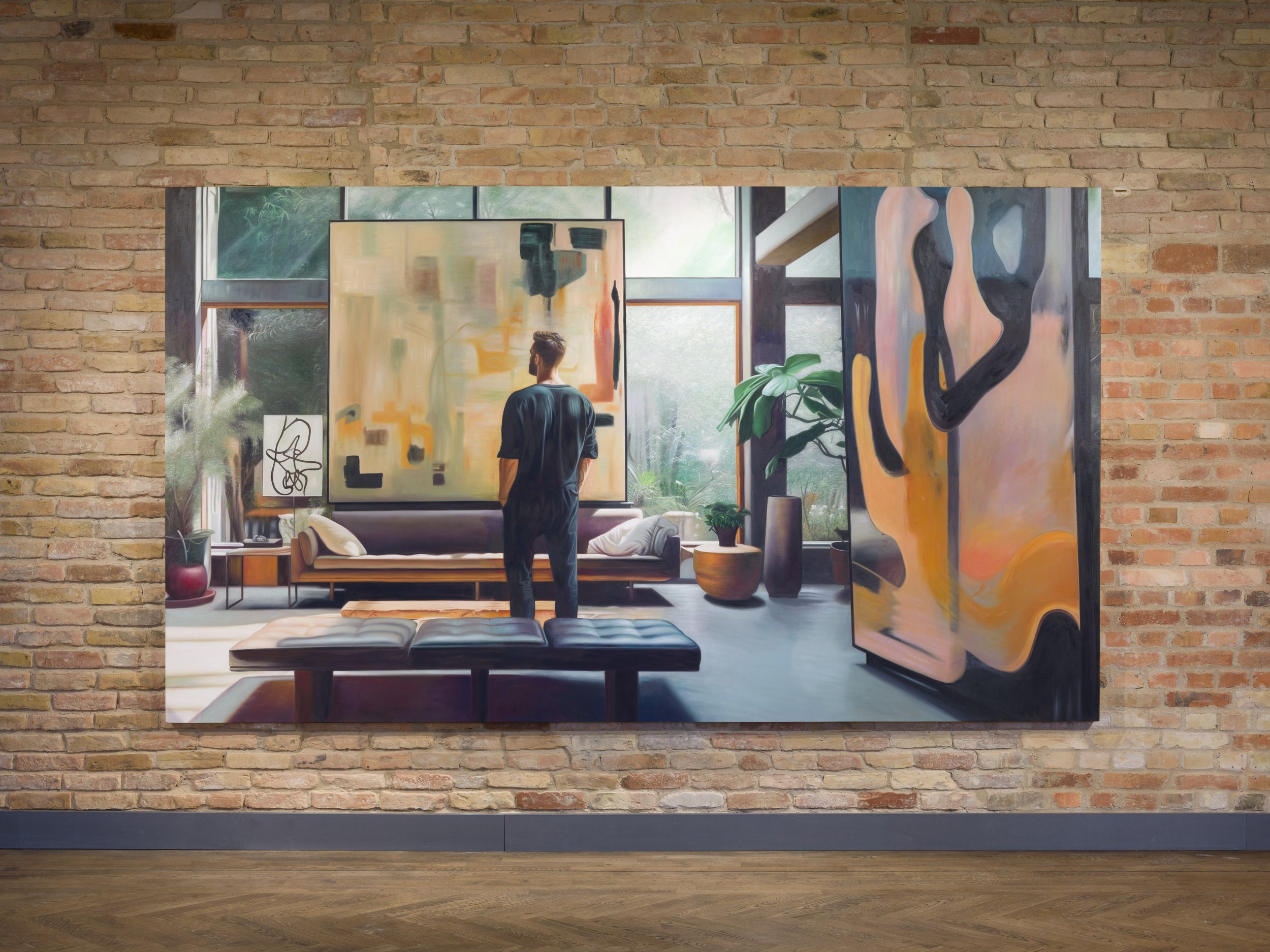
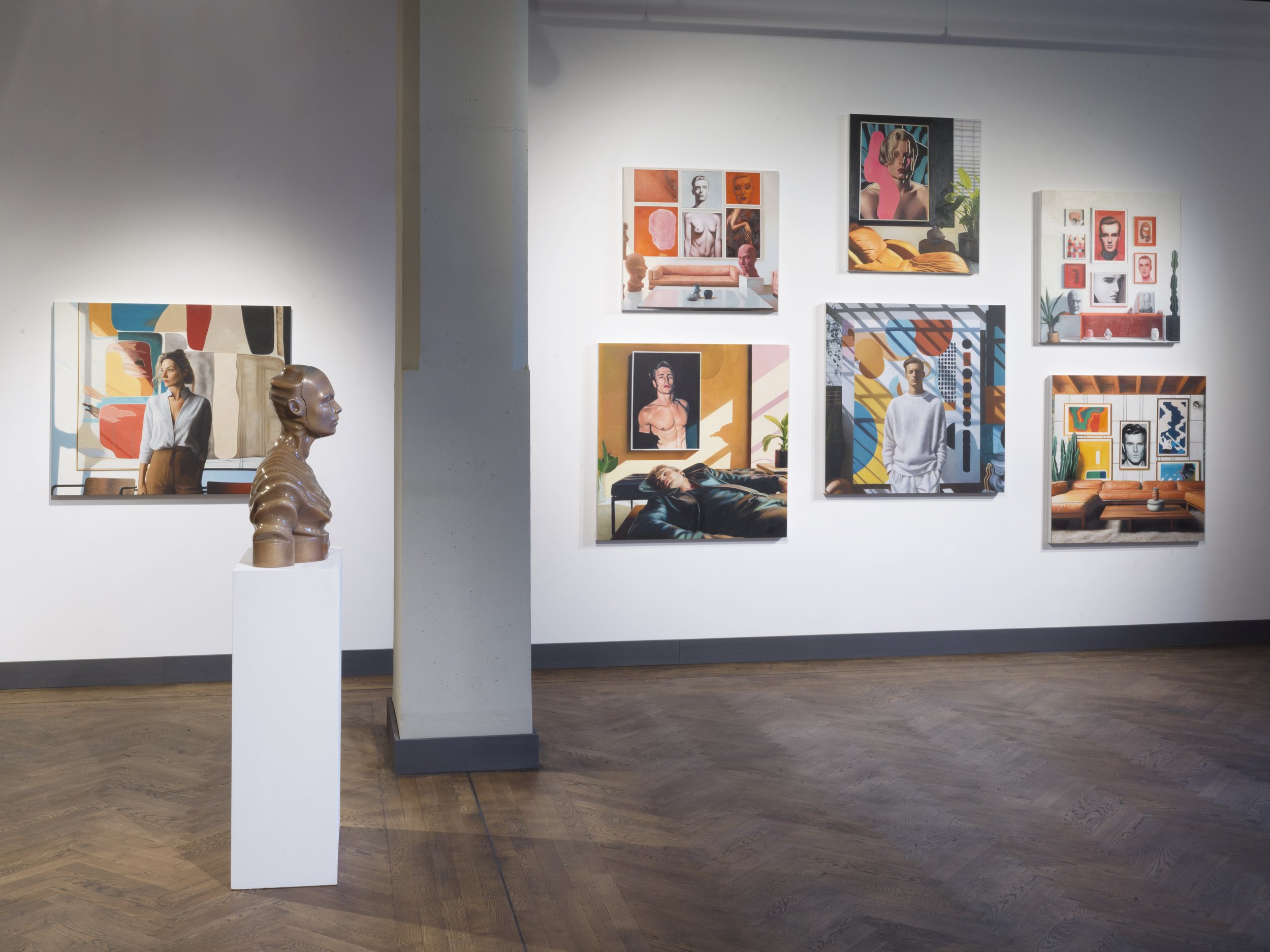
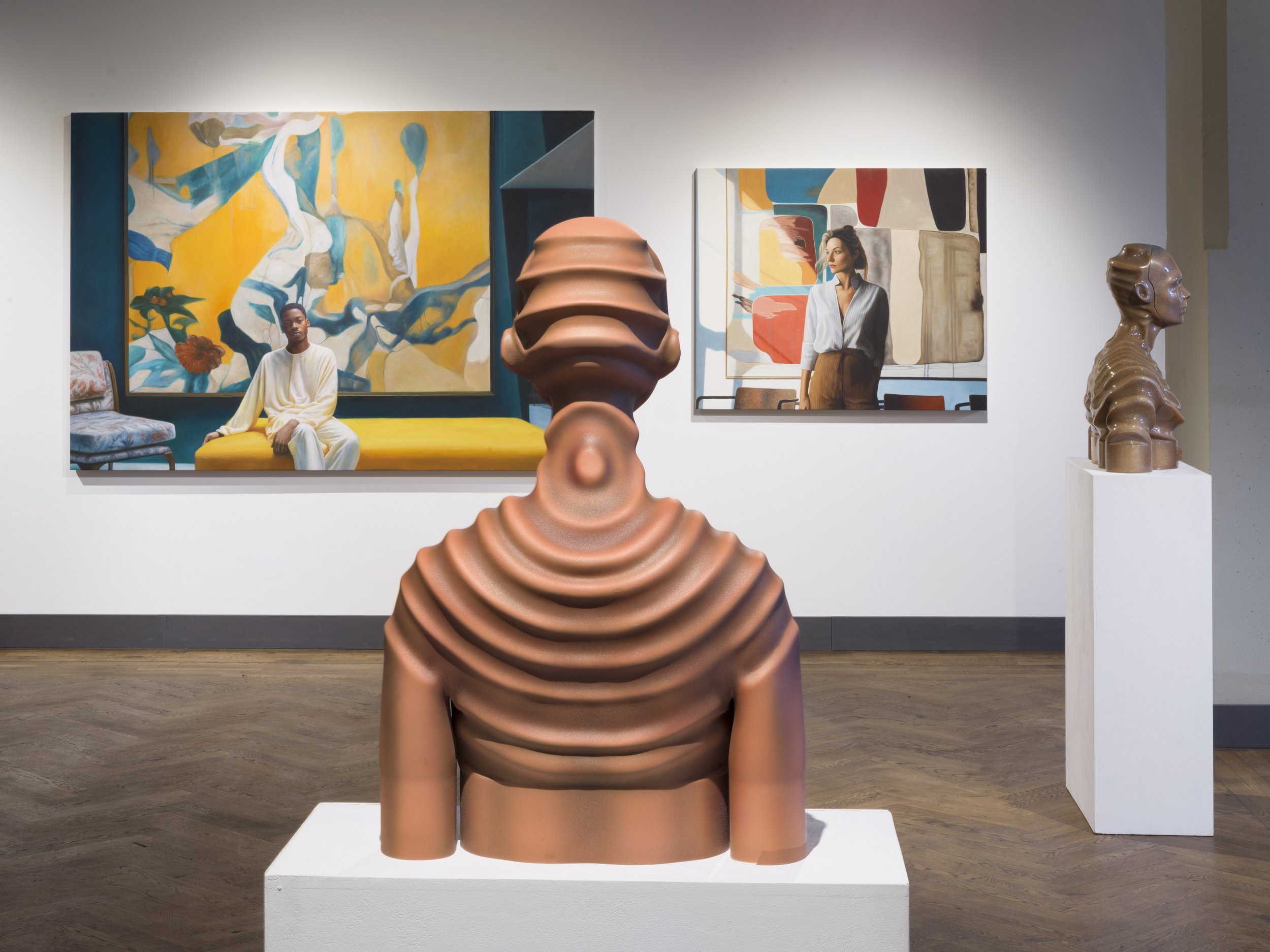
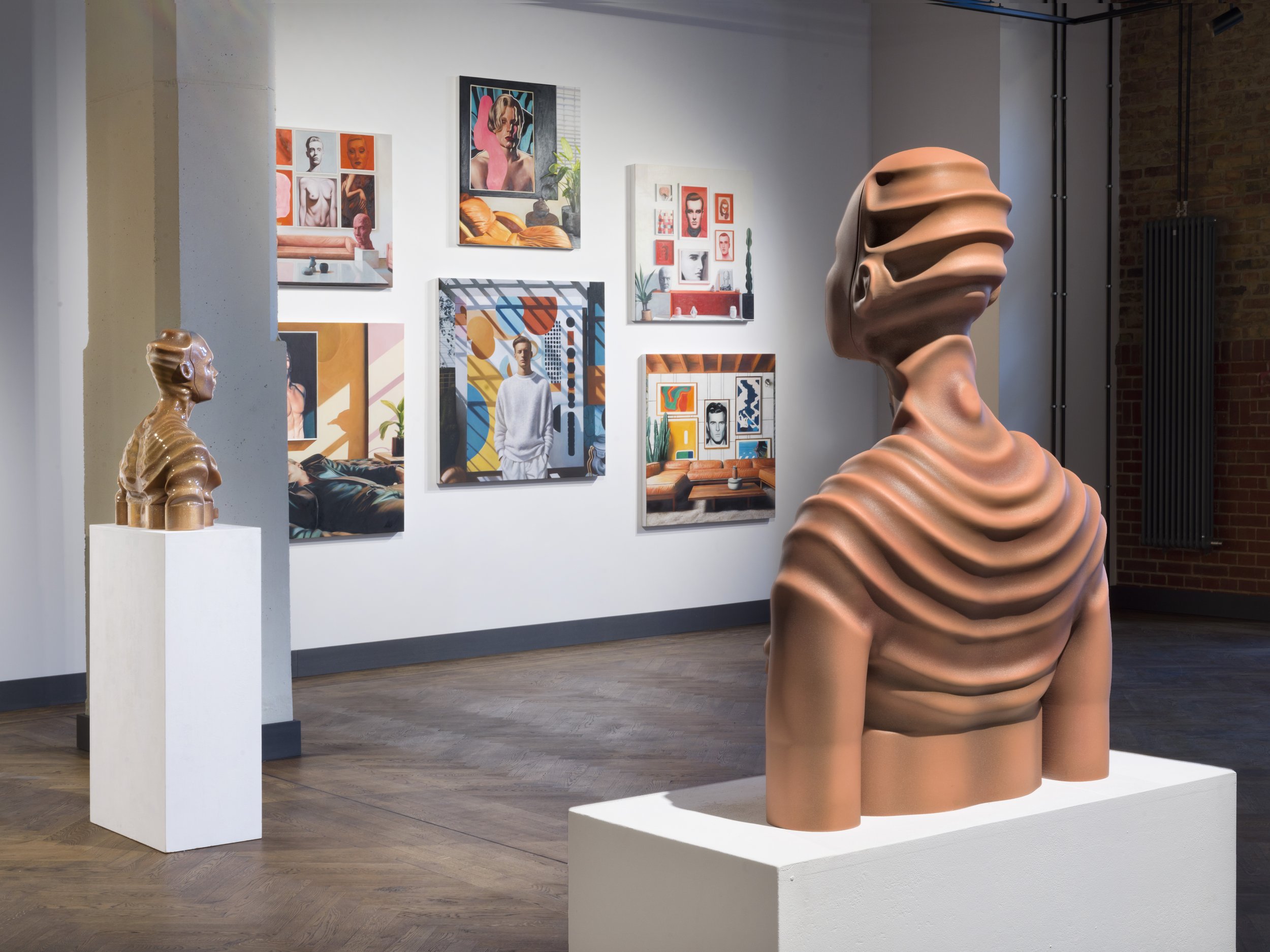
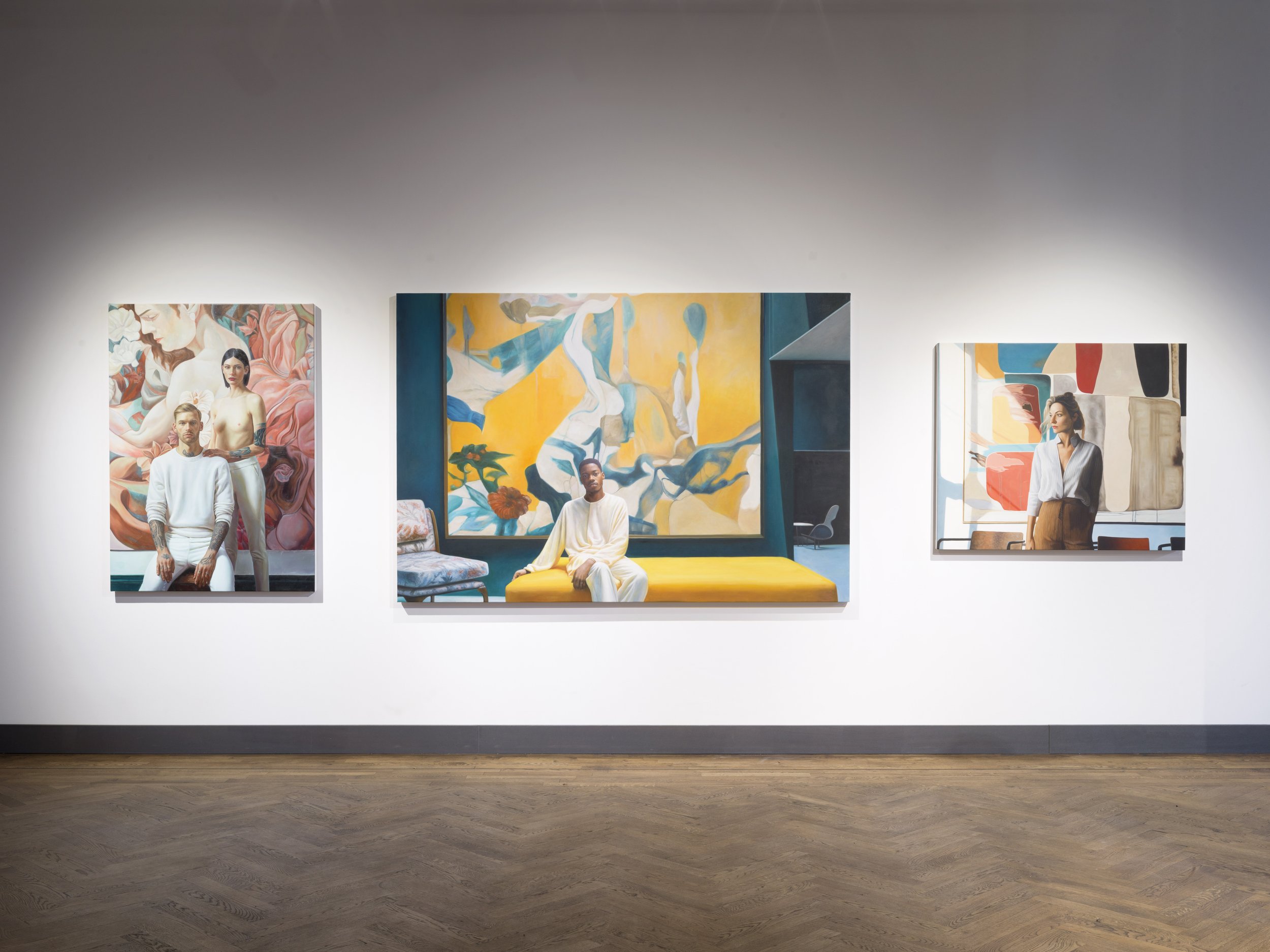

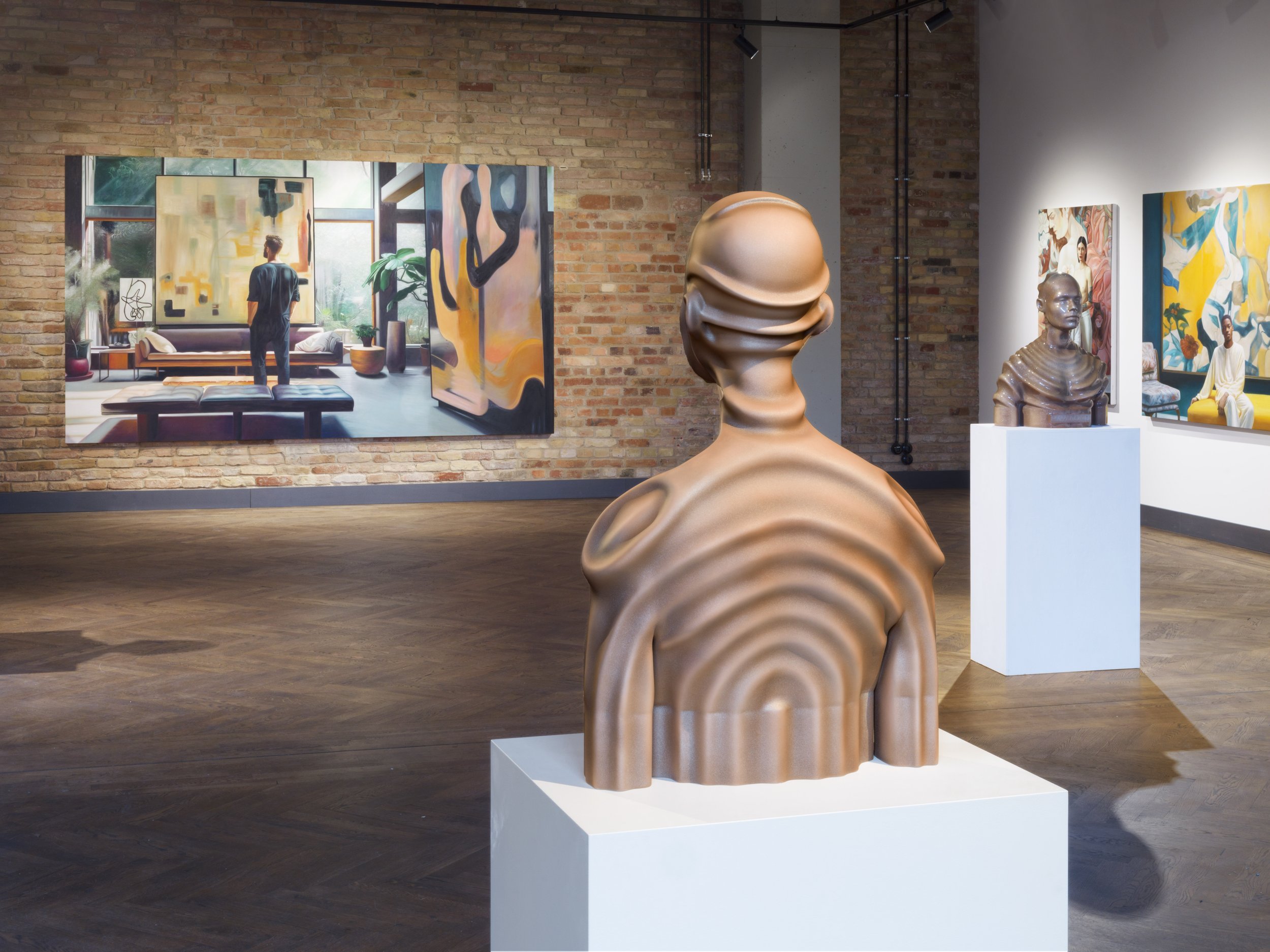
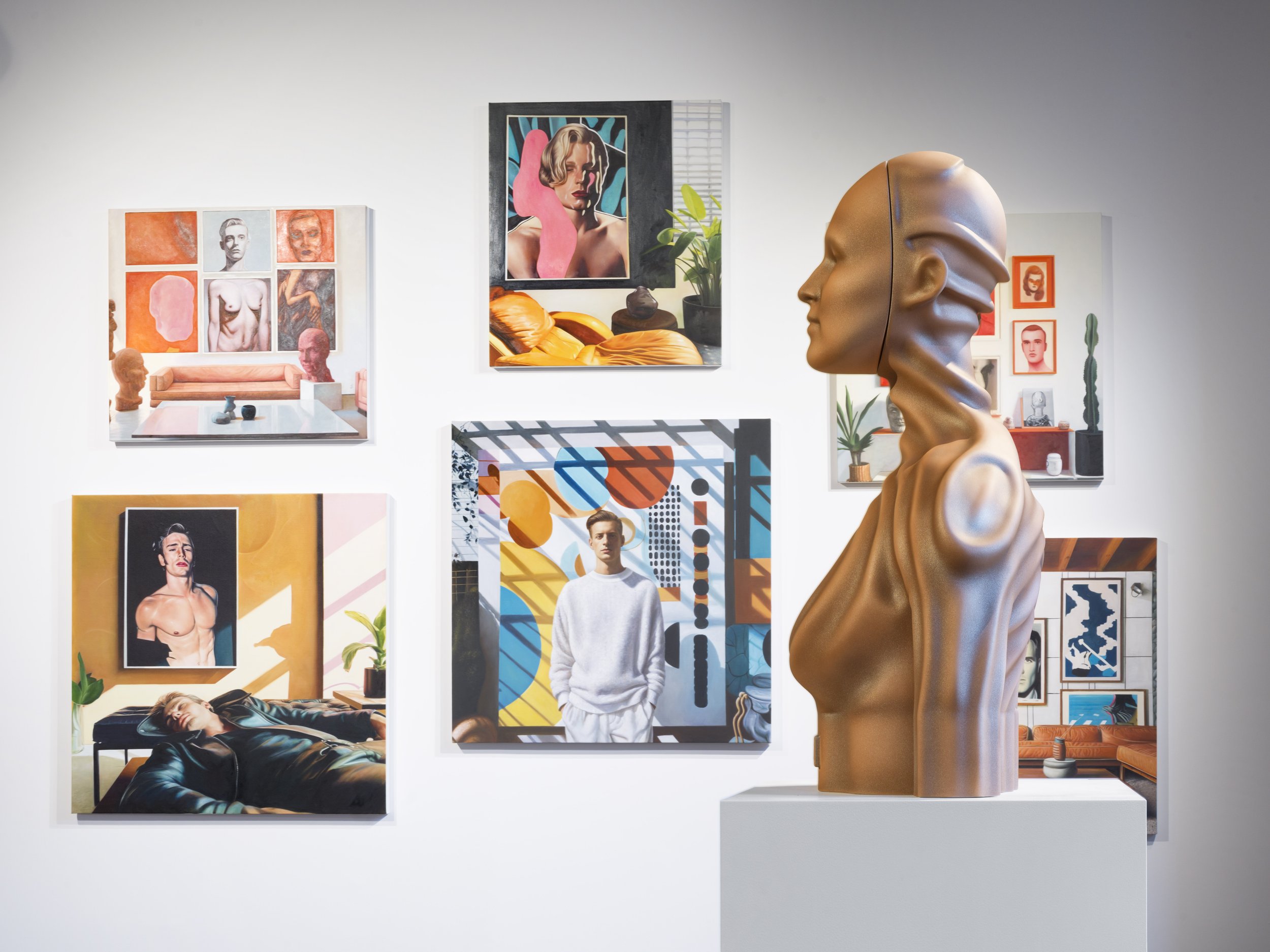
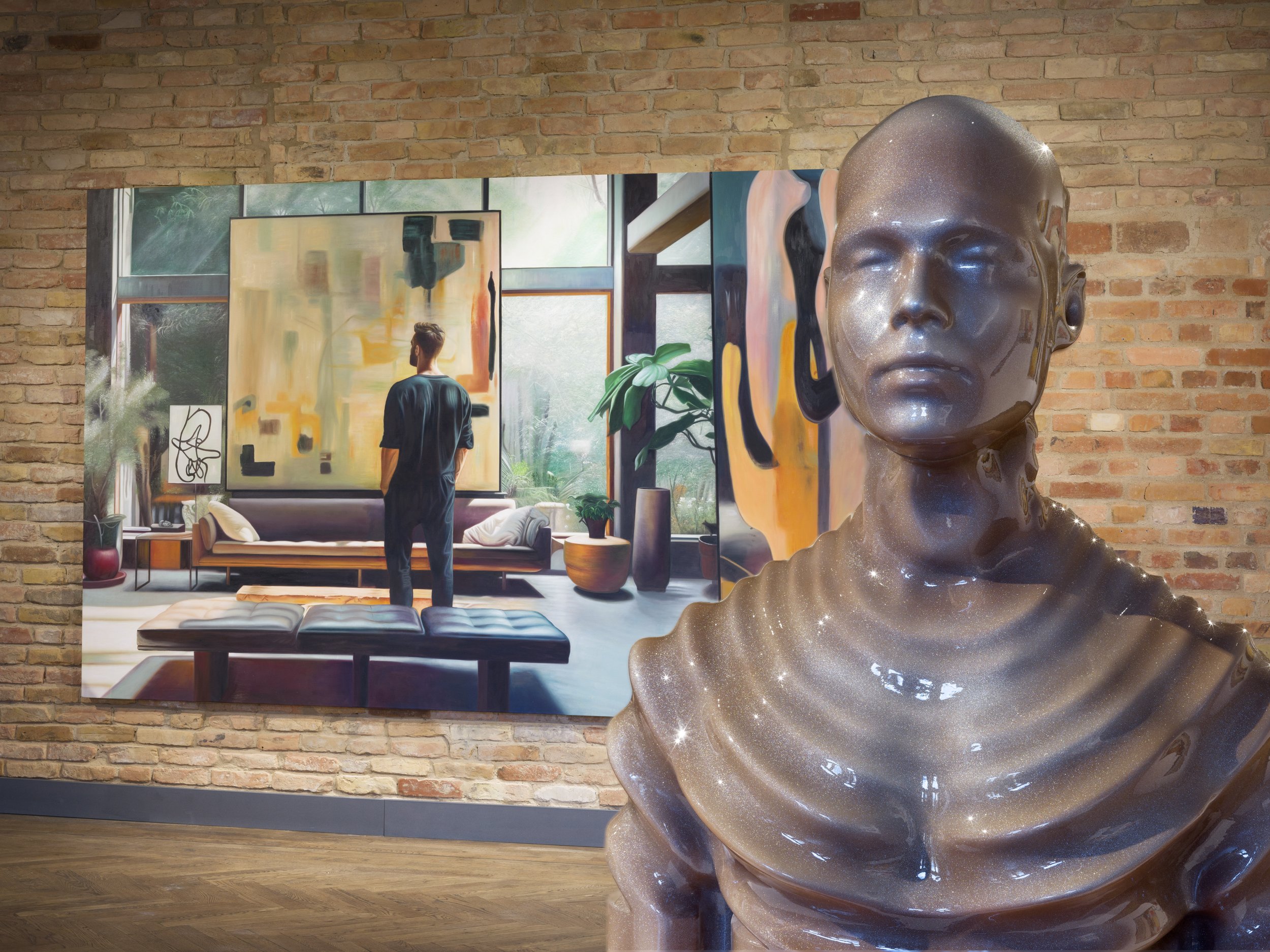

Amir Fattal: Post Artificial Paintings Installation View: KÖNIG TELEGRAPHENAMT, Berlin, 2024. Photo: Courtesy of the artist & KÖNIG GALERIE
In order to focus on the collaboration between artist and AI and create an emotional distance to the finished works, Fattal leaves the actual realization of the oil on canvas AI-generated images to a painting workshop in China. In so doing, Fattal draws attention to the tradition of painting as a medium of copying, employed as such for thousands of years, until the invention of photography. Copying also provides the opportunity to reflect more closely on the social conditions surrounding images, such as the globalization of their modes of production, the artistic value of AI technology, and the role of capitalism more generally.
Amir Fattal: Post Artificial Paintings Installation View: KÖNIG TELEGRAPHENAMT, Berlin, 2024. Photo: Courtesy of the artist & KÖNIG GALERIE
In his project LOVE CHILD, from which three sculptures are included in the exhibition, Fattal combines a new DNA visualization technology with 3D scanning and printing. With this technology, originally developed for forensic science, a person’s facial features can be reconstructed based on data extracted from raw DNA. Fattal goes one step further, though, by combining the DNA of six of his closest friends to create composite facial realizations of how their potential offspring might look. The DNA visualized using the 3D printer is ultimately a combination of the two test subjects in bust form, with their surfaces finished by hand, giving the generated figures a futuristic, yet somehow individualized, look.
Antonio, 2023, Oil on canvas, 150 x 220 cm, Courtesy of the artist & KÖNIG GALERIE
Rich Mnisi: Dzuvula (Shedding Skin)
Installation view of Rich Mnisi’s Dzuvula (Shedding Skin), 2024. Southern Guild Cape Town. Image courtesy of Hayden Phipps/Southern Guild.
Southern Guild Cape Town presents Dzuvula (Shedding Skin), a solo exhibition of collectible design by Rich Mnisi, from 8 February to May 23, 2024. Comprising sculptural bronze furniture and lighting, as well as a hand-woven limited-edition rug, Dzuvula is an expansion on the cosmology of duality that emerged with the designer’s debut collection, Nyoka (2021). The body of work complicates the interplay of the mundane and the magical, the matriarchal and magisterial – themes that have emanated from the artist’s embrace of fluidity as a guiding philosophy and aesthetic approach.
The snake – with its embodiment of fear and beauty – makes a reappearance in Dzuvula, the undulating arcs of its movement distorting and disrupting borders and edges. A hiss resounds through this collection, a sensuous whisper hinting at something deviant, rubbing against boundaries, smoothing hard gradients, holding within its resonant sound conflicting truths and contrasts.
A polished bronze table, titled Mbhoni (Witness), bulges and swells outwards, held up on a serpentine limb that at once embraces and impales it. A pair of sculptural seats, Ripfumelo I and Ripfumelo II, combining bronze armatures and sheepskin seats, introduce a soft lushness to the collection, embodying fear/comfort dualities.
In Vutlhari II (Wisdom), a bronze chandelier, the serpent contorts over and into itself in a manner best described as swirling, consuming wisdom handed down by our forebears. In this edition of the chandelier – a collaboration between Rich Mnisi and designer Charles Haupt that debuted in Nyoka – the shades have been printed with an intricate snakeskin pattern.
Installation view of Rich Mnisi’s Dzuvula (Shedding Skin), 2024. Southern Guild Cape Town. Image courtesy of Hayden Phipps/Southern Guild.
Dzuvula also references Bumba, the Bushongo mythological god who created life by vomiting up elements of the natural world. Shiluva (Flower), a rug in Tibetan wool and silk, depicts the primordial soup of Bumba’s regurgitation of life. Nyoka II, a curved console which also first appeared in Mnisi’s 2021 solo, is punctuated by the winding form of a bronze snake, its storage cavity concealed by richly patterned beading inspired by Mnisi’s 2022 Mafamba Yexe fashion collection.
Collaborating closely with Southern Guild, Mnisi brought his visions to life by working with various artists and artisans including Haupt, Monkeybiz and PACO. This aligns with both Southern Guild and the designer’s commitment to promoting craft and South African handwork.
Collaboration is an incredibly intimate praxis, requiring connection and closeness before it can reach for comprehension. Intimacy as a theme runs throughout Mnisi’s works, in the way their forms hug the body and require the viewer to move around, their silhouettes changing with every view. Nwa-Mulamula’s Embrace (2021) is named after his great grandmother and models its form on the curved shape of the late matriarch. Reworked in concrete for this collection, it is a powerful evocation of the transfer of knowledge between generations, here transmuted into a gesture of peace, reflected in its title, Rhulani (Peace).
Installation view of Rich Mnisi’s Dzuvula (Shedding Skin), 2024. Southern Guild Cape Town. Image courtesy of Hayden Phipps/Southern Guild.
Where Nyoka attempted to hold the frictions and tensions of creation and life, Dzuvula expands on this world to draw parallels between the snake’s duplexity and our own conflicting nature. Nyoka spoke to creation through regurgitation and the drawing together of things; Dzuvula speaks to the things that quietly encroach in between. This new body of work is the spark created by that friction: the animation of life. Reflective surfaces refract and manipulate light, creating many forms from the teasing apart of one.
“We are at once faithful and faithless, bound and free,” Mnisi notes. “Sustaining existence within life's many tensions defines the human experience. Dzuvula turns the acceptance of this immutable truth into a sensory journey. Every piece reflects the result of growing into oneself – risk and vulnerability, strain and ease – through a vocabulary of forms, patinas, patterns and textures.”
Courtesy of Hayden Phipps/Southern Guild.
ARTIST BIO
Born in Johannesburg in 1991, Rich Mnisi’s broad design vision embraces fashion and functional sculpture. His work flows according to the themes and motifs he returns to and continually pushes forward: the women in his life, queerness and the VaTsonga tribe.
Mnisi graduated from Johannesburg’s LISOF School of Fashion in 2014, following which he was named Africa Fashion International Young Designer of the Year at Mercedes Benz Fashion Week Africa. He founded his eponymous label in 2015, creating genderless, seasonless collections infused with his own personal narrative and heritage.
His first solo exhibition of sculptural furniture, titled Nyoka (meaning snake in Xitsonga), was a bold exploration of shape and fluidity, brought to life through vivid contrasts of forms and materials, including bronze, wool, resin and glass. Mnisi’s work has been presented by Southern Guild at Design Miami and Investec Cape Town Art Fair.
Dzuvula (Shedding Skin) by Rich Mnisi runs concurrently with VIGIL by Justine Mahoney at Southern Guild Cape Town from 8 February – 18 May 23 2024. For more information about this exhibition and others, please visit the Southern Guild Website here; the gallery can also be found on Artsy, Instagram, and Facebook.



















